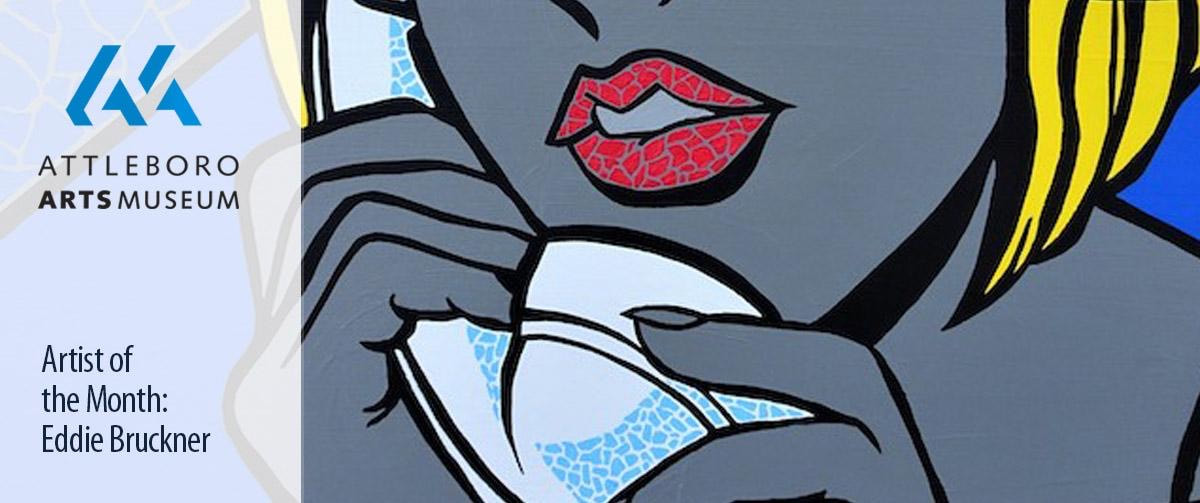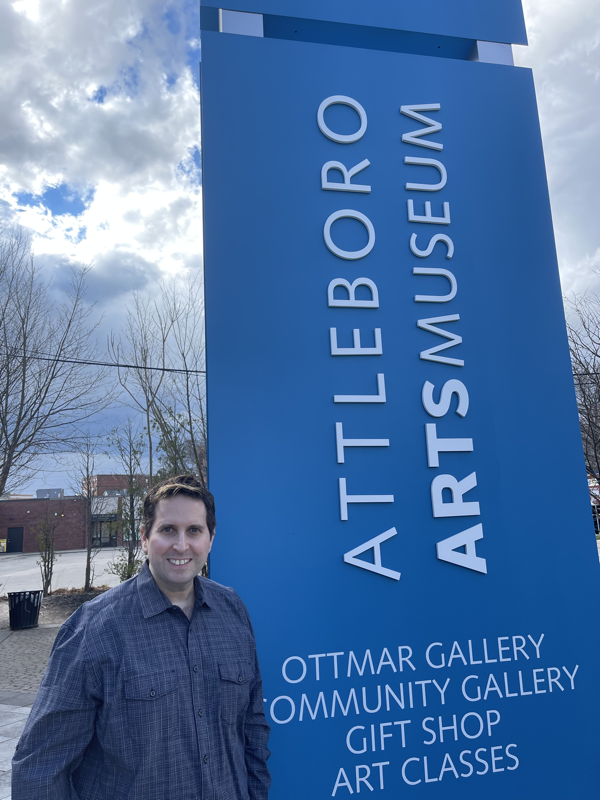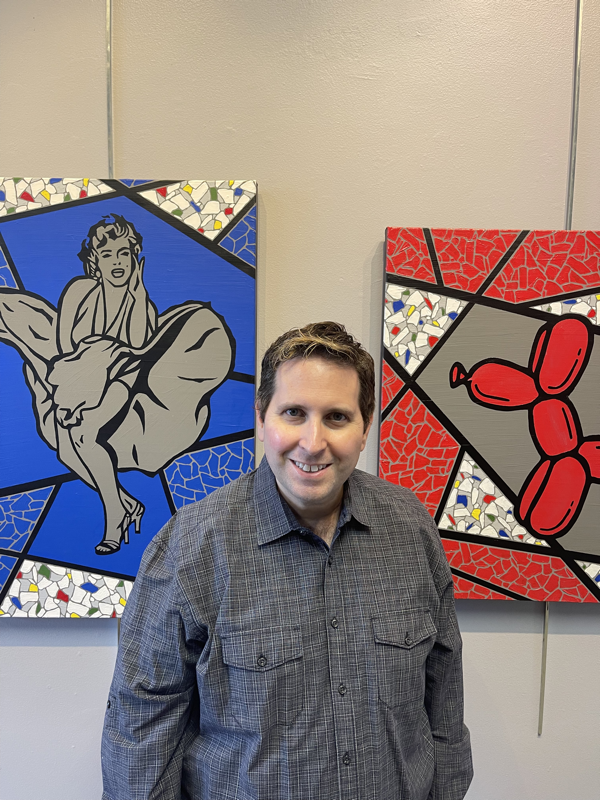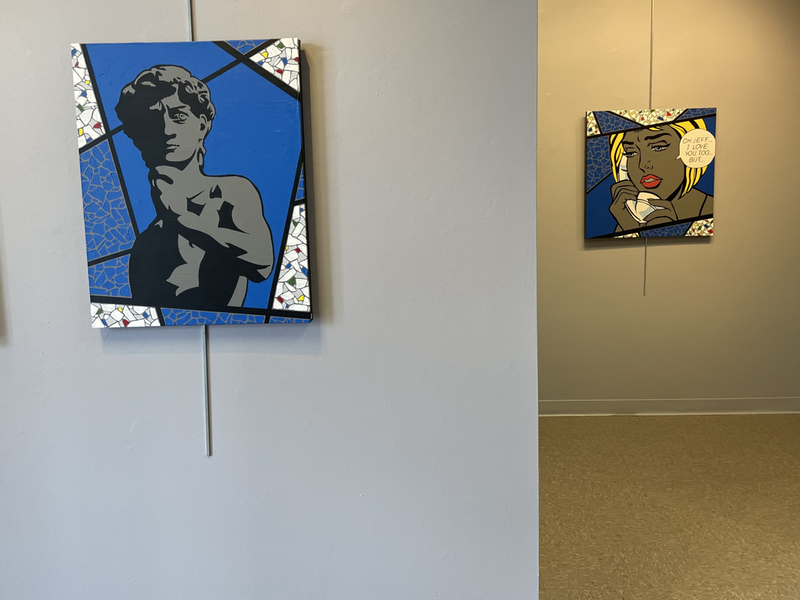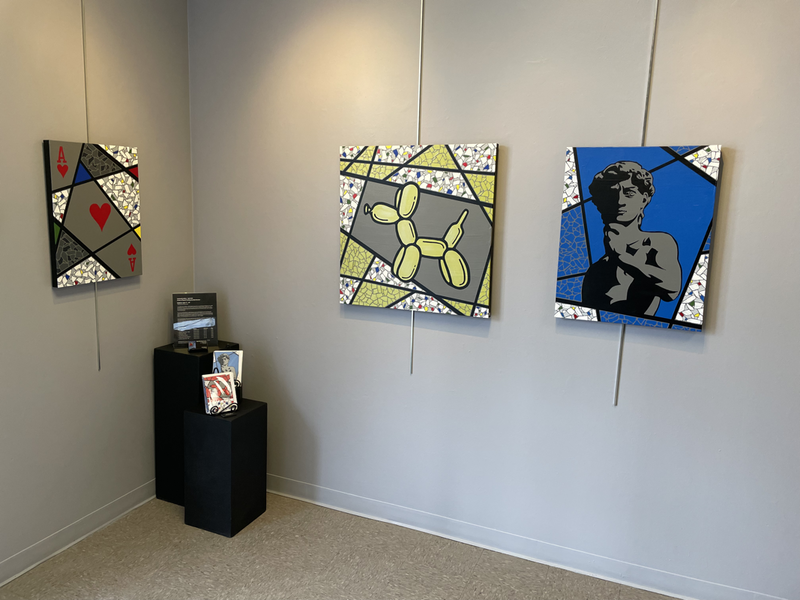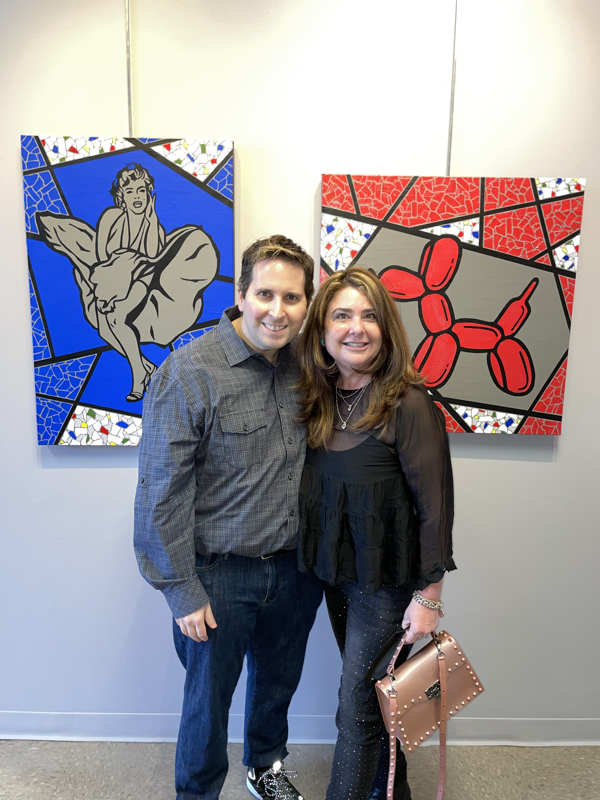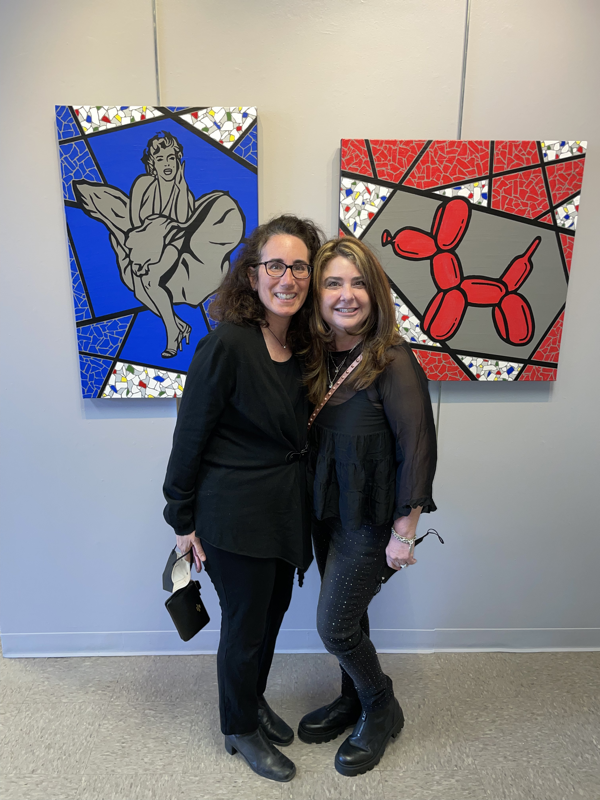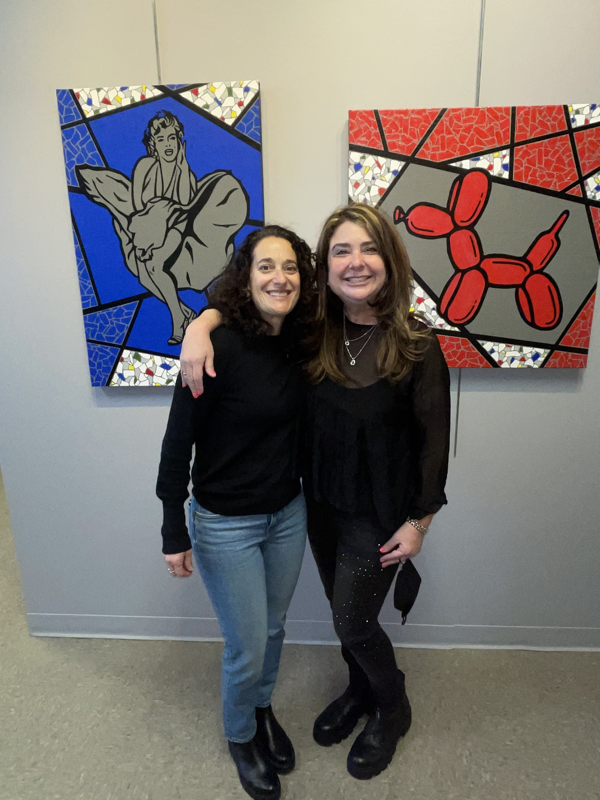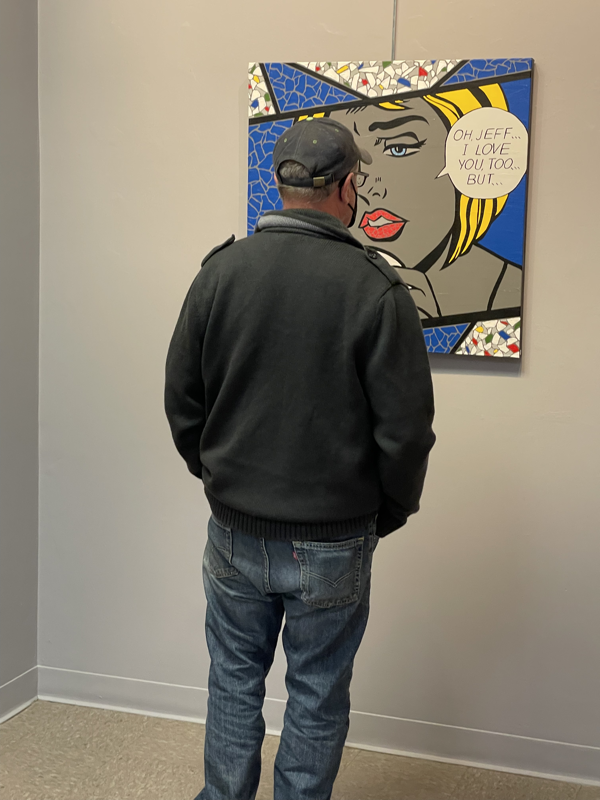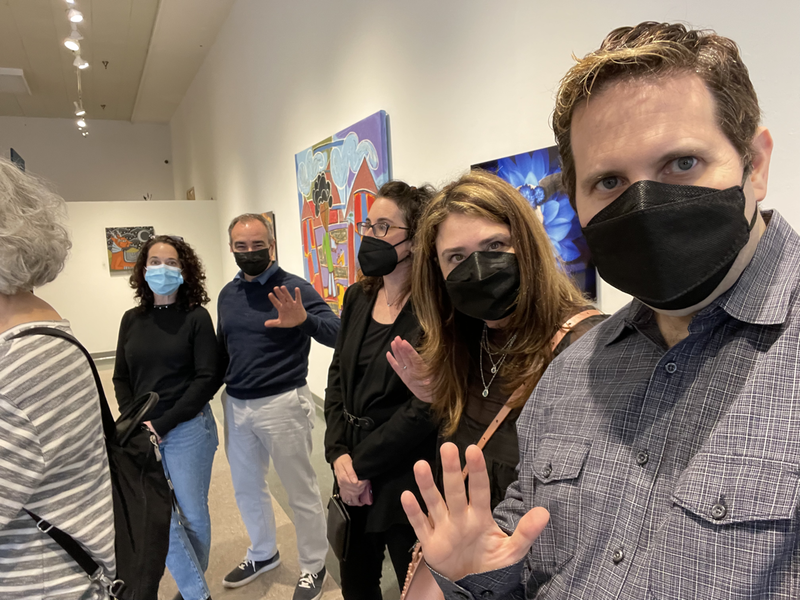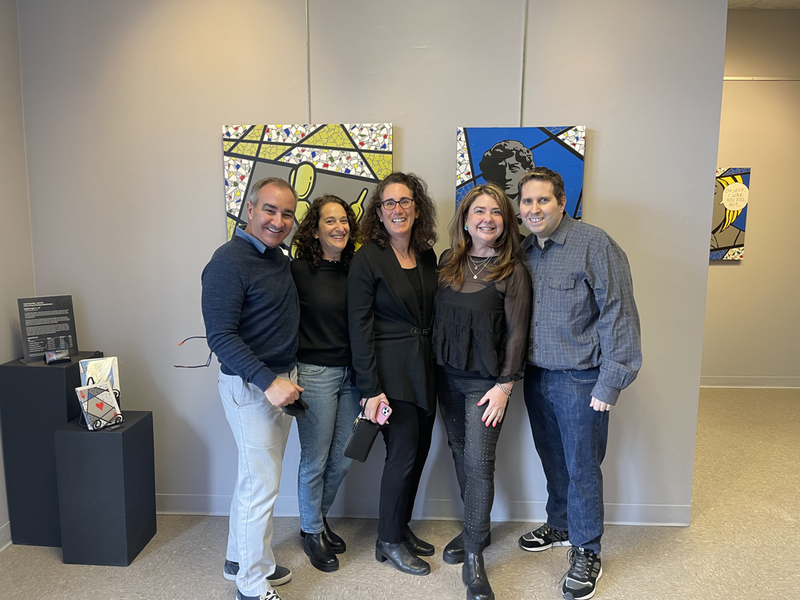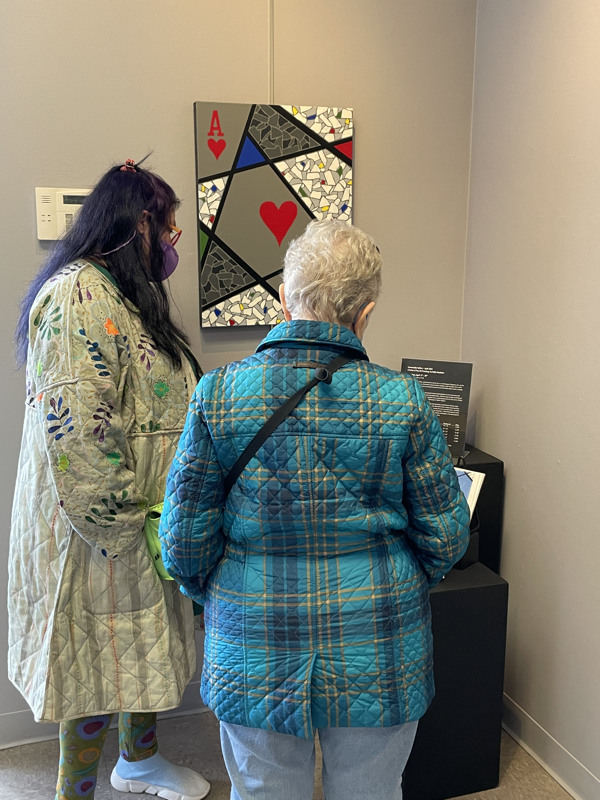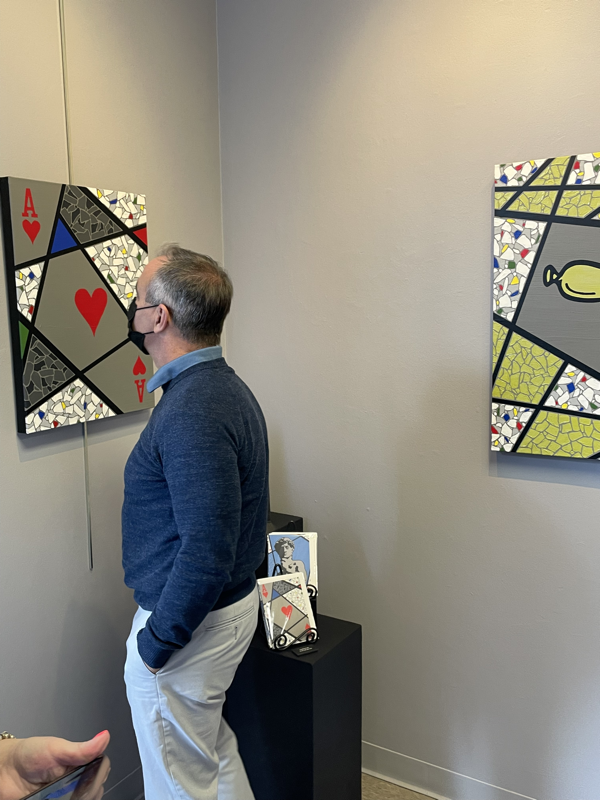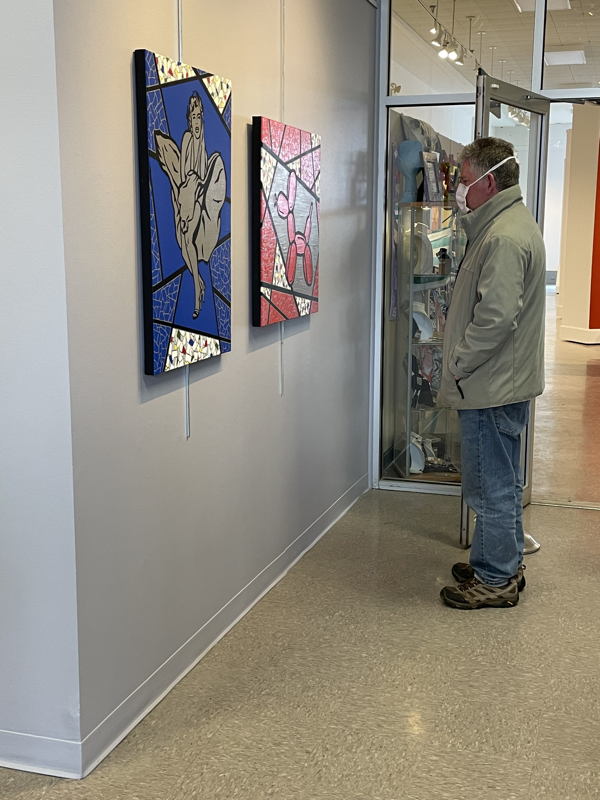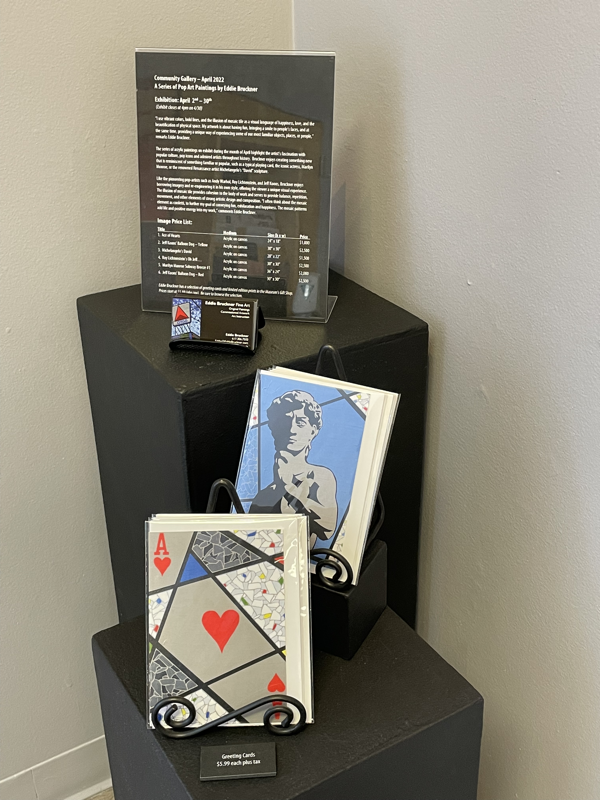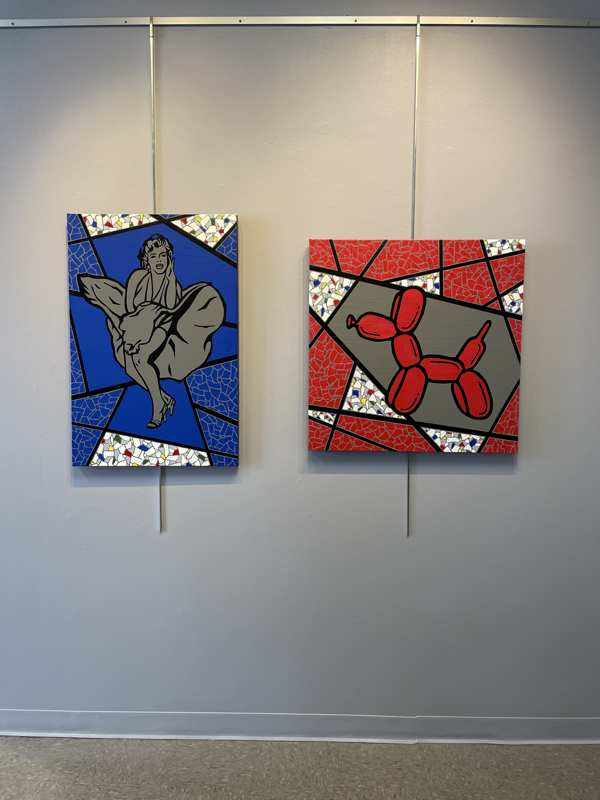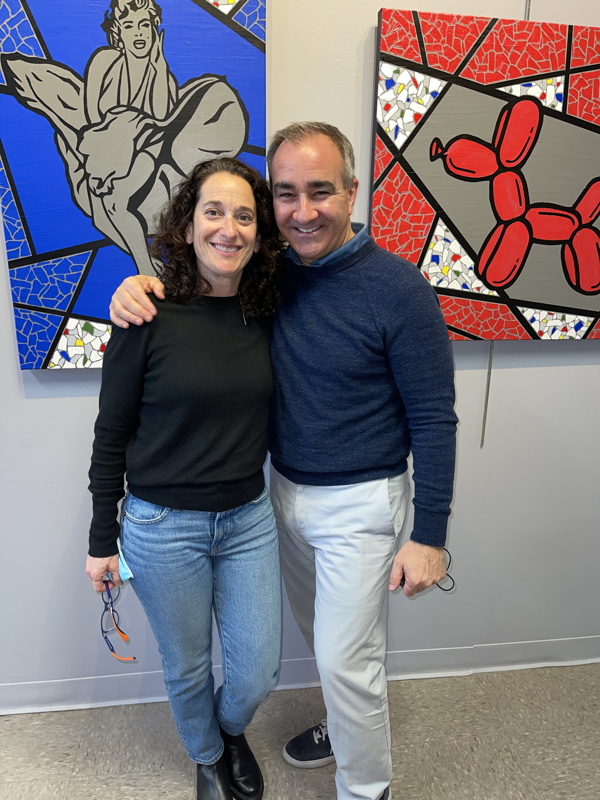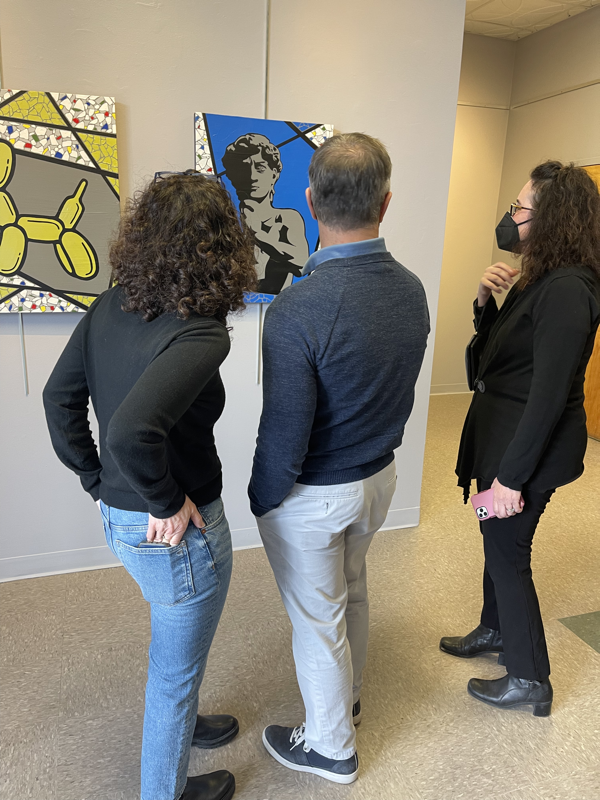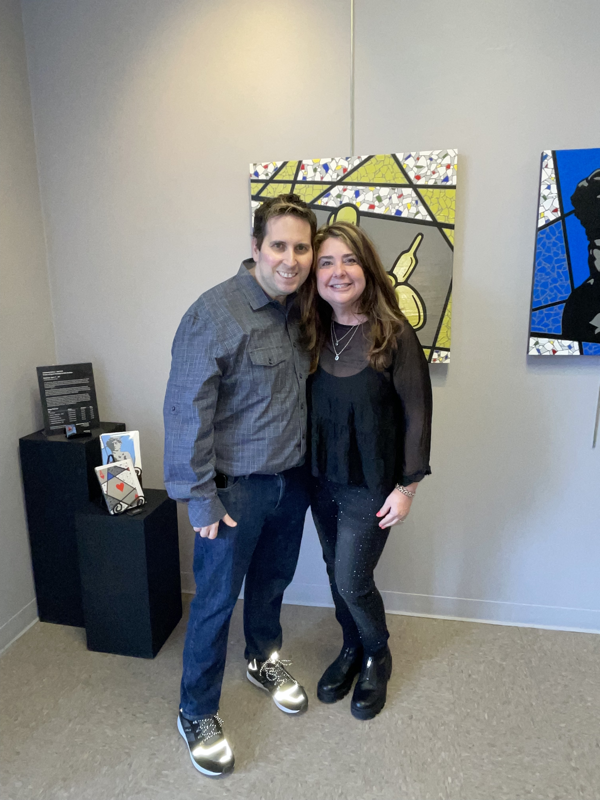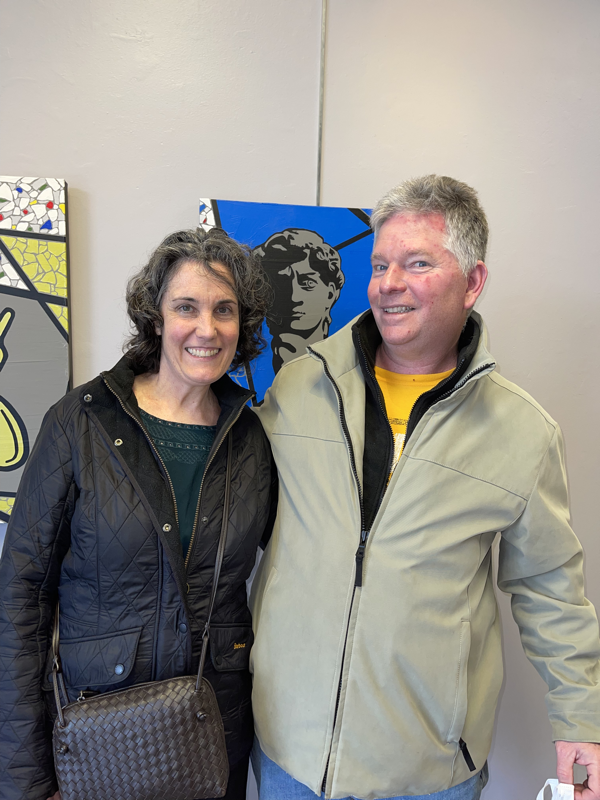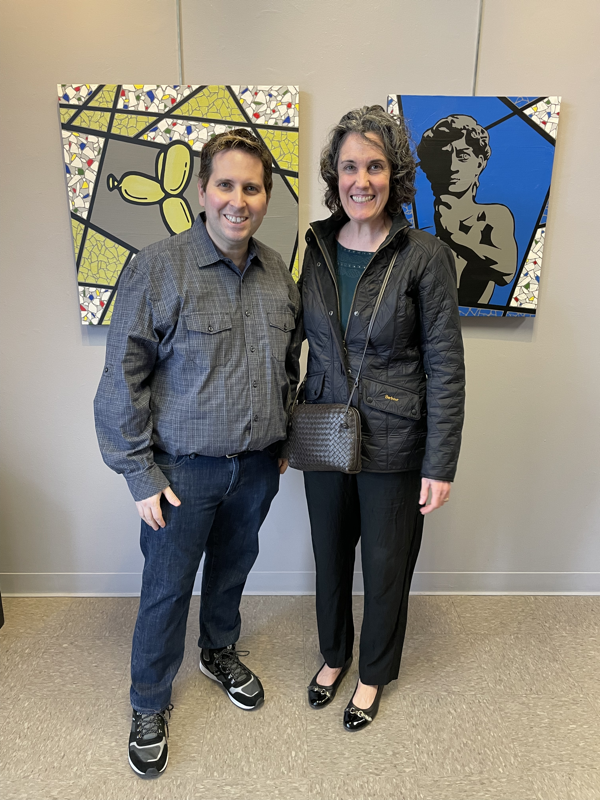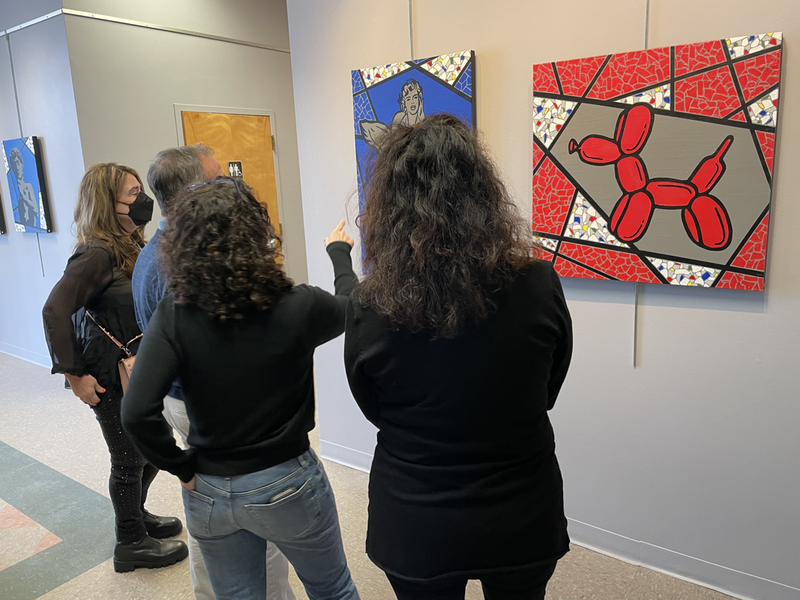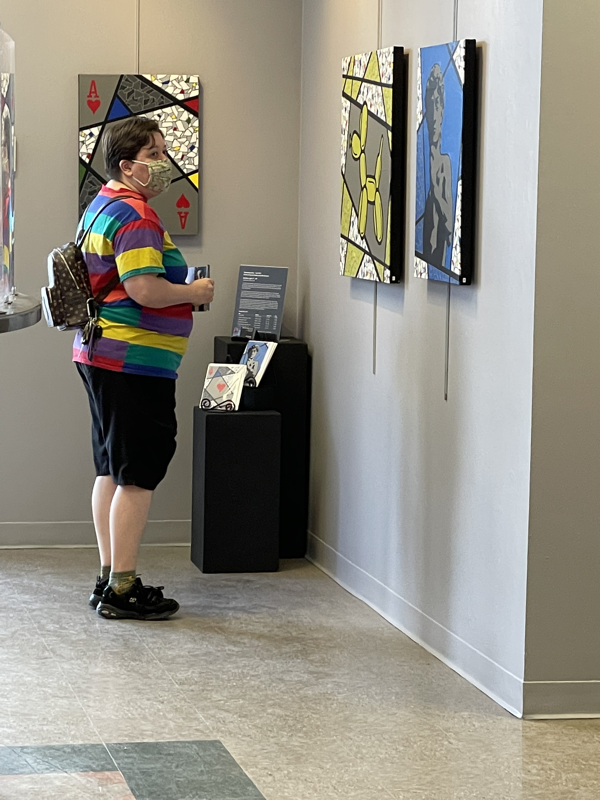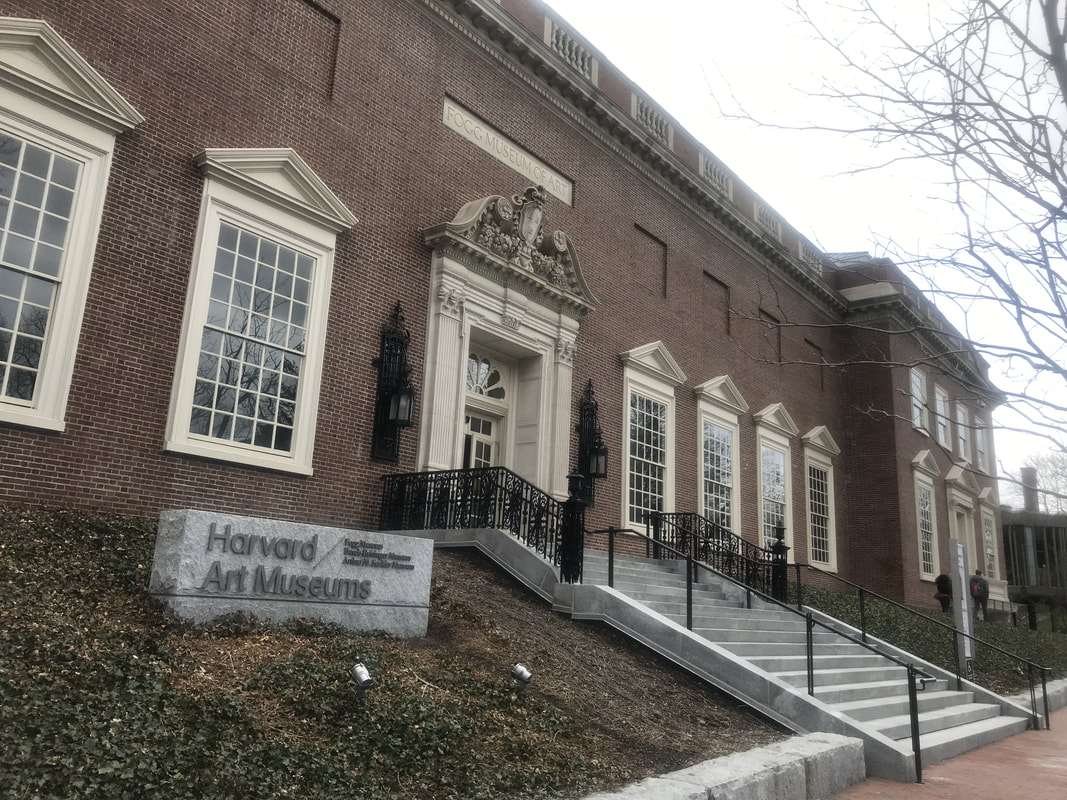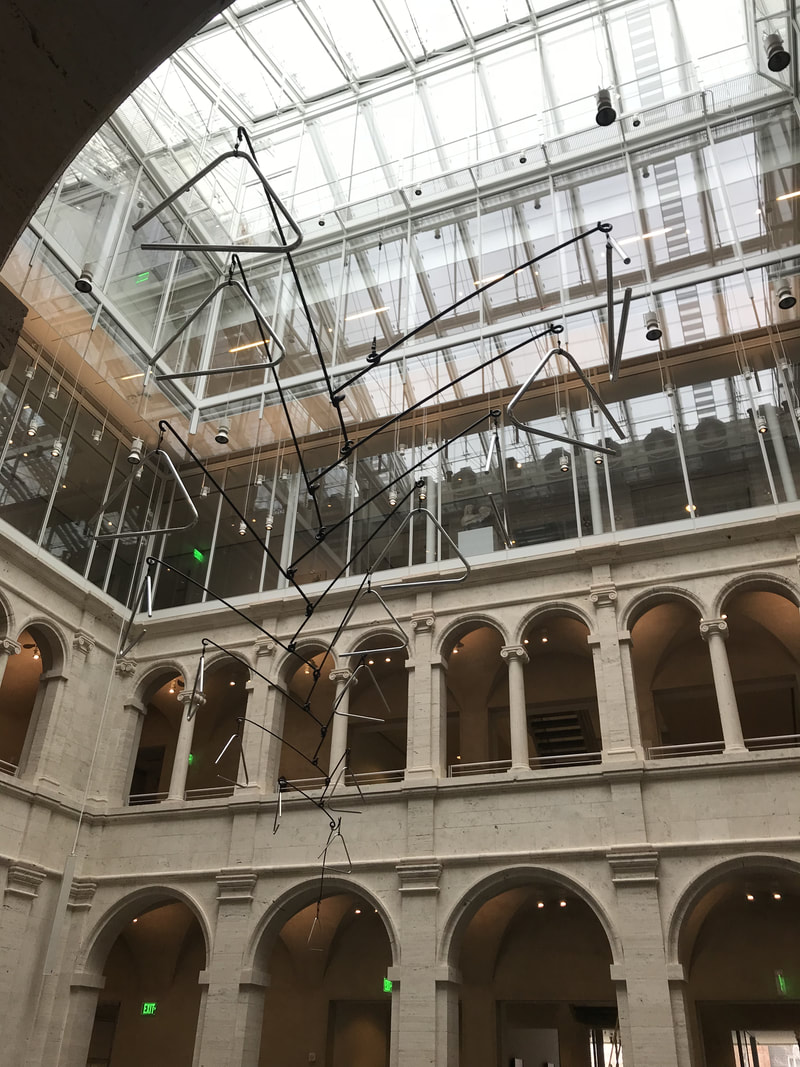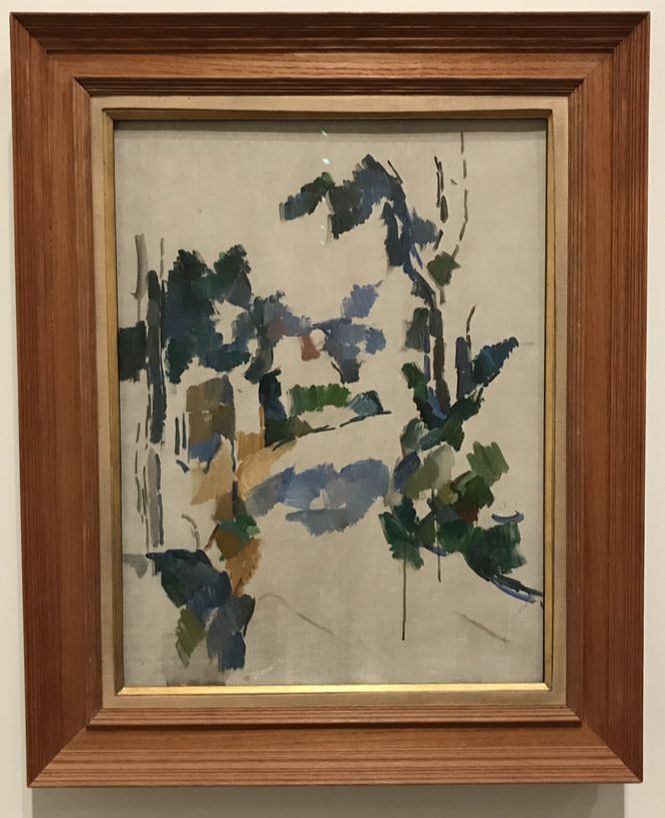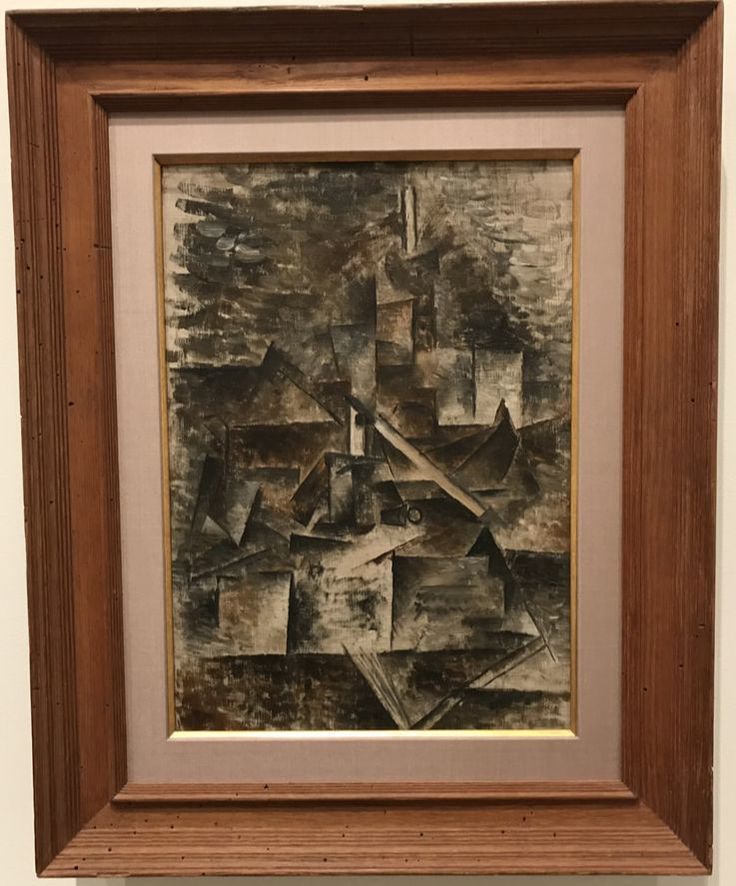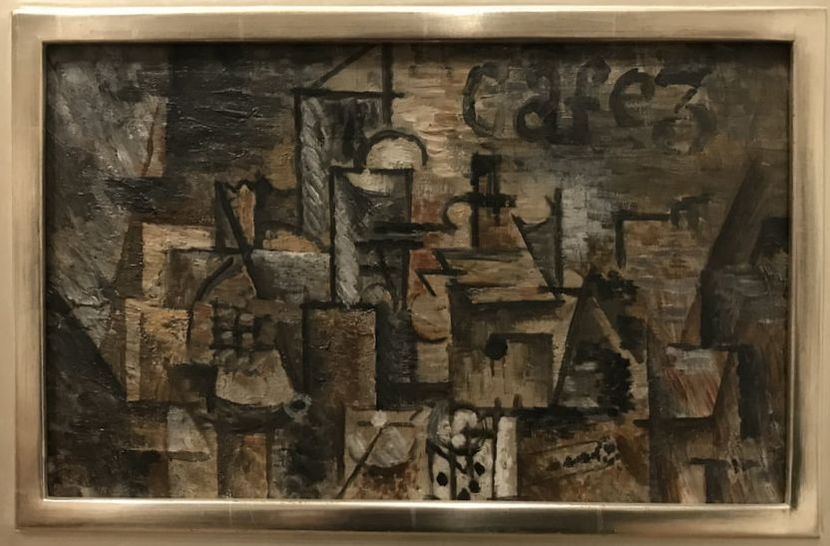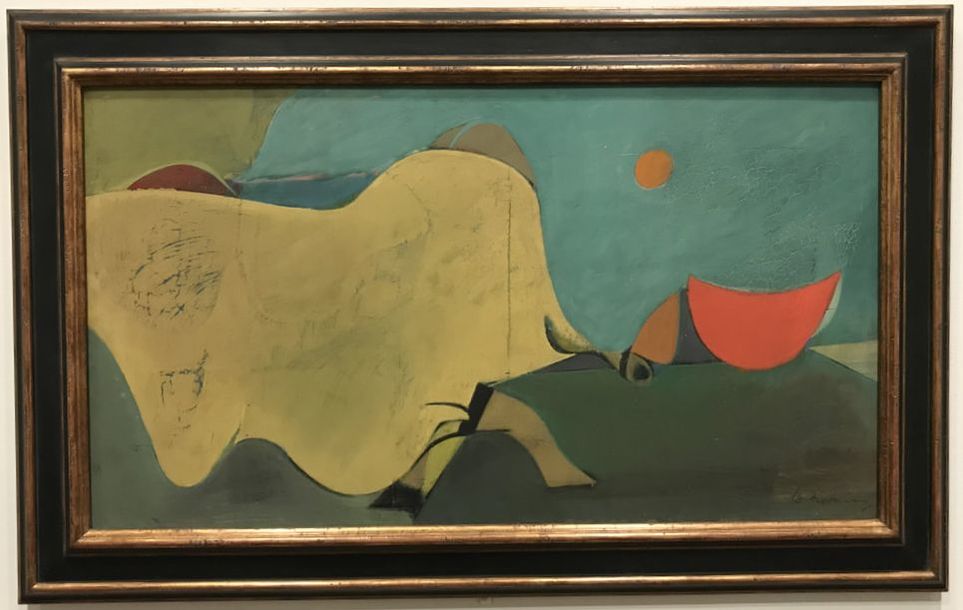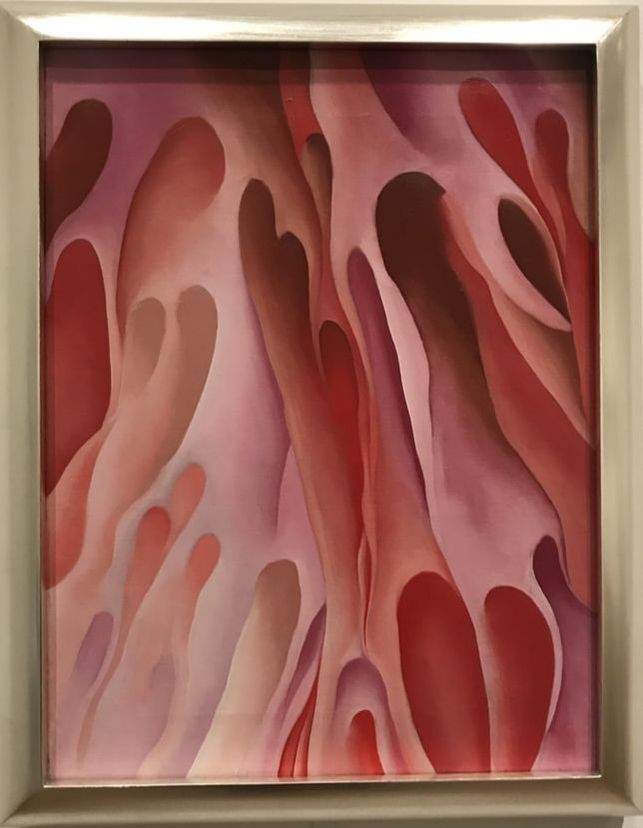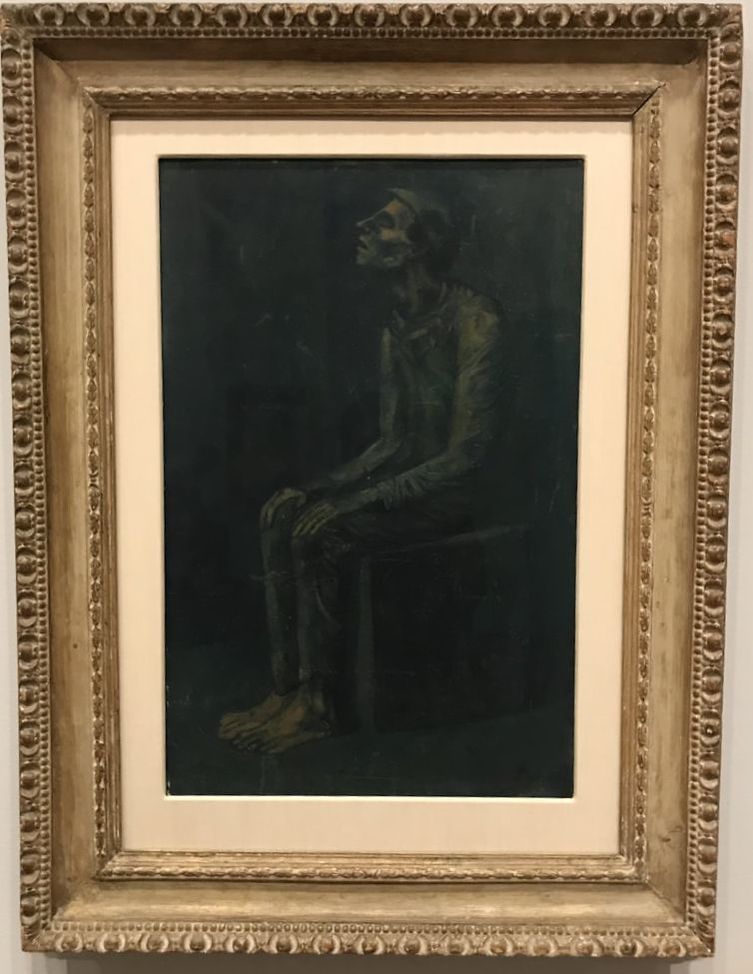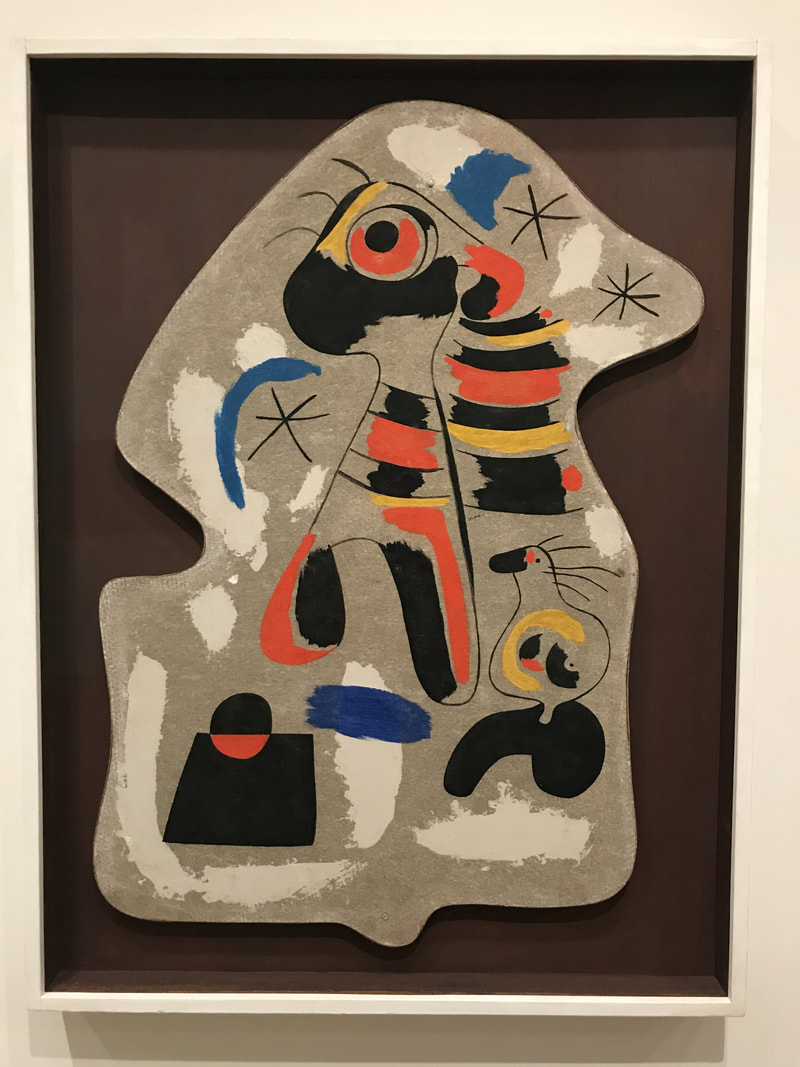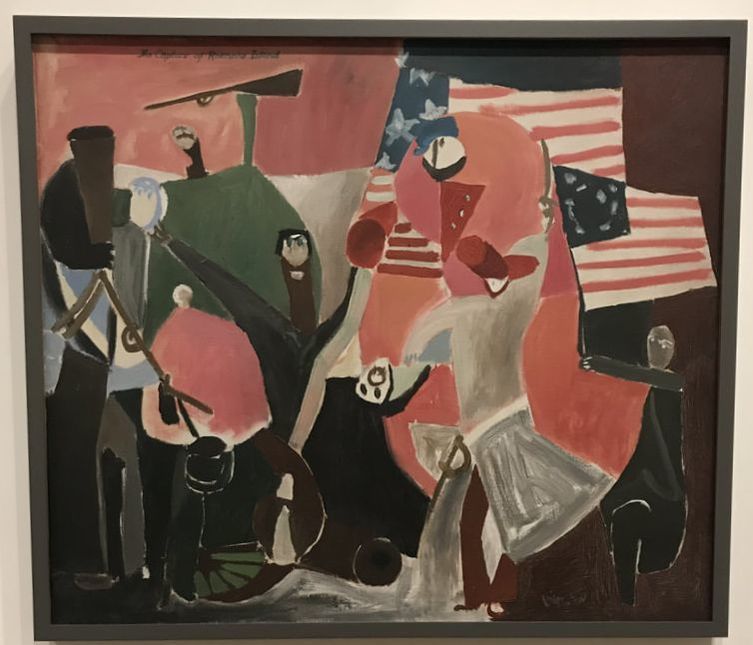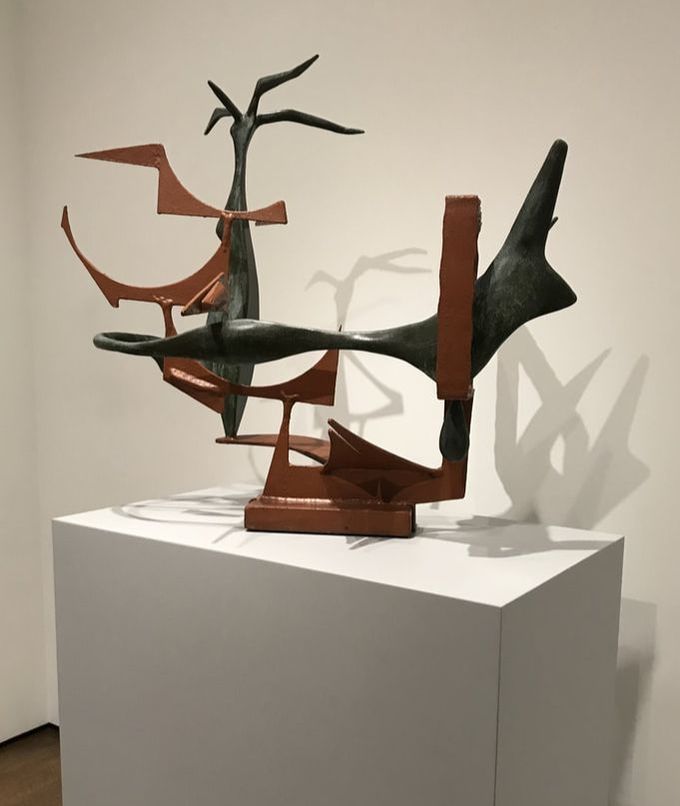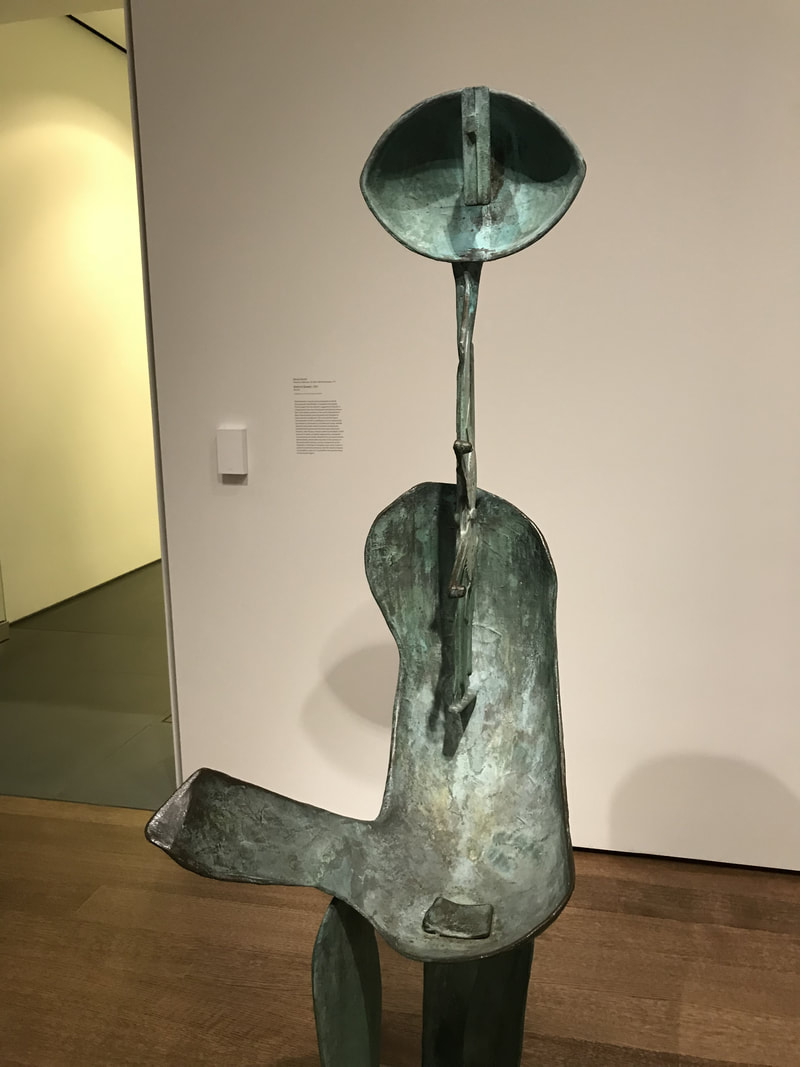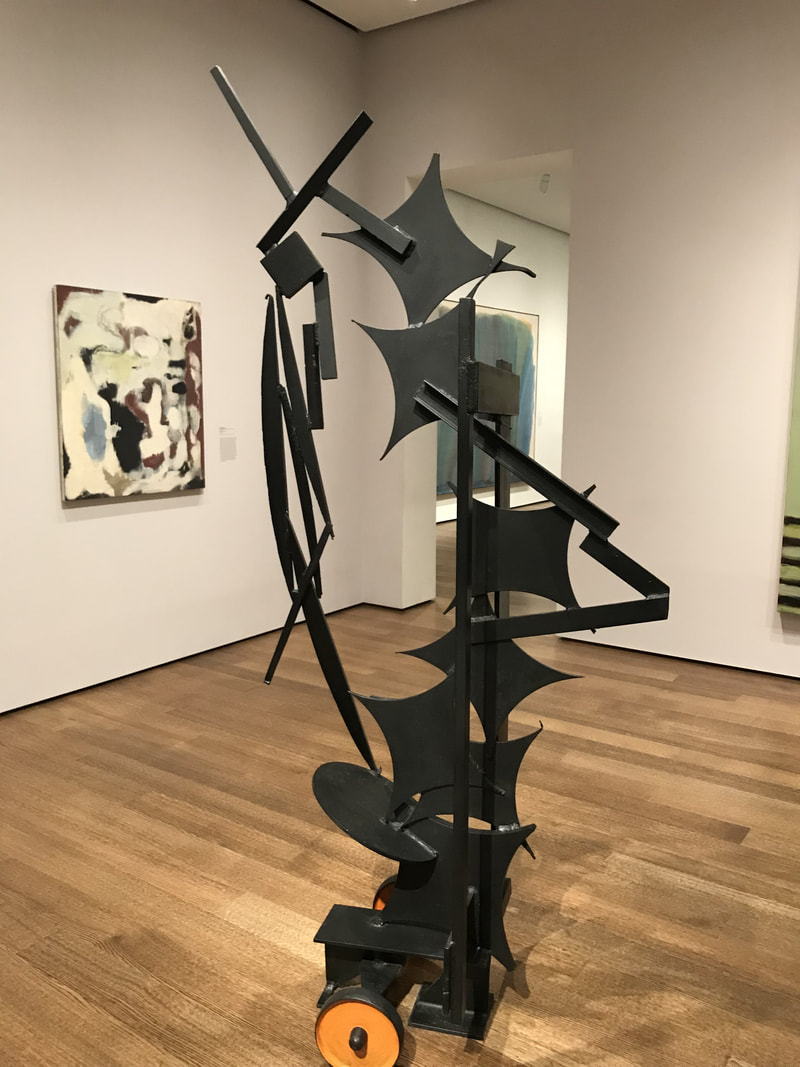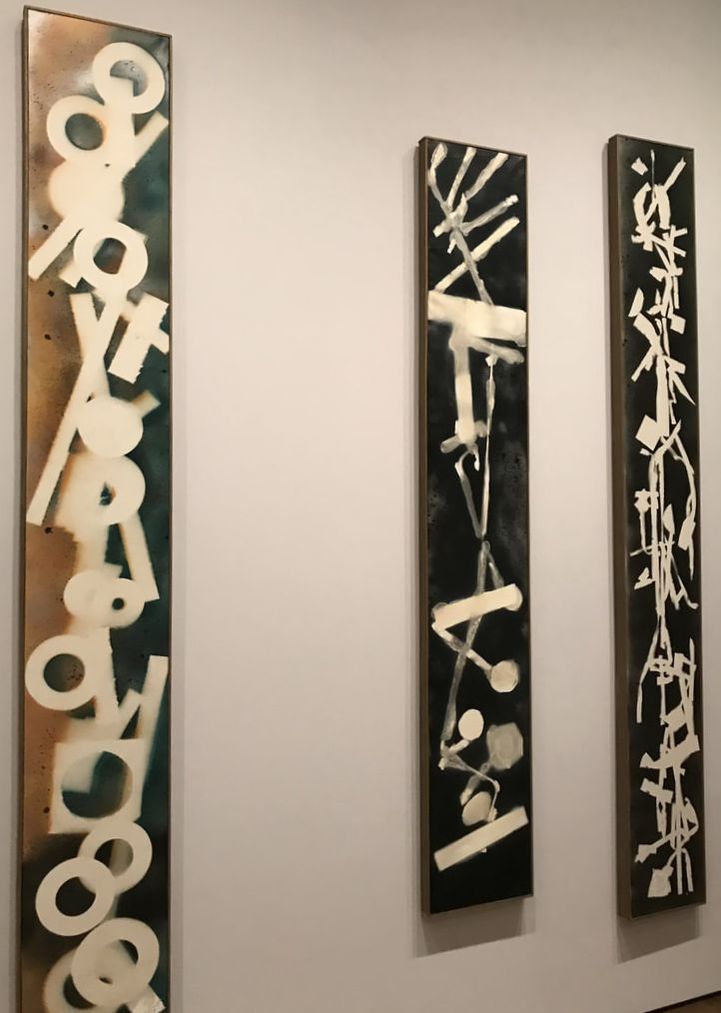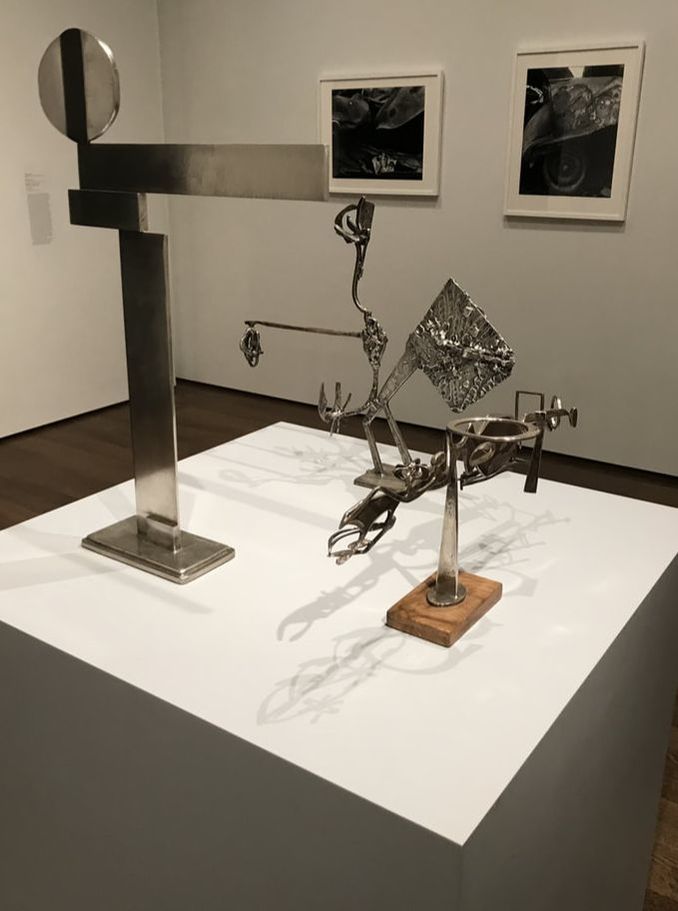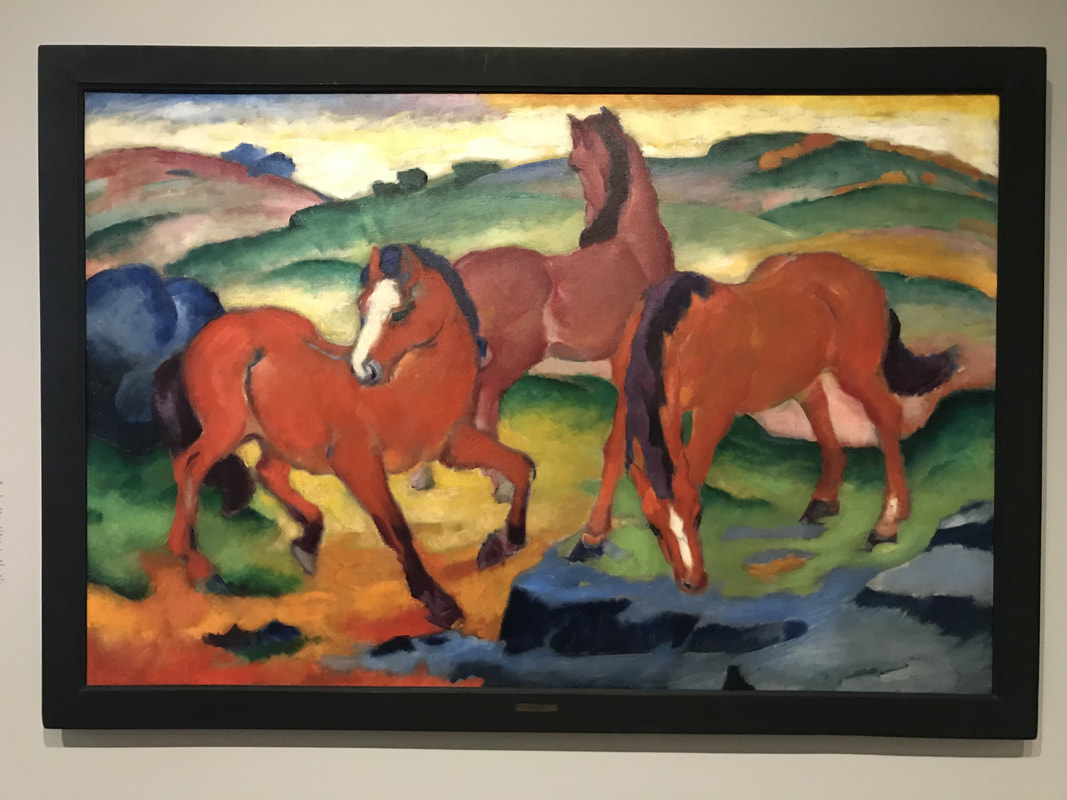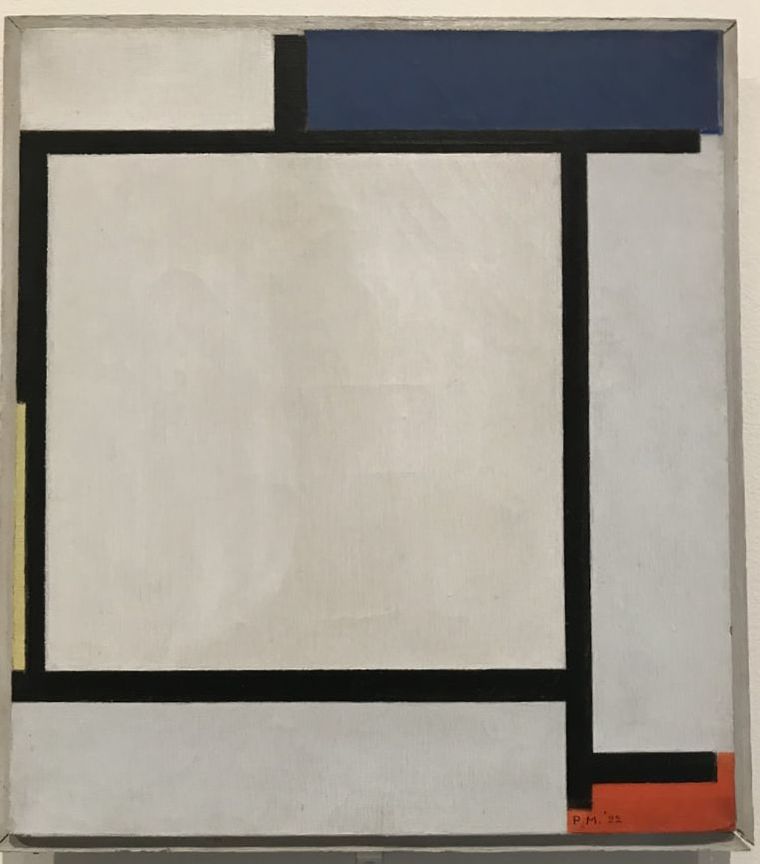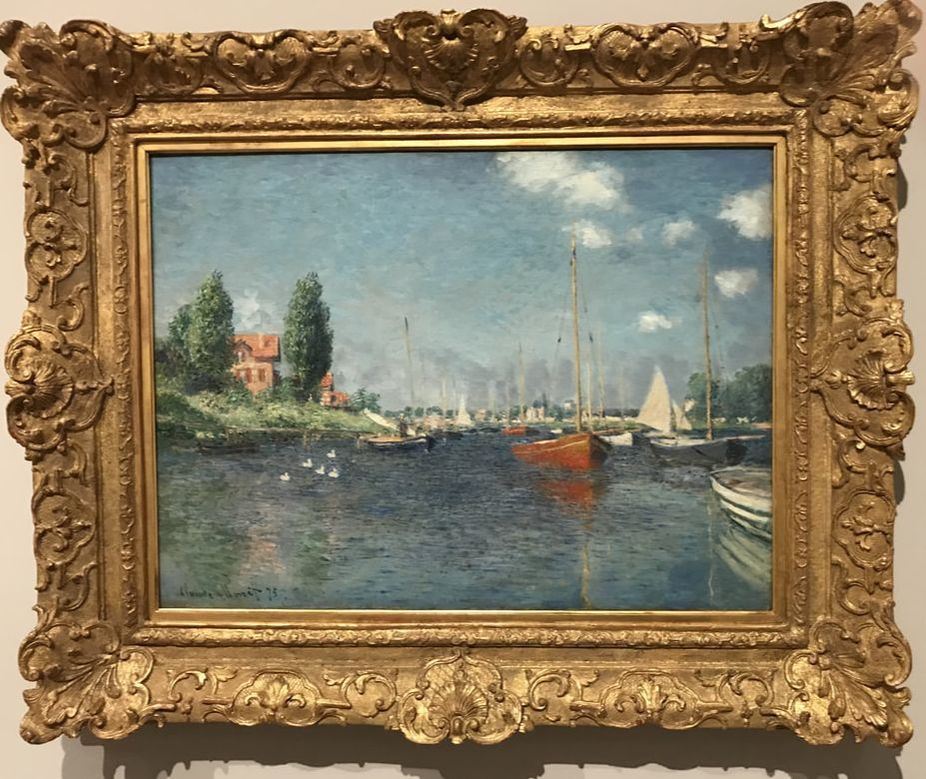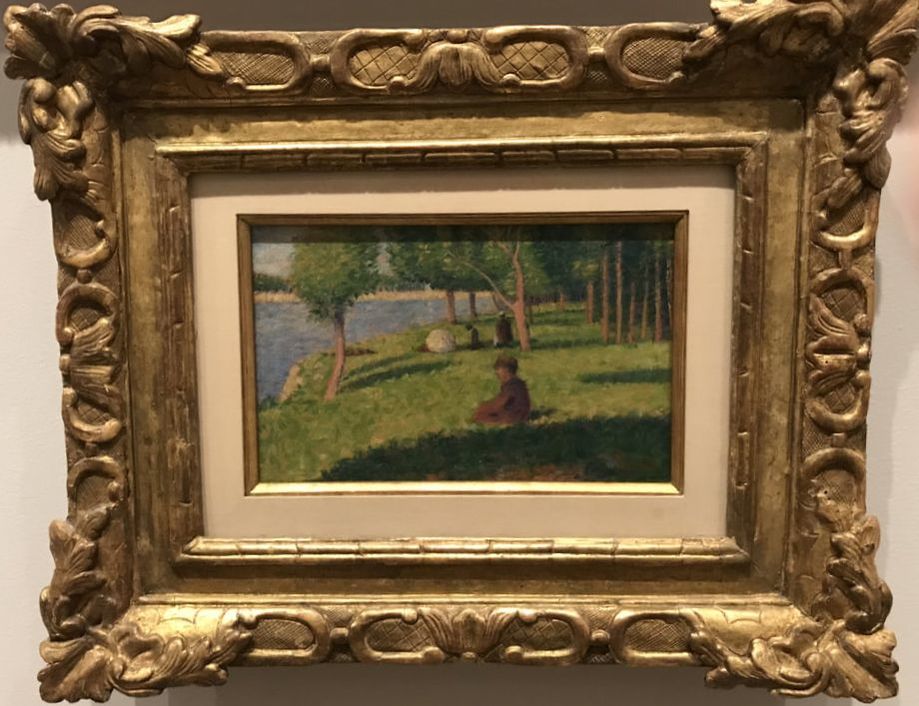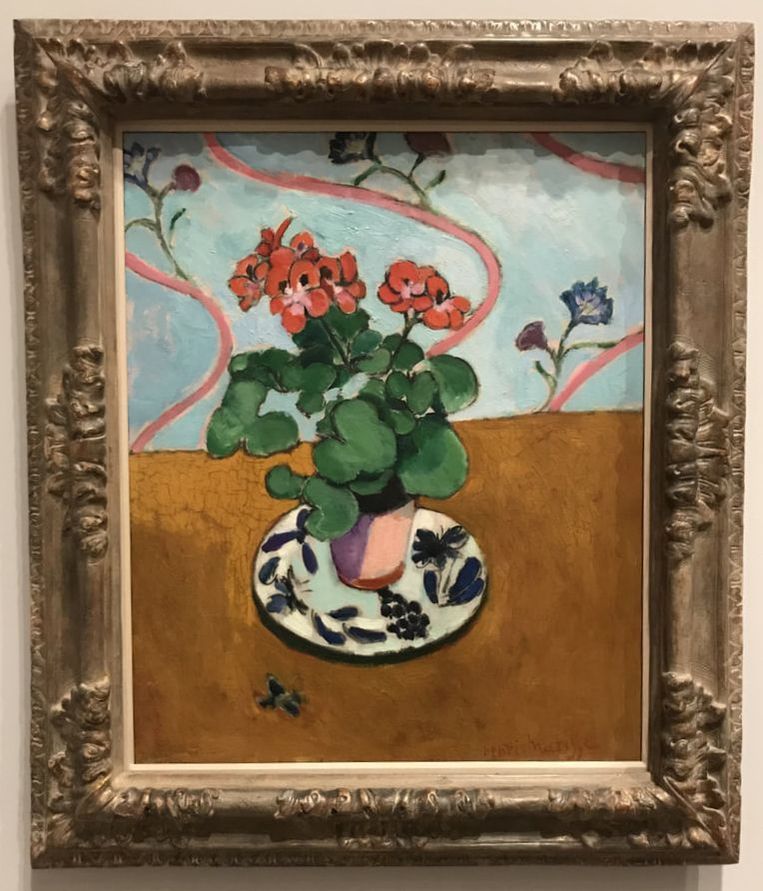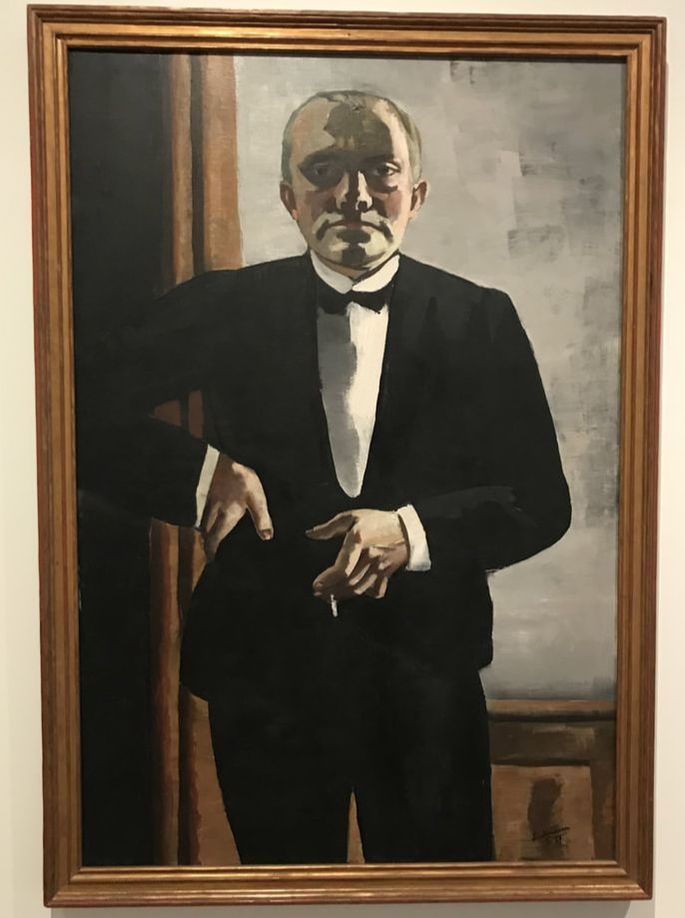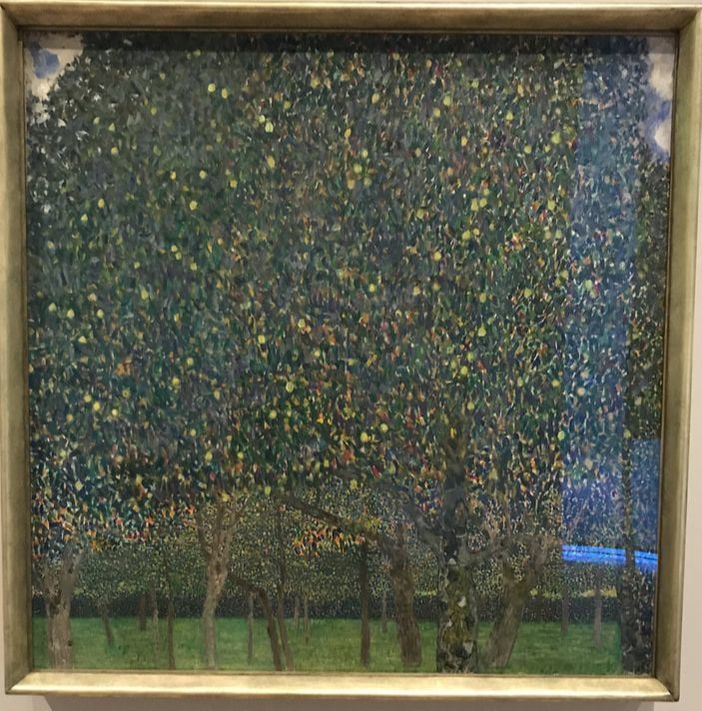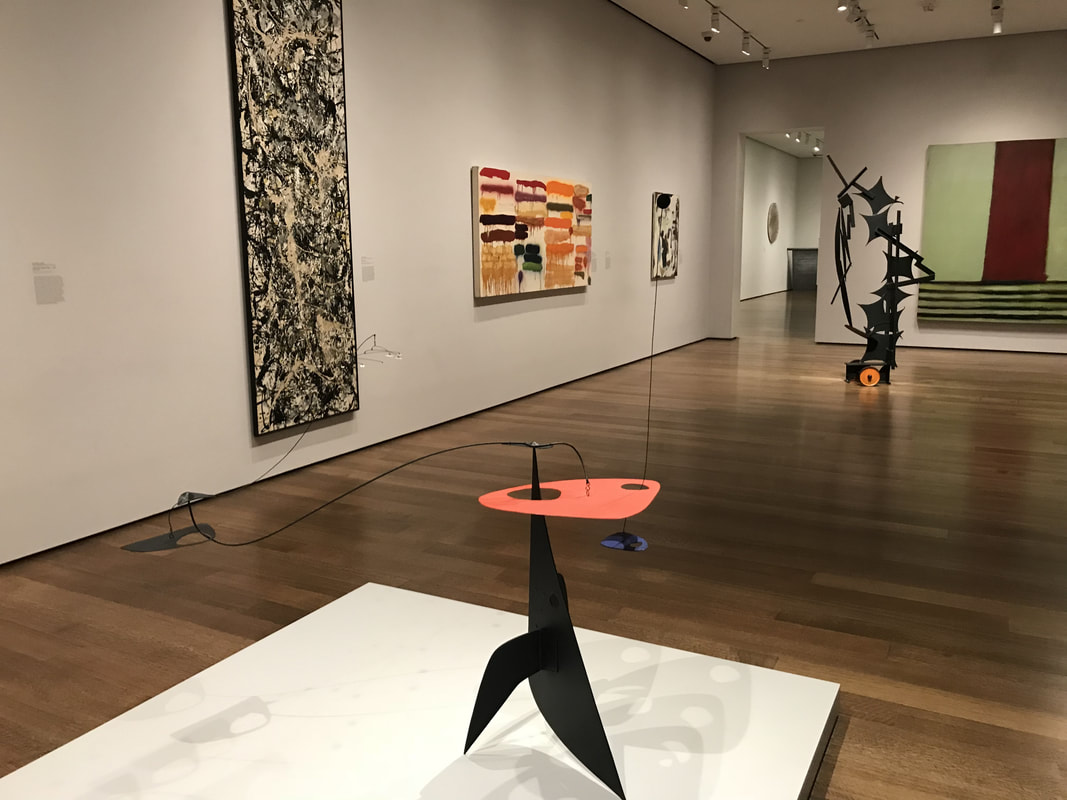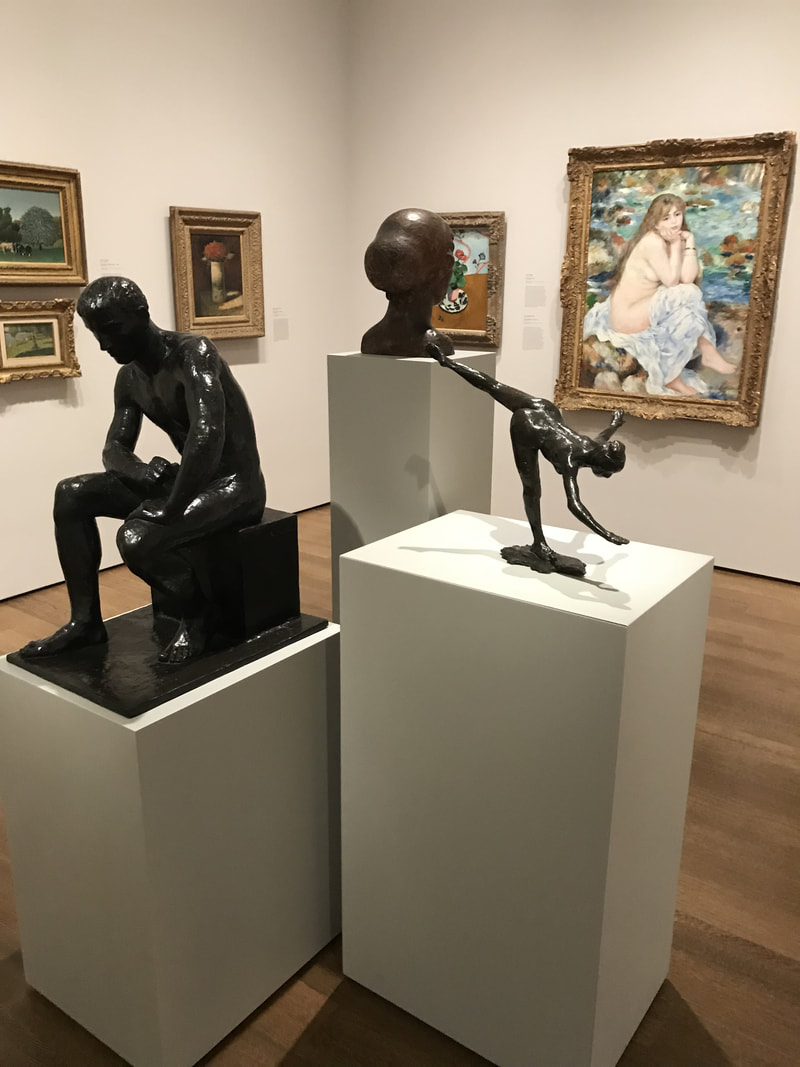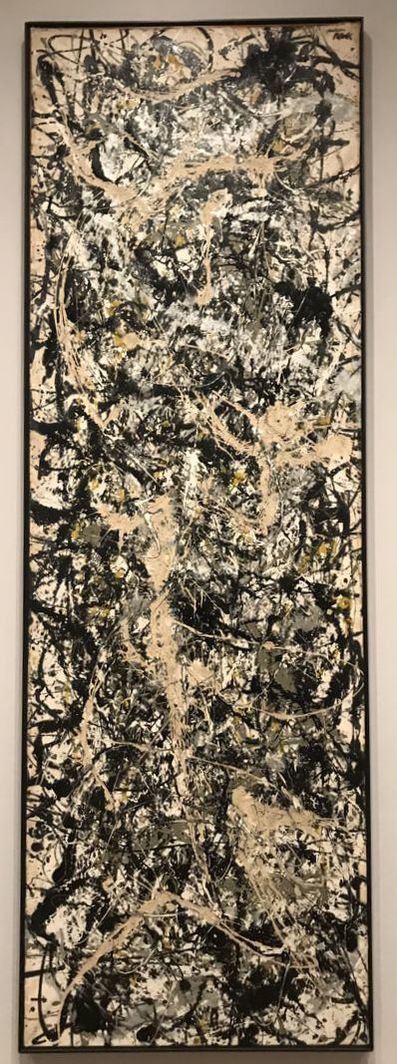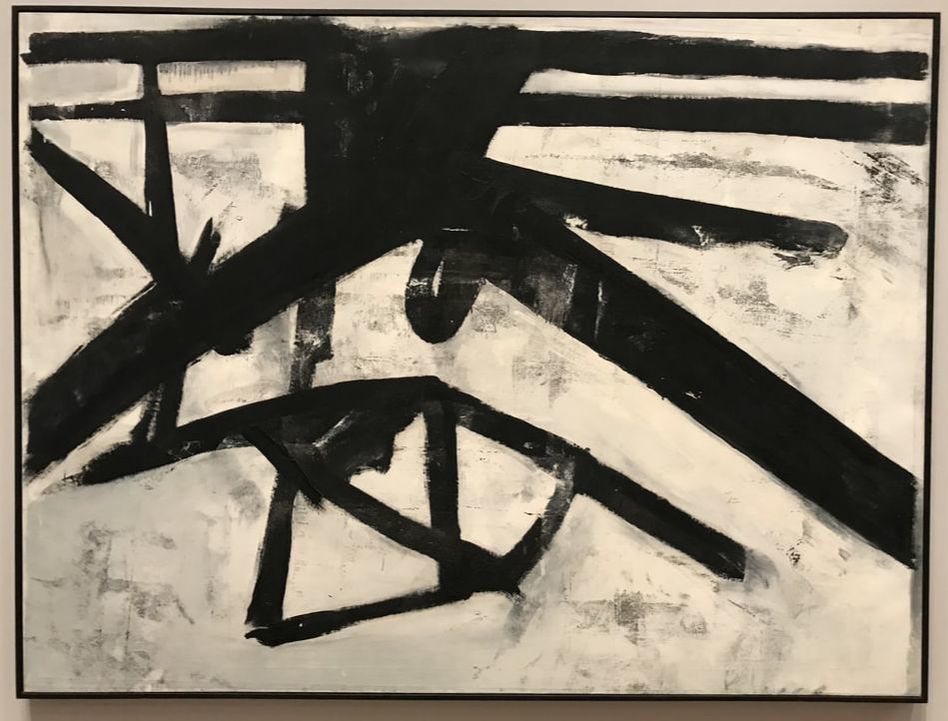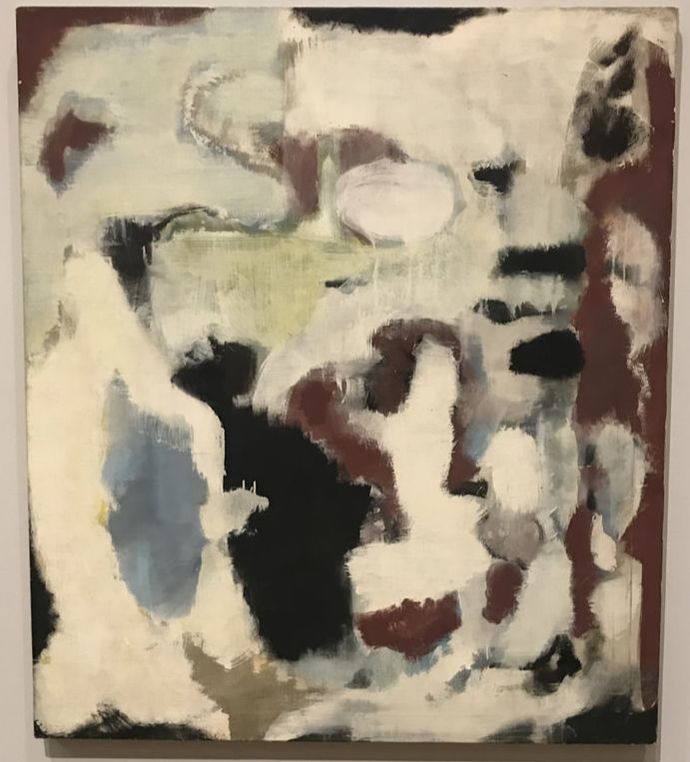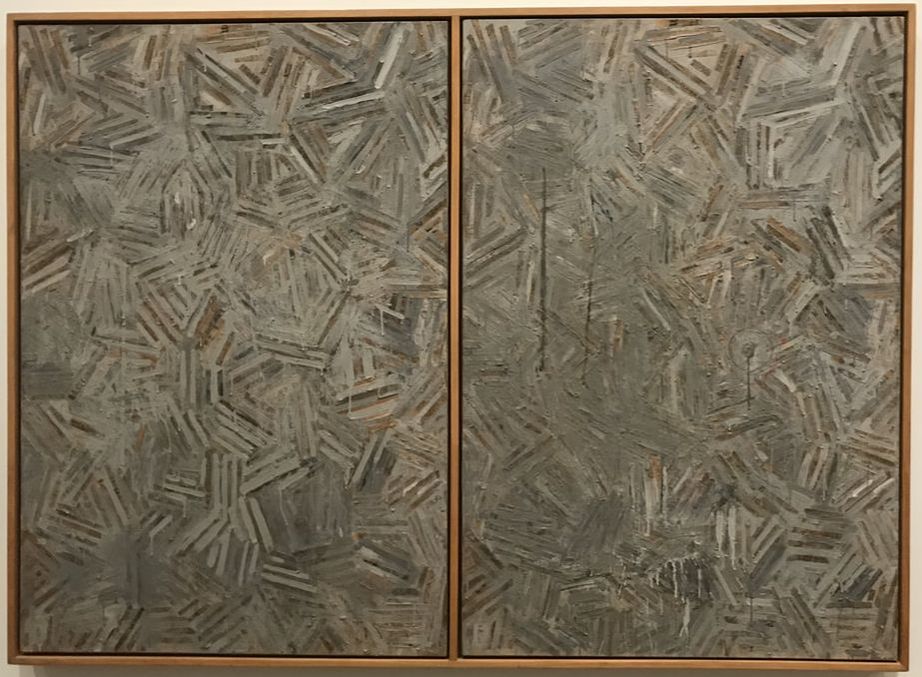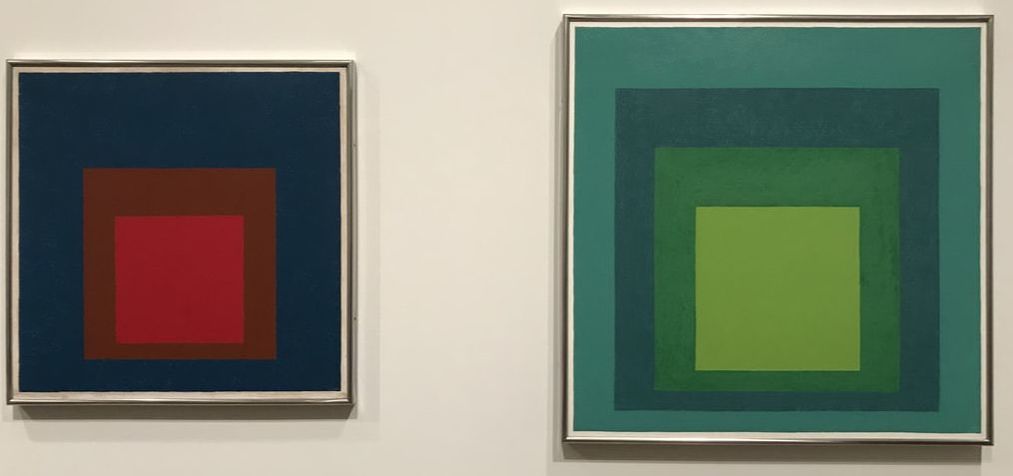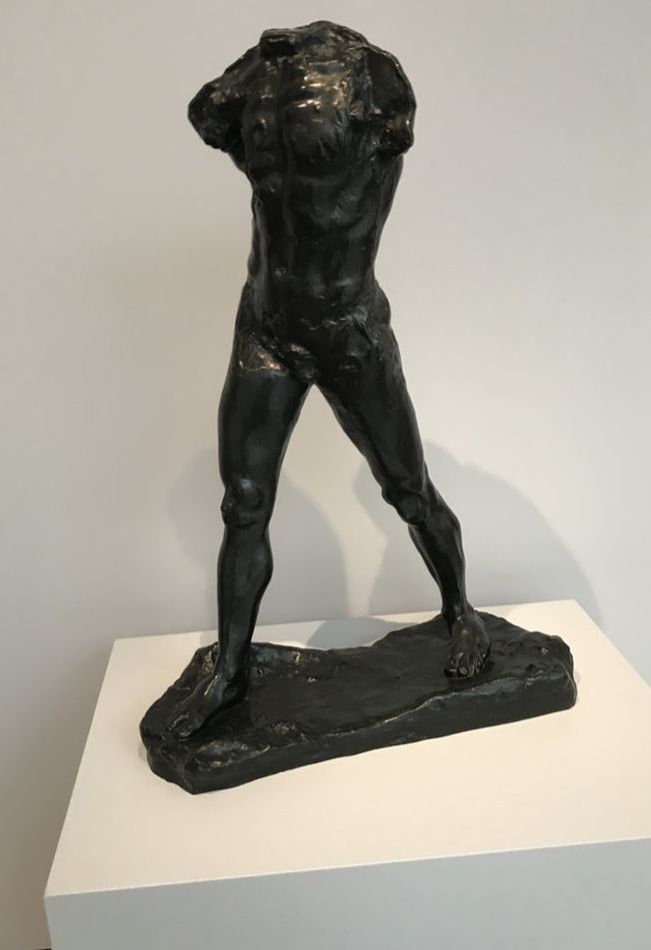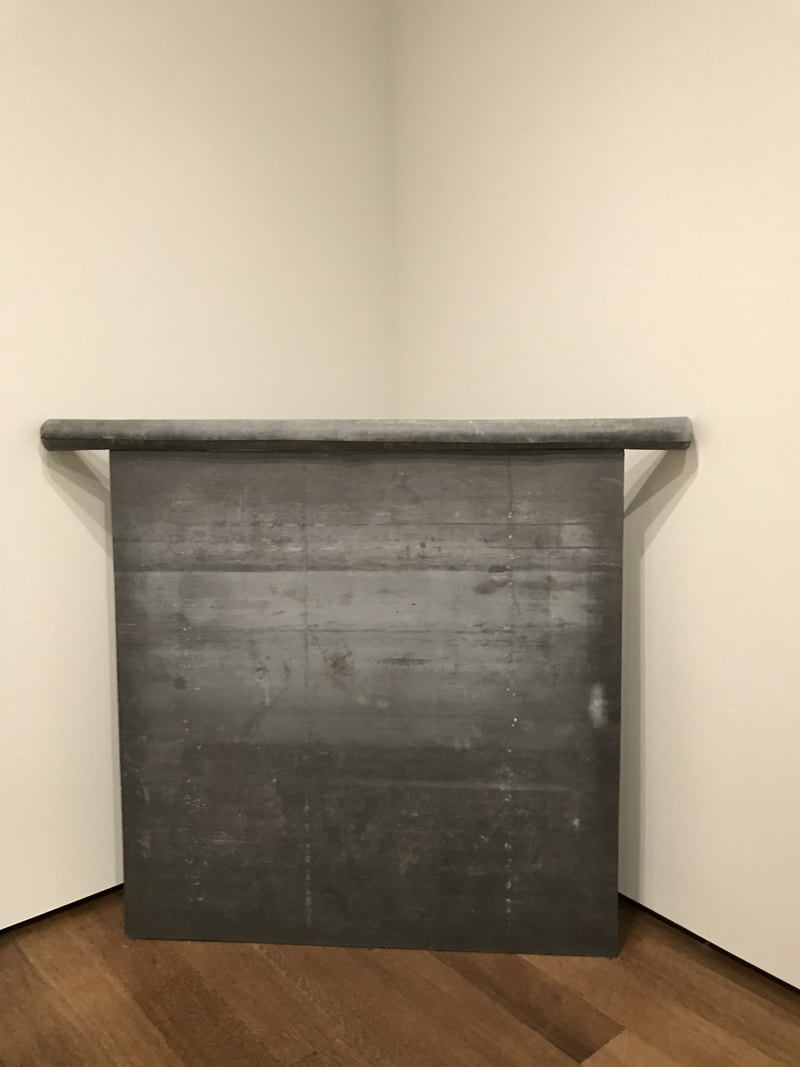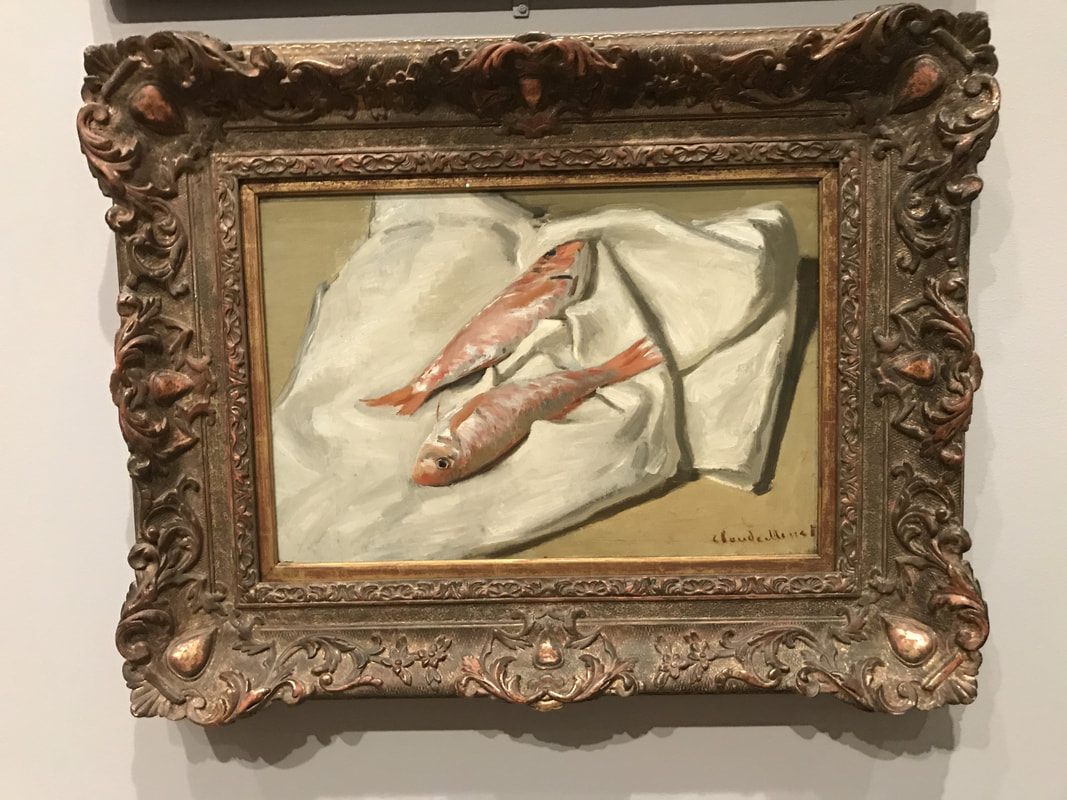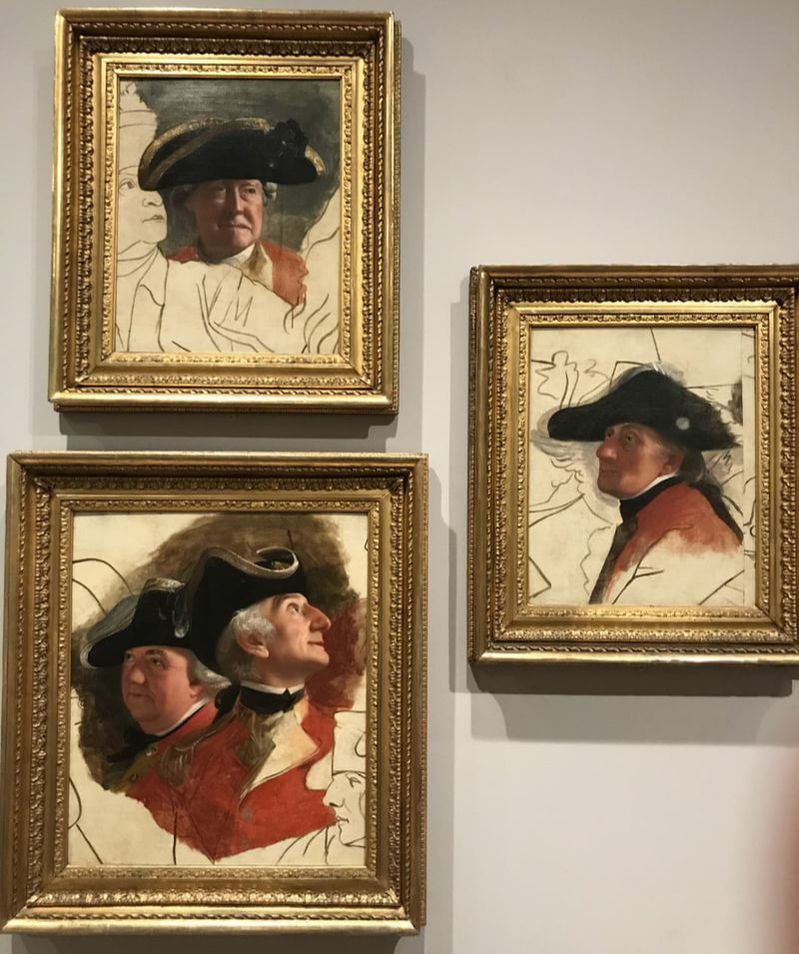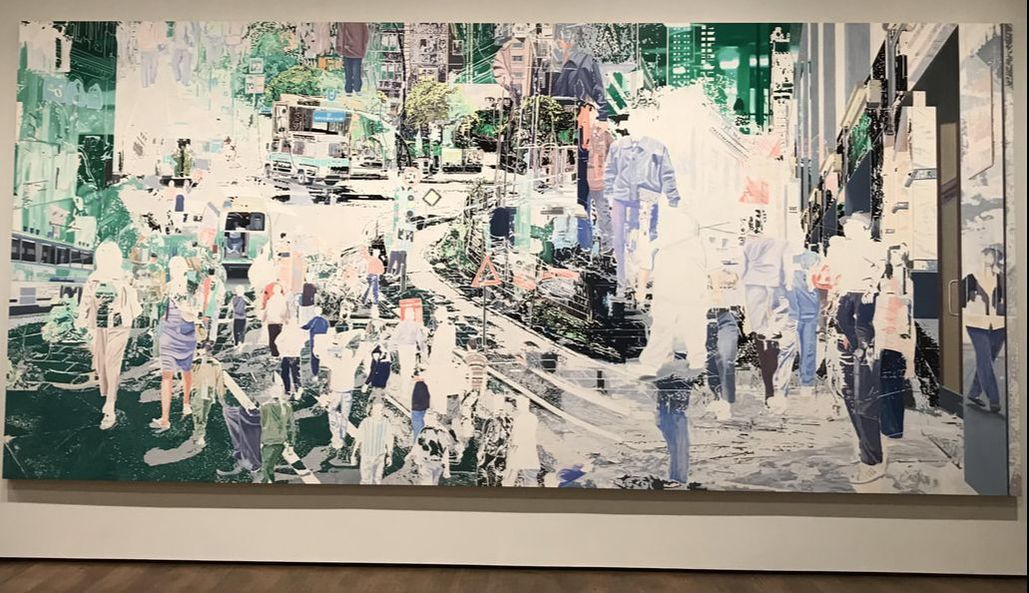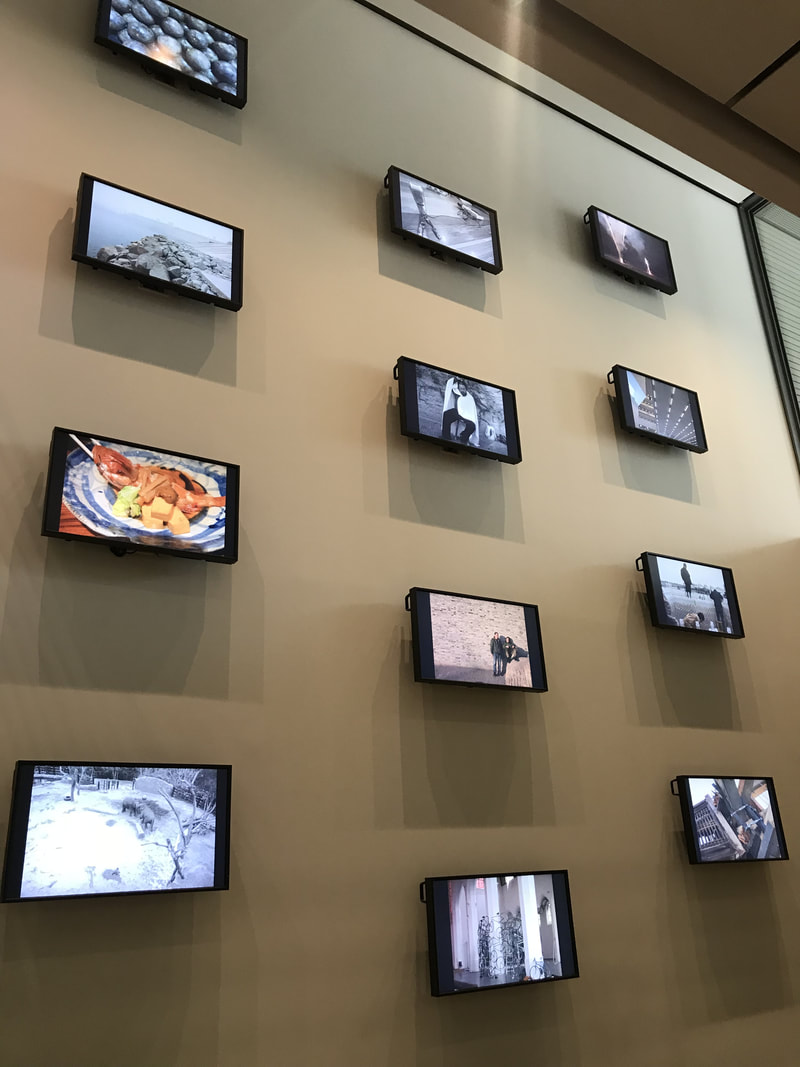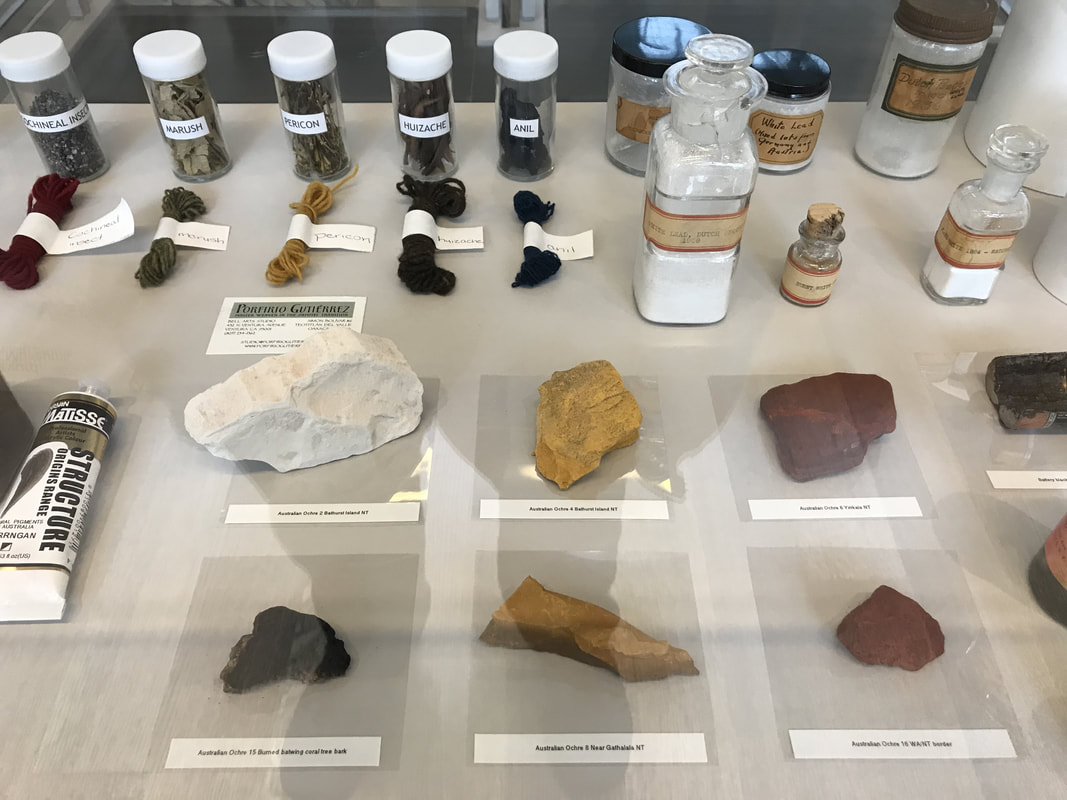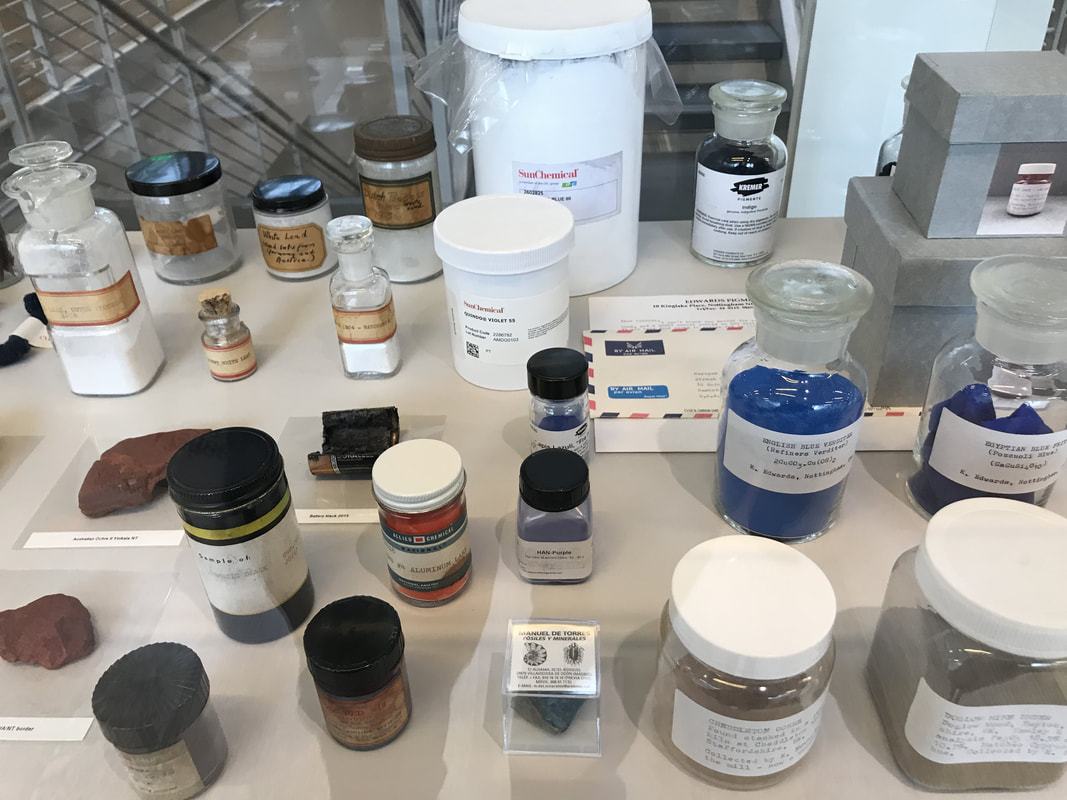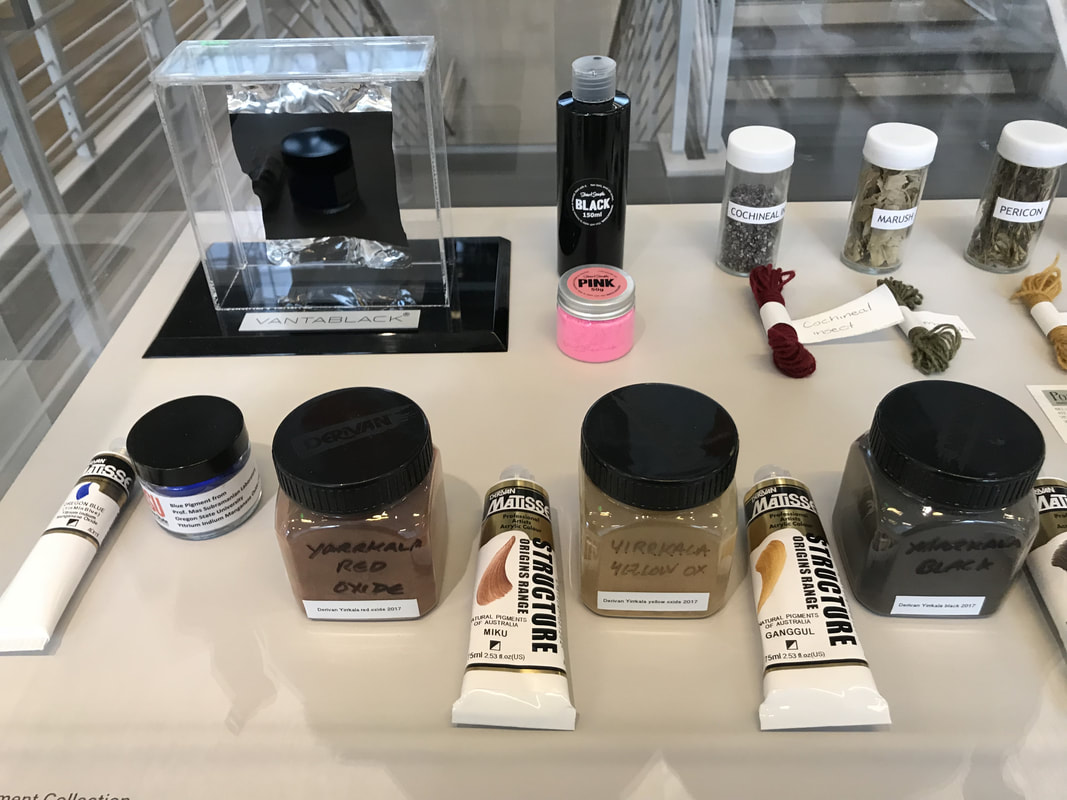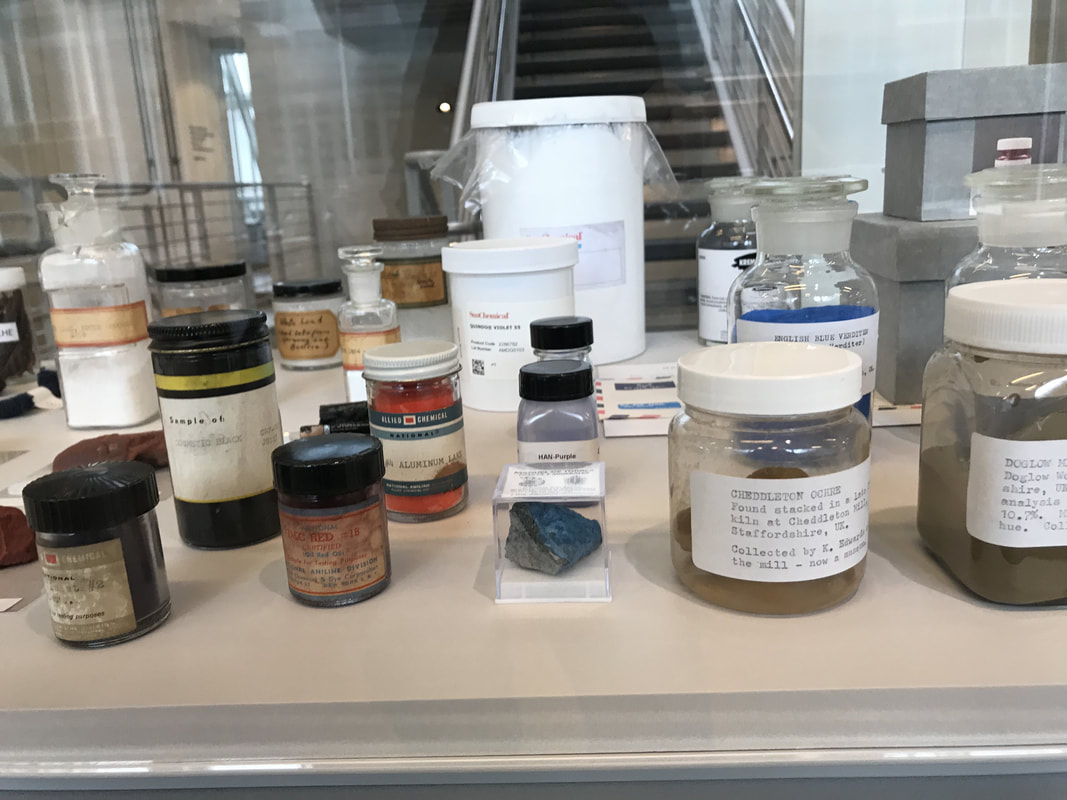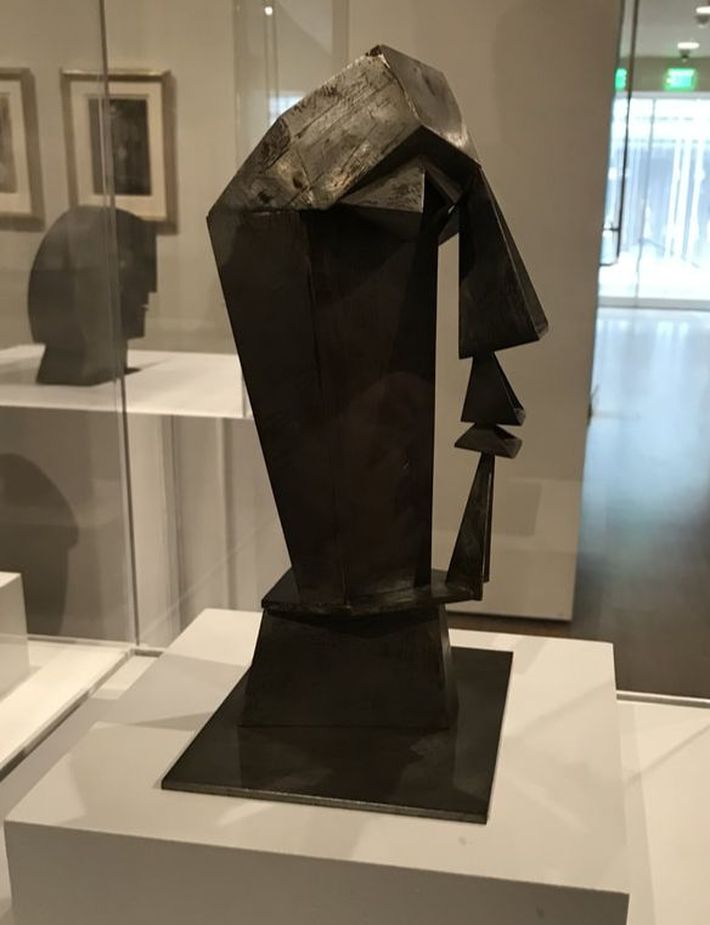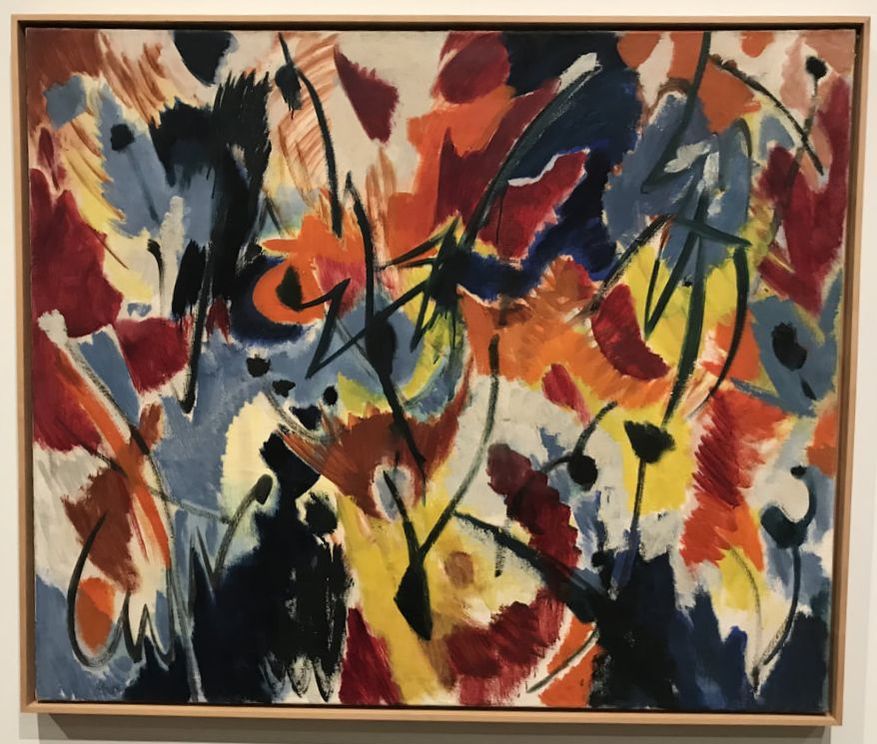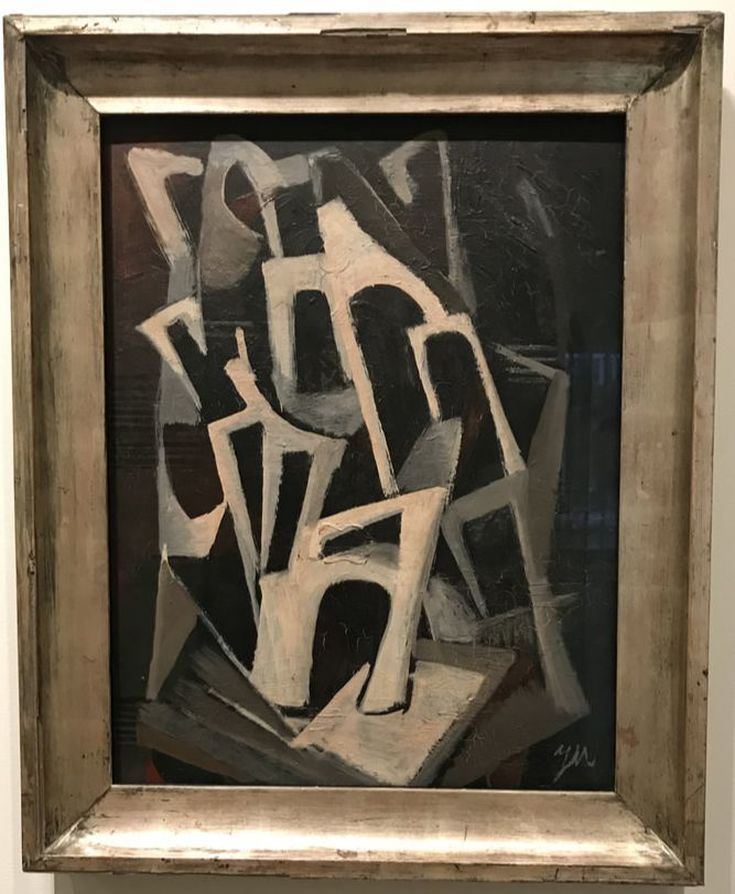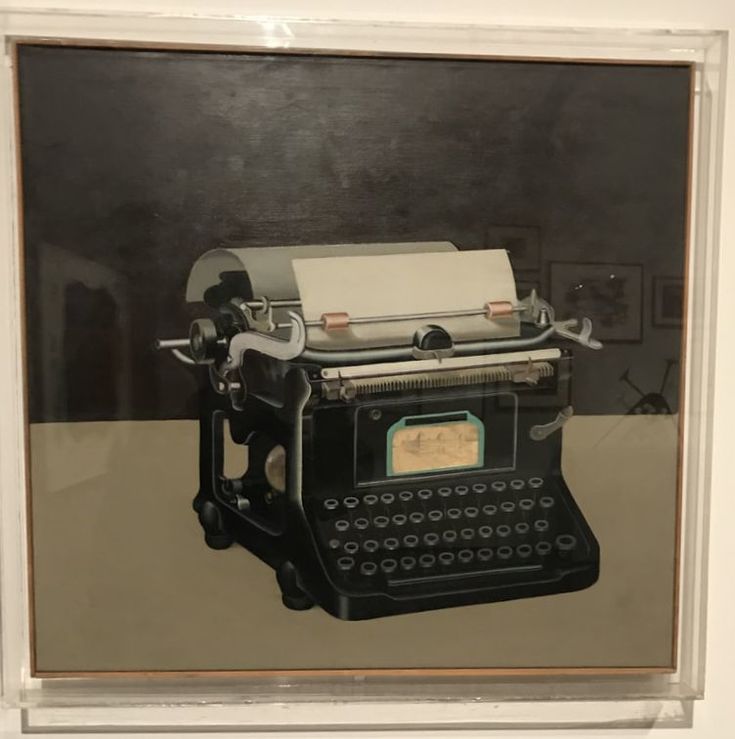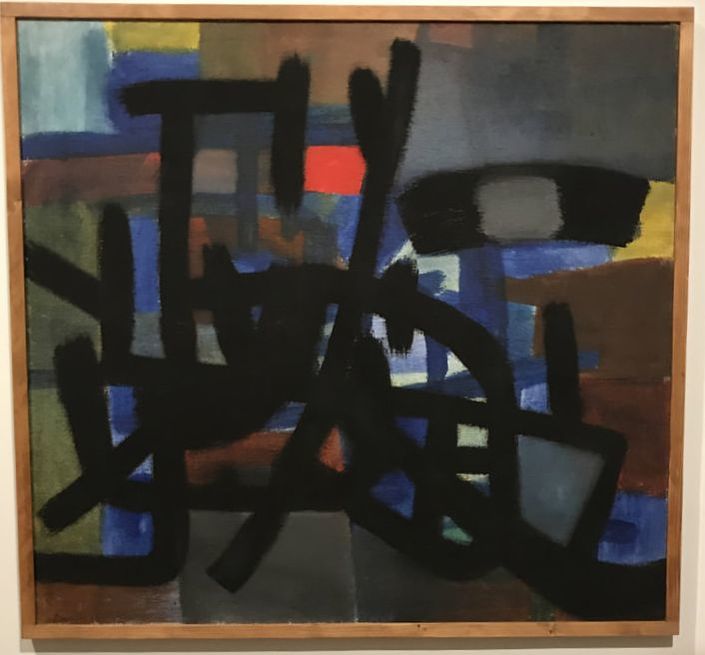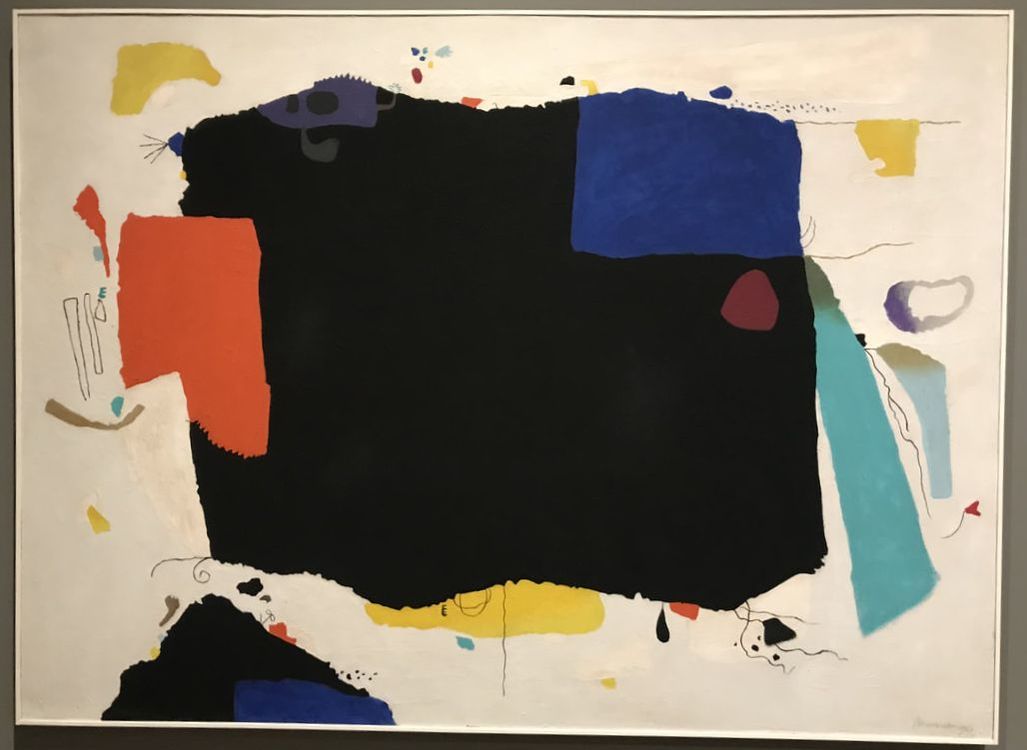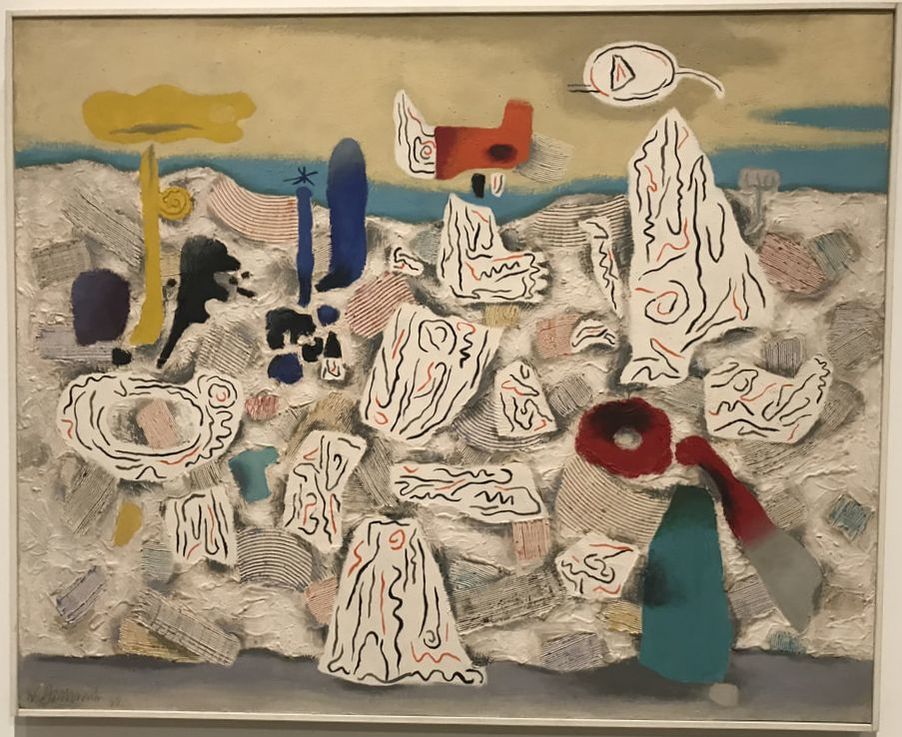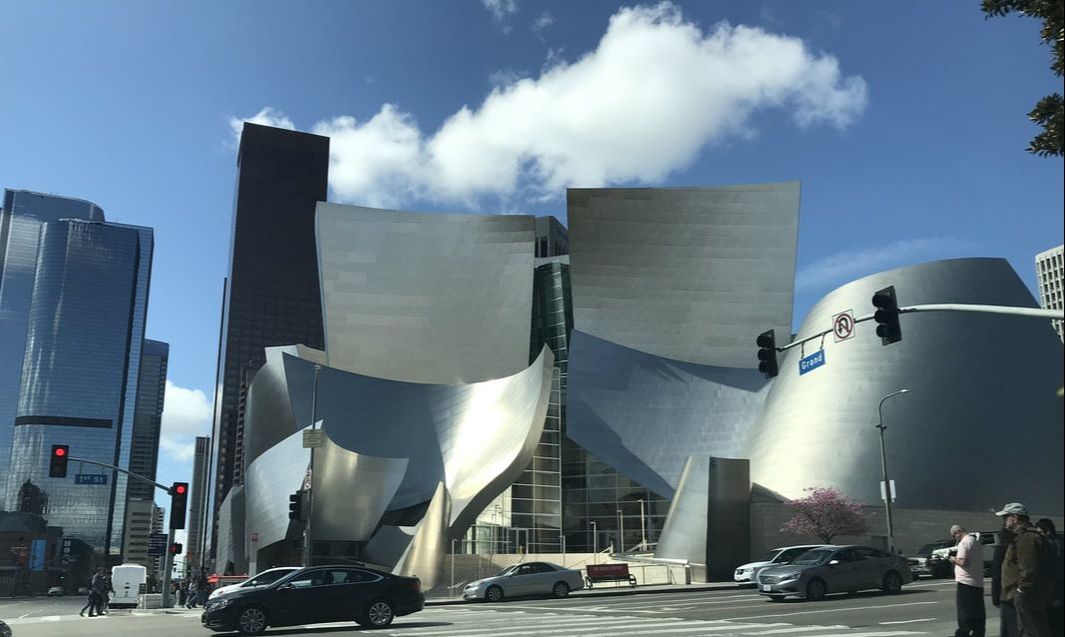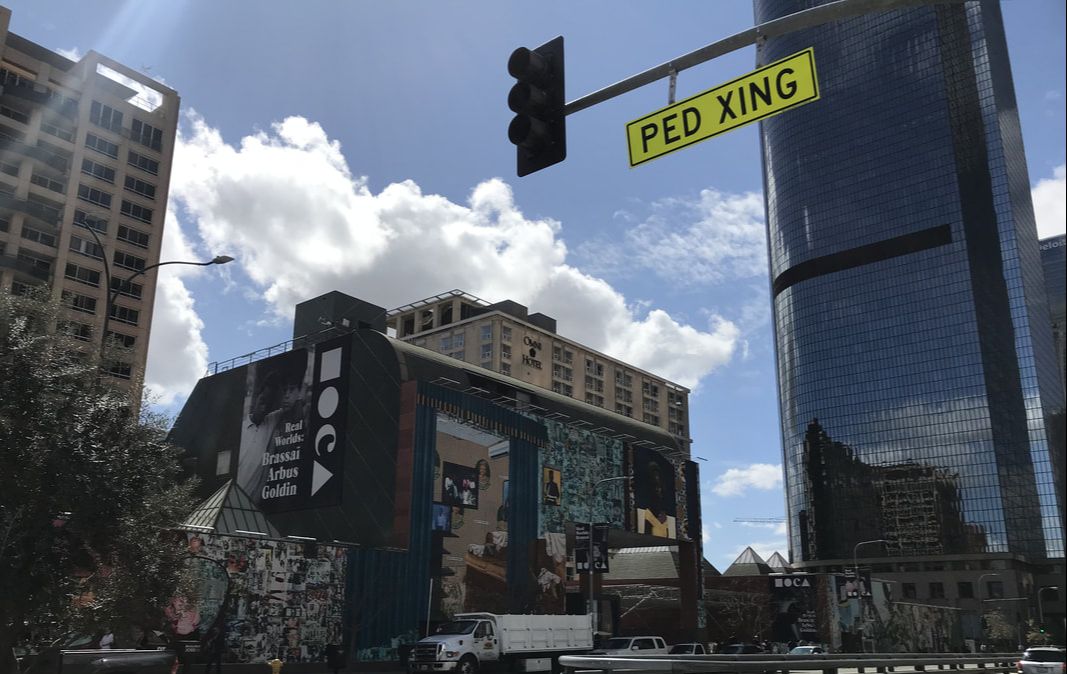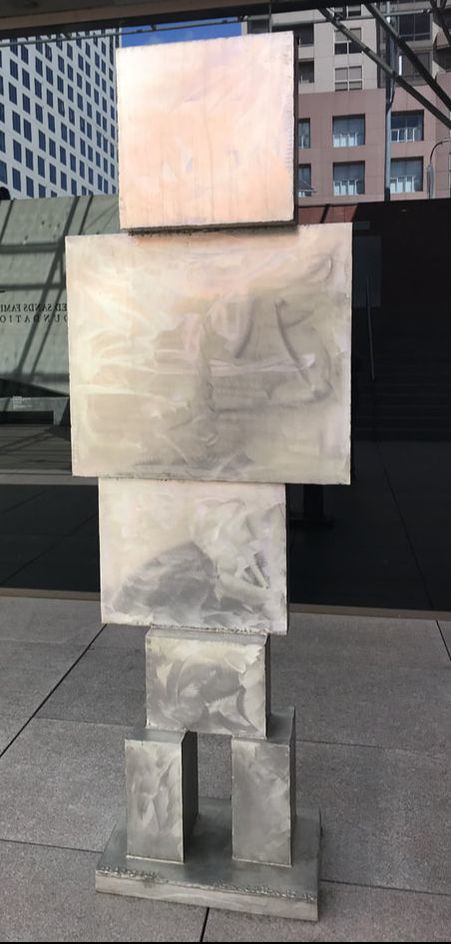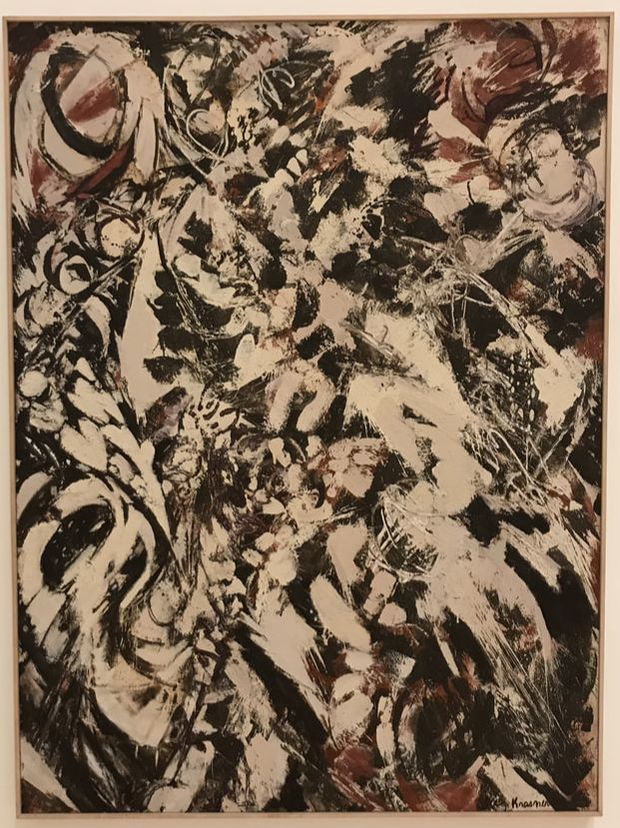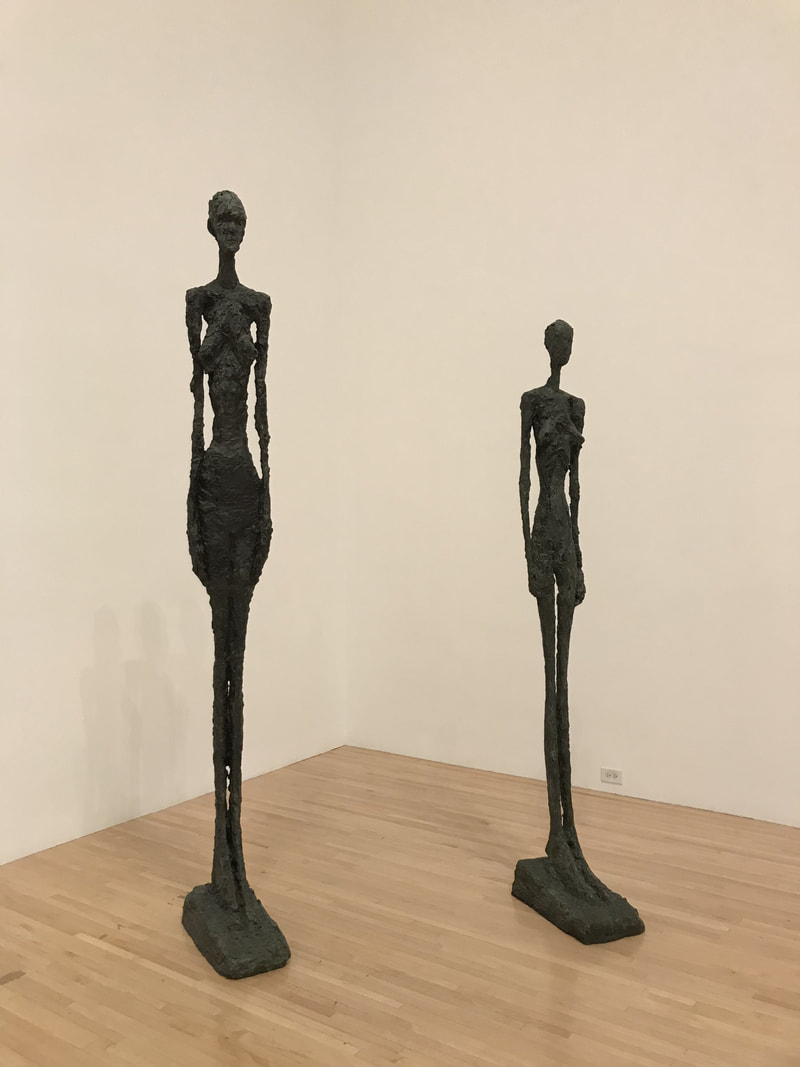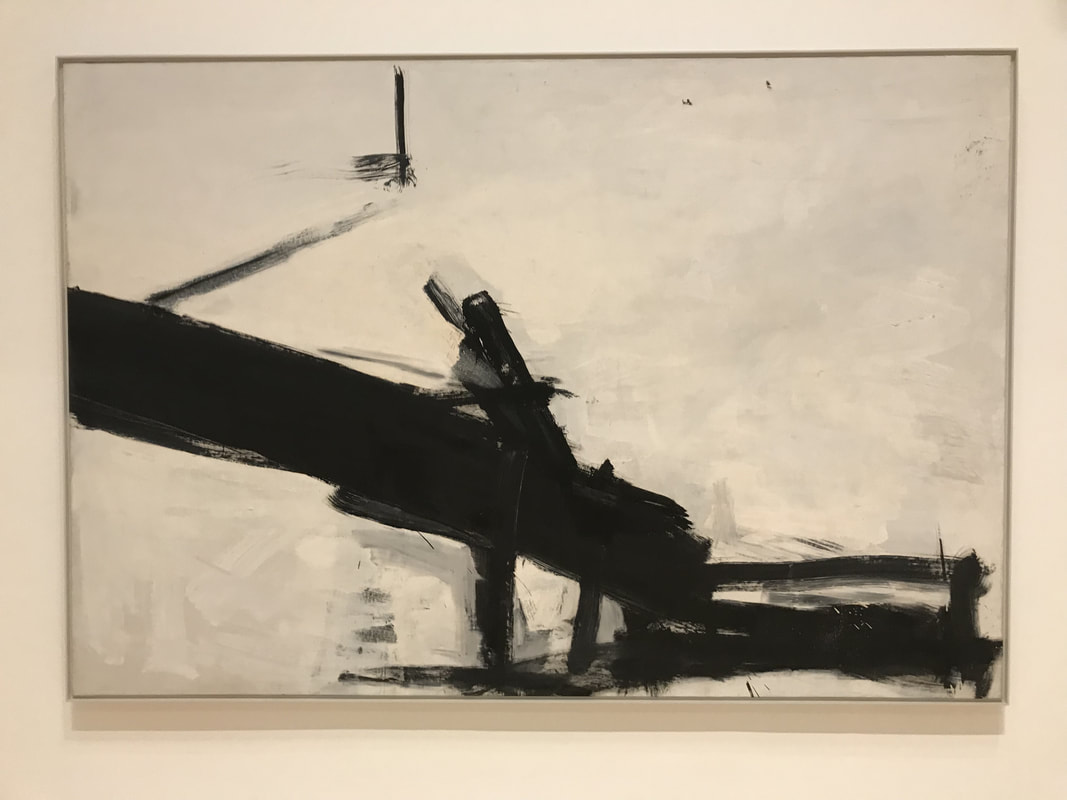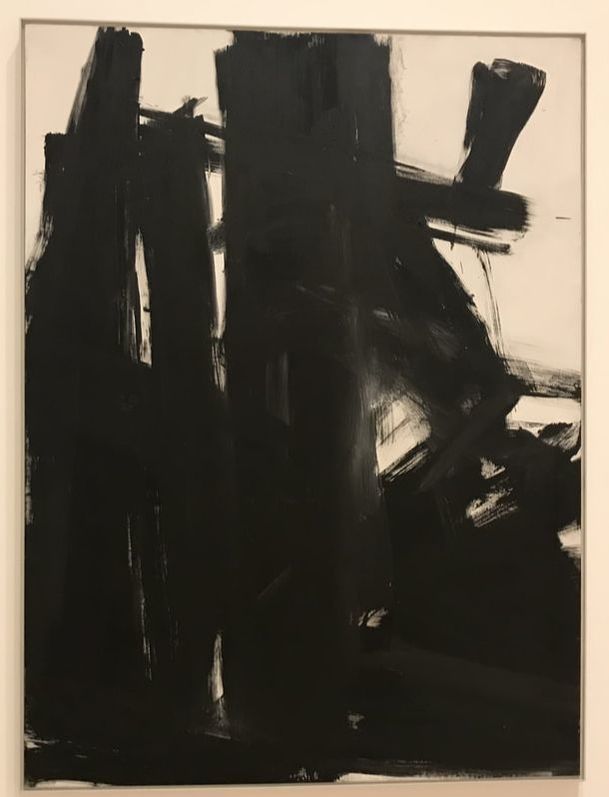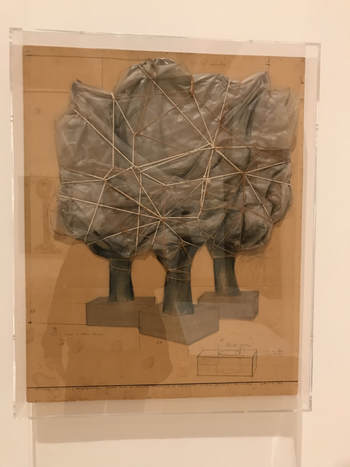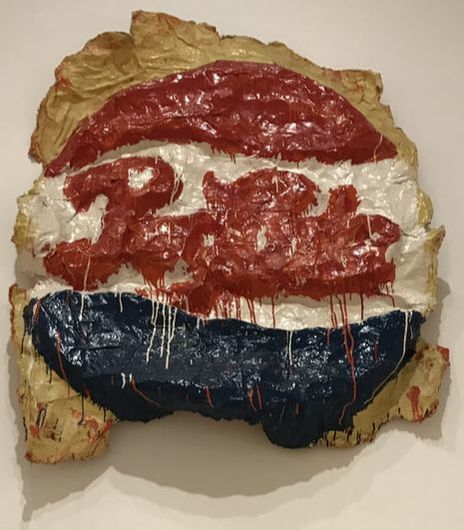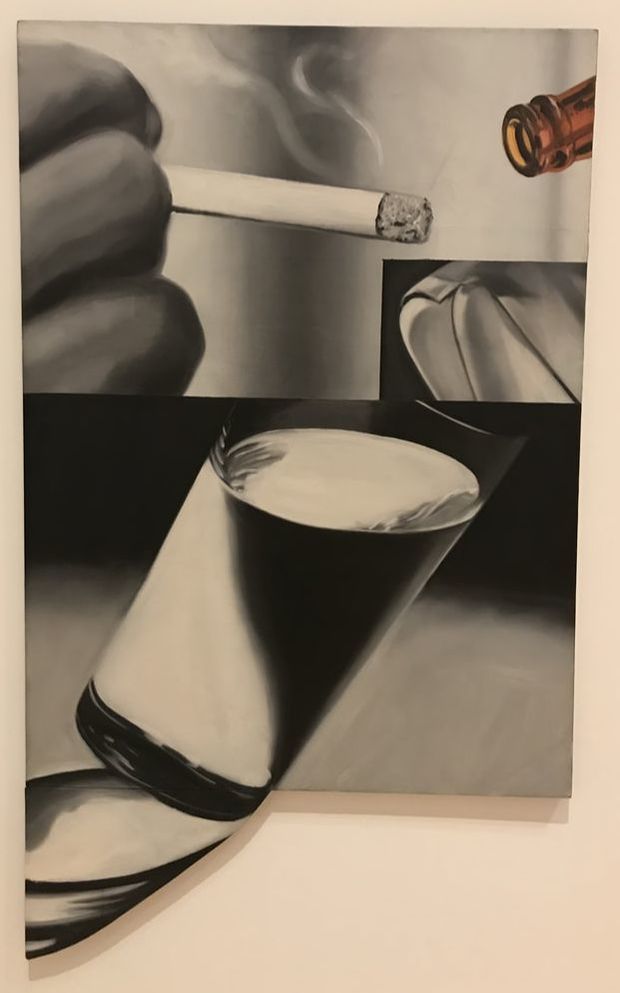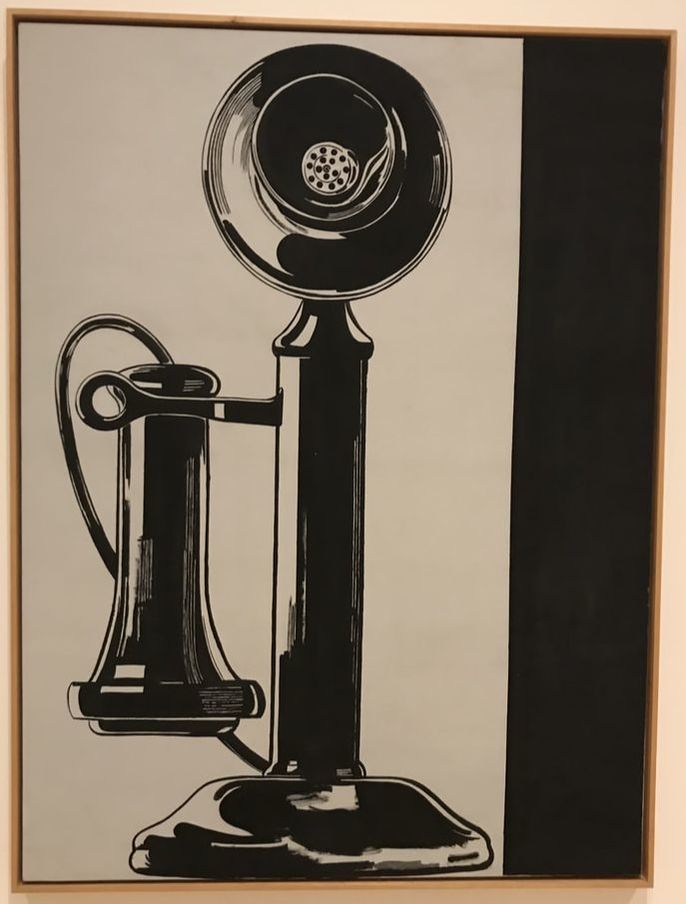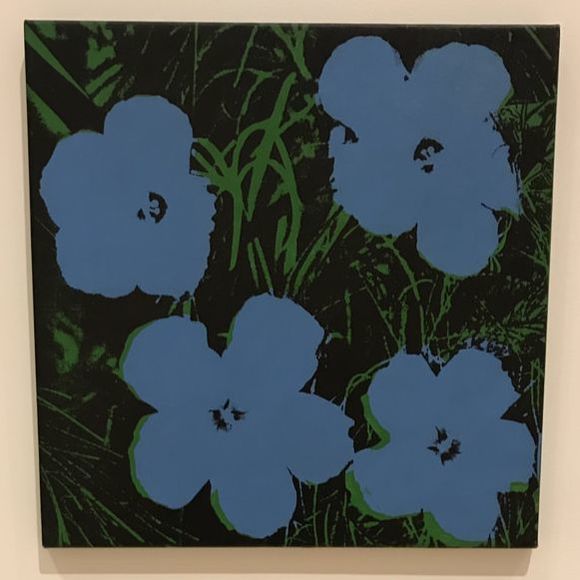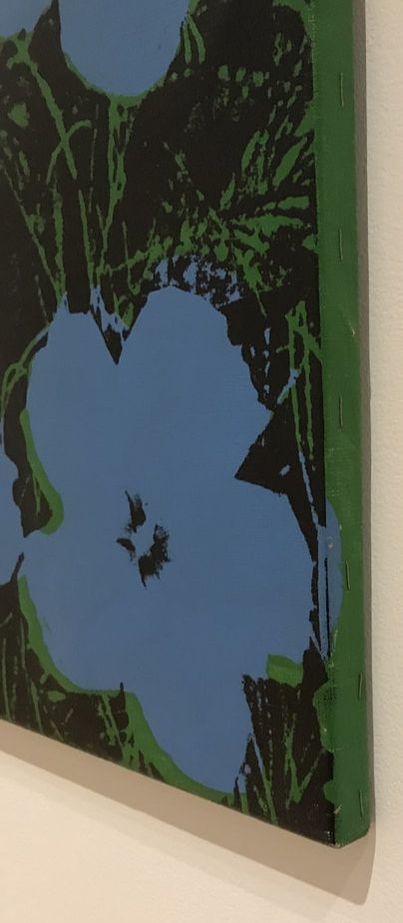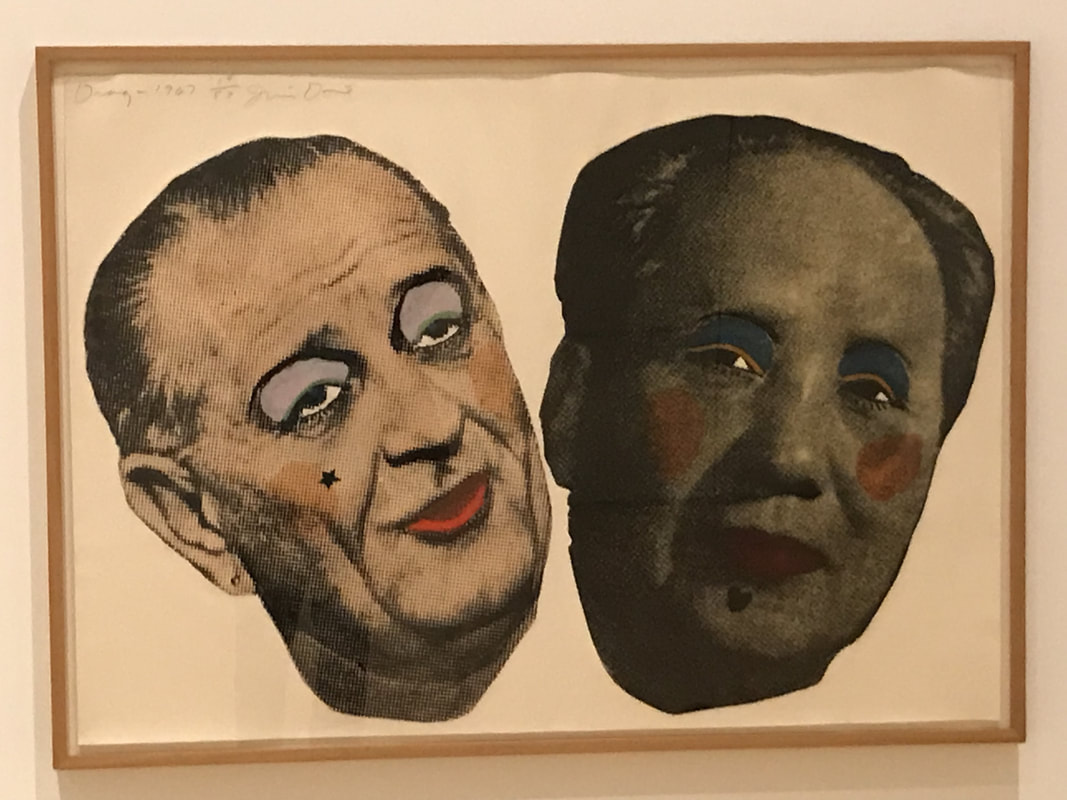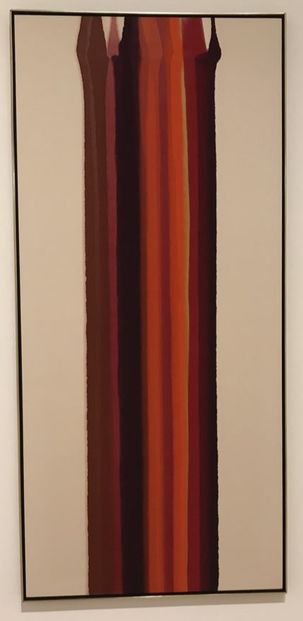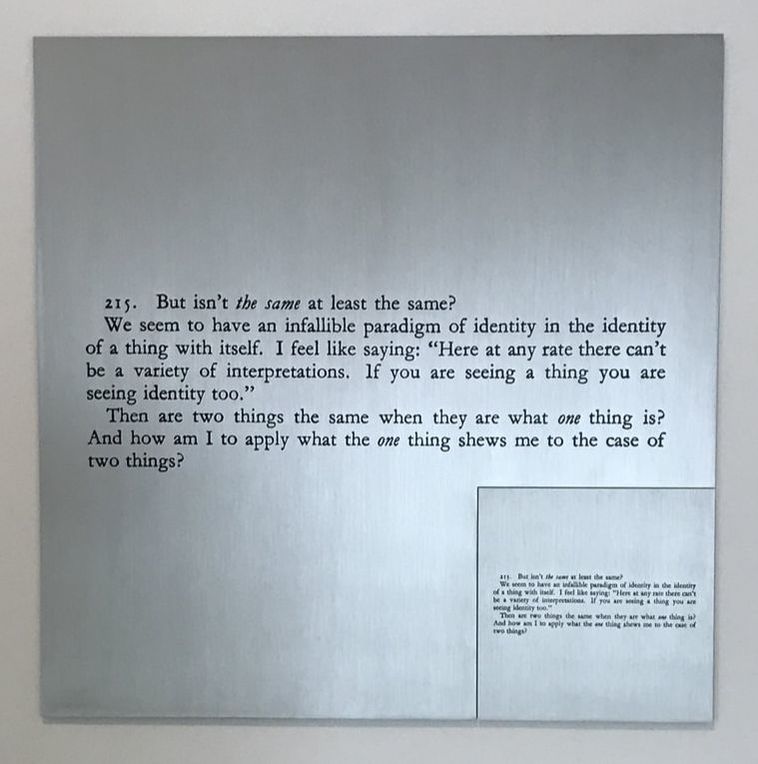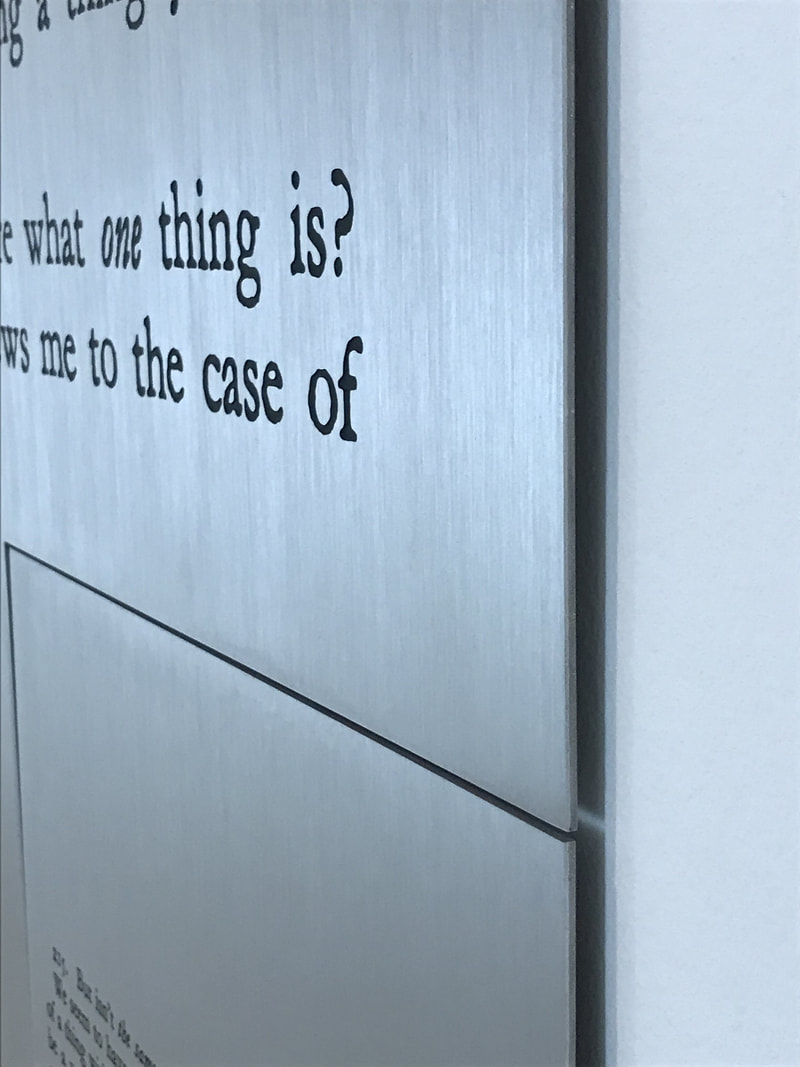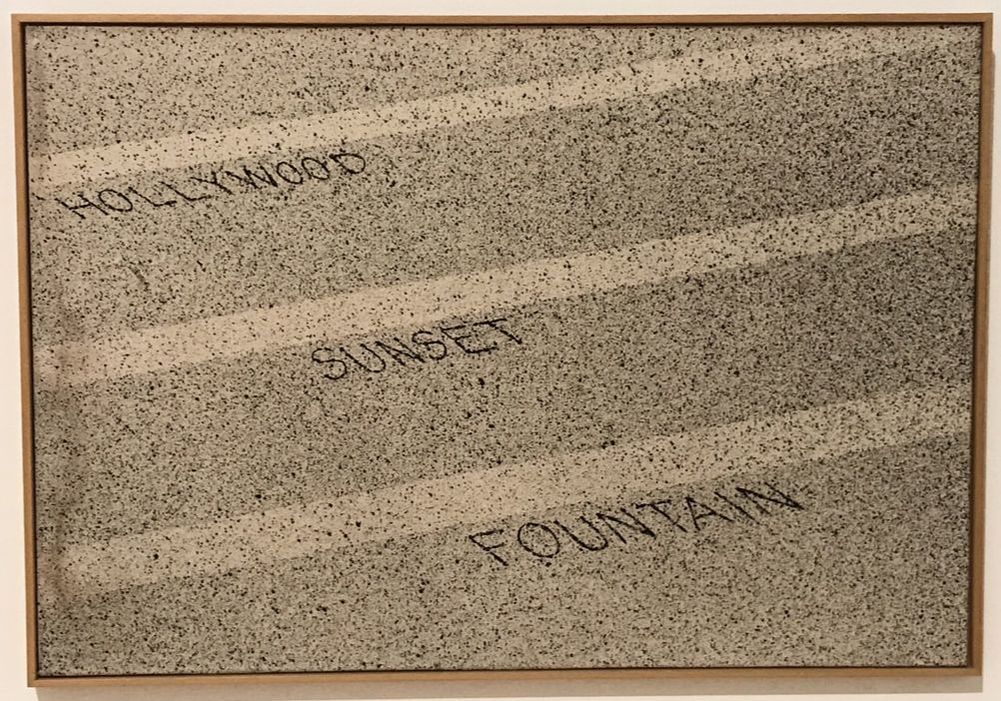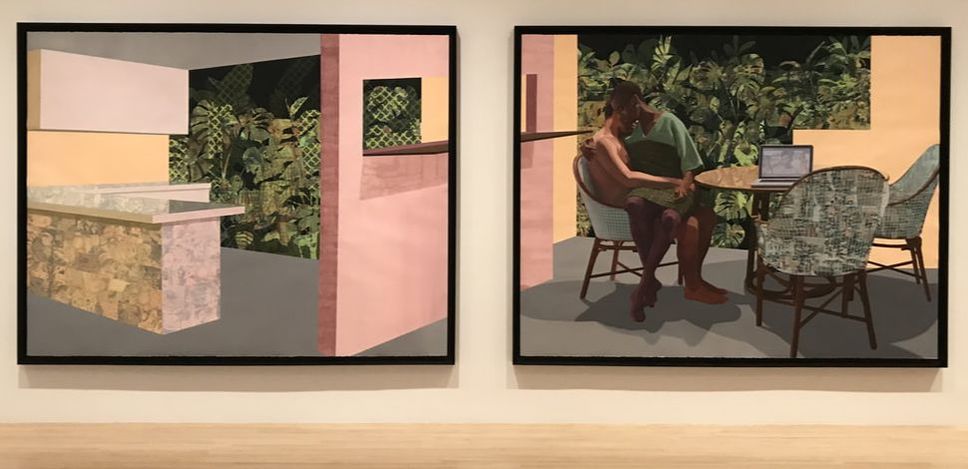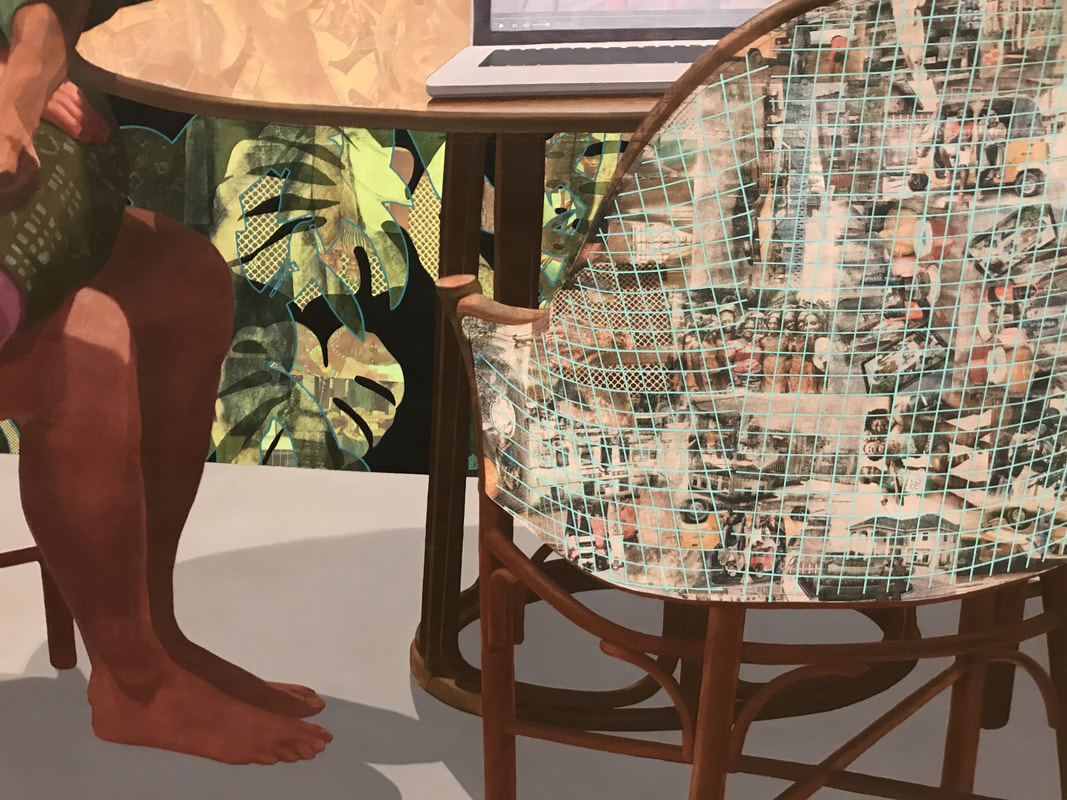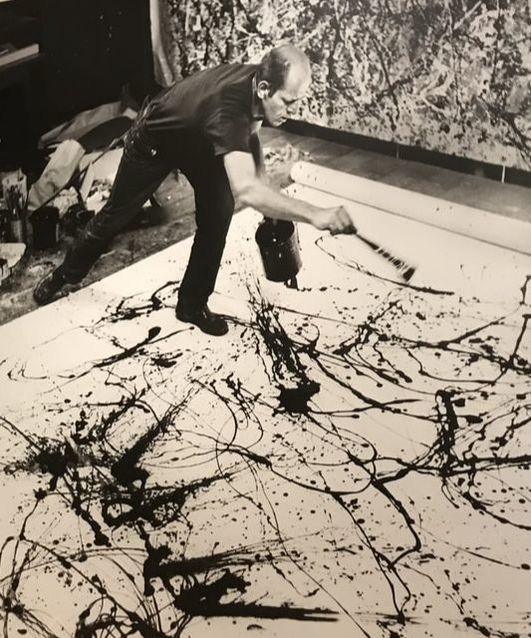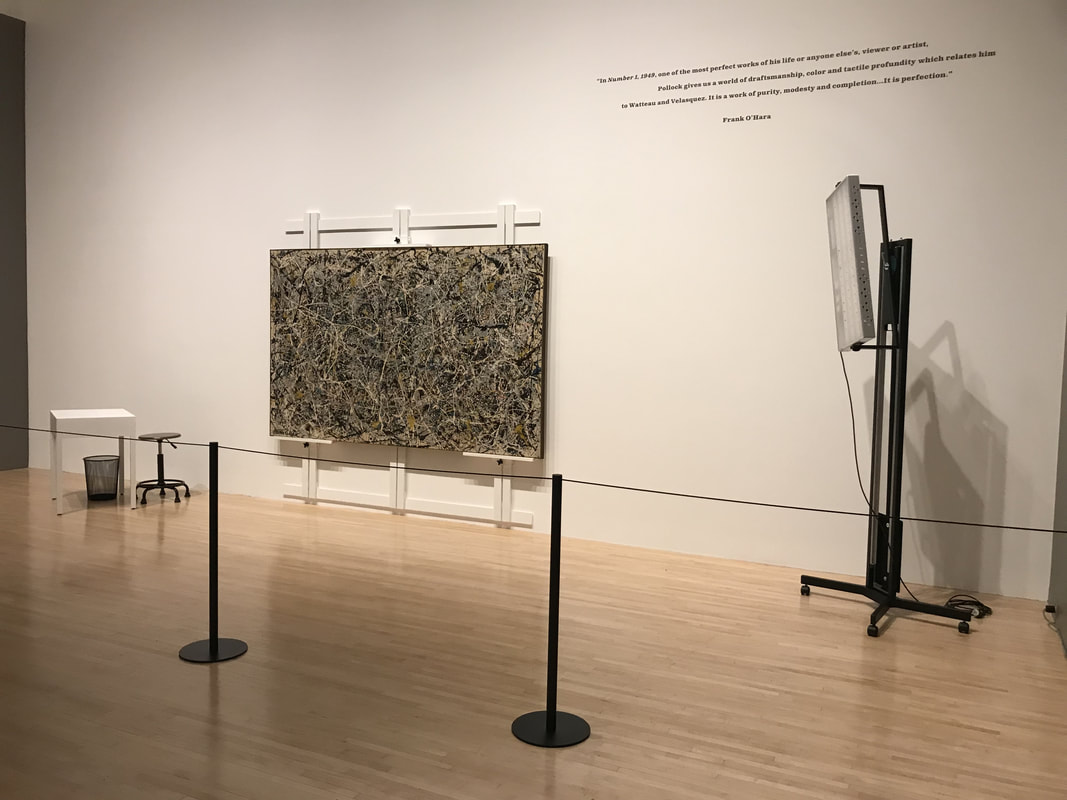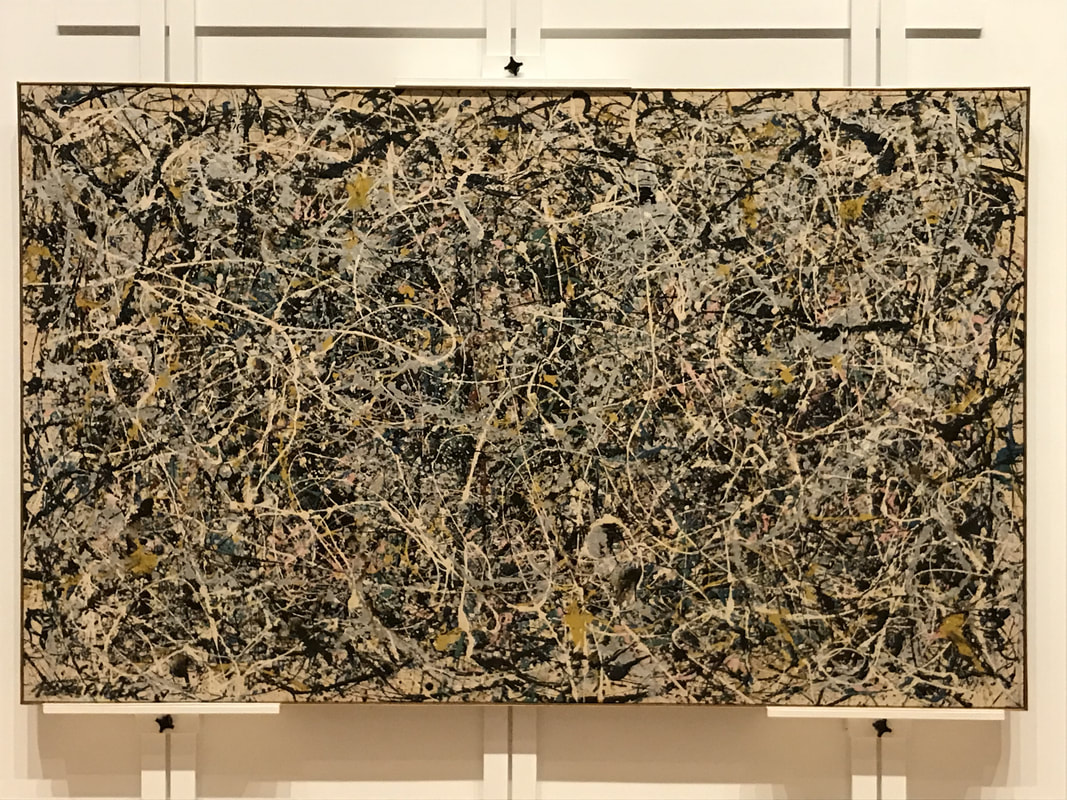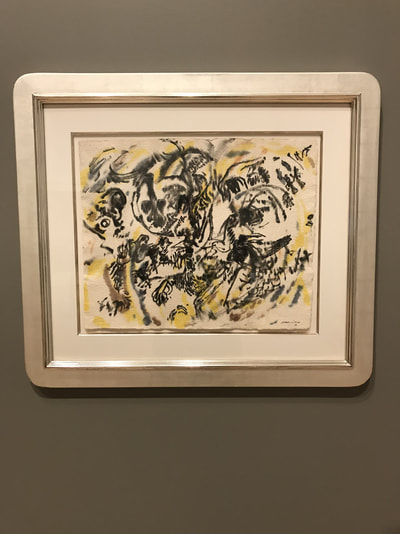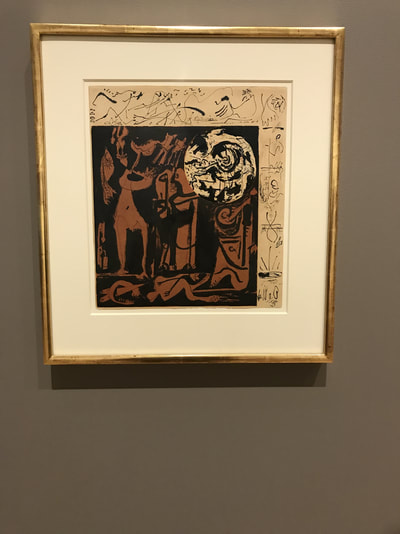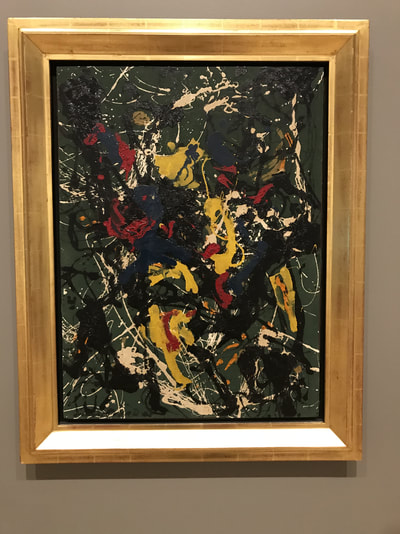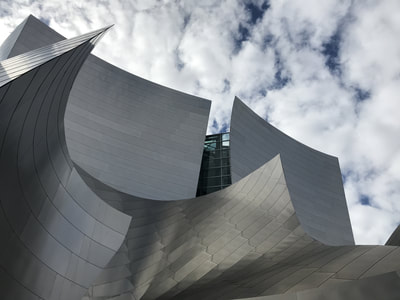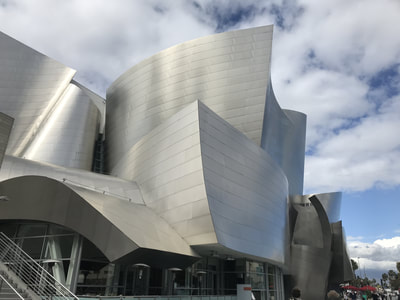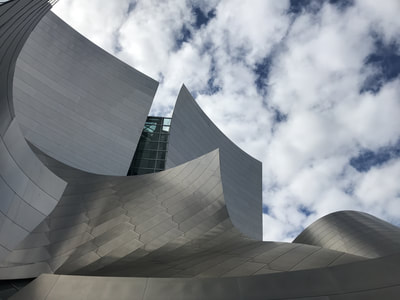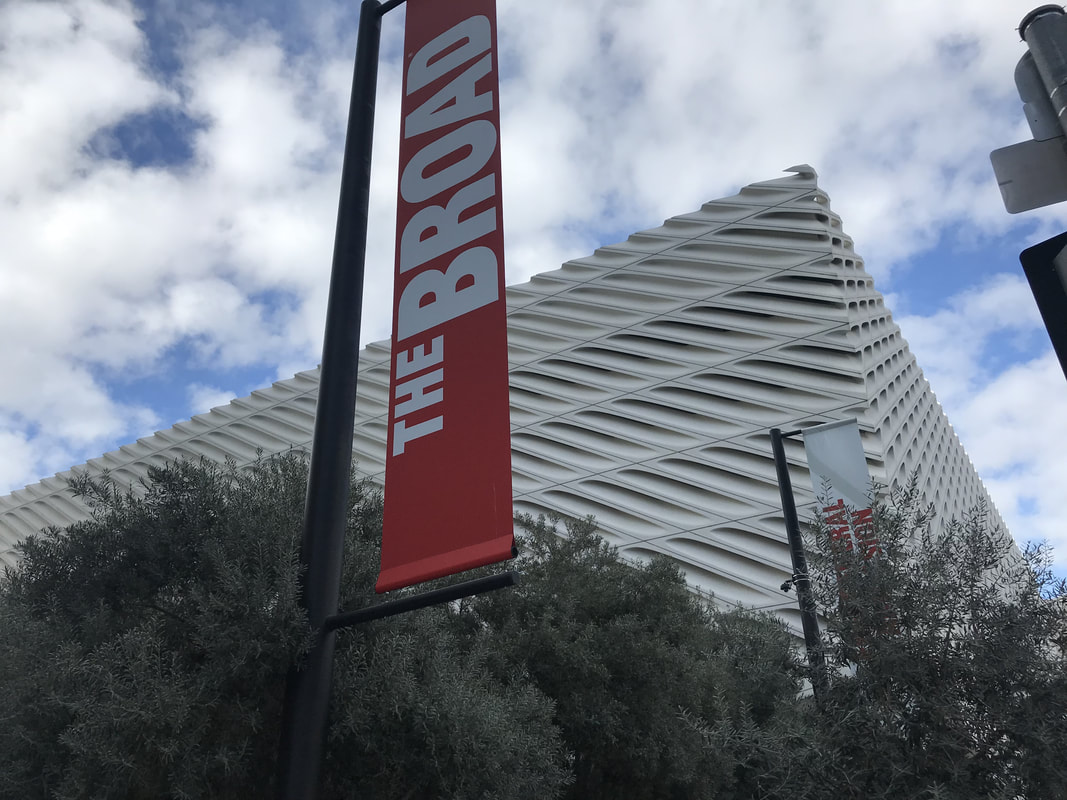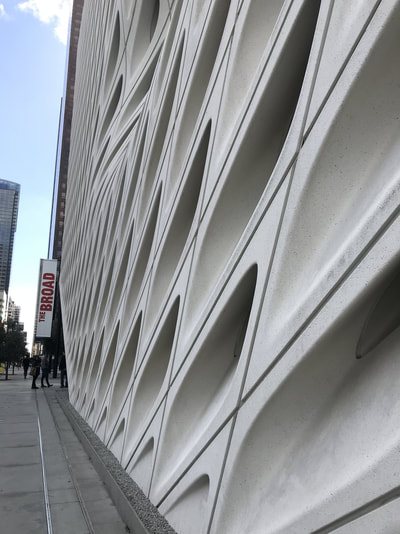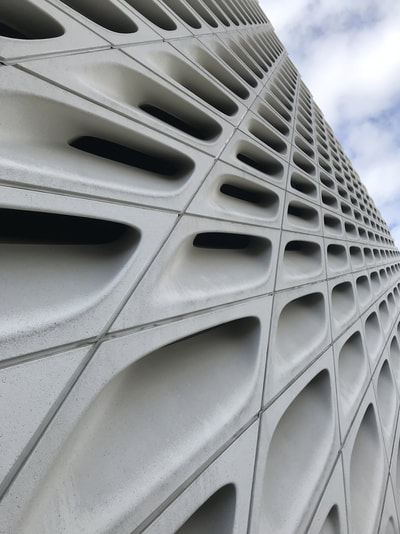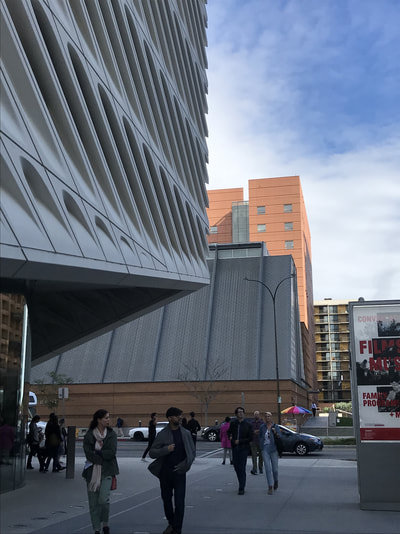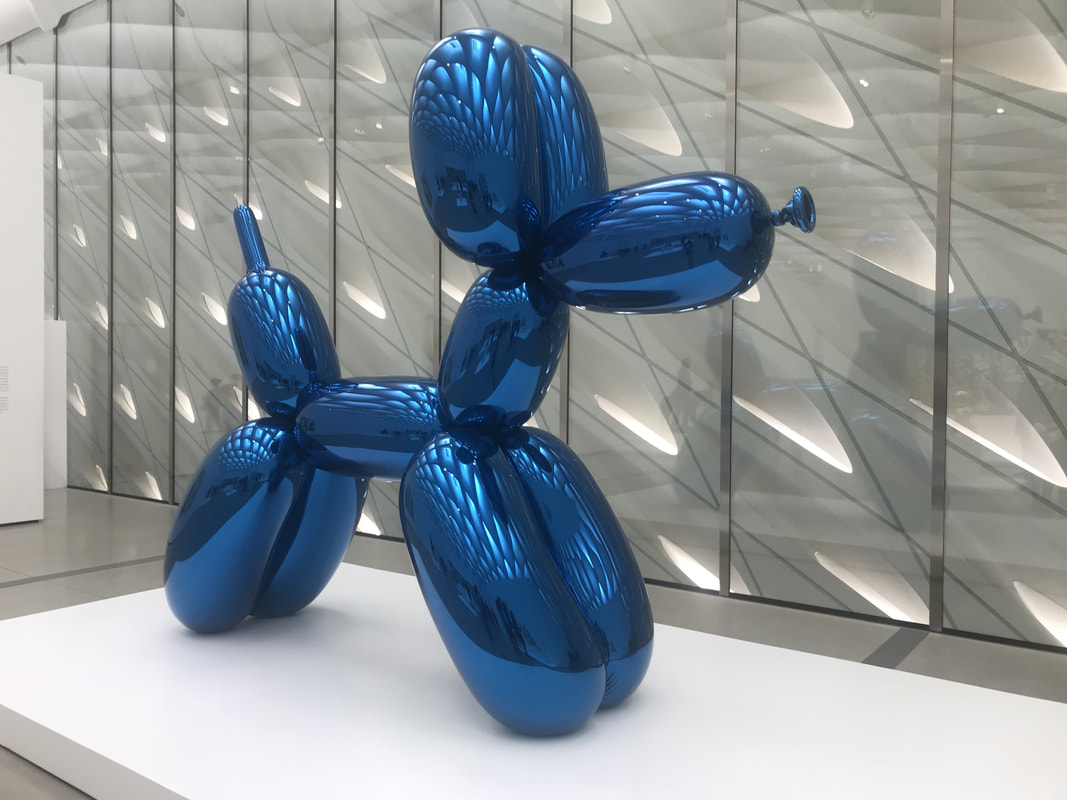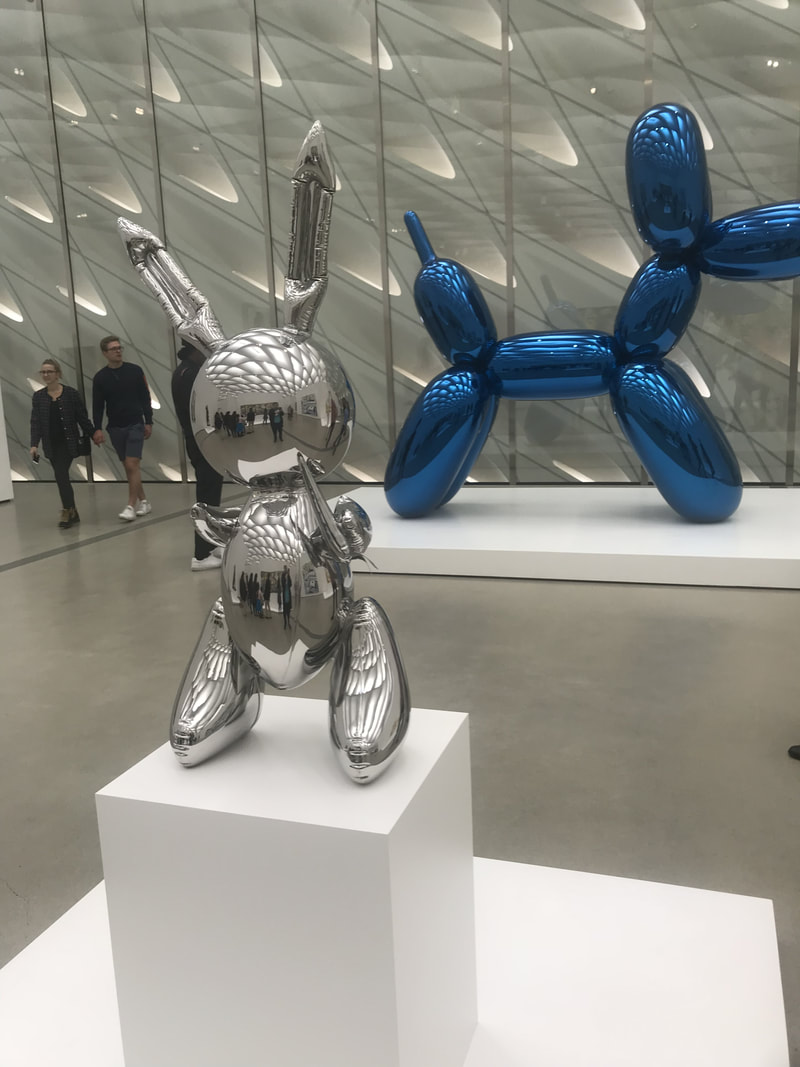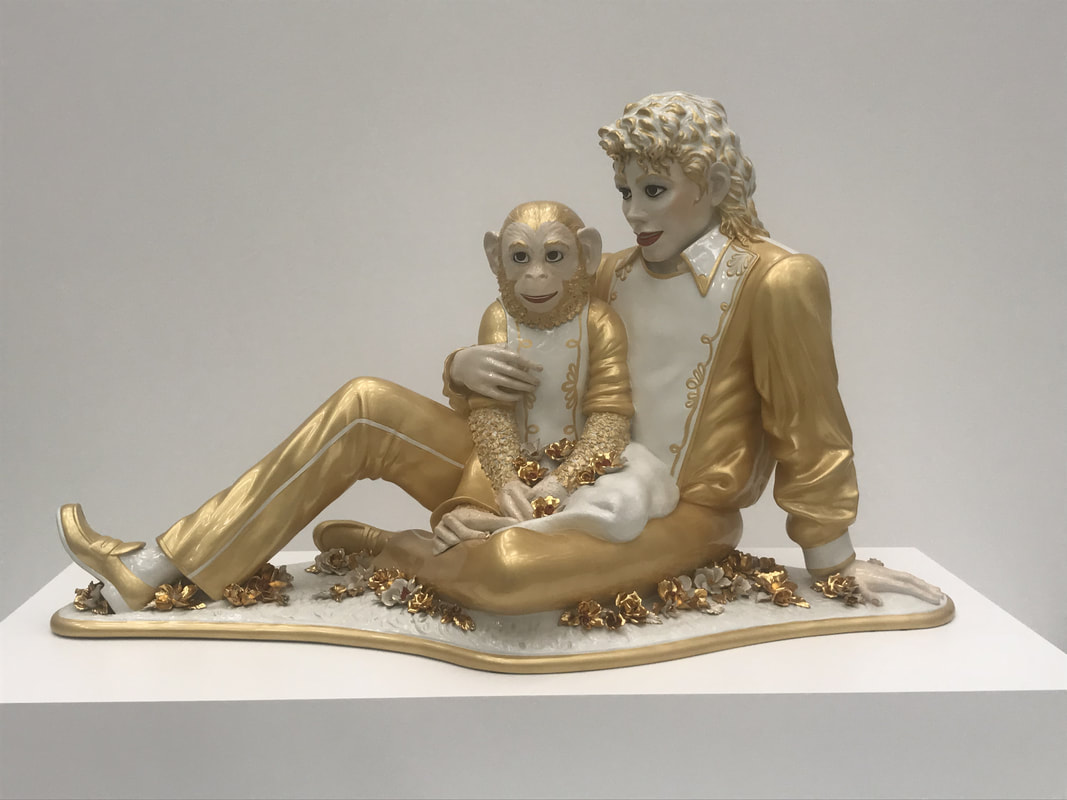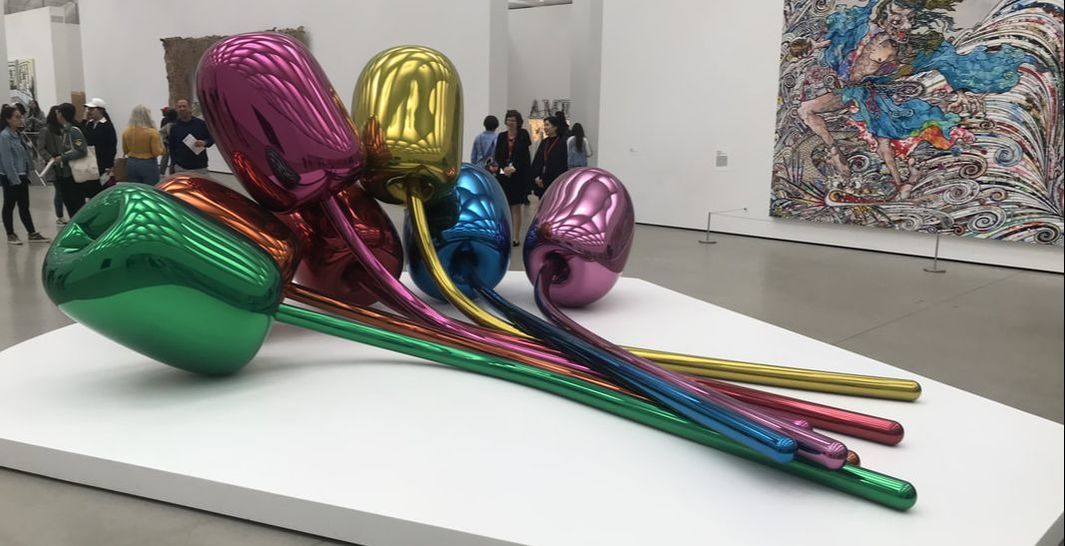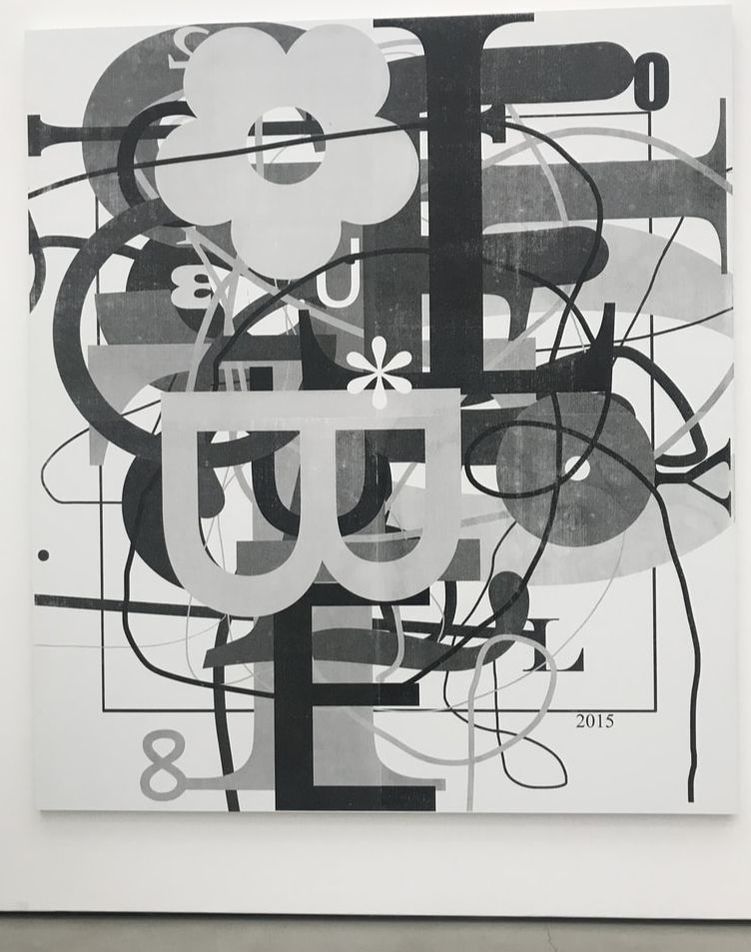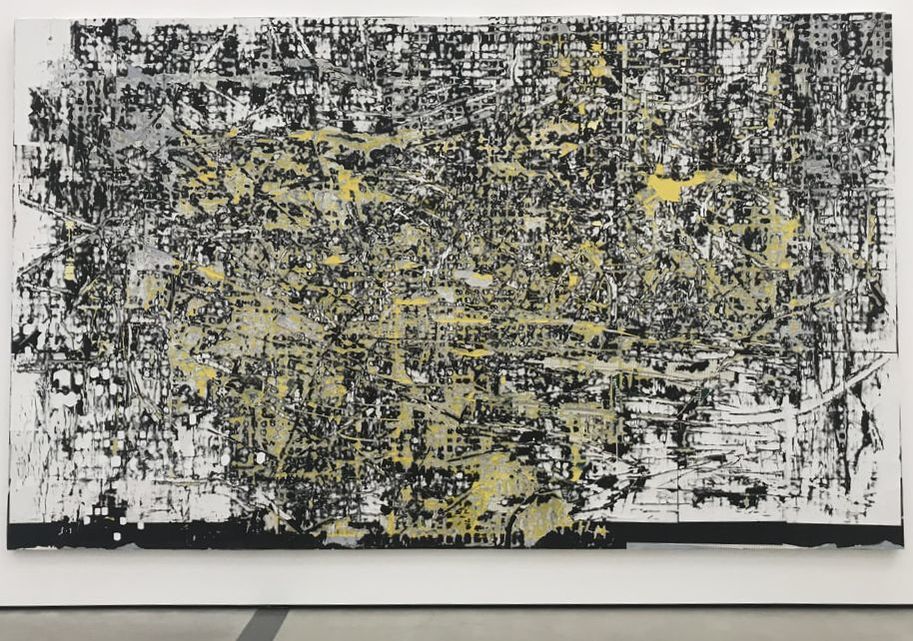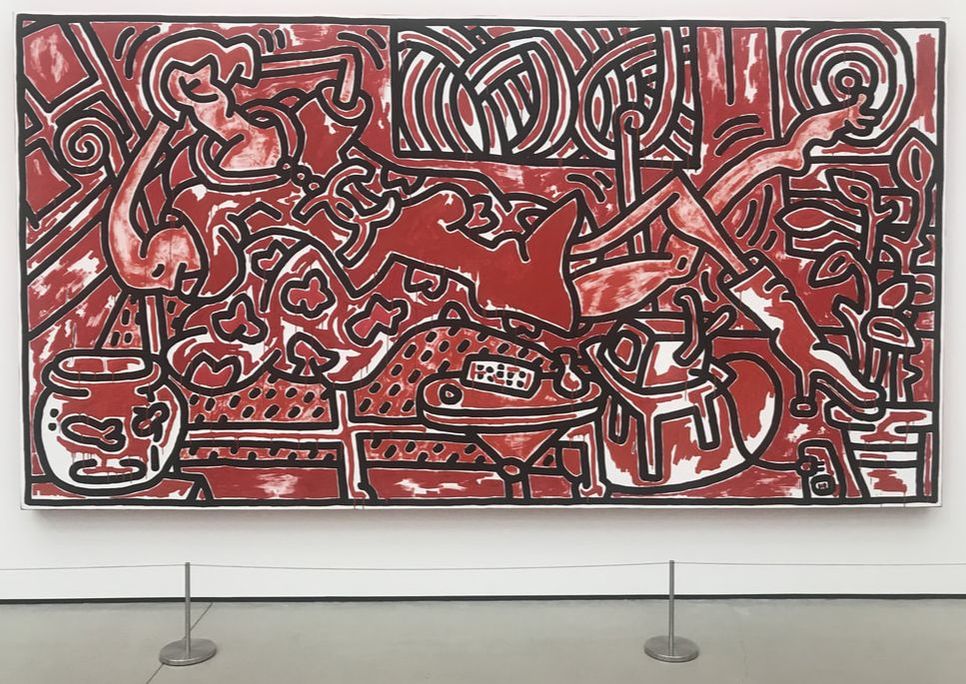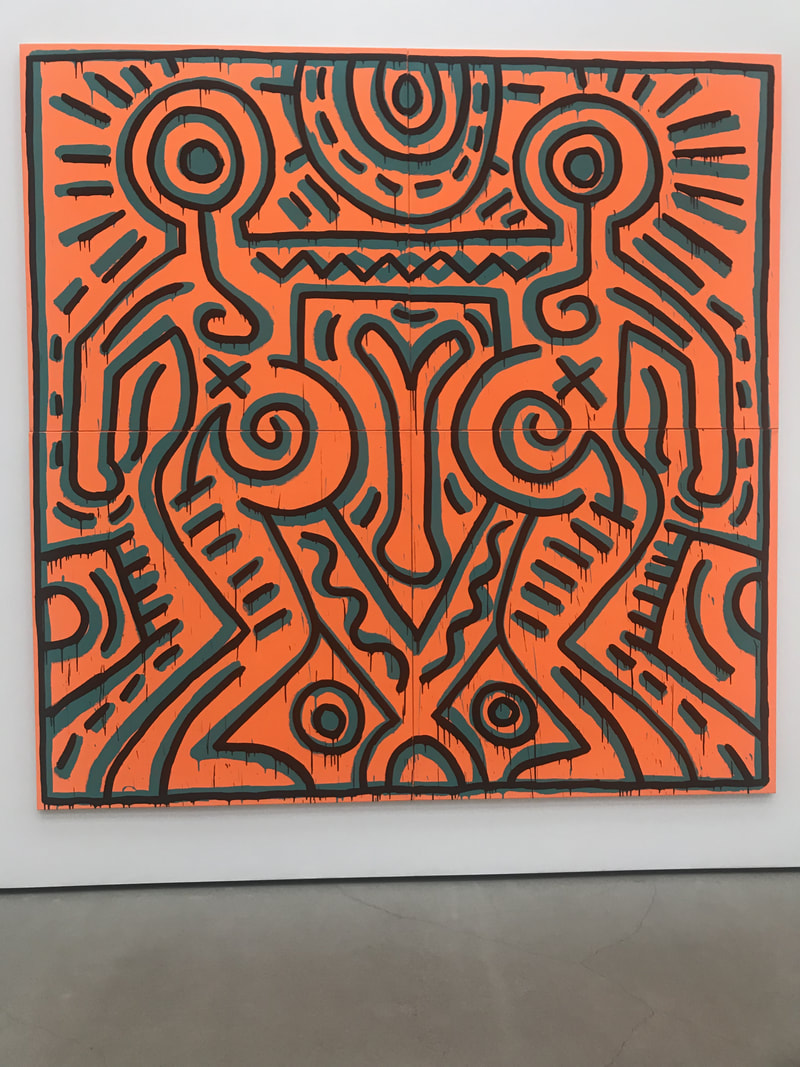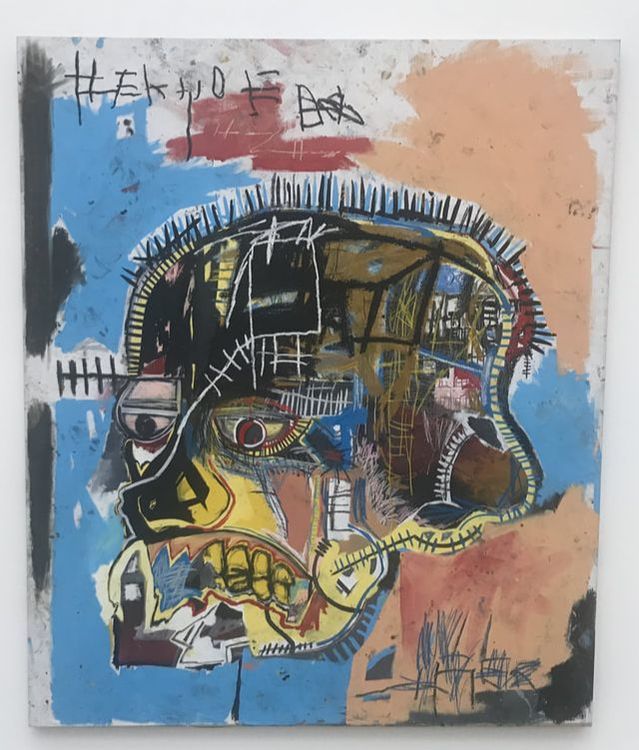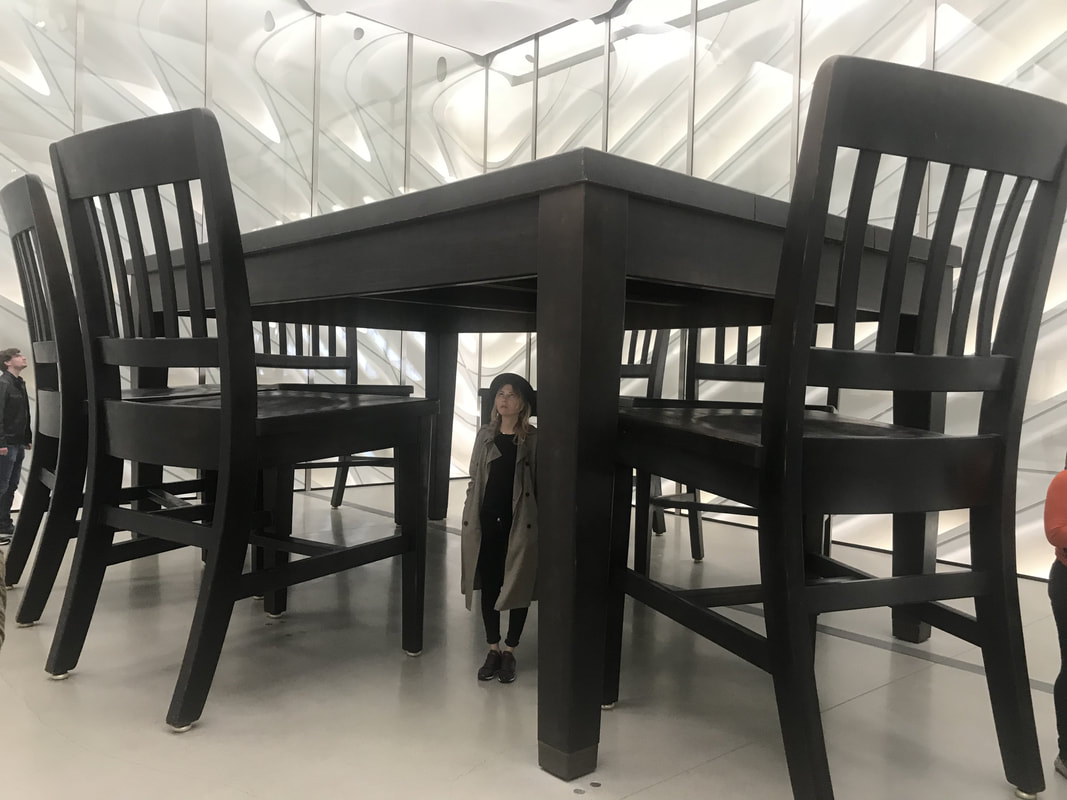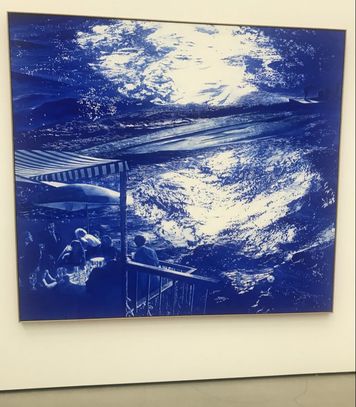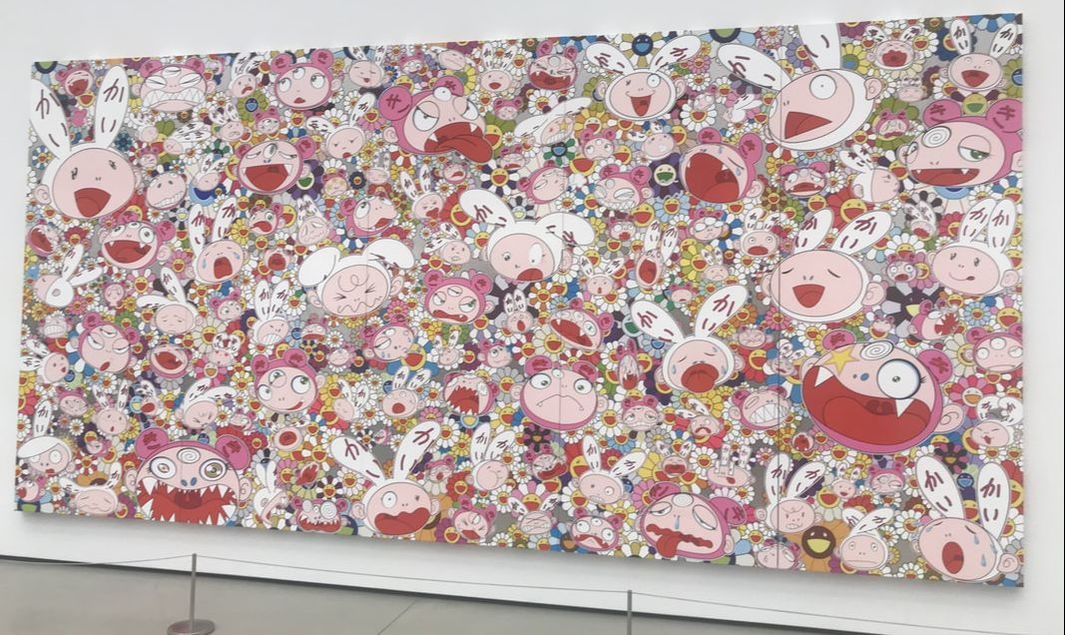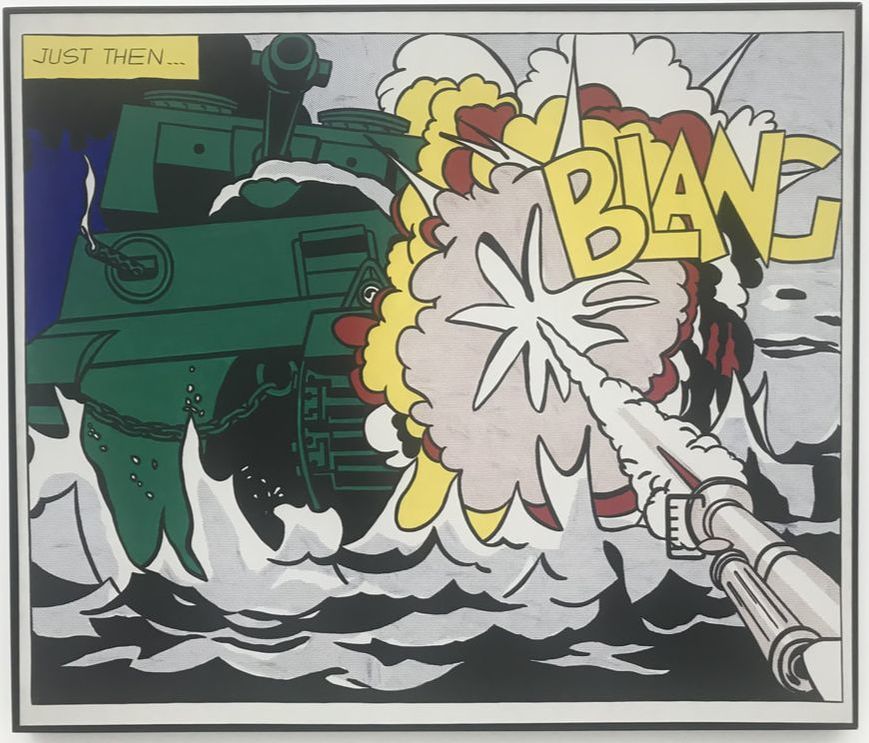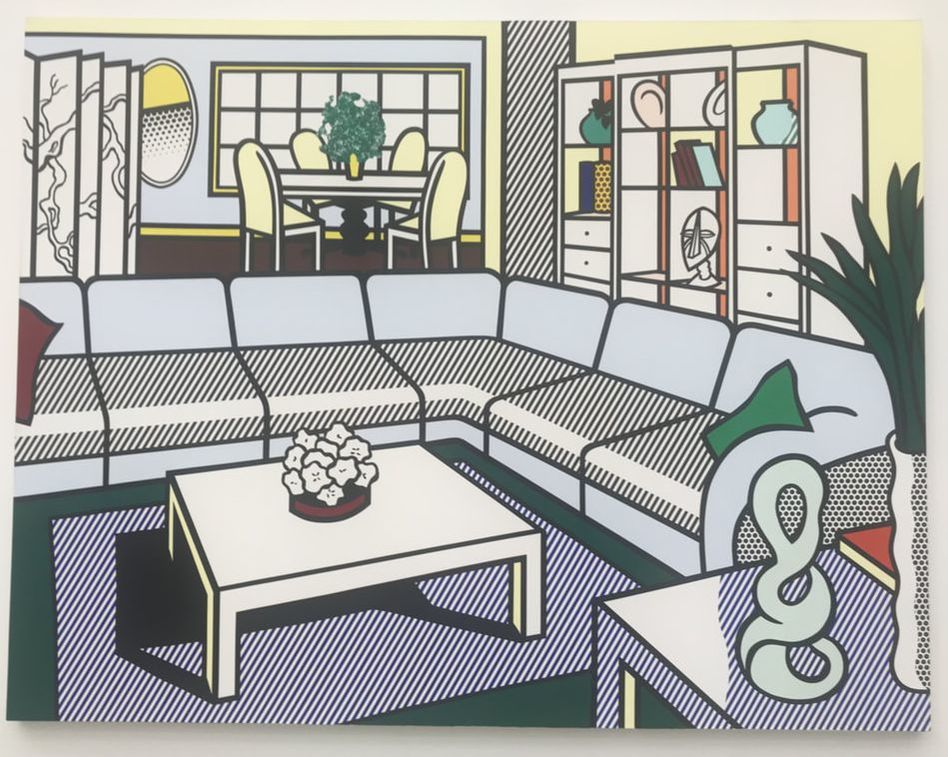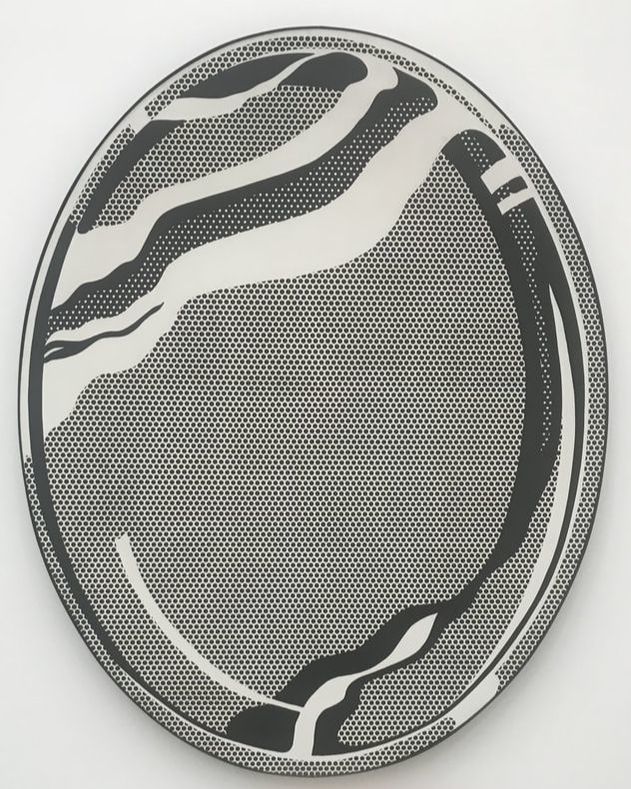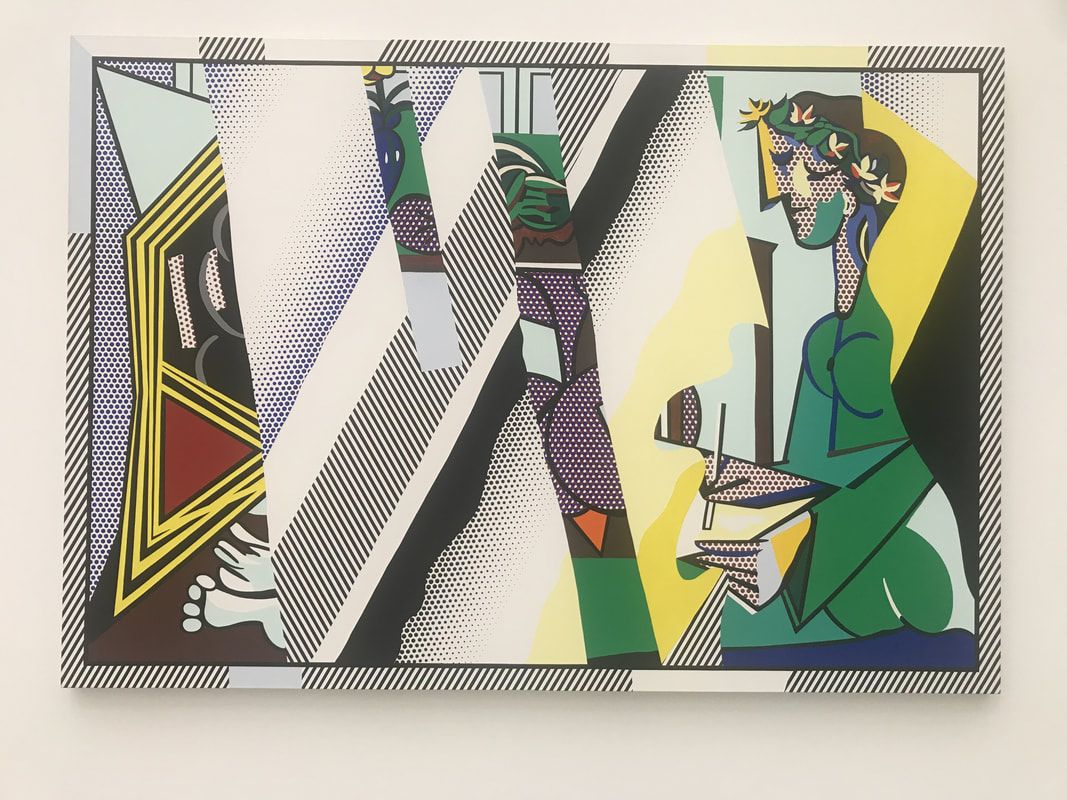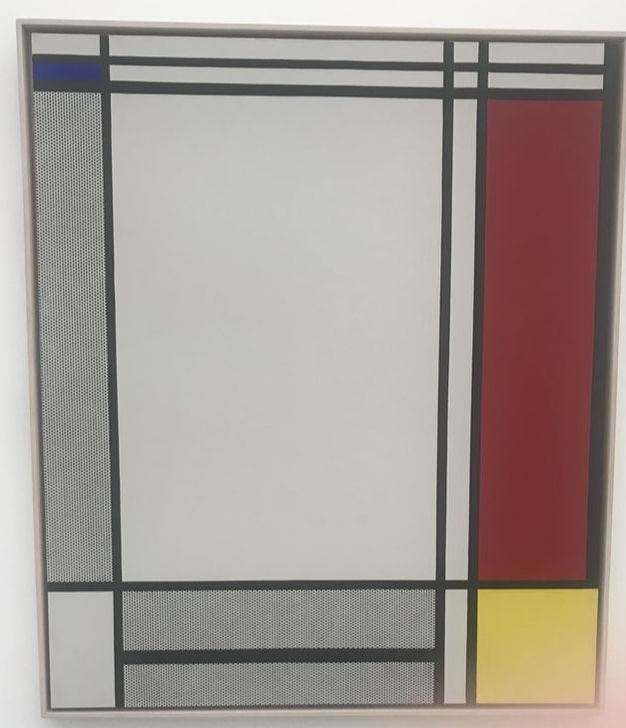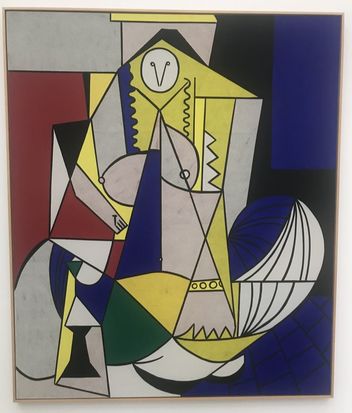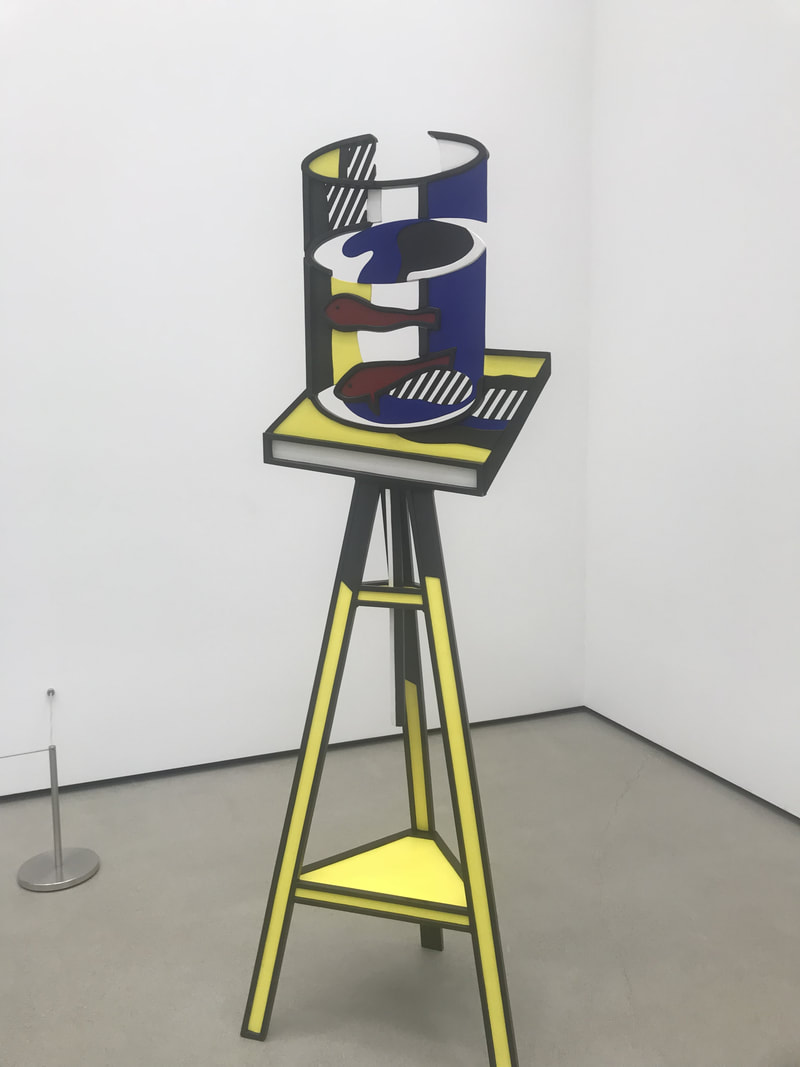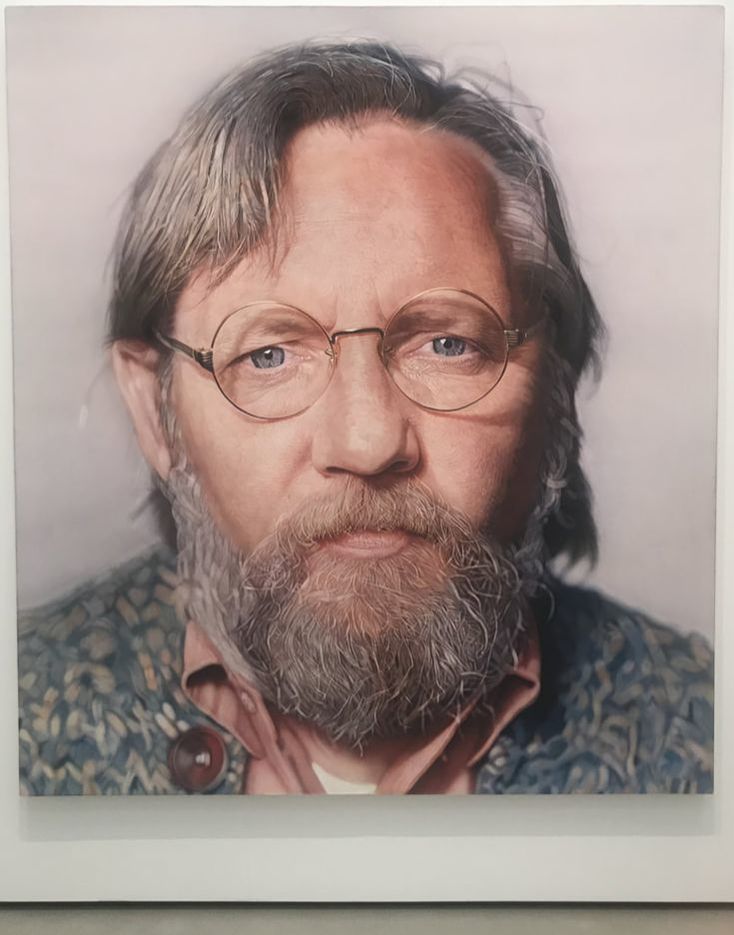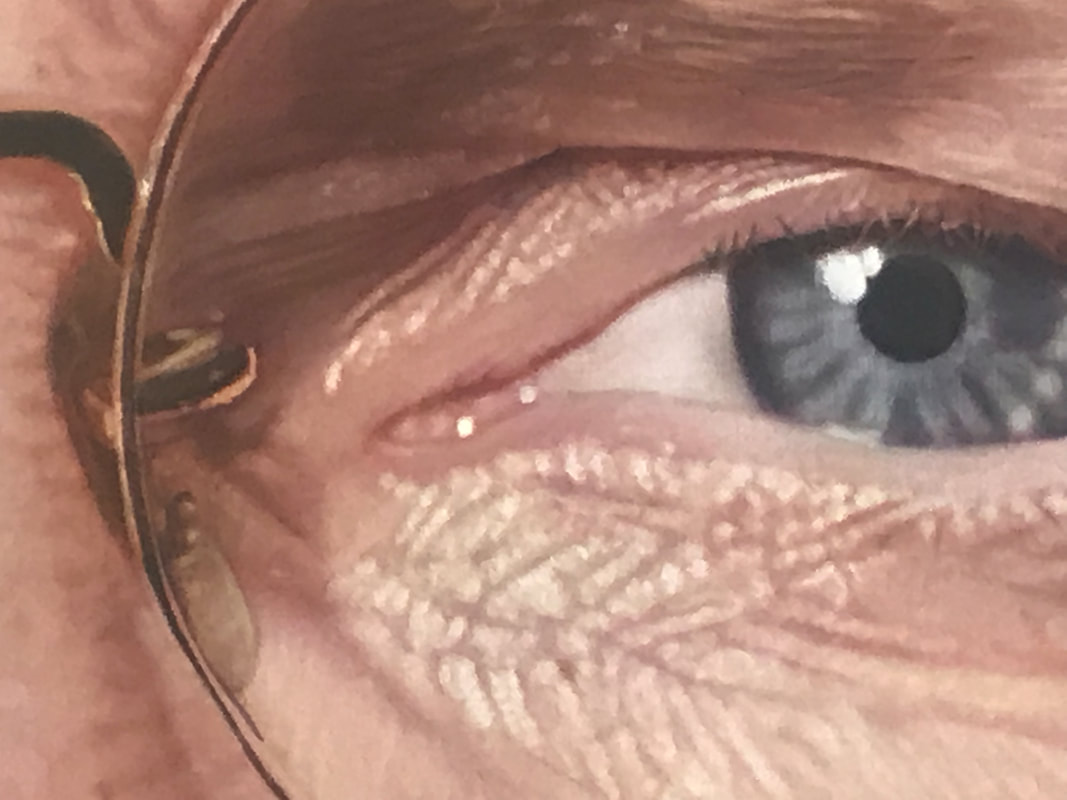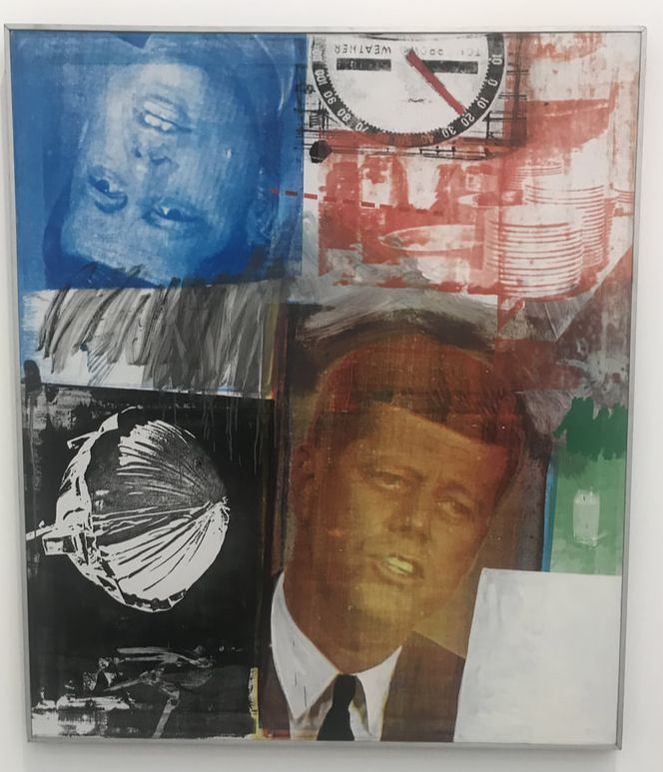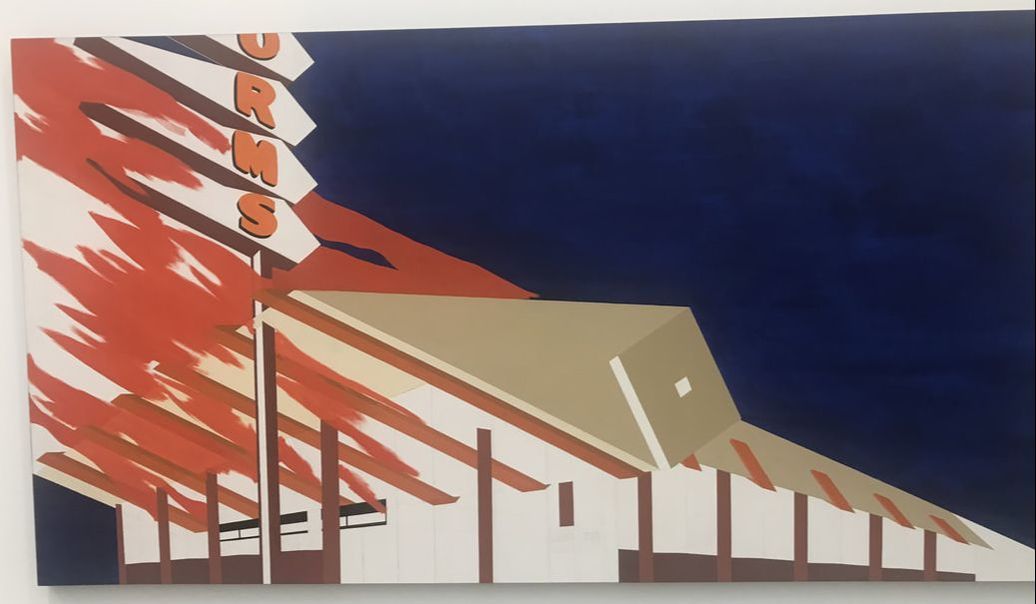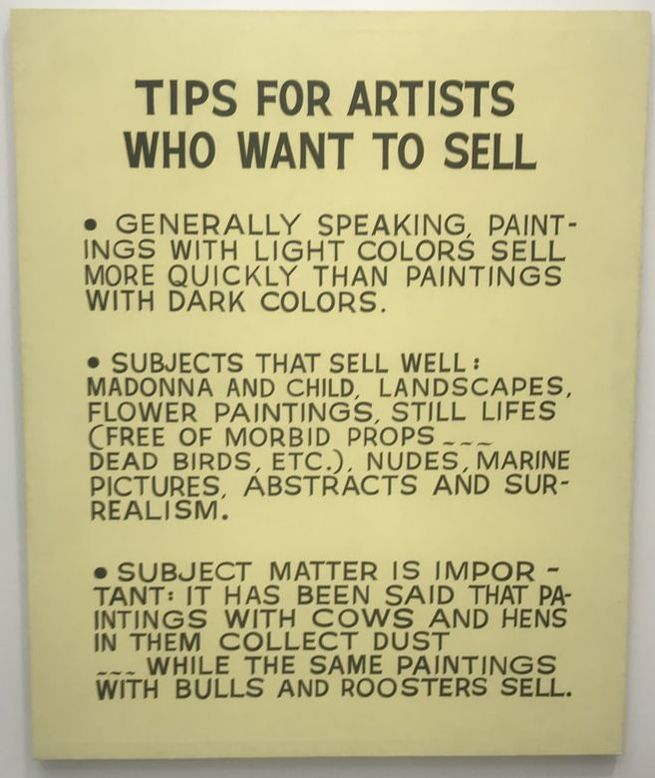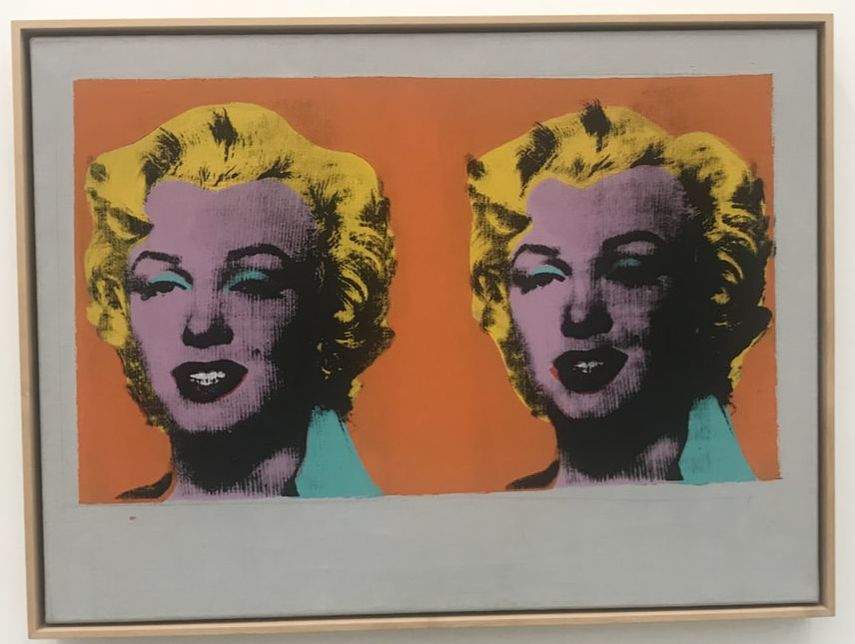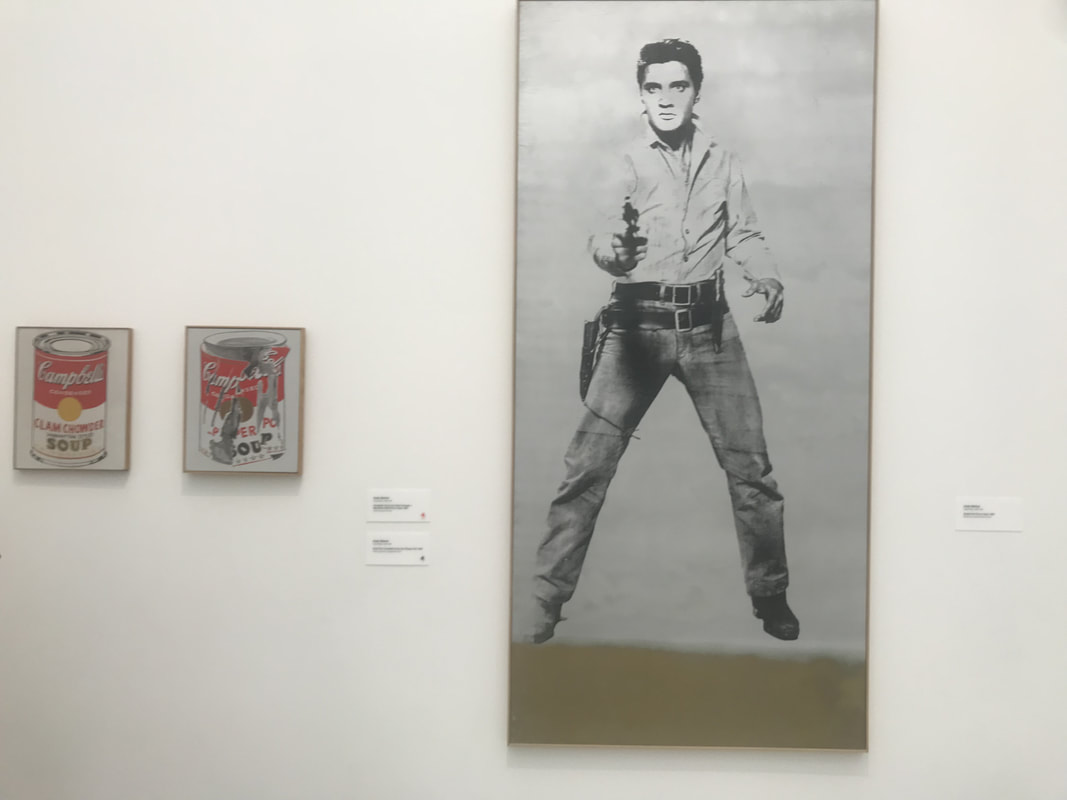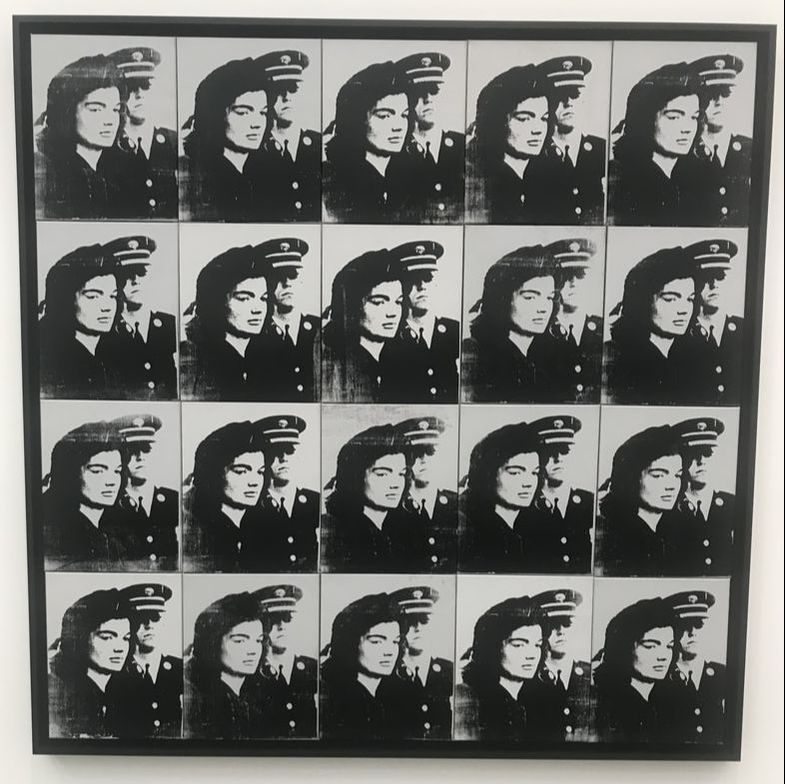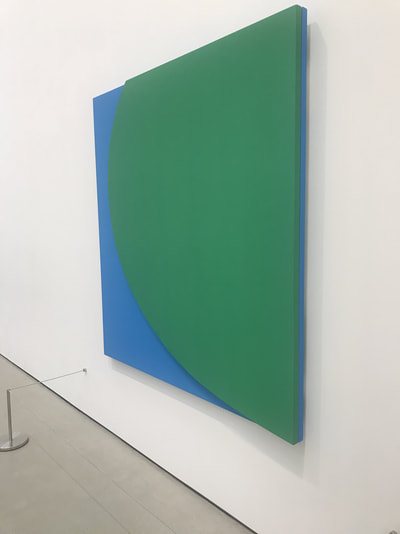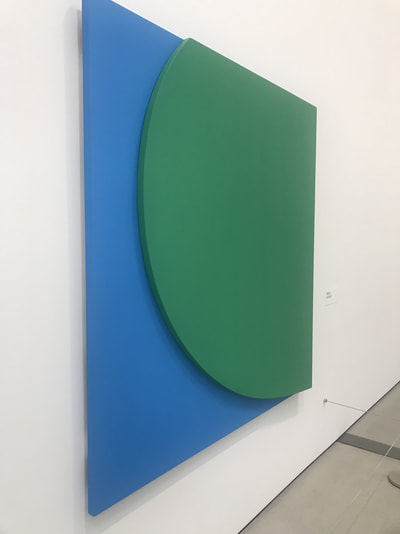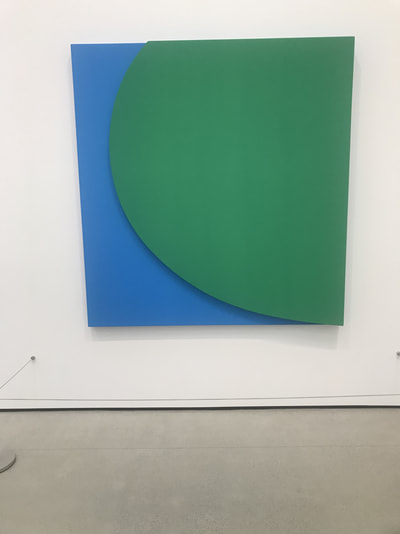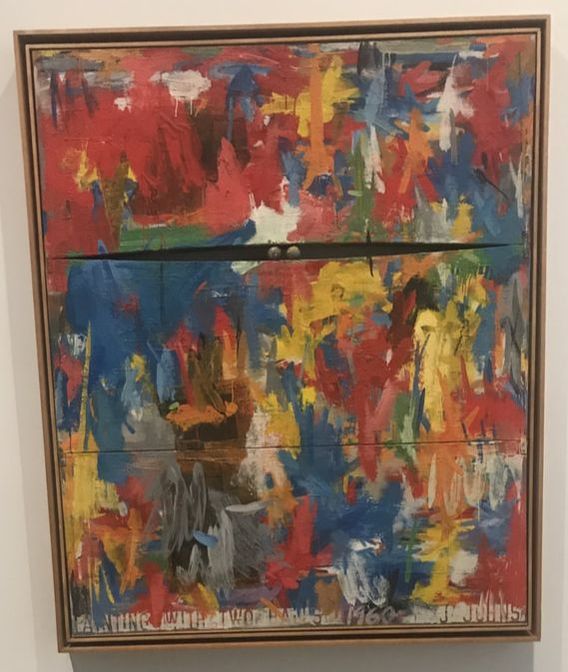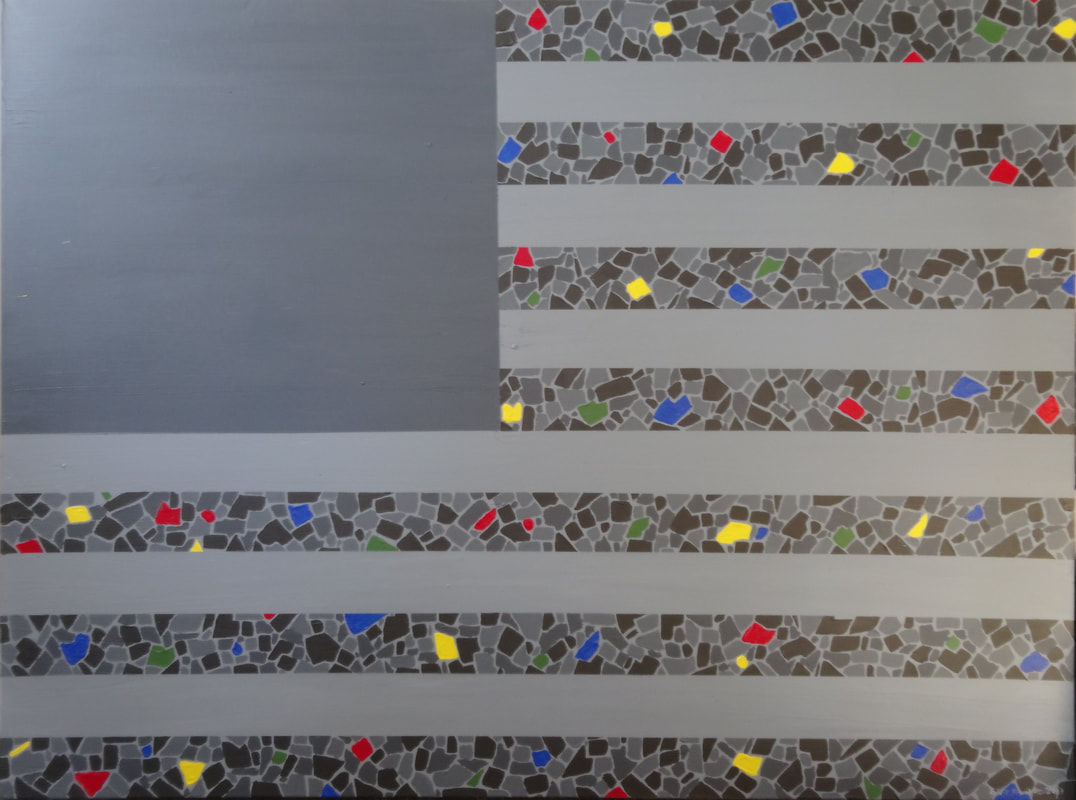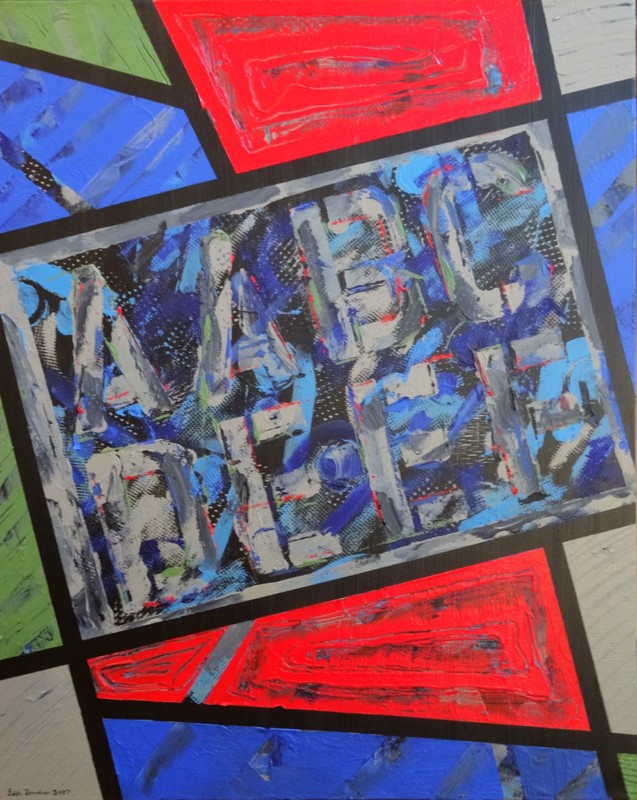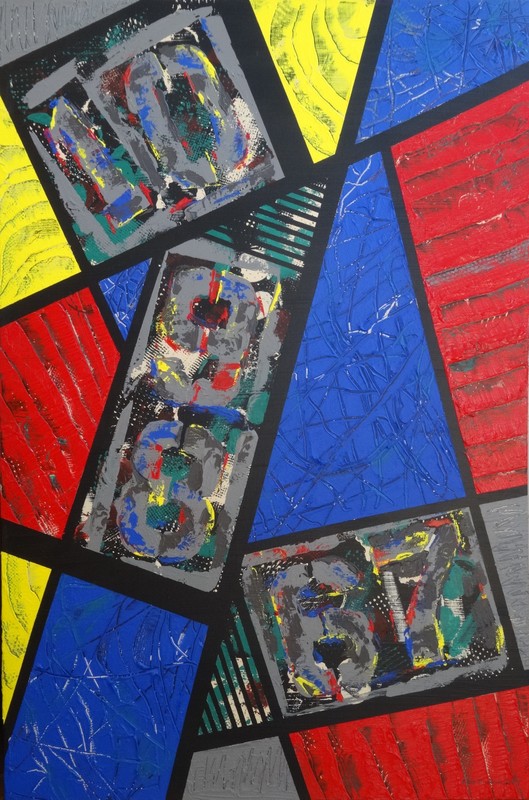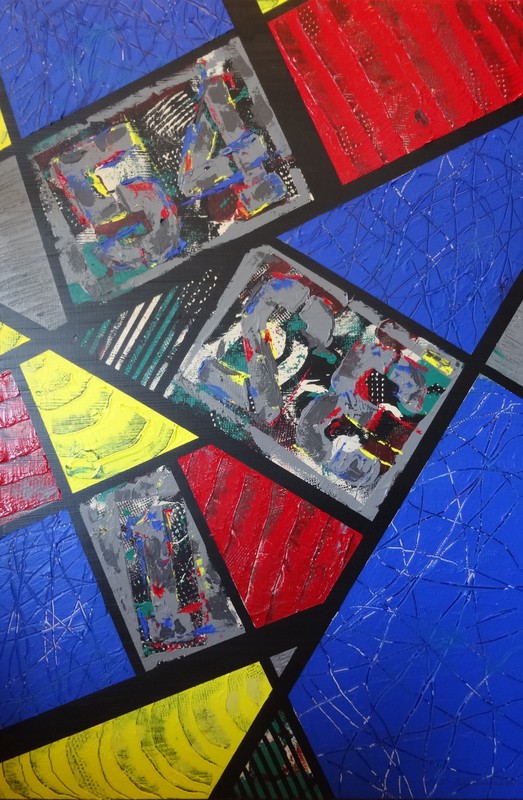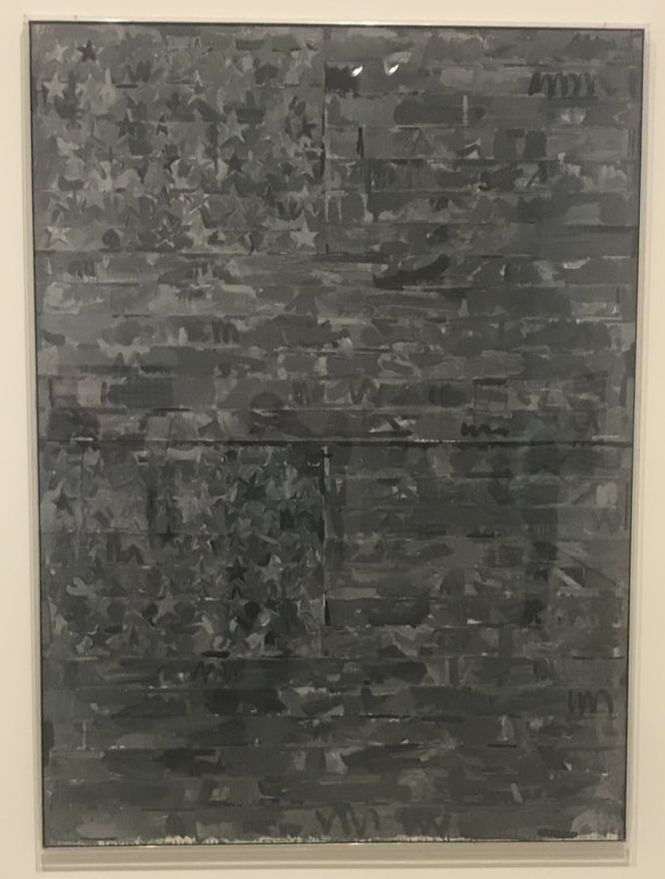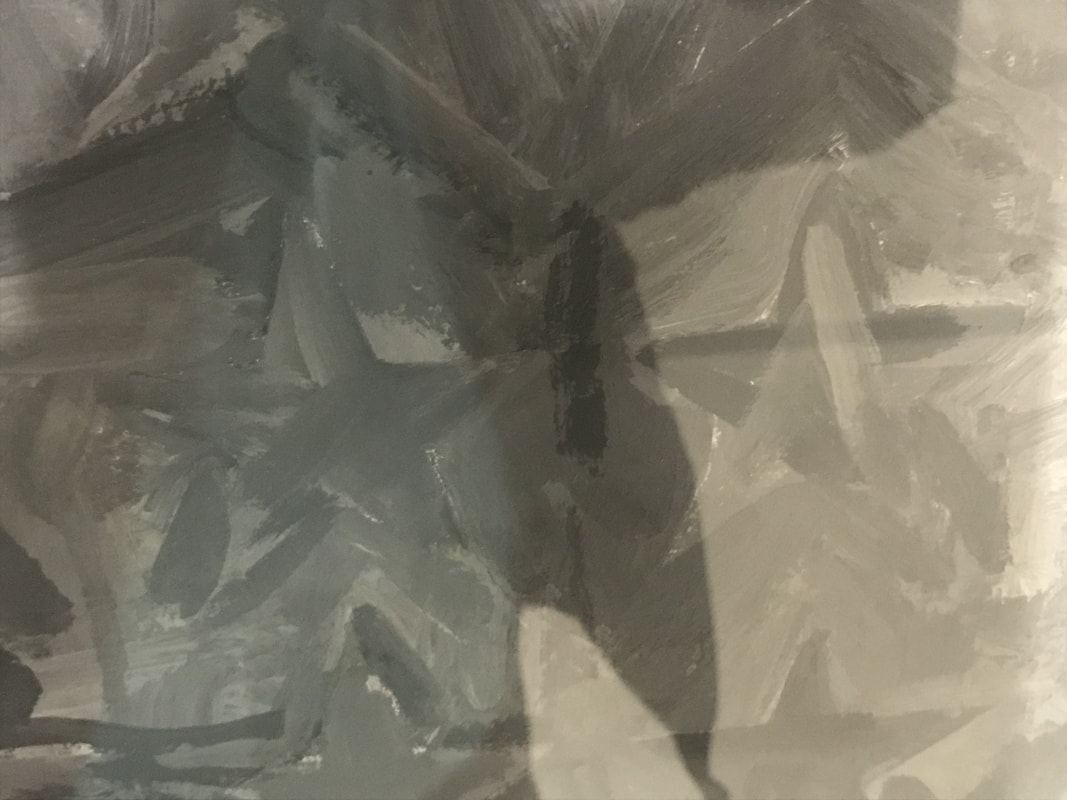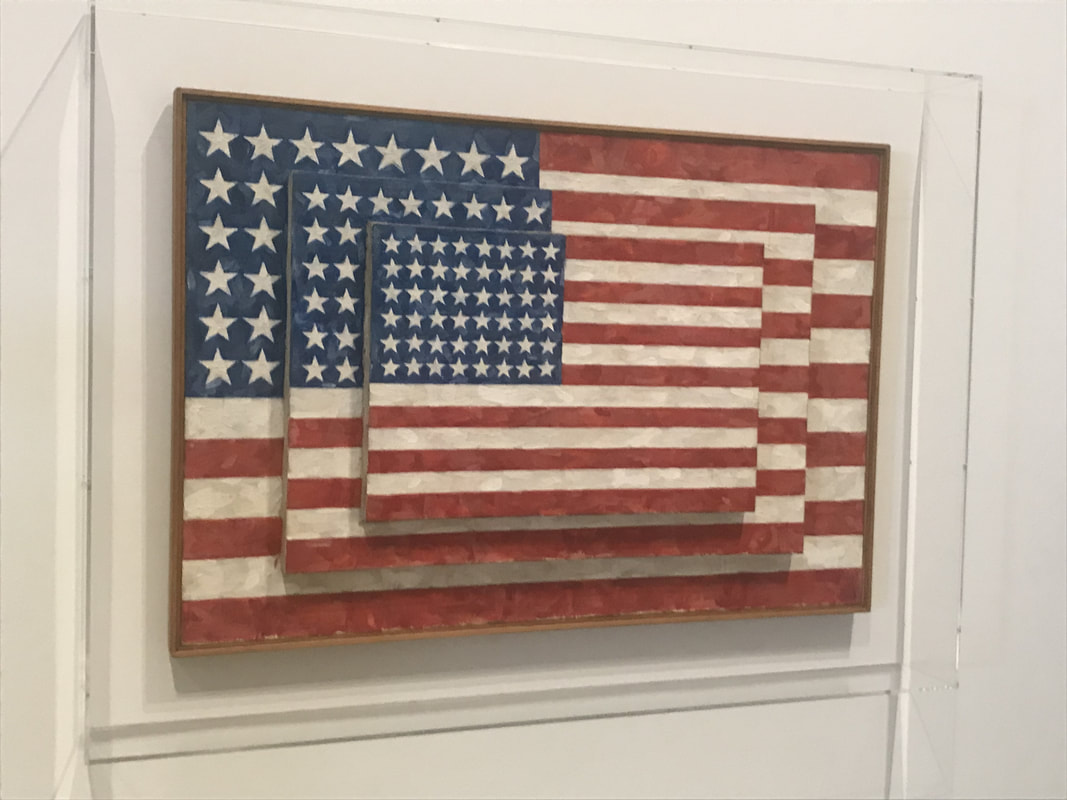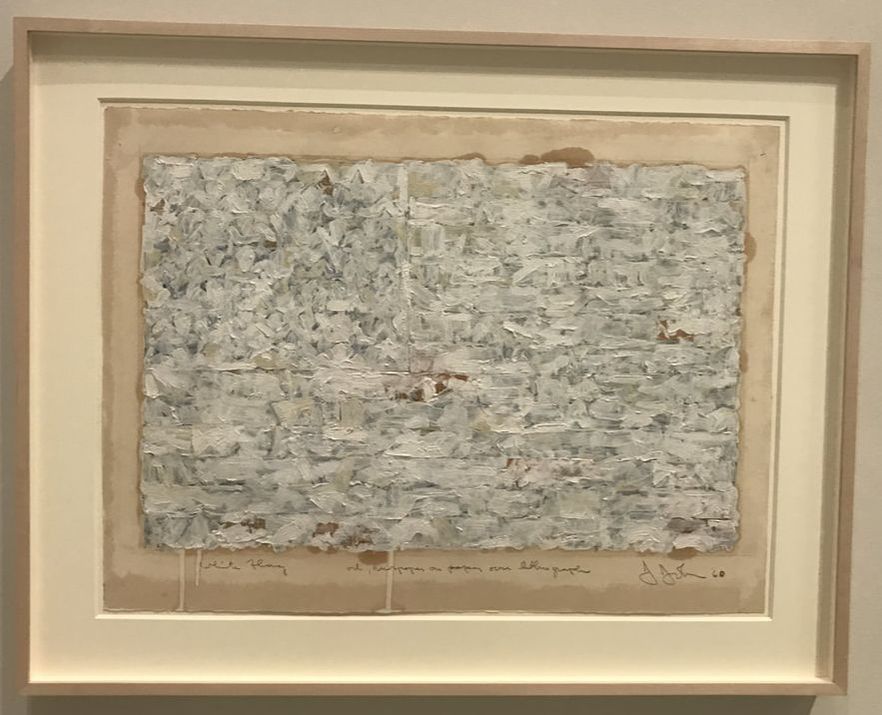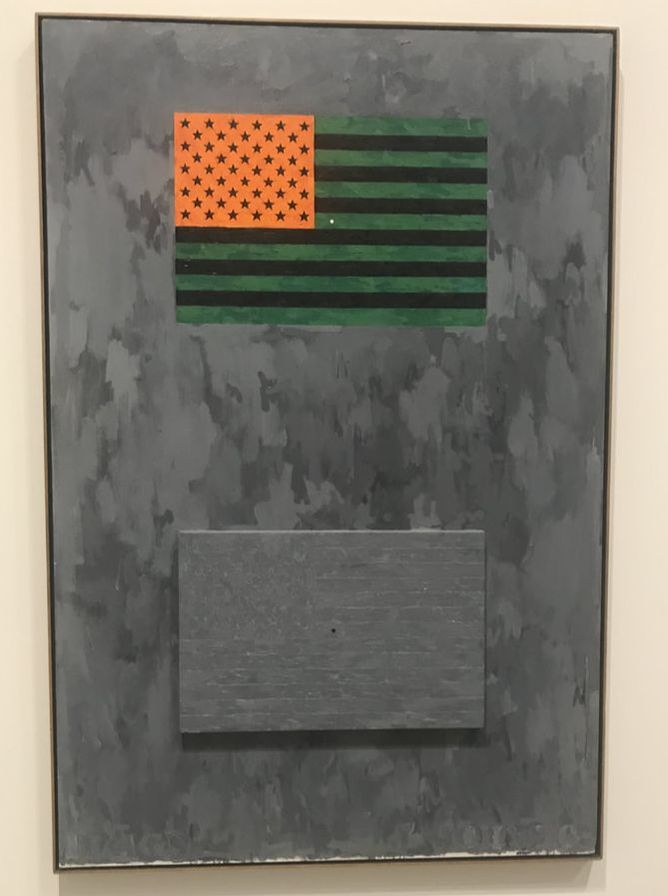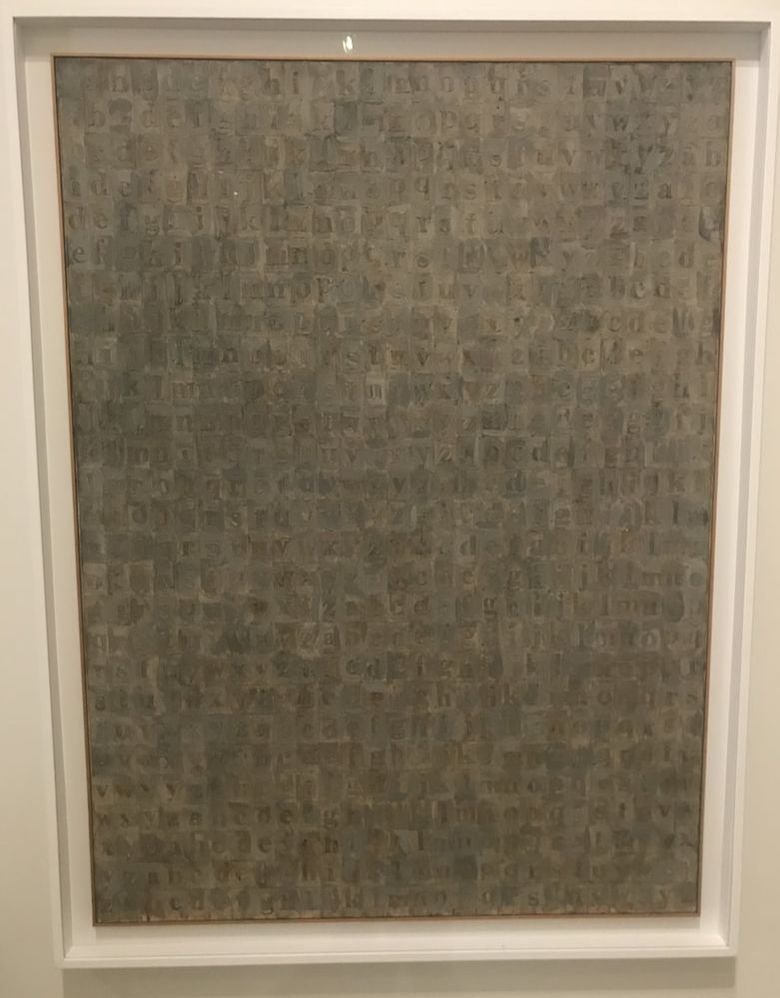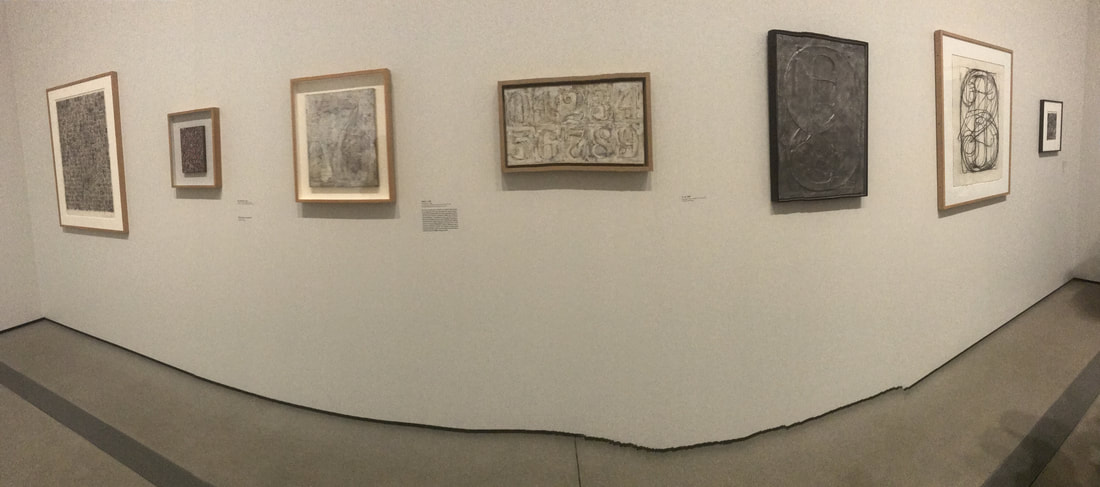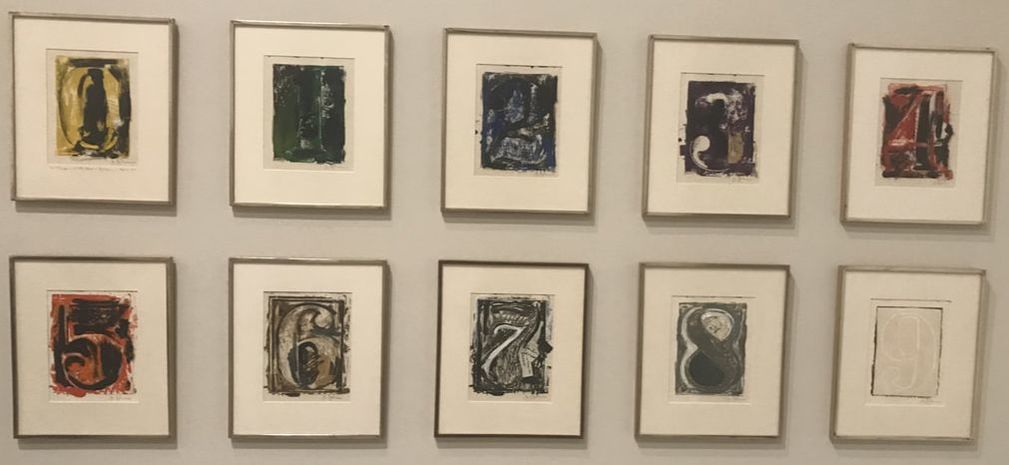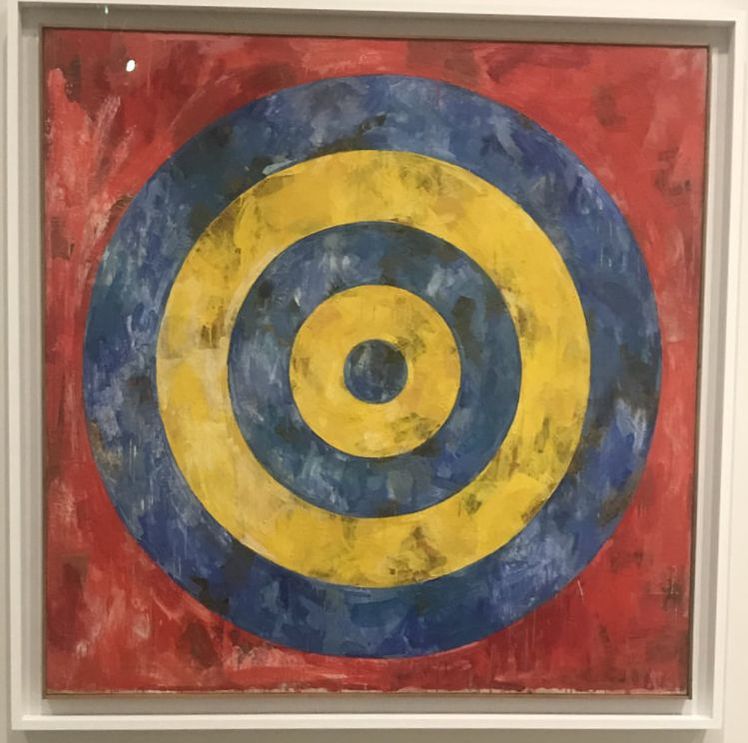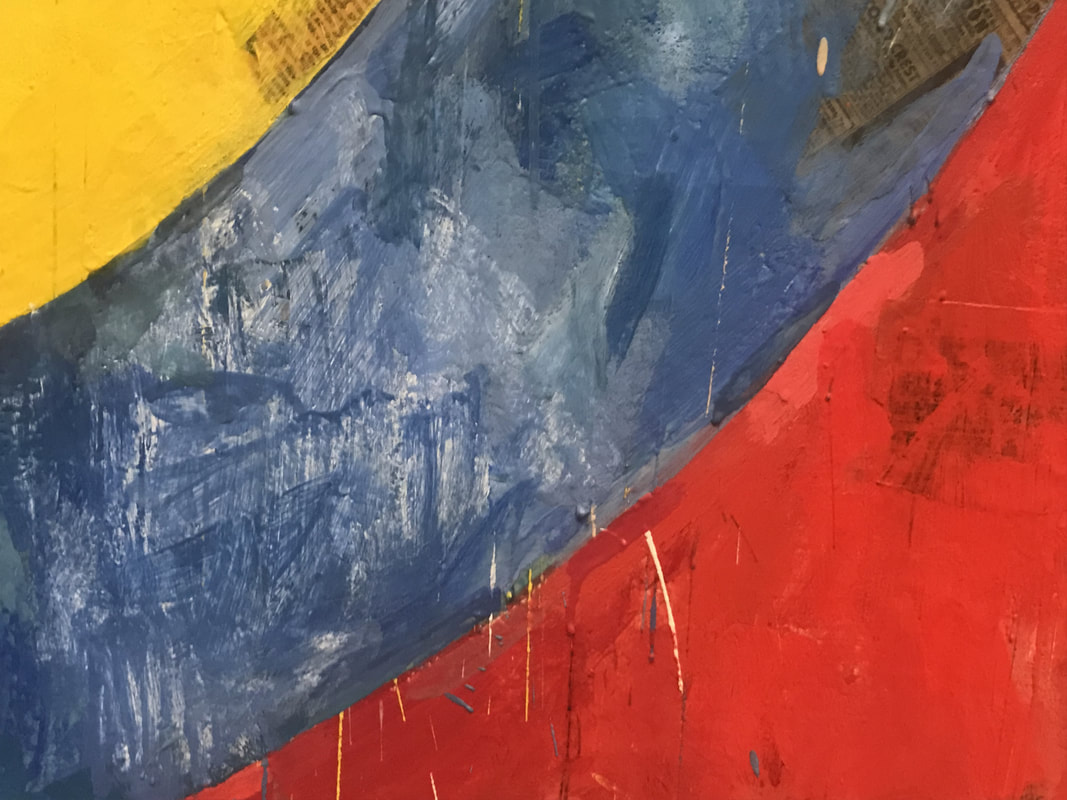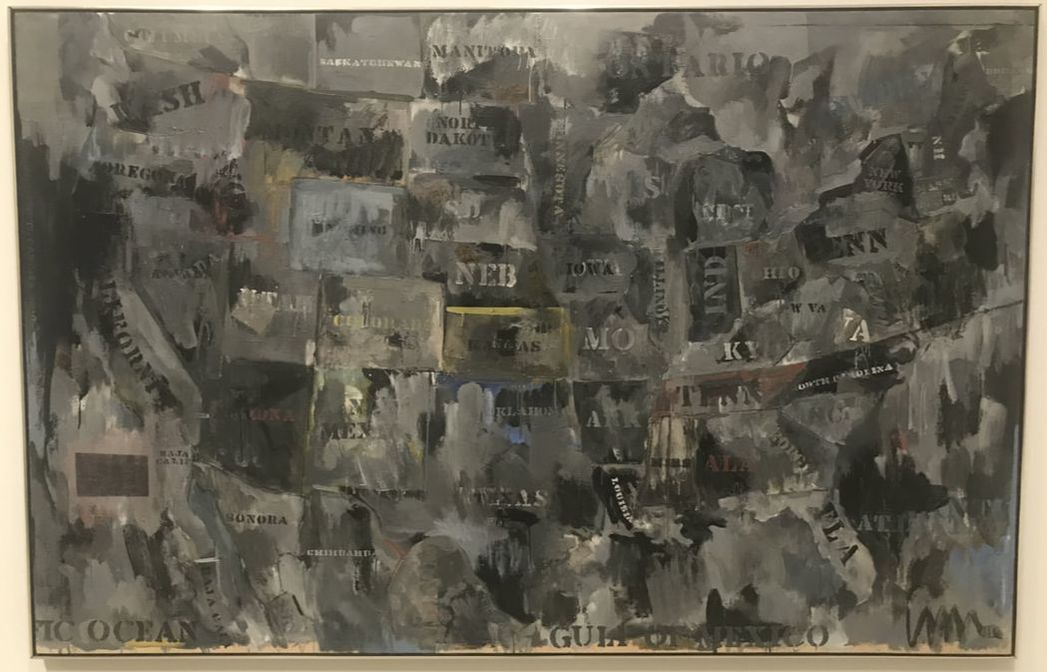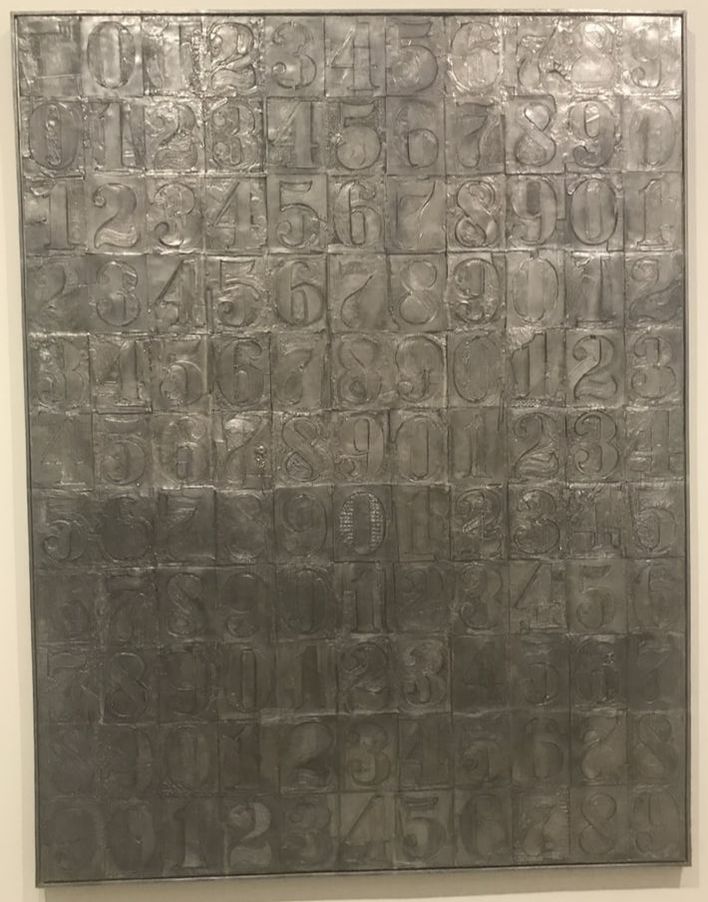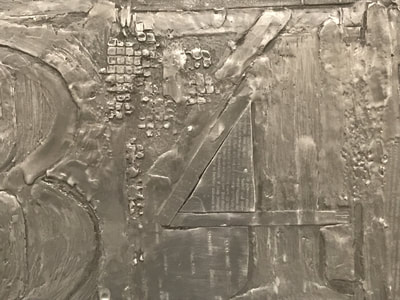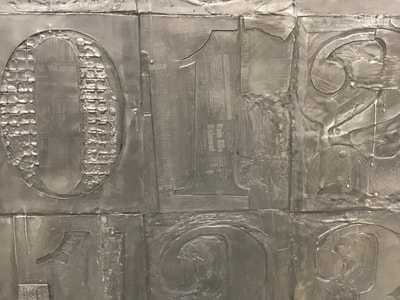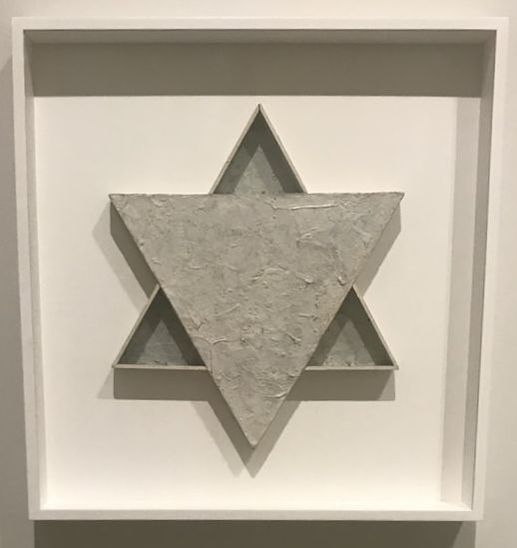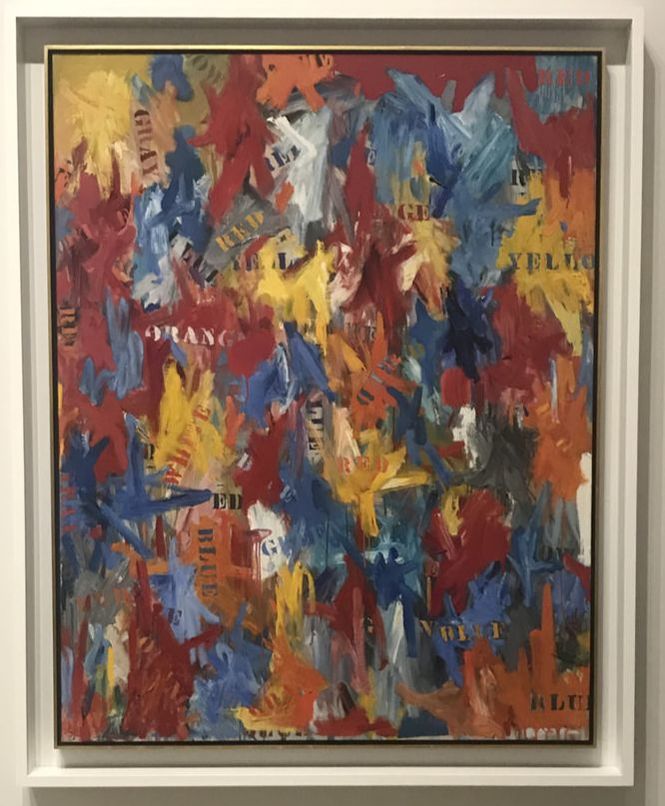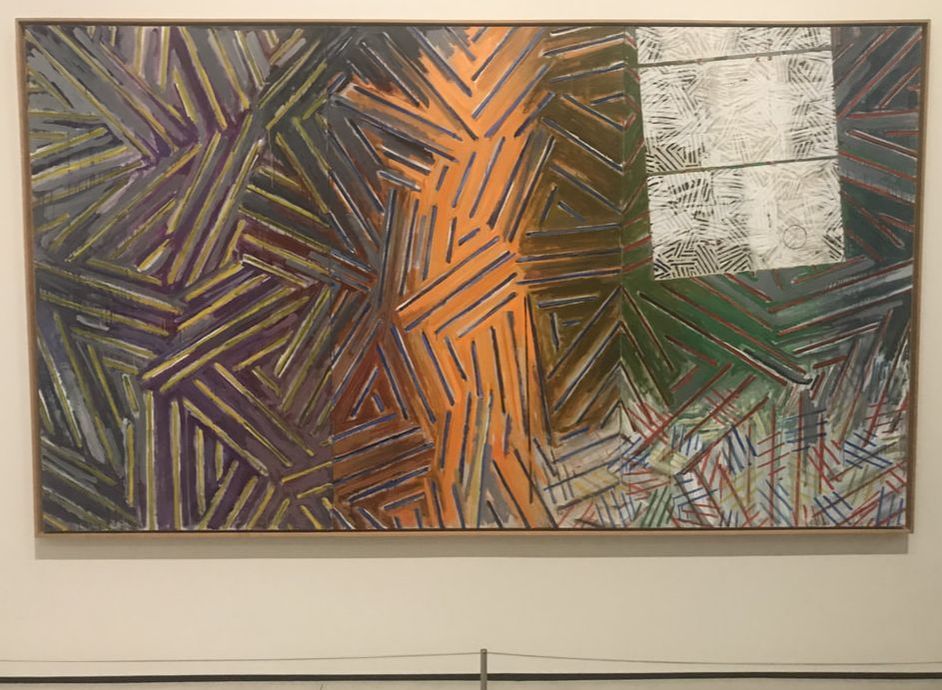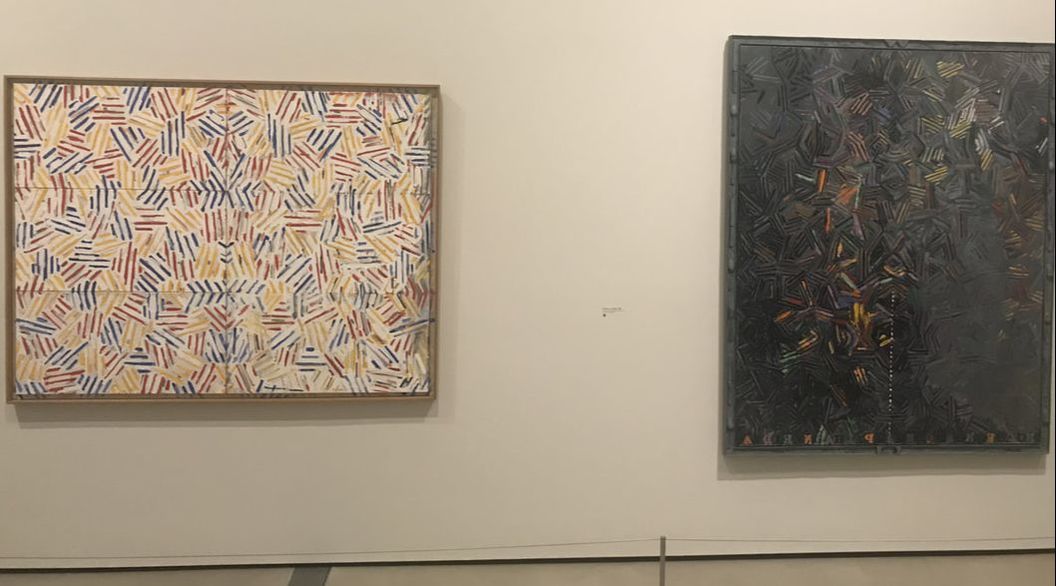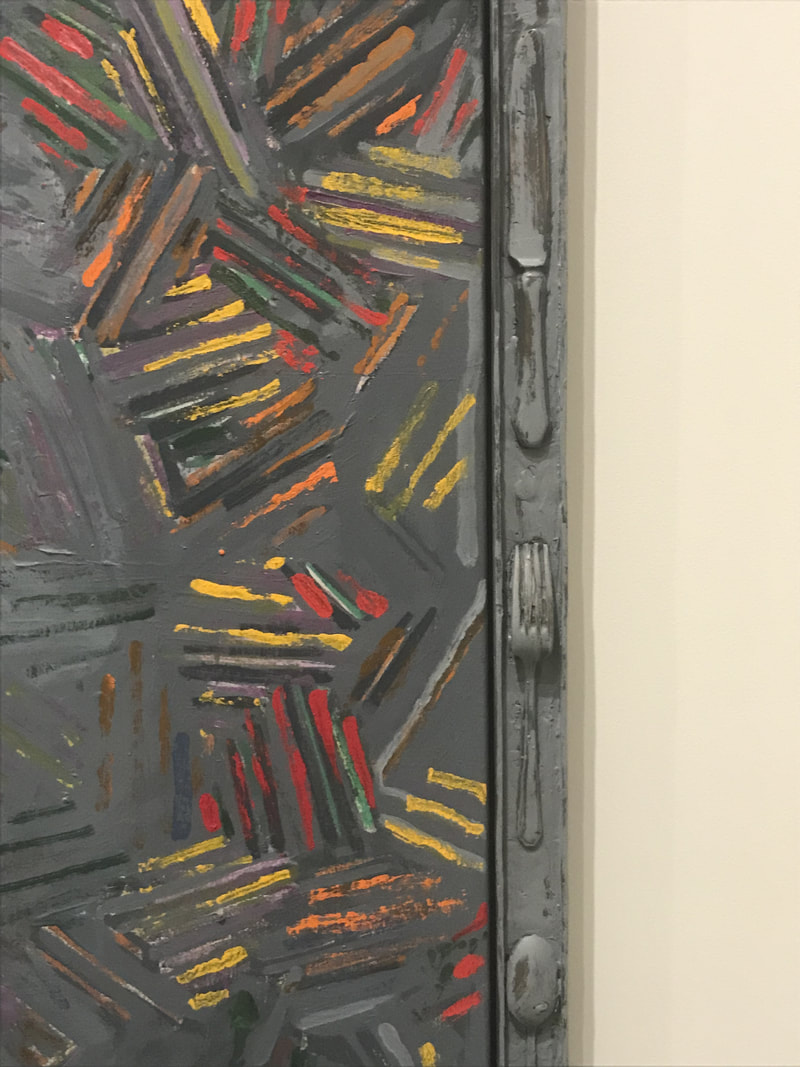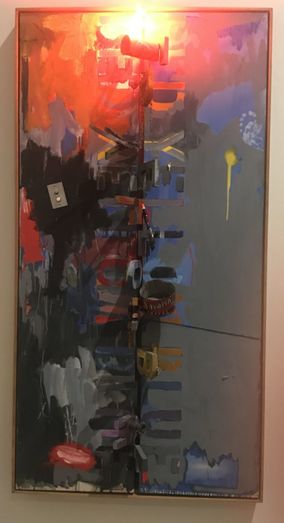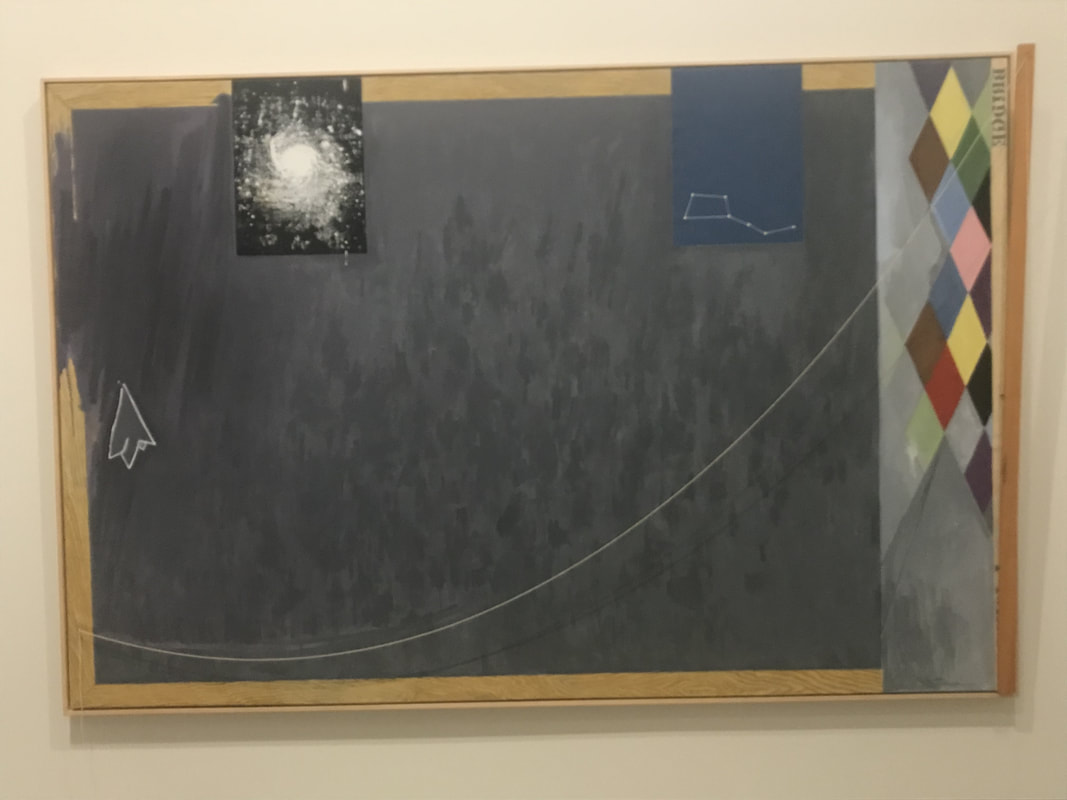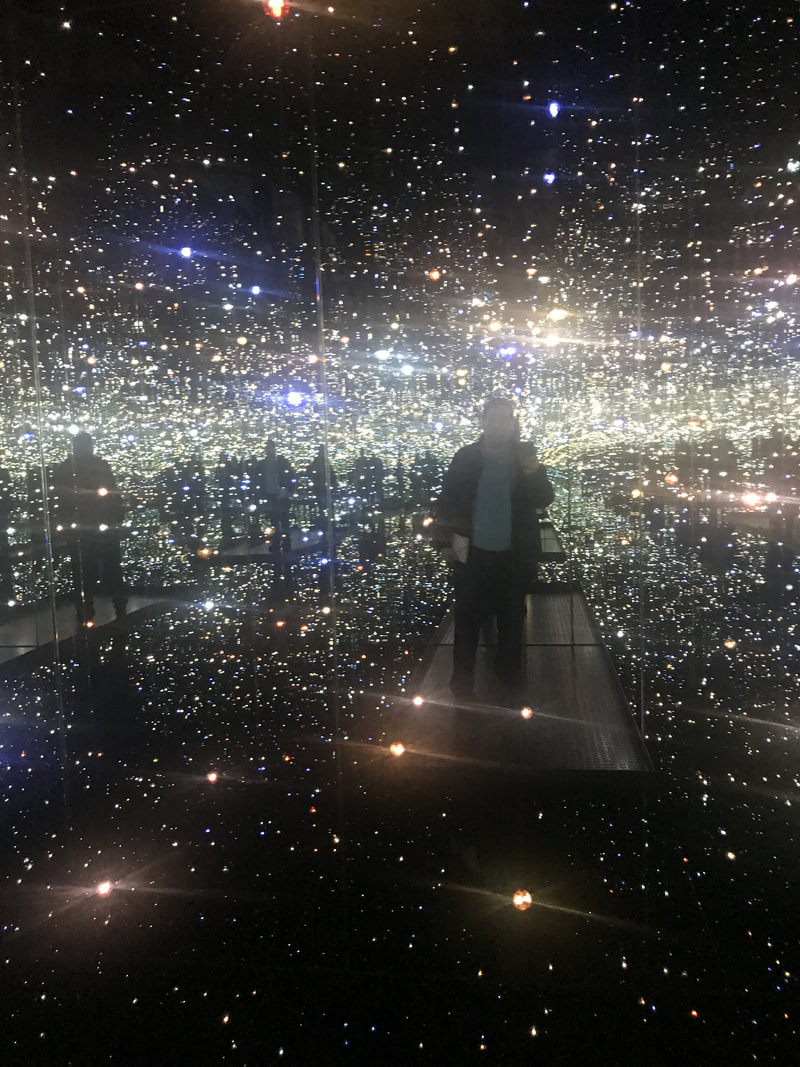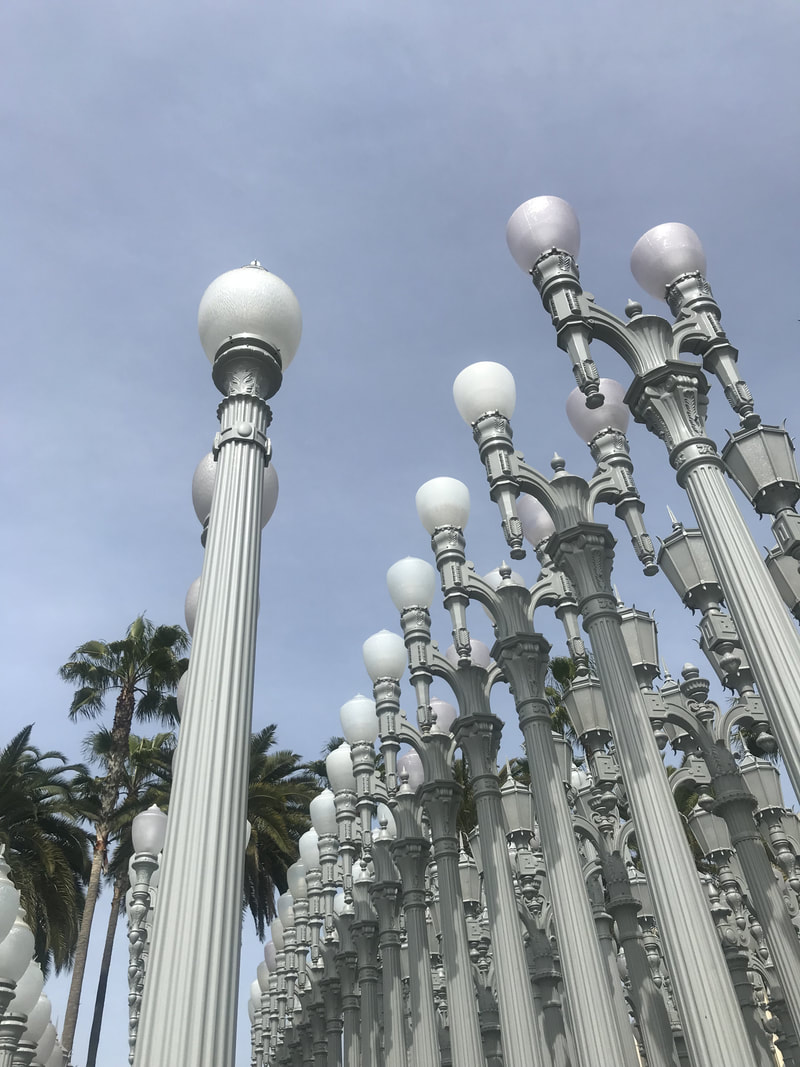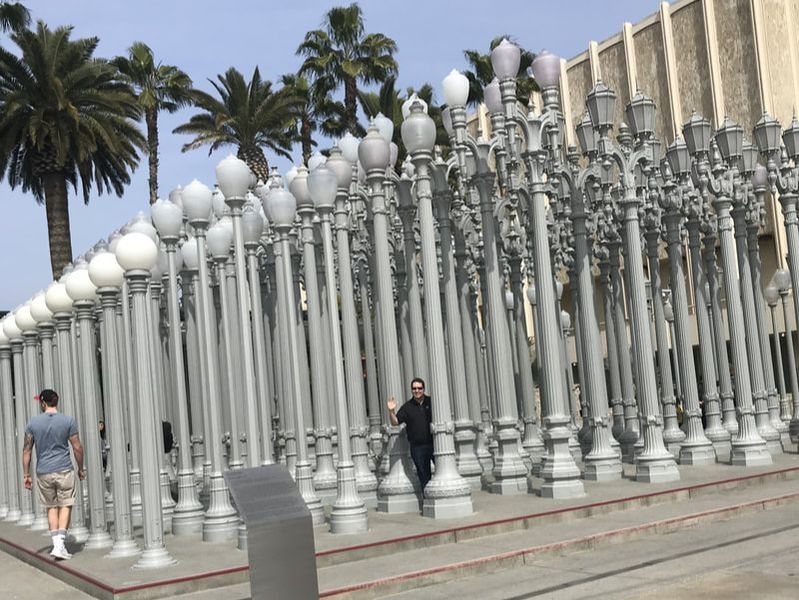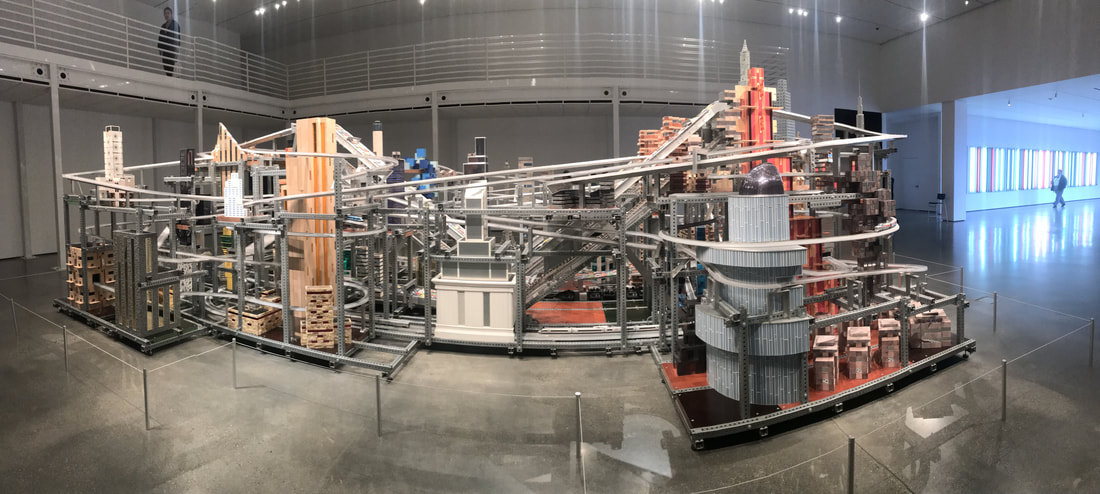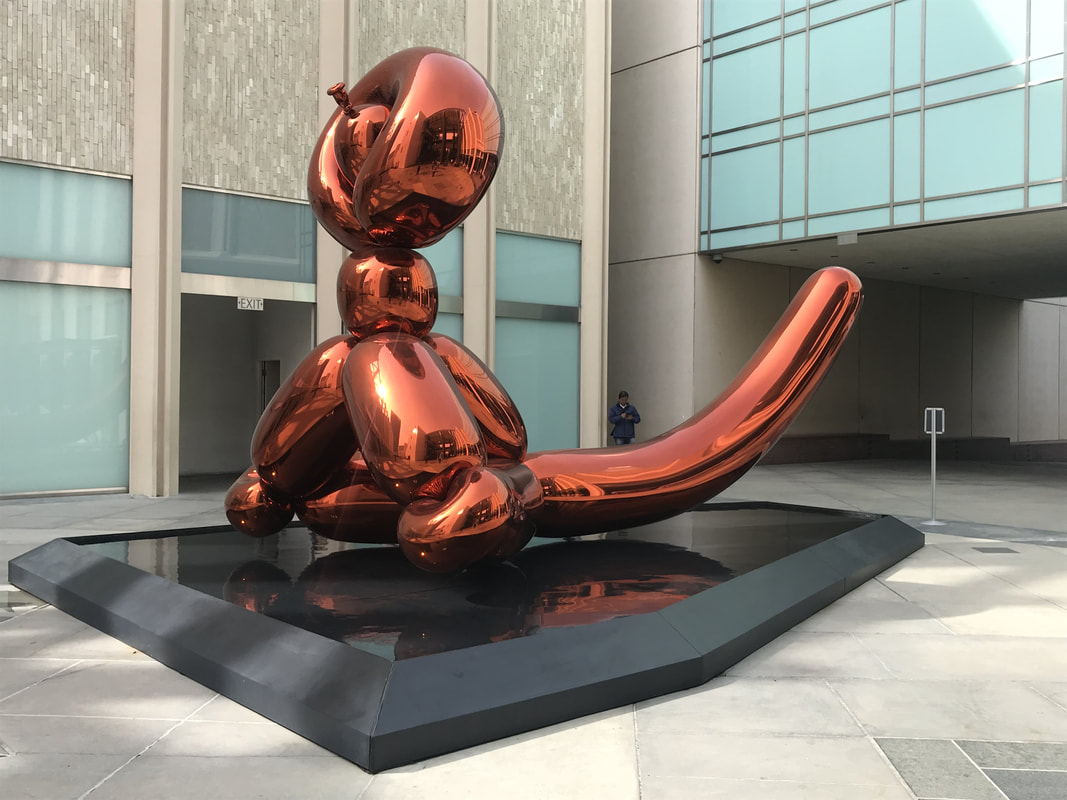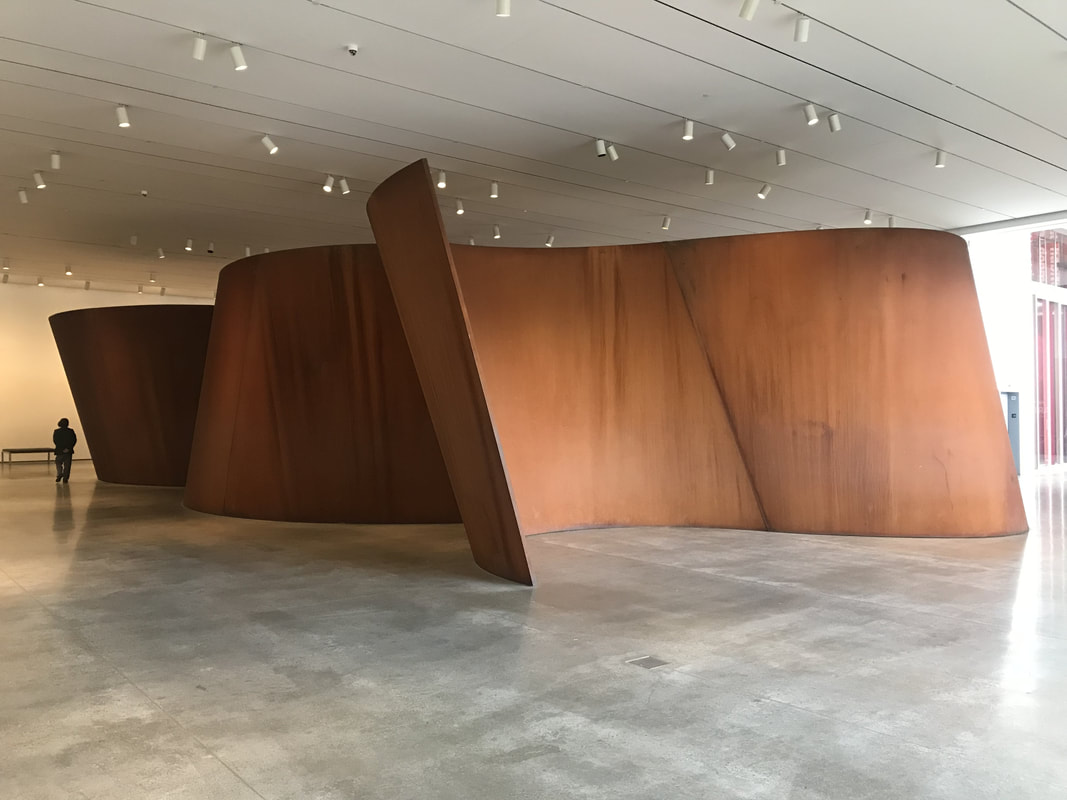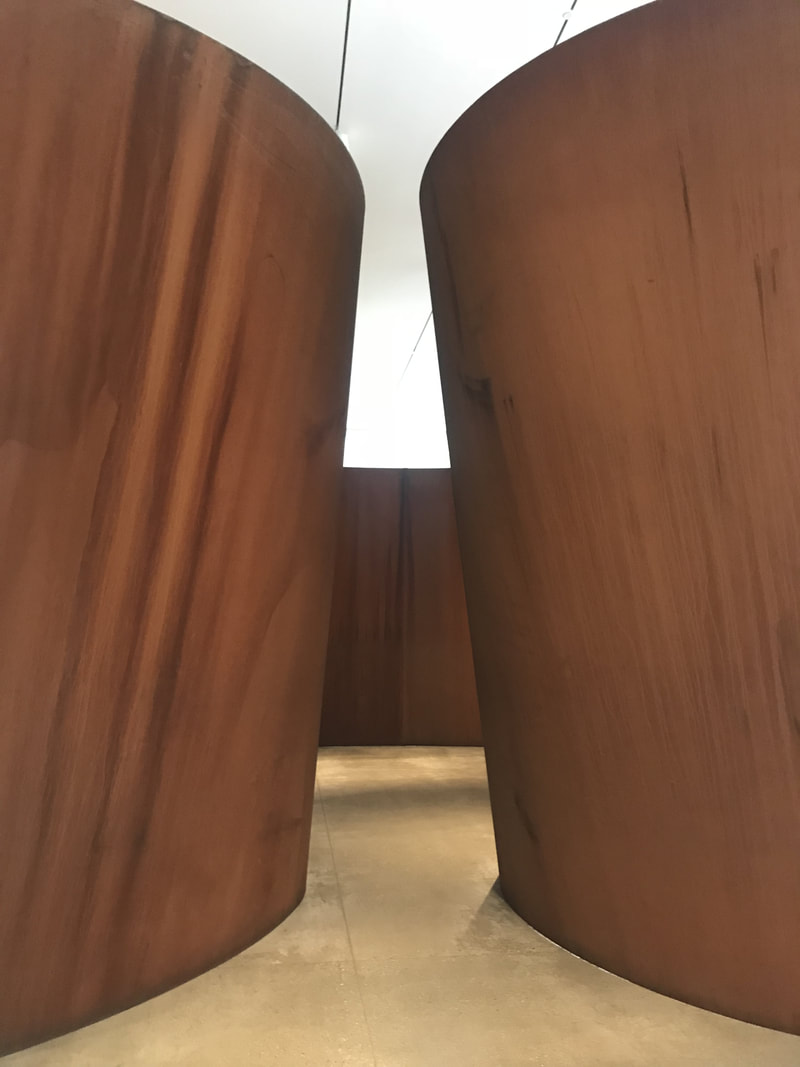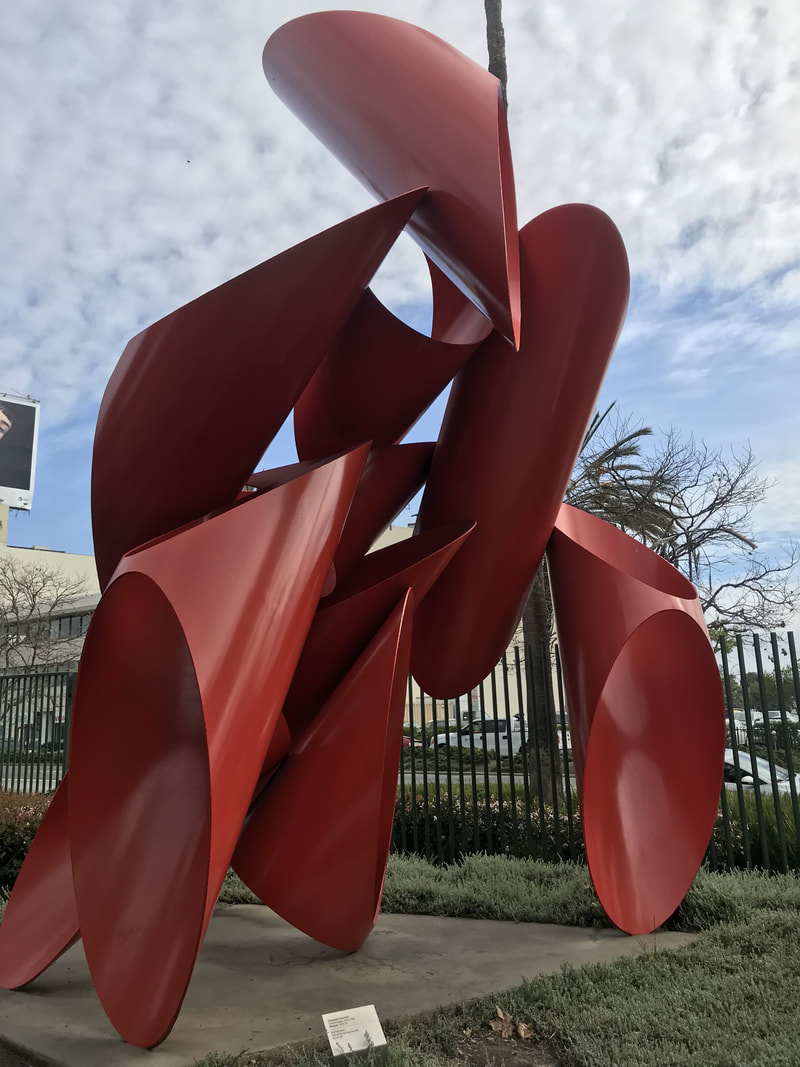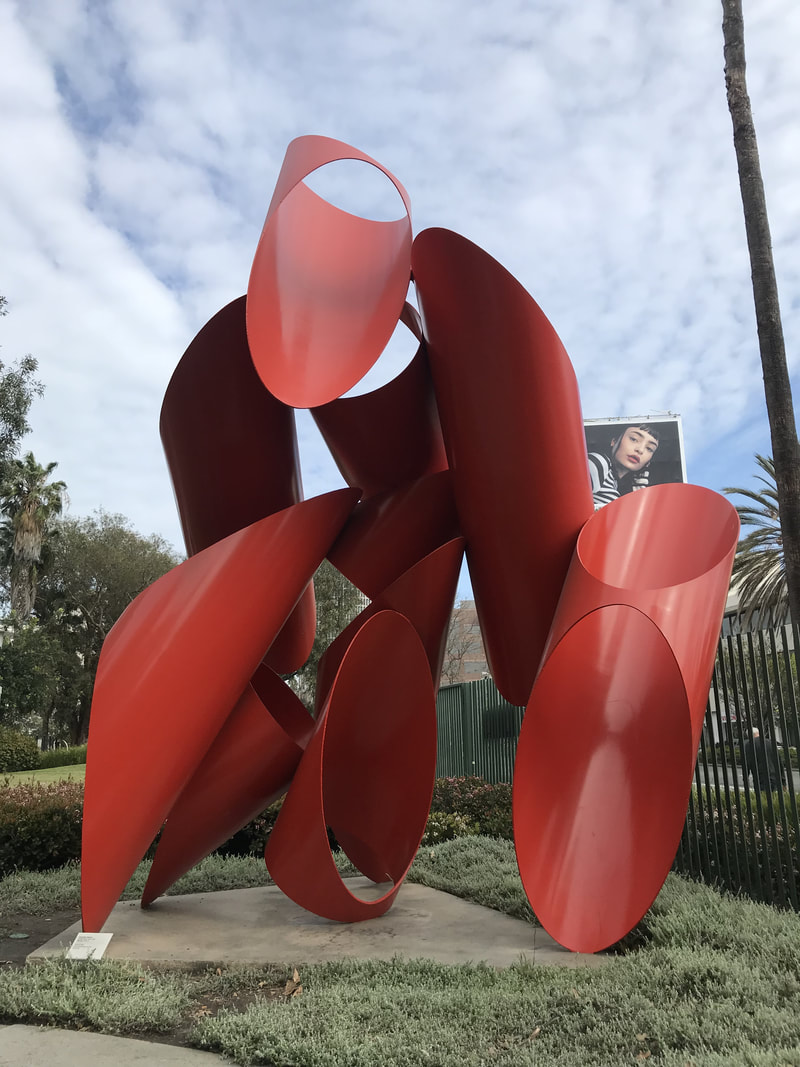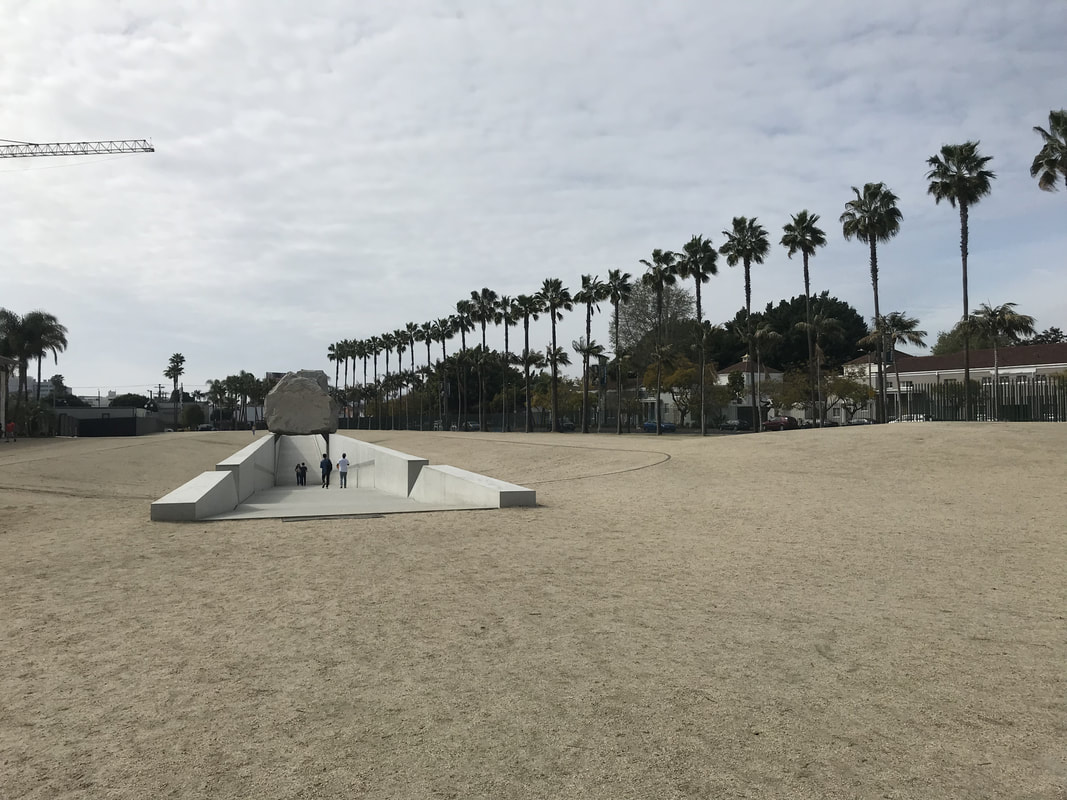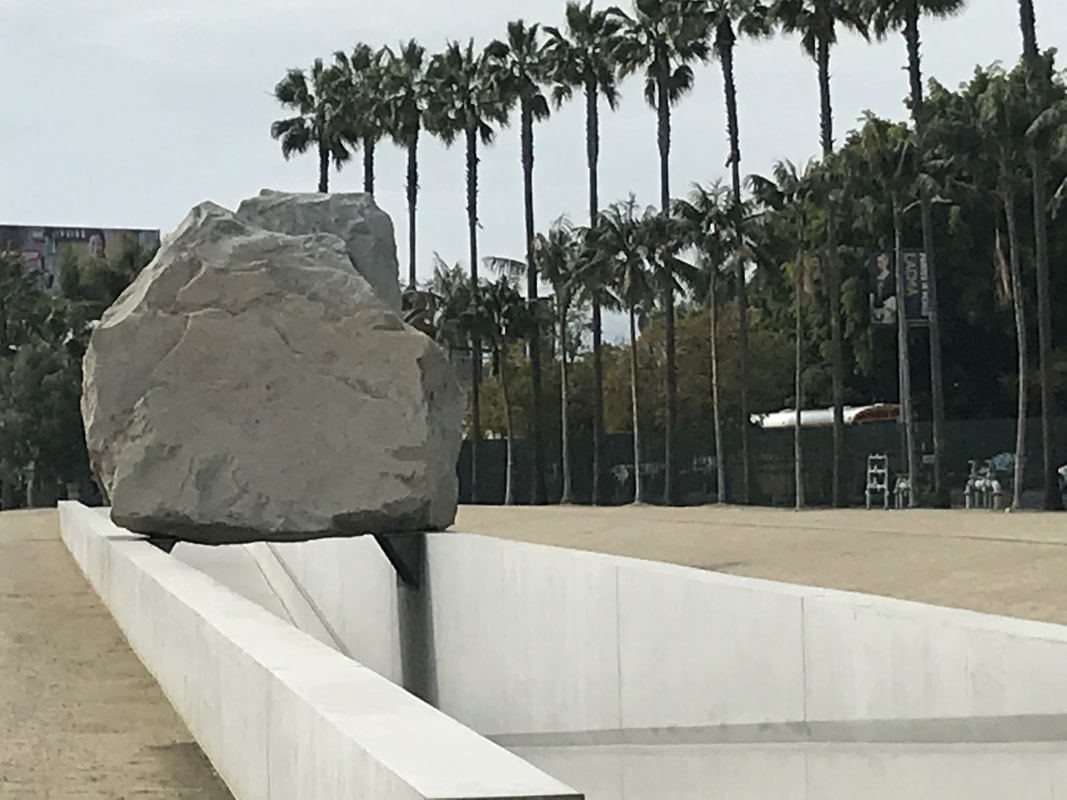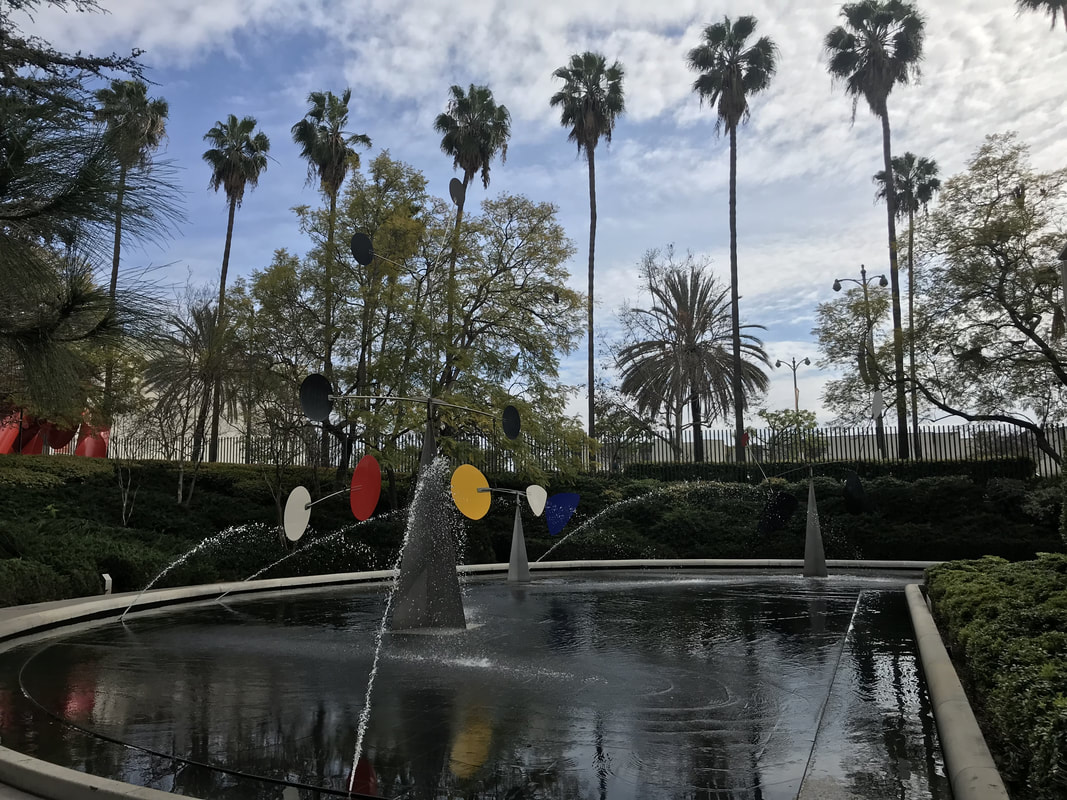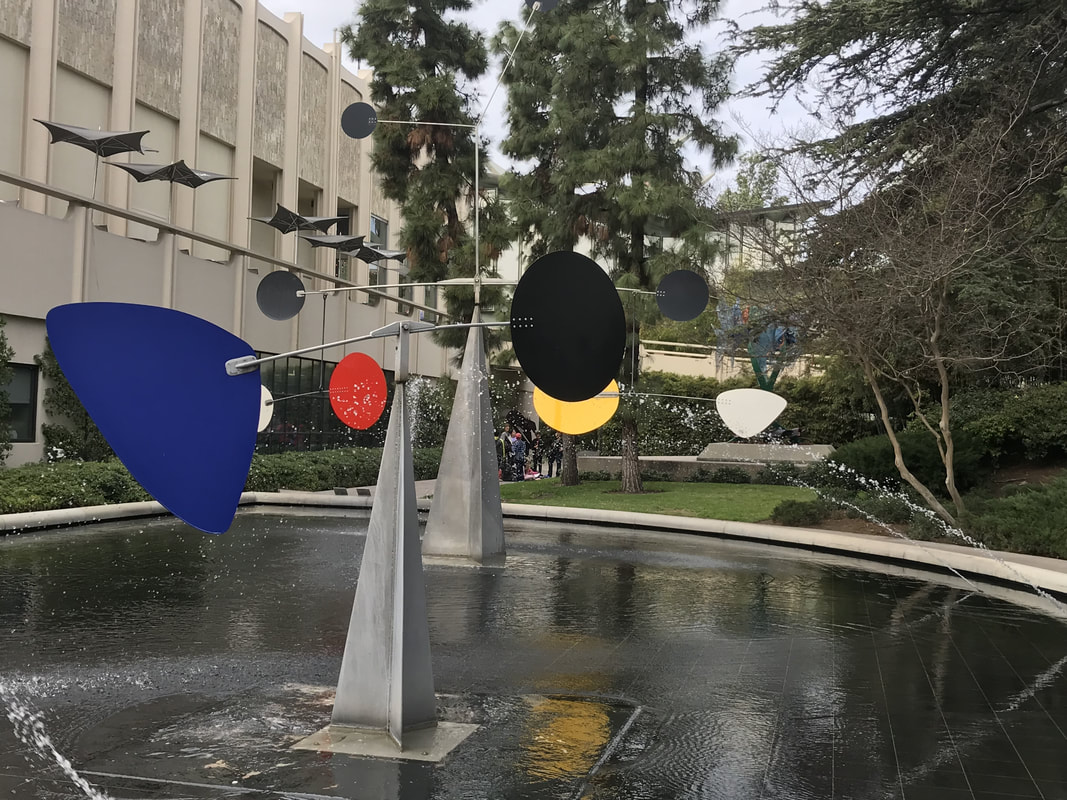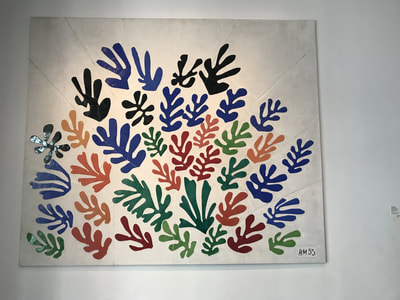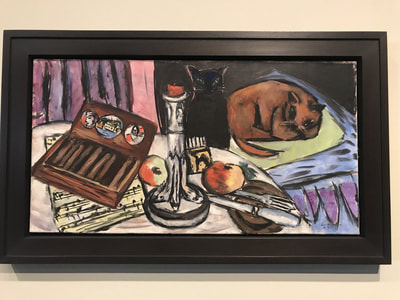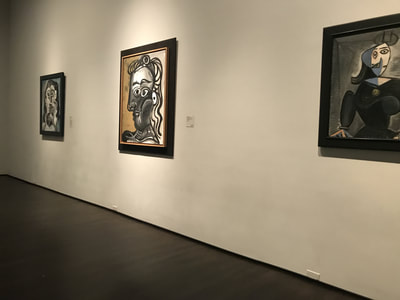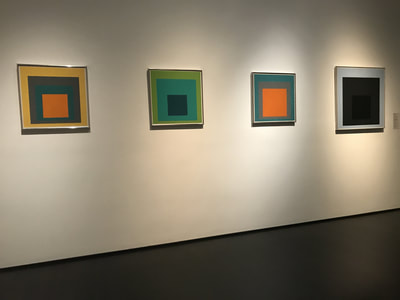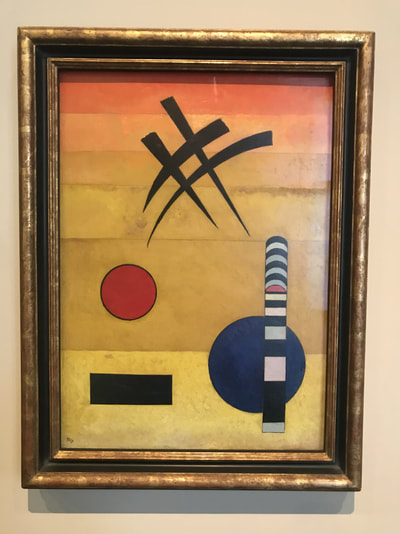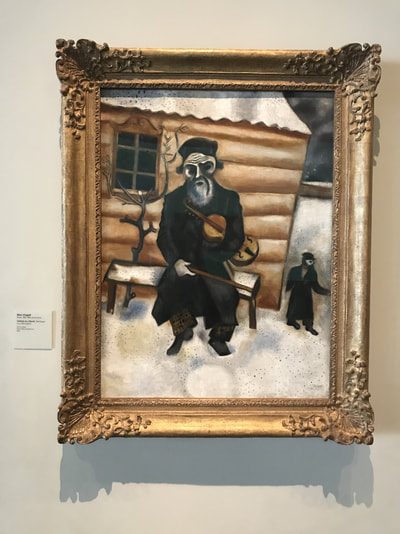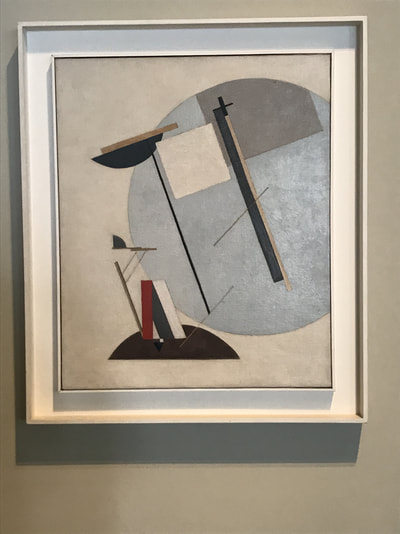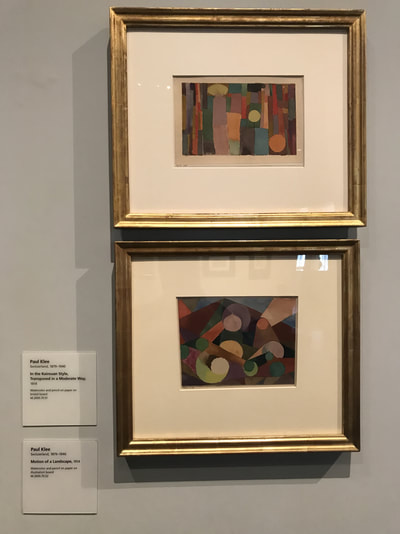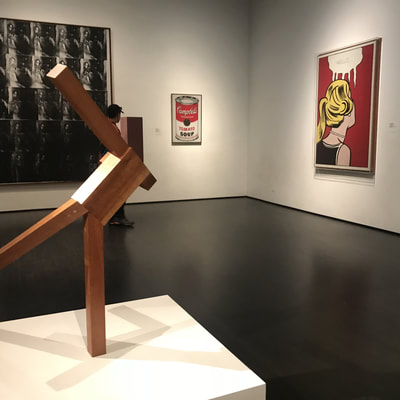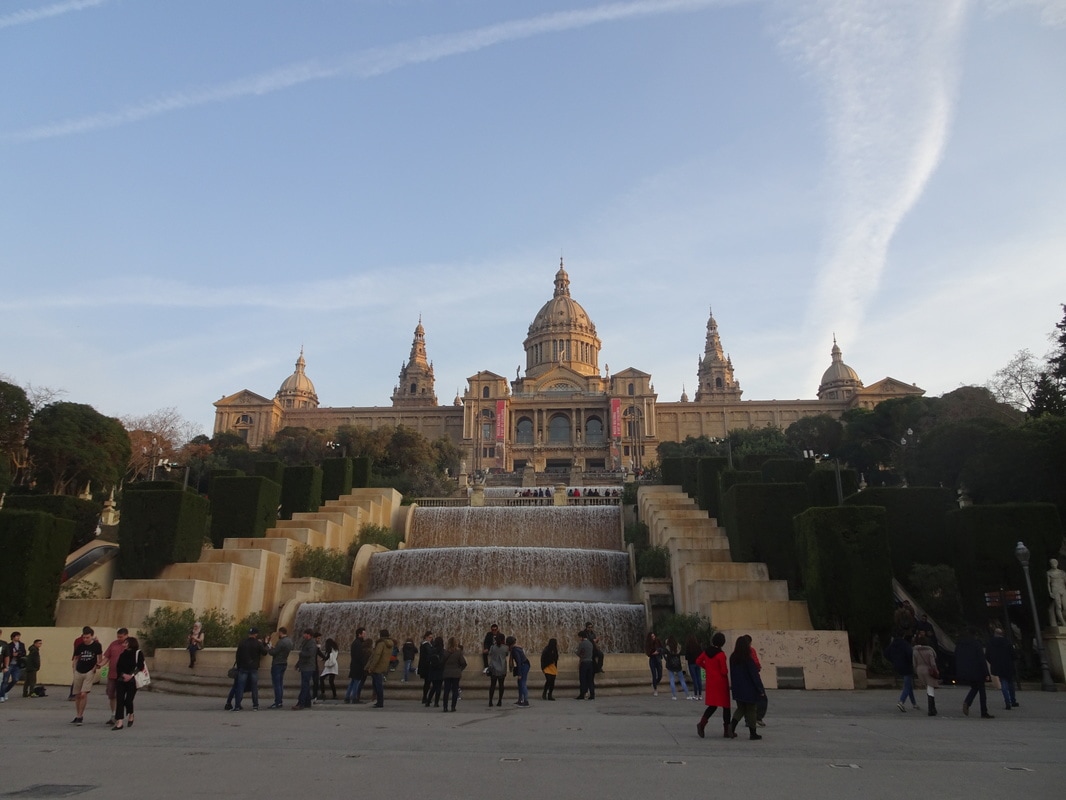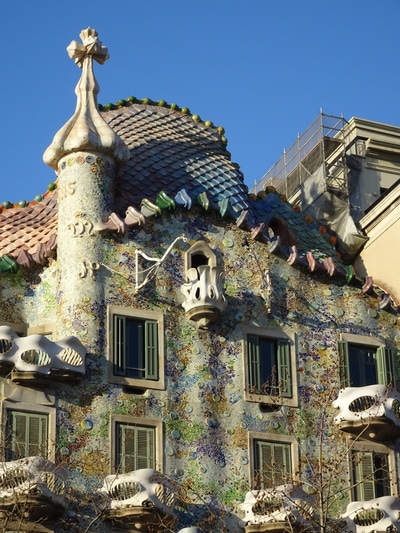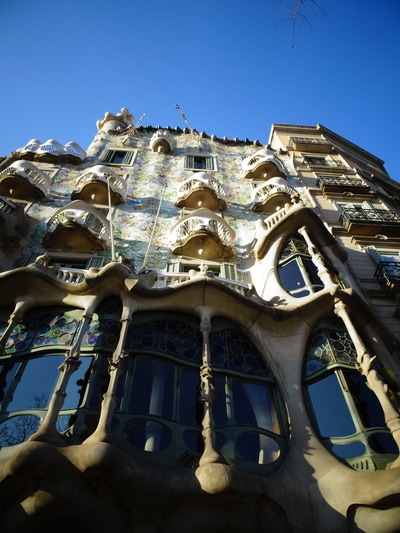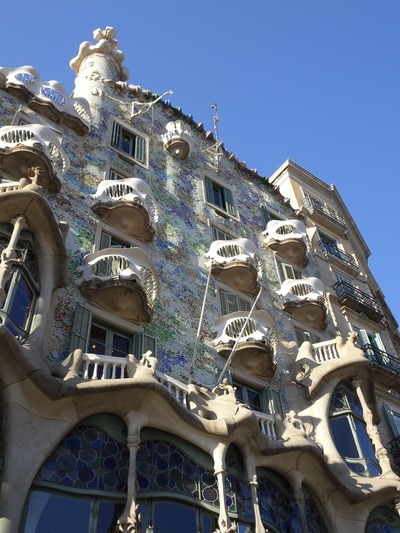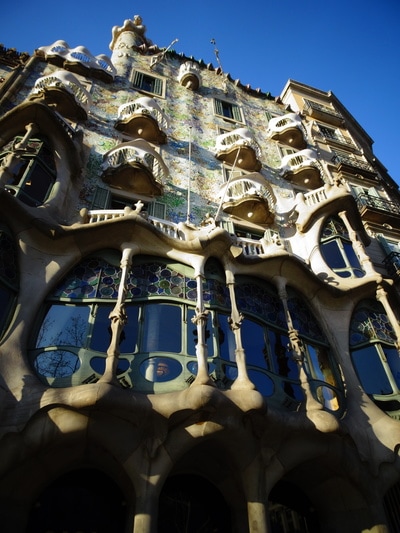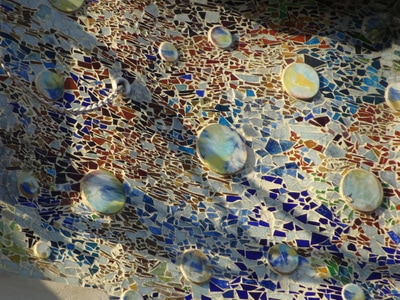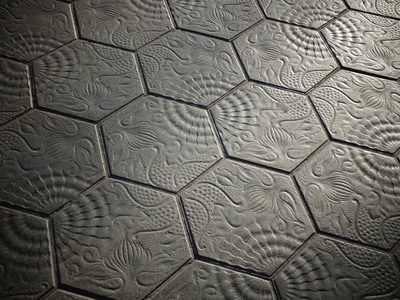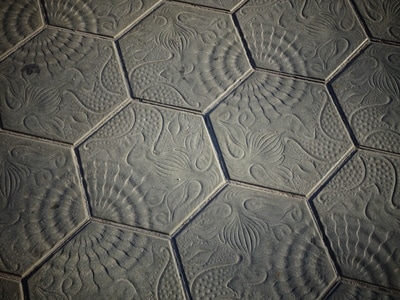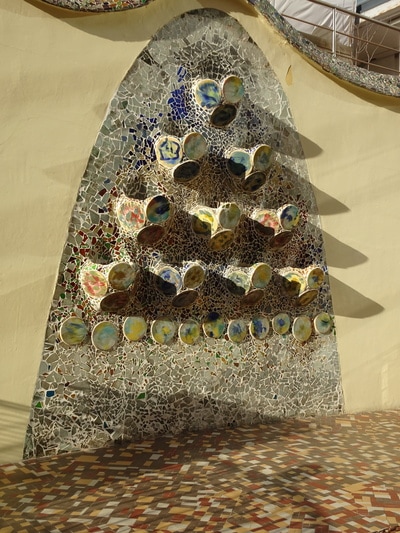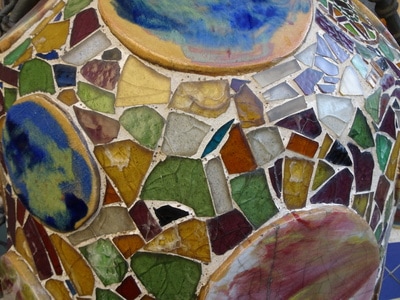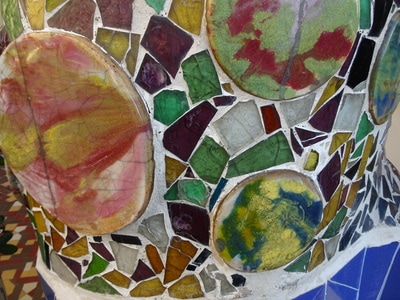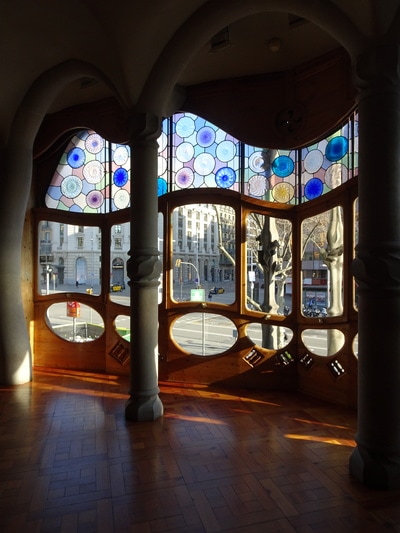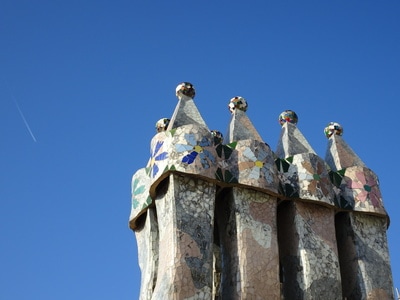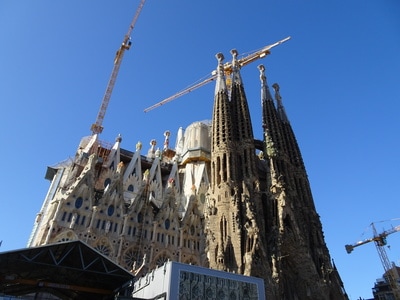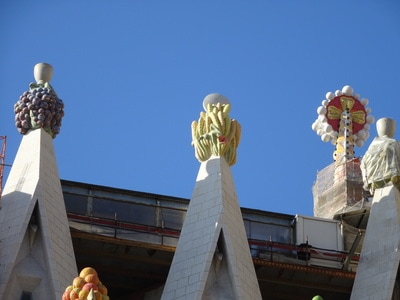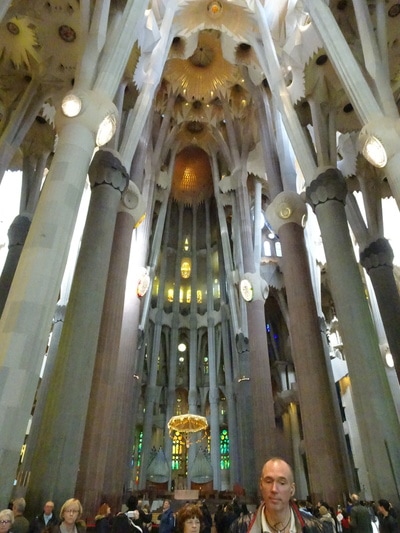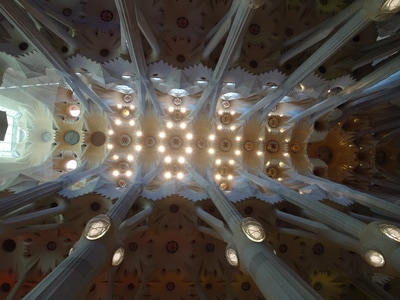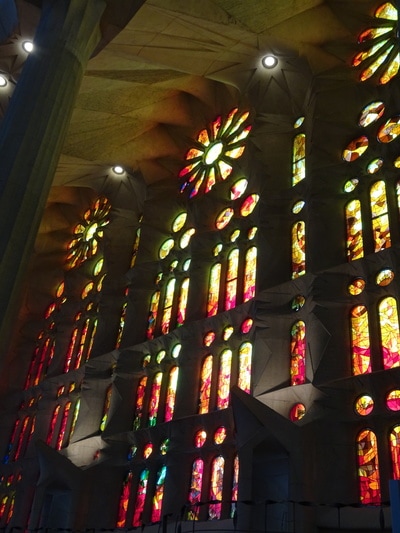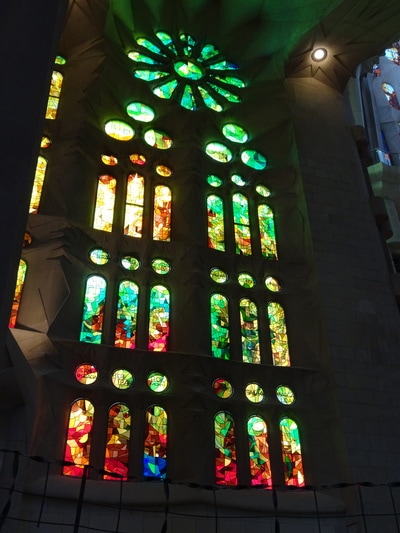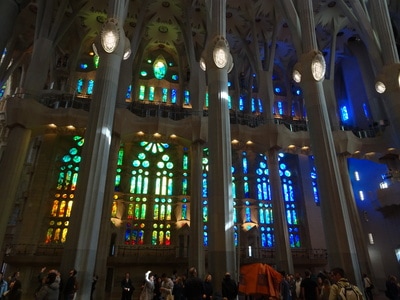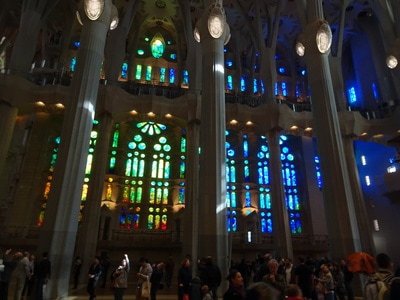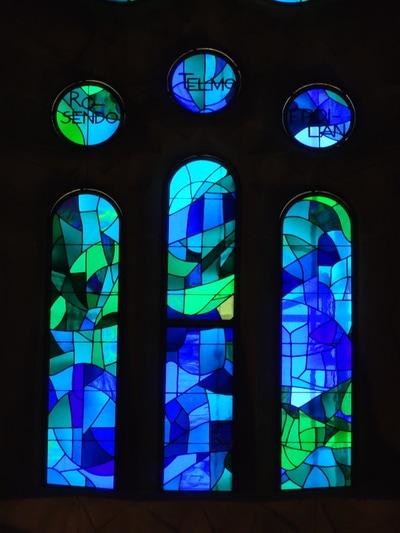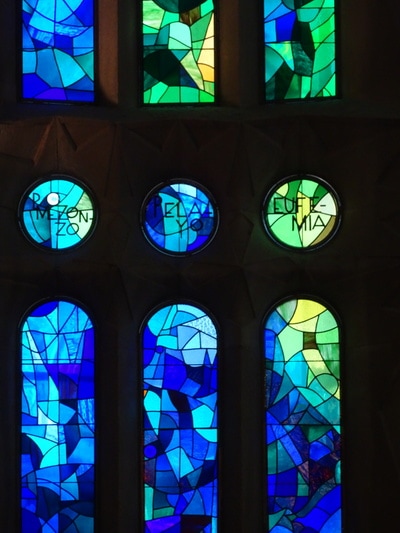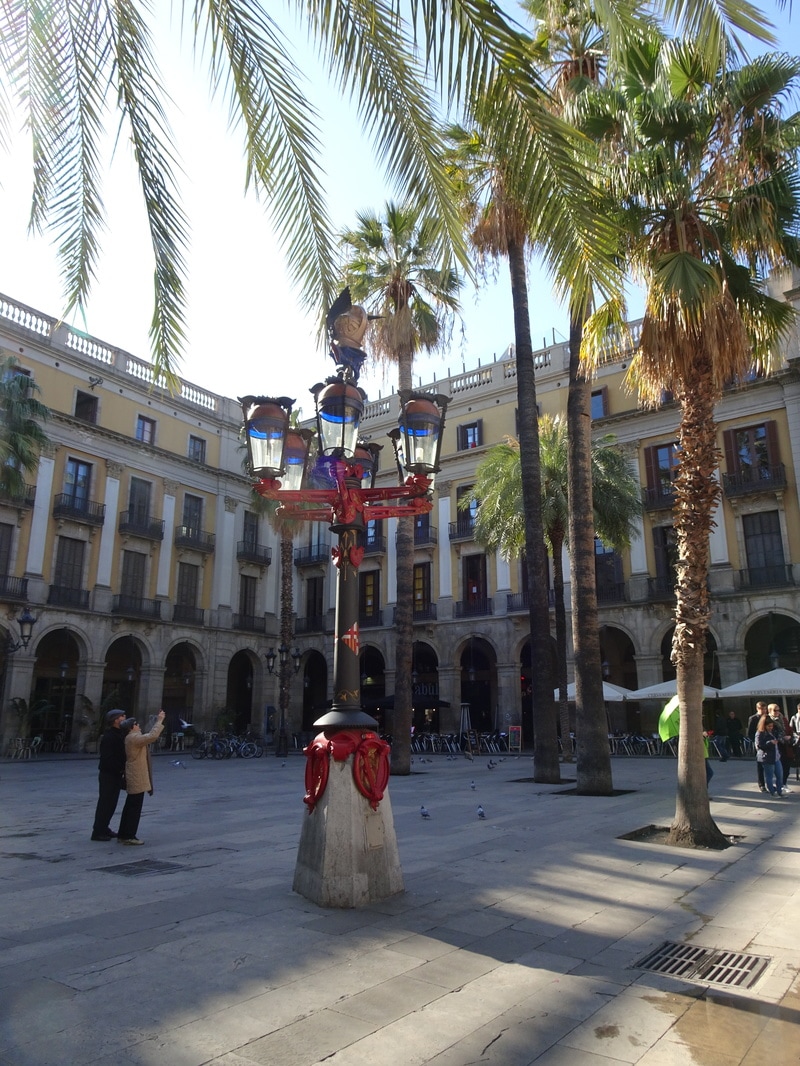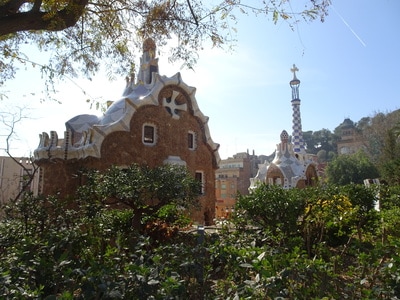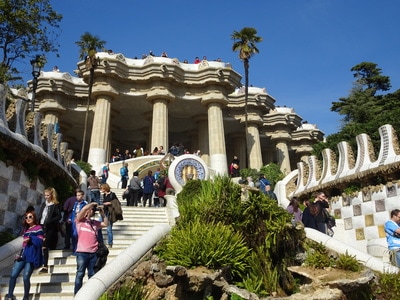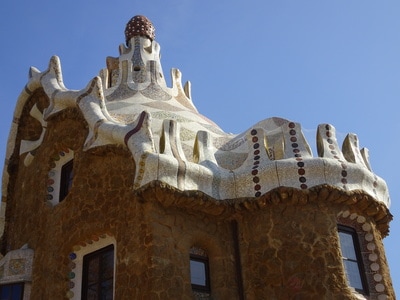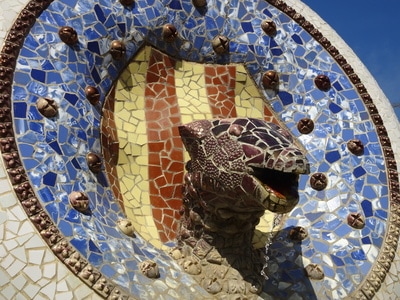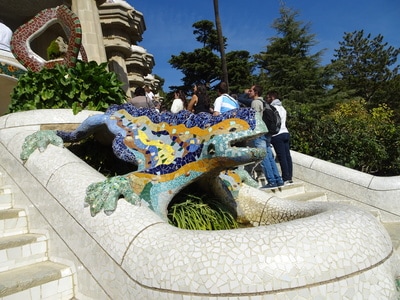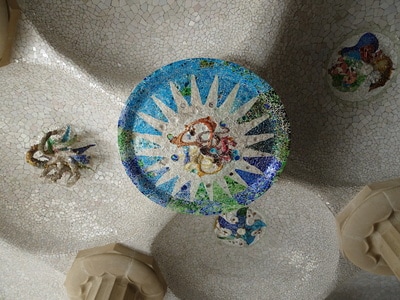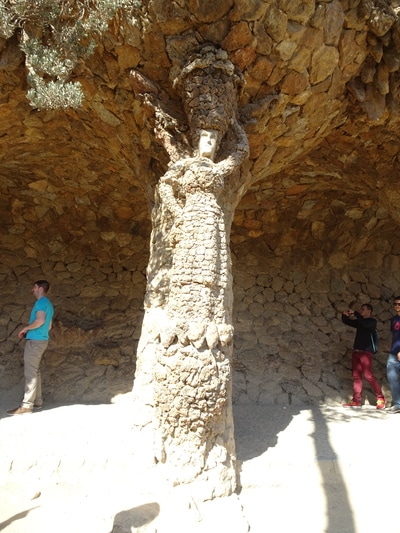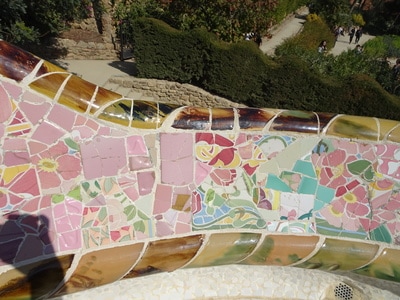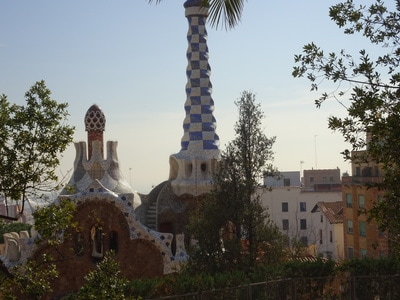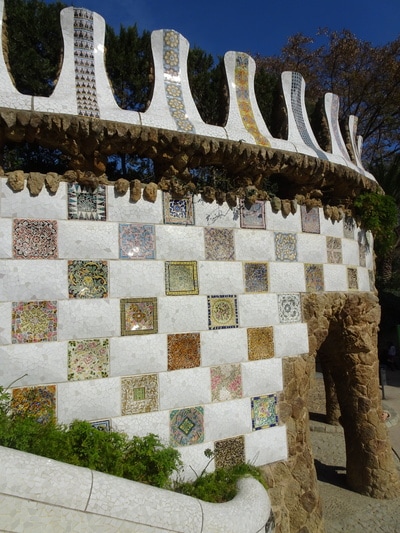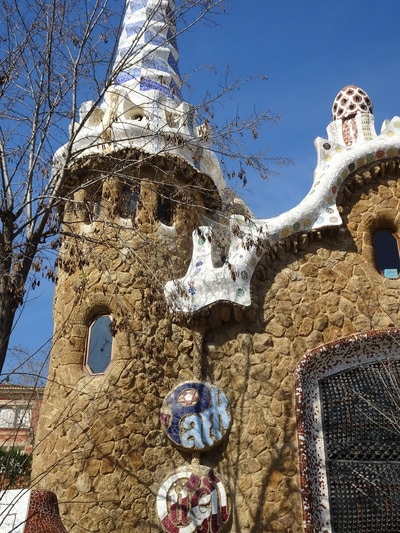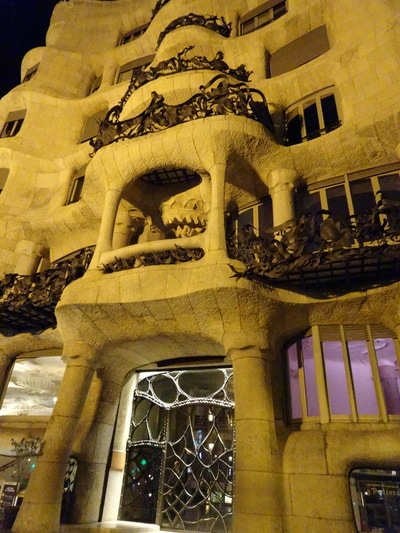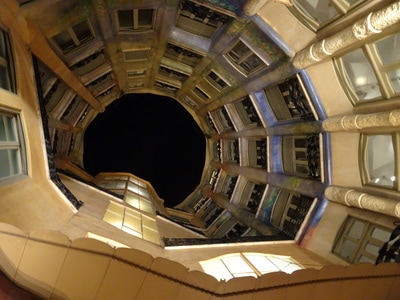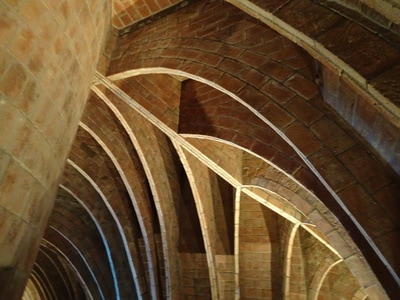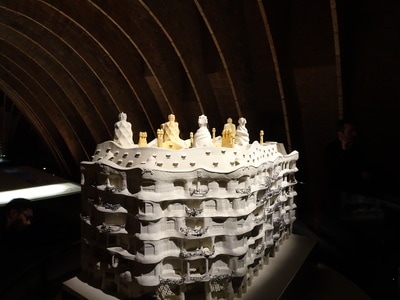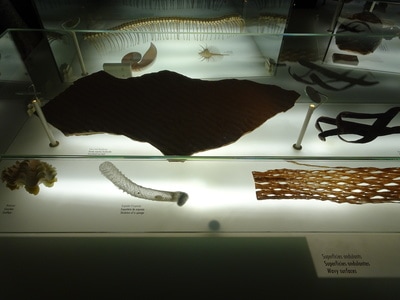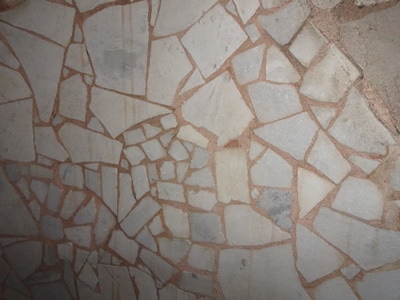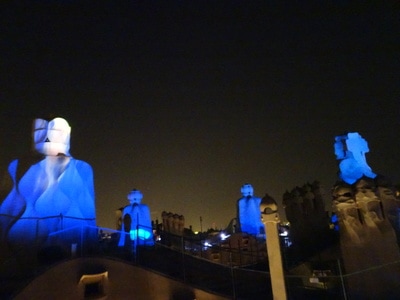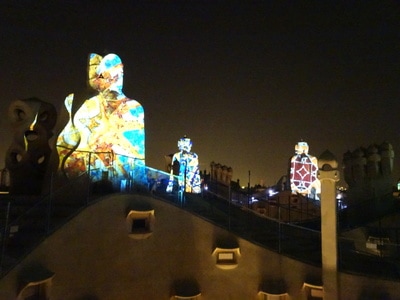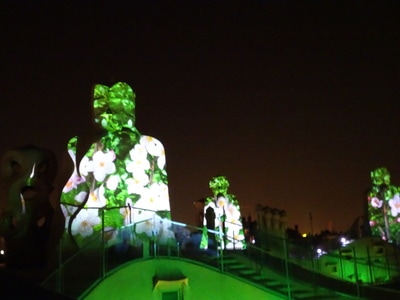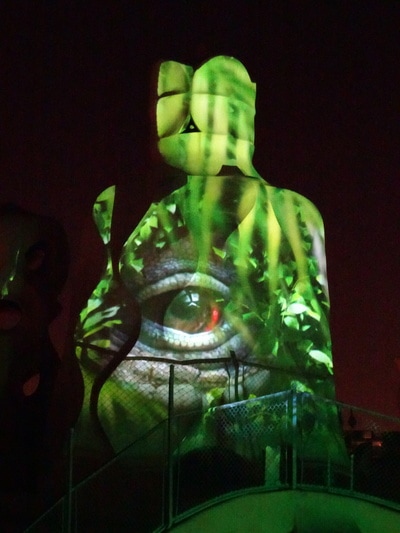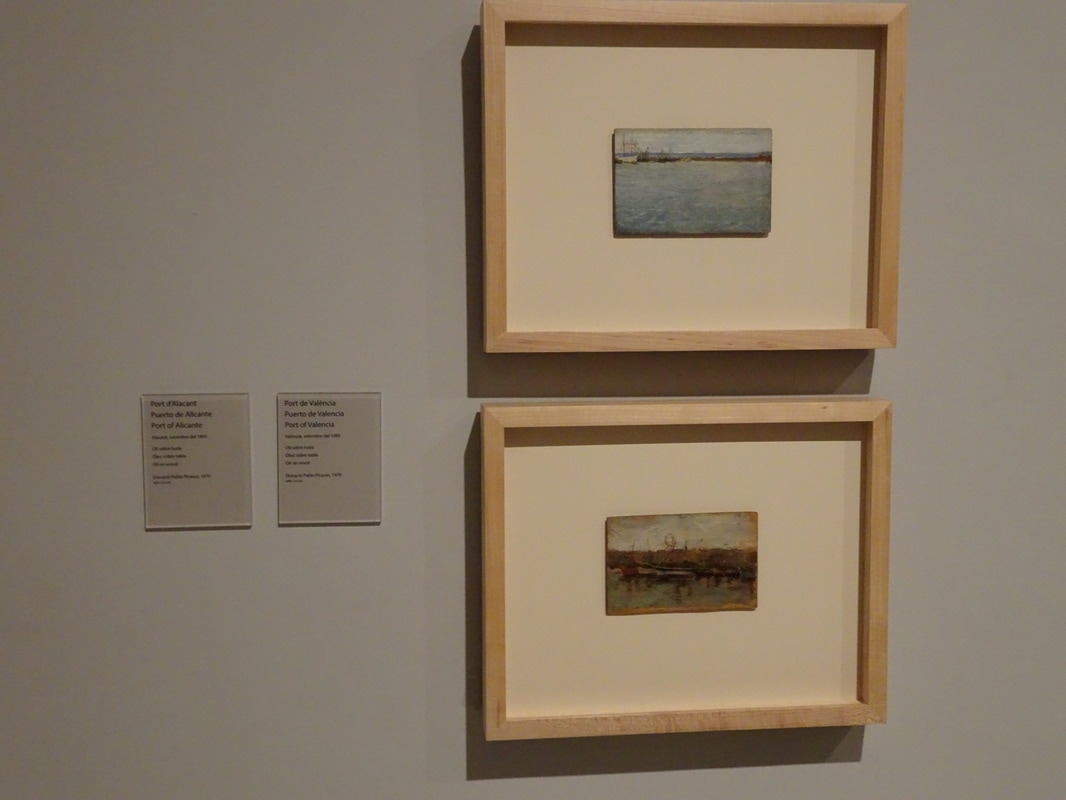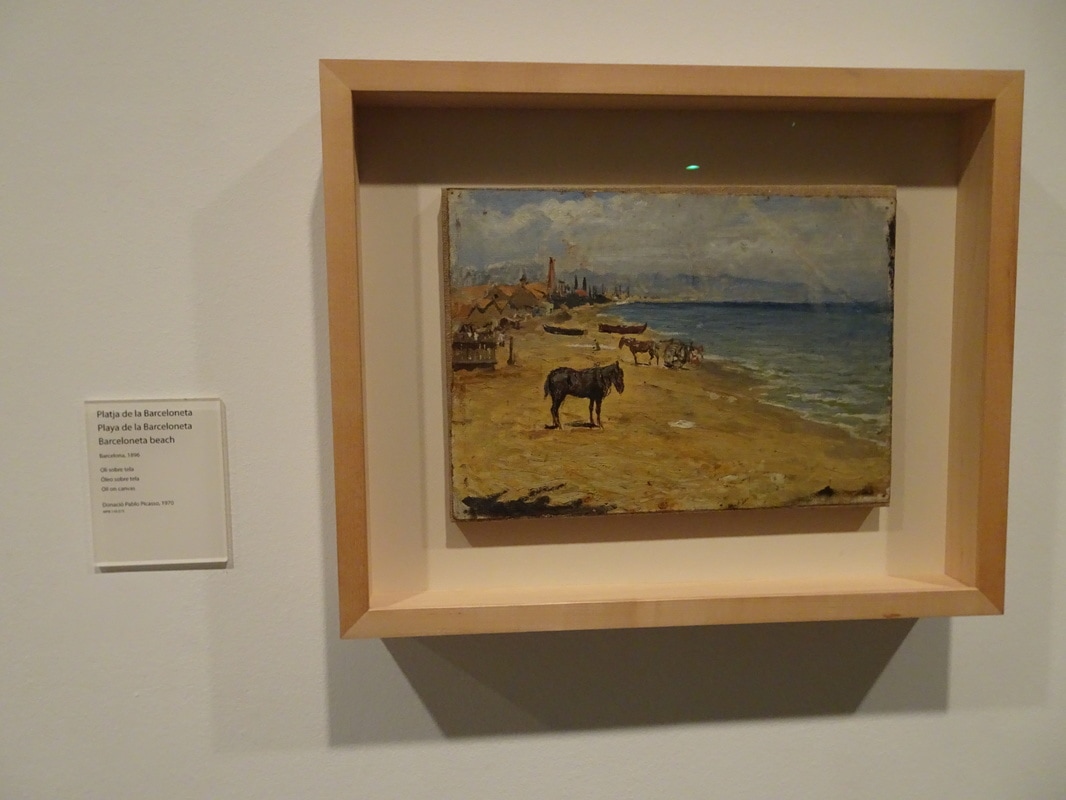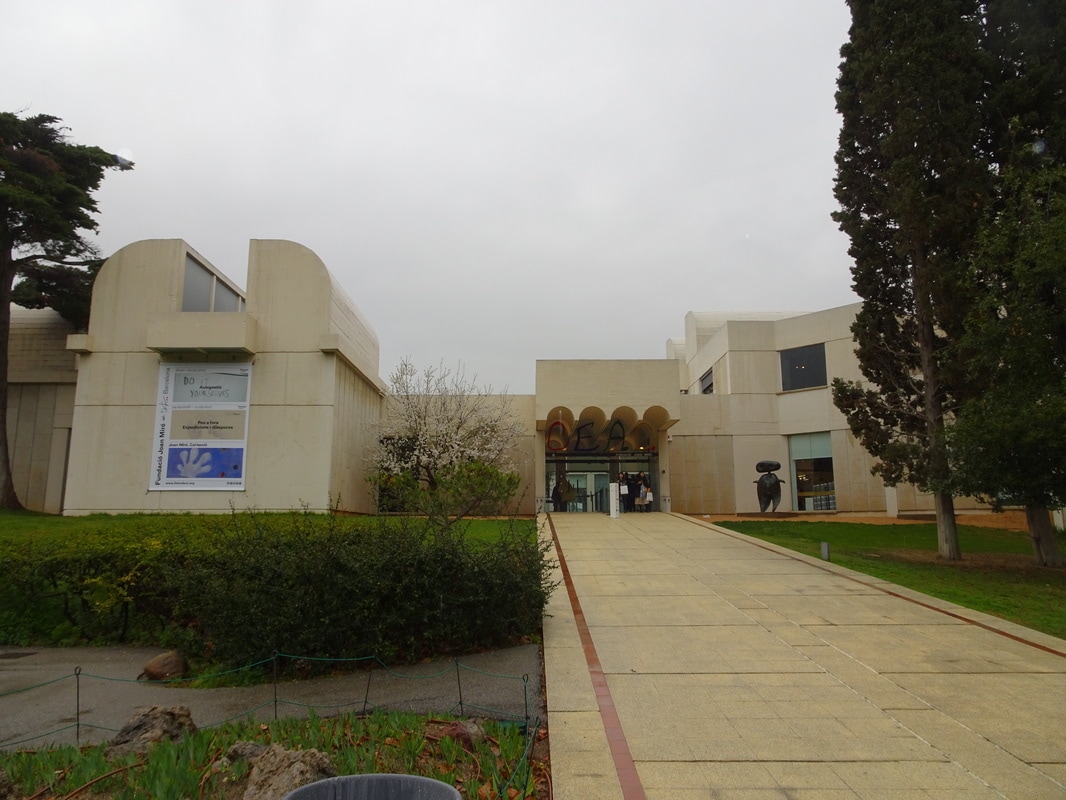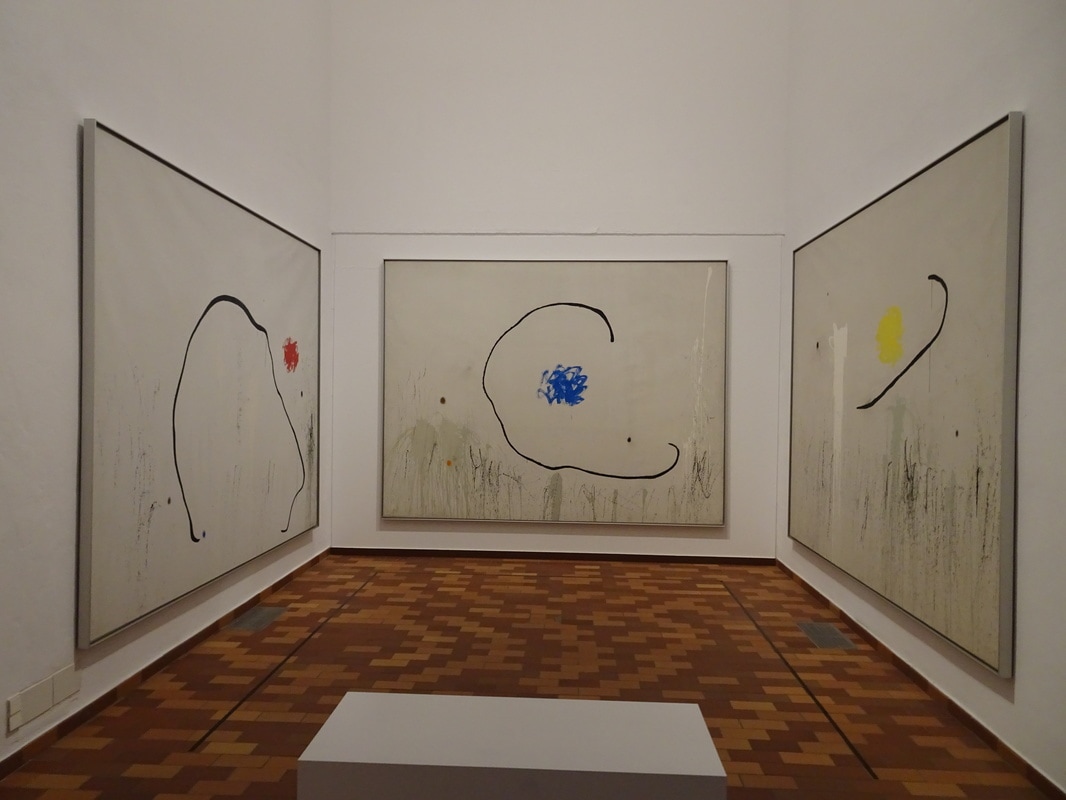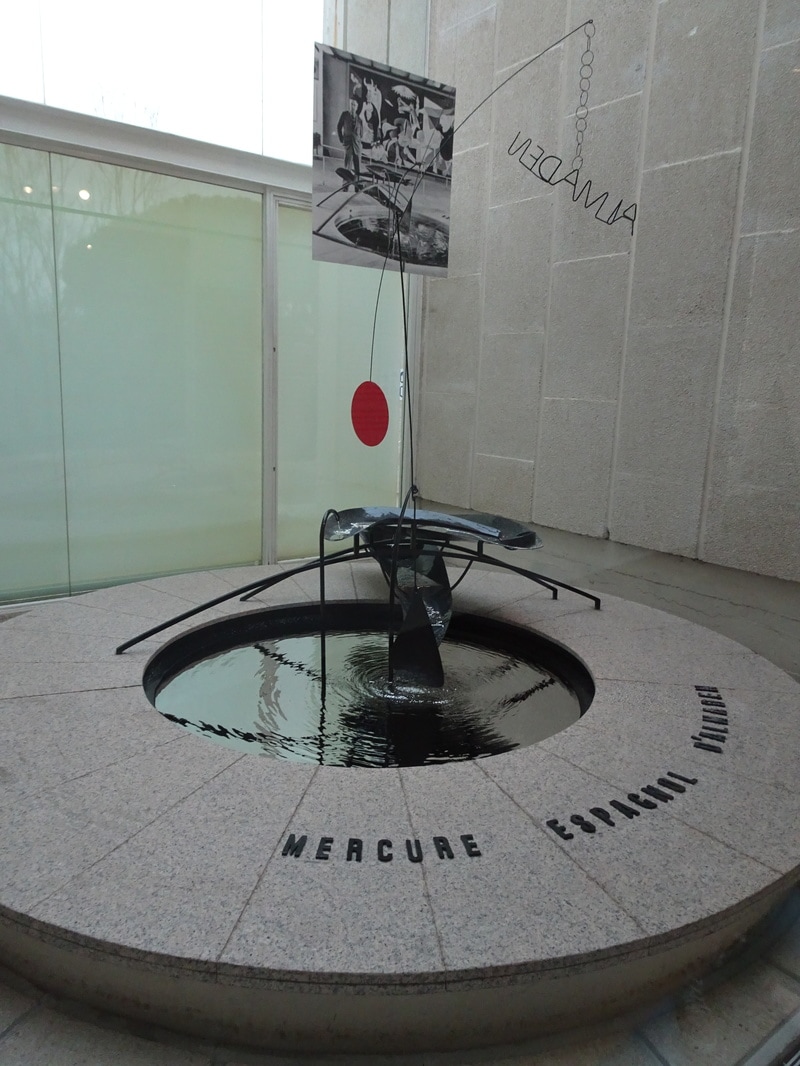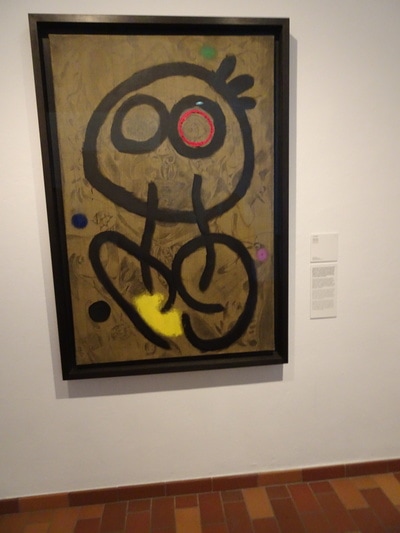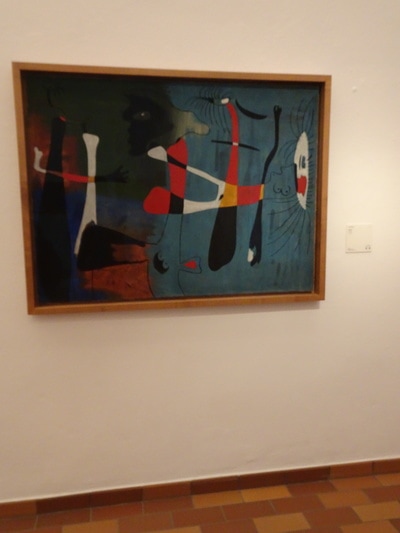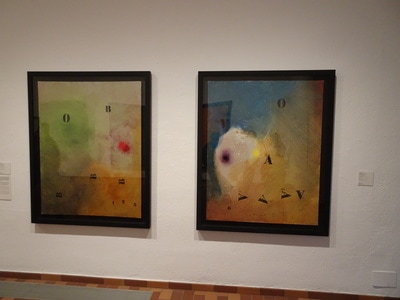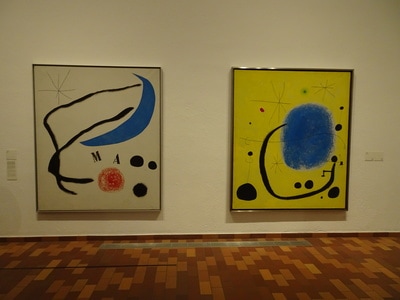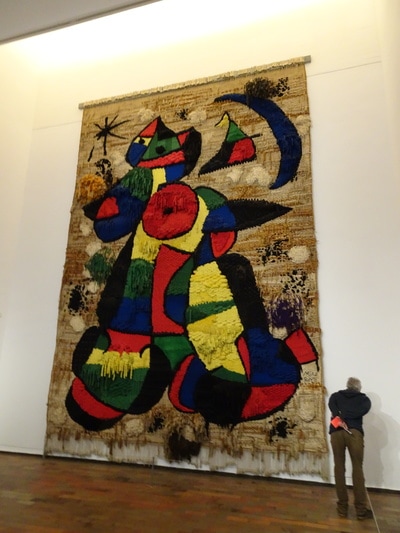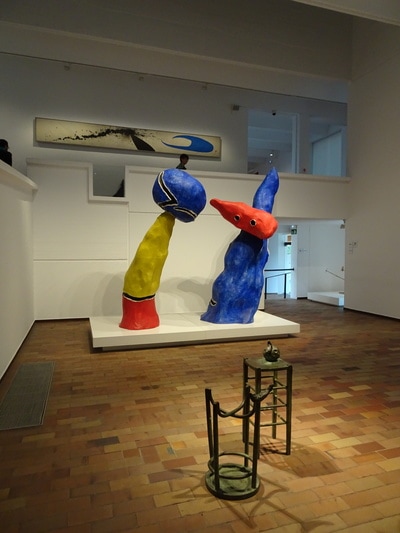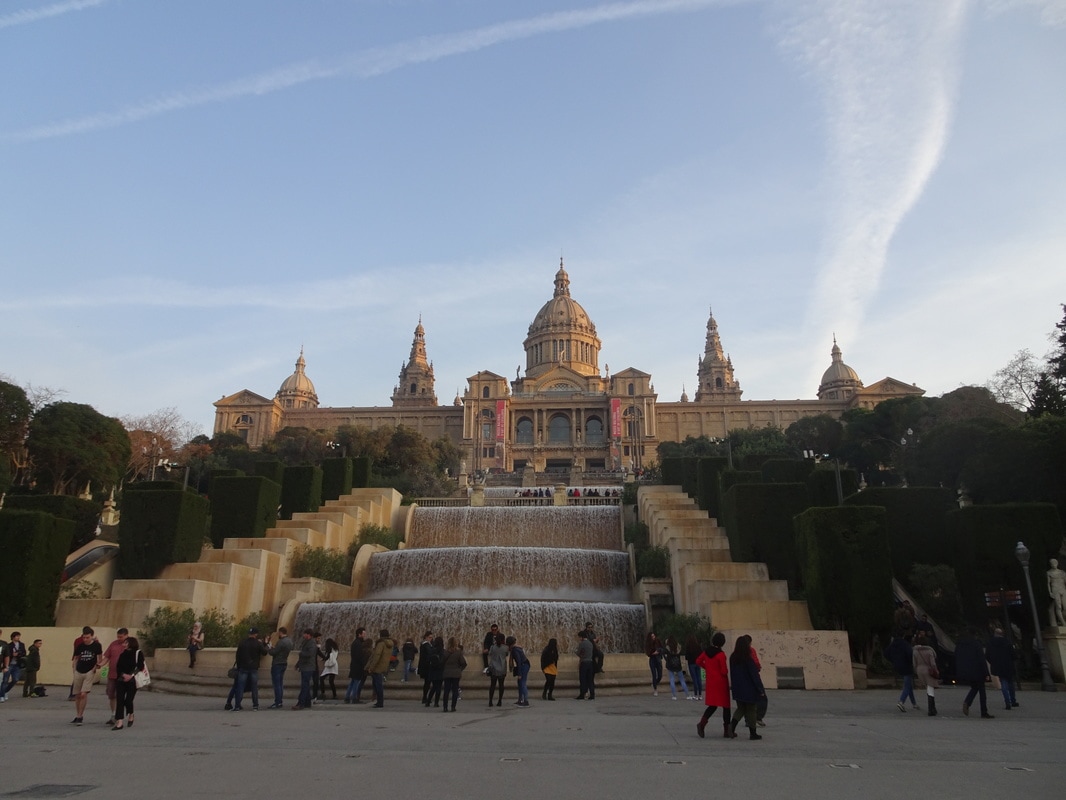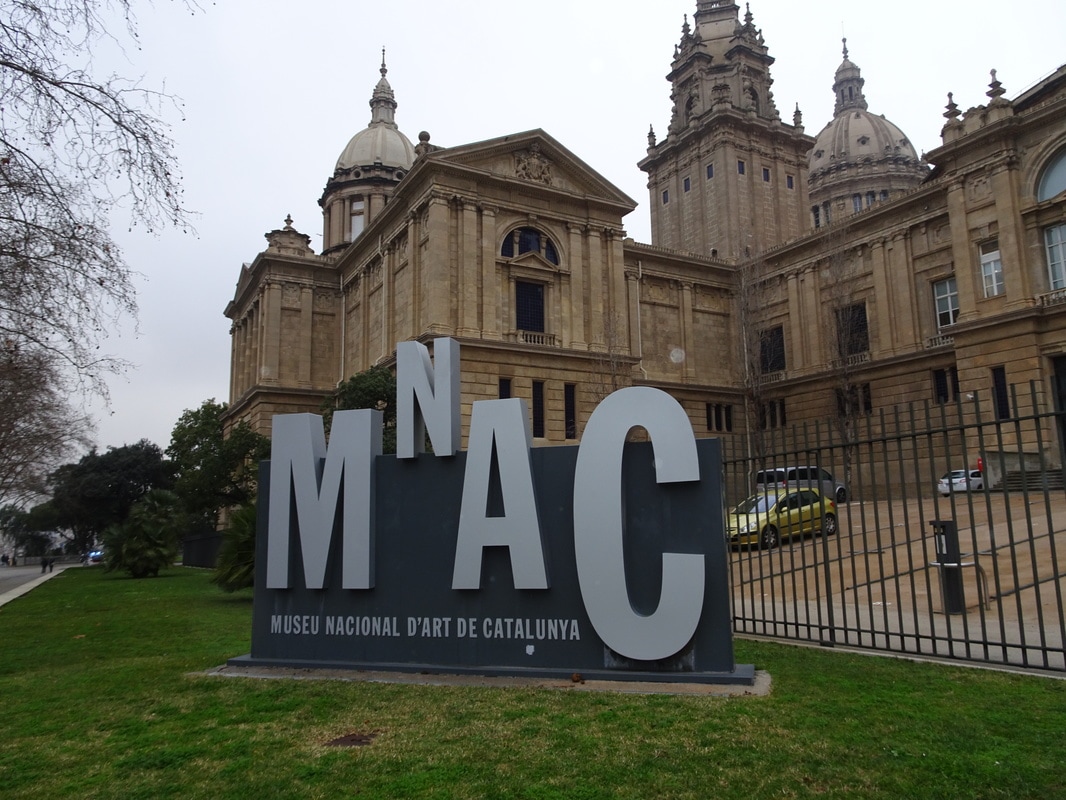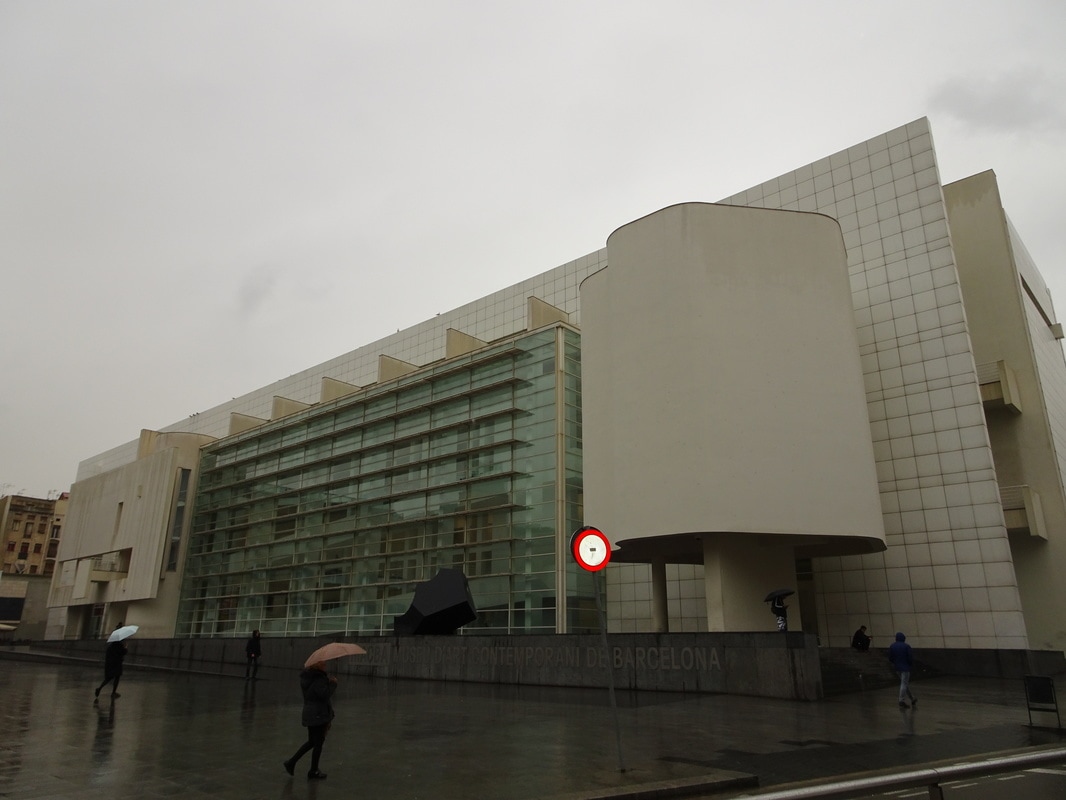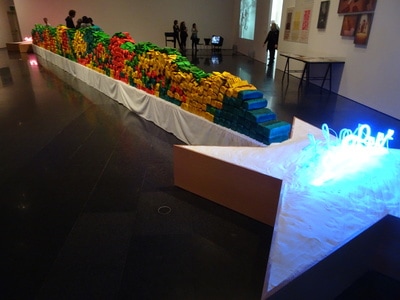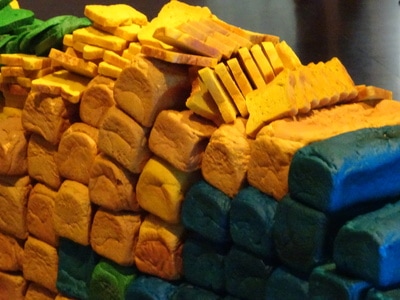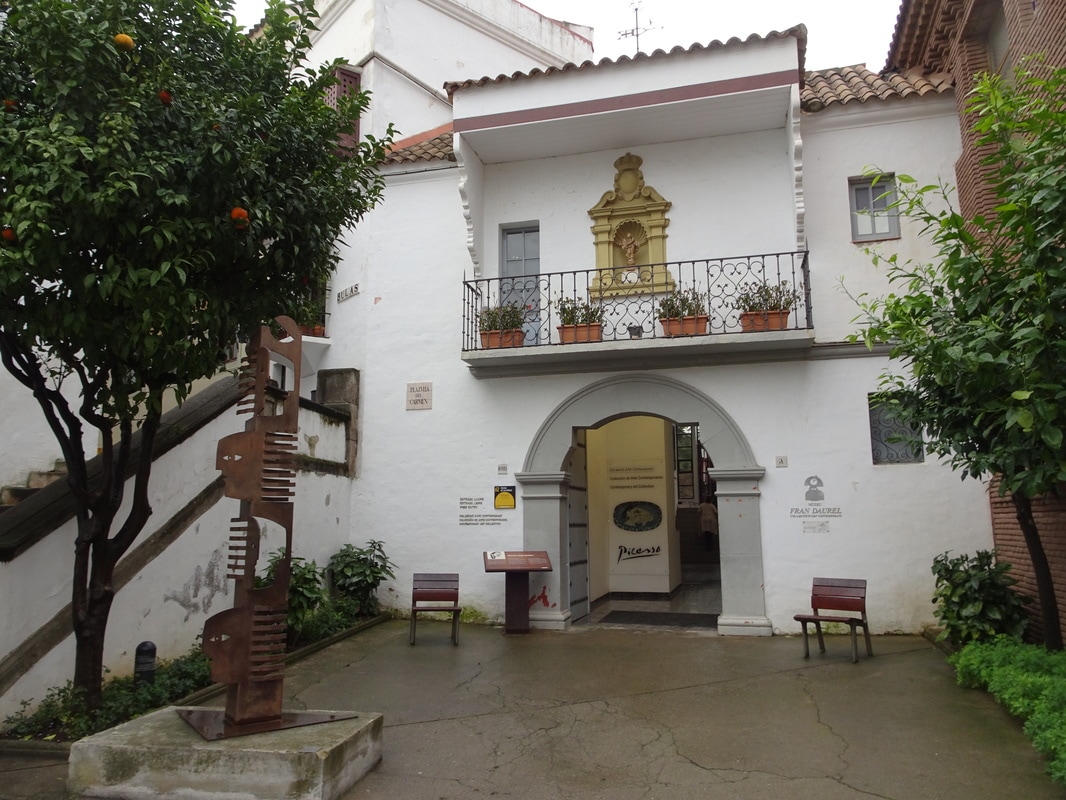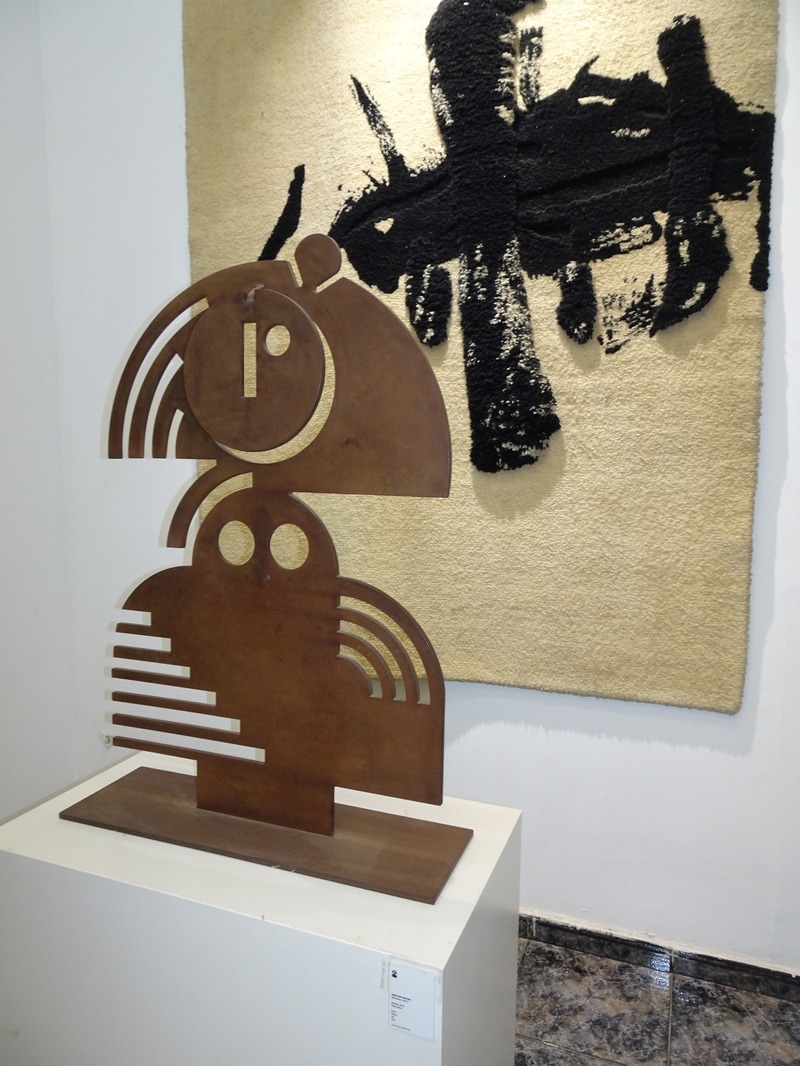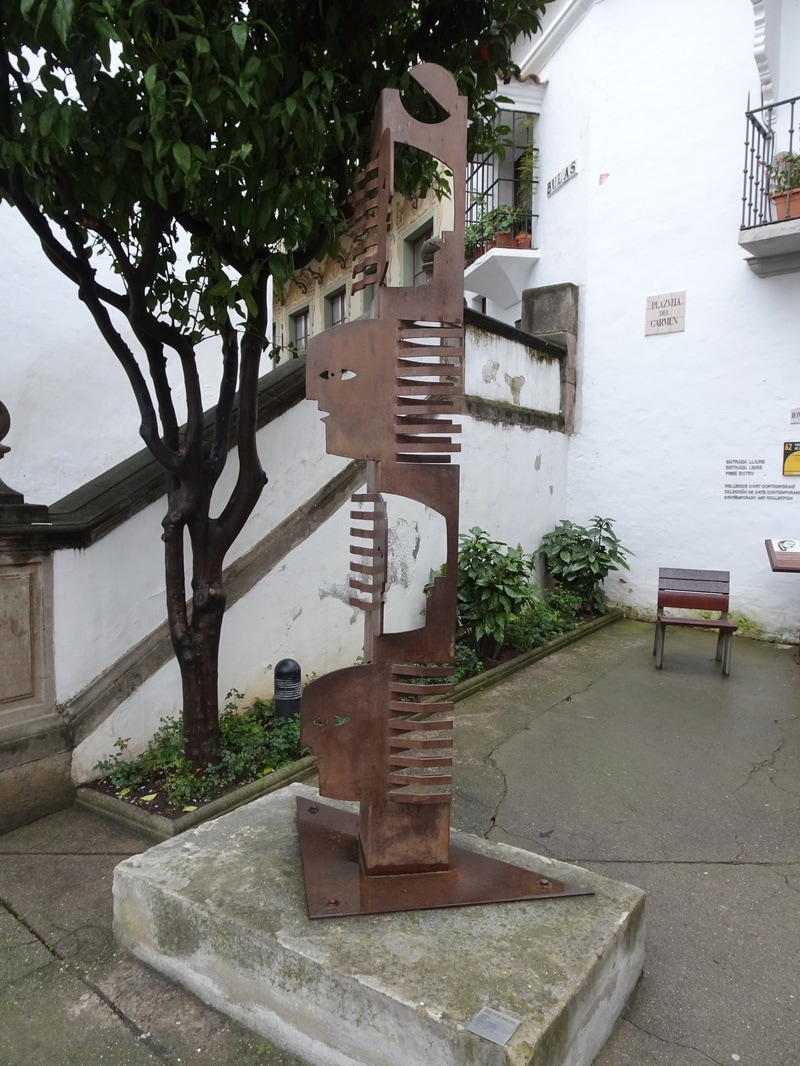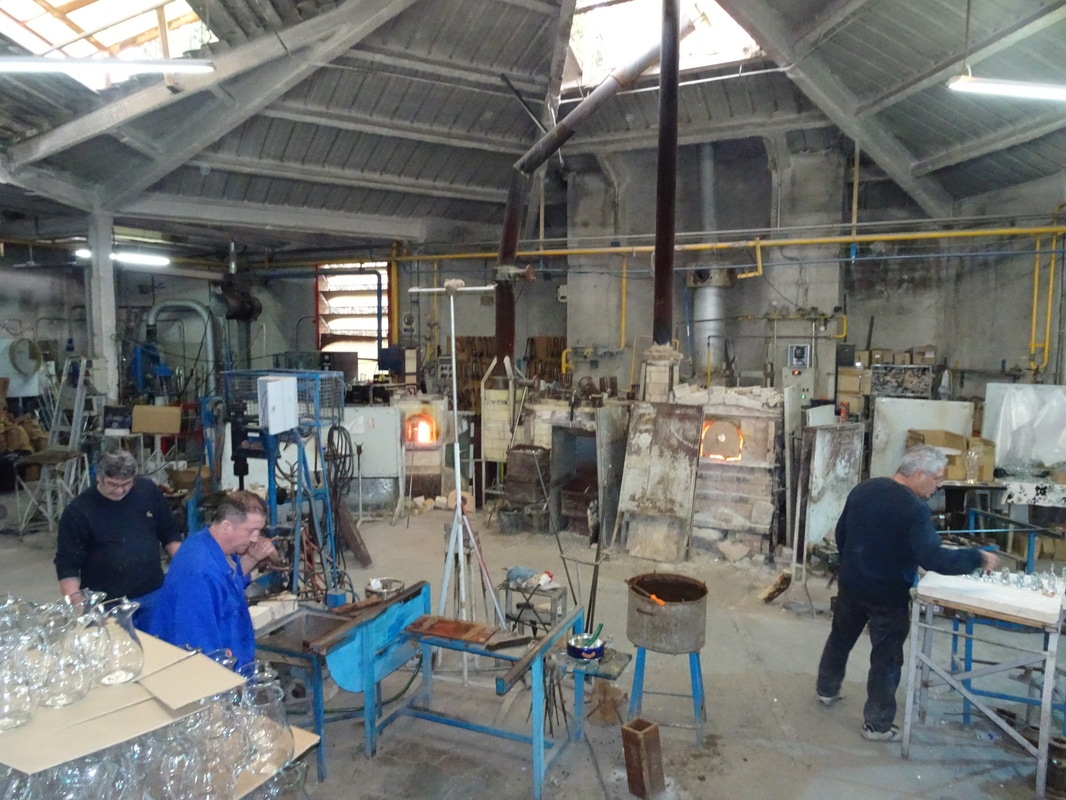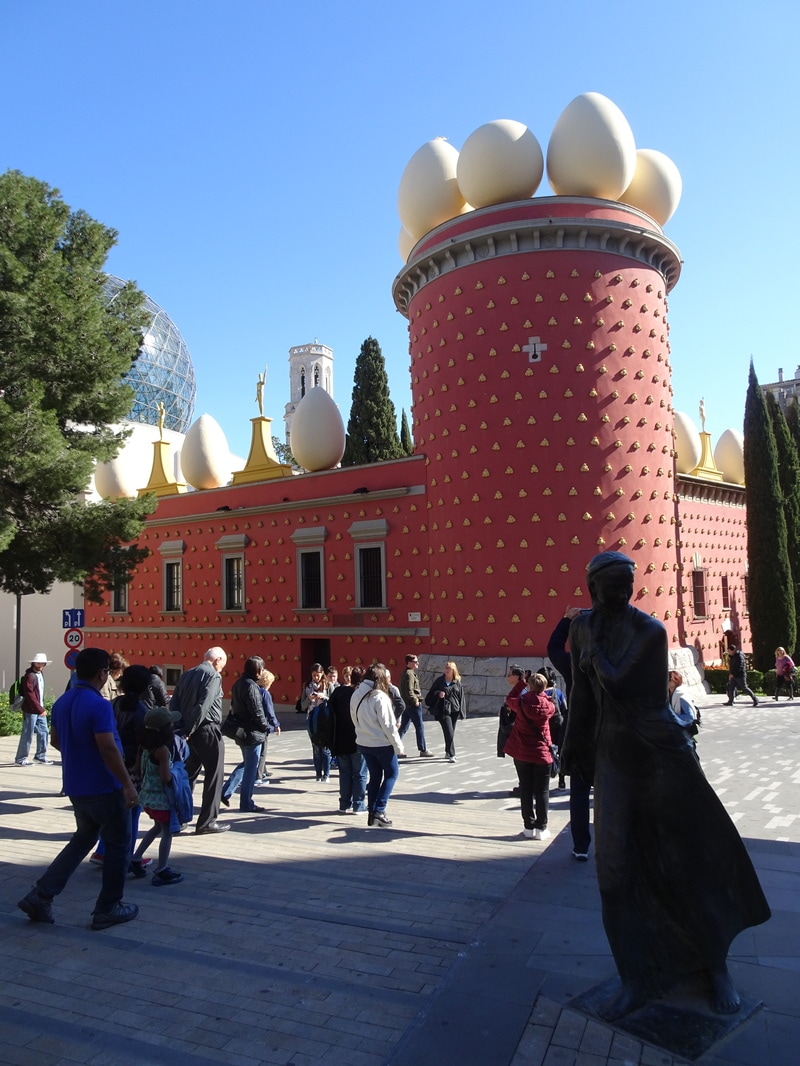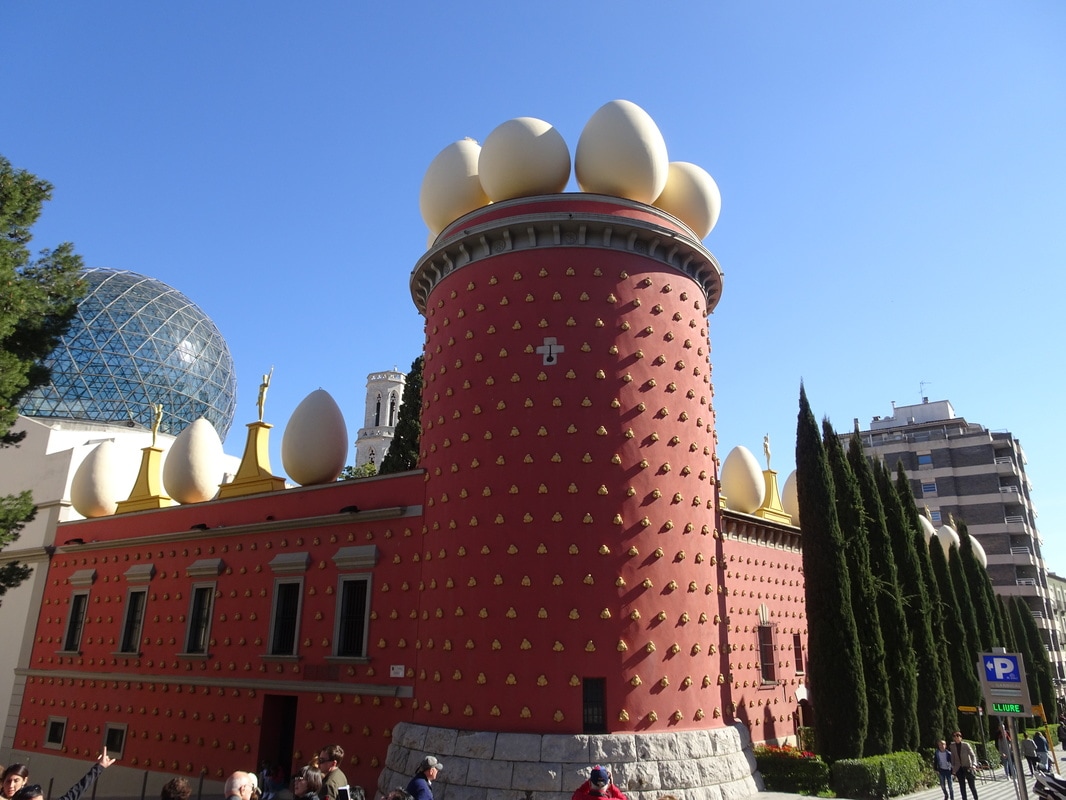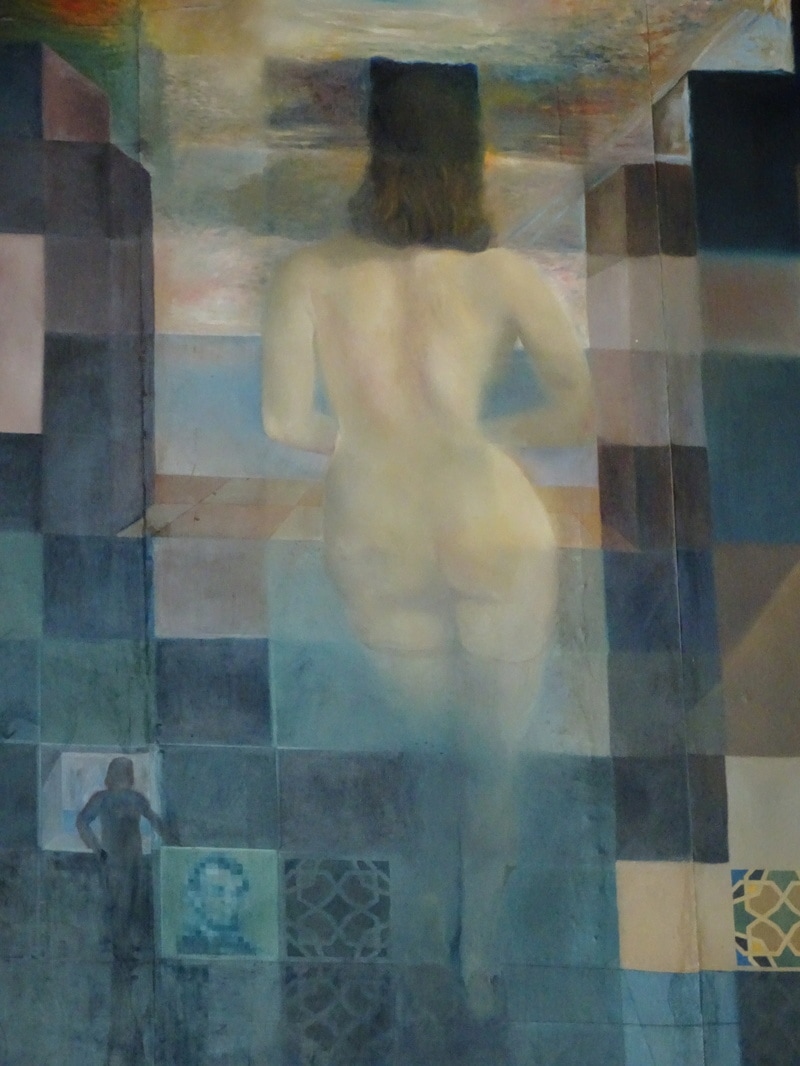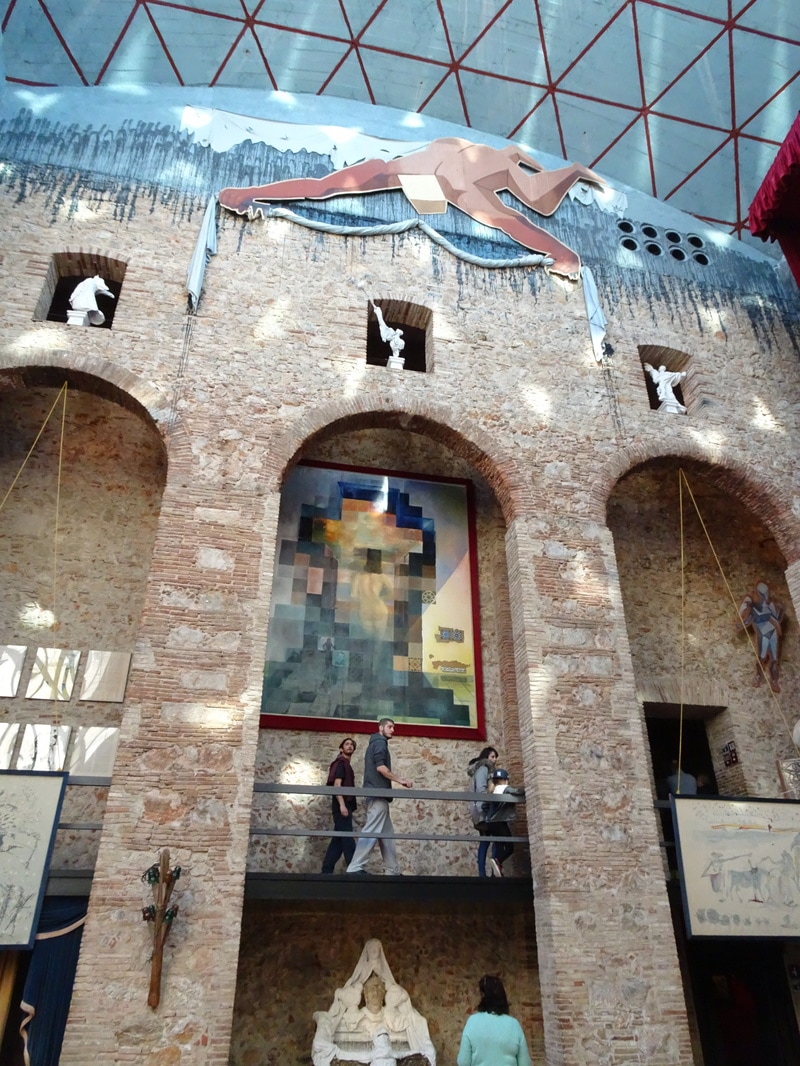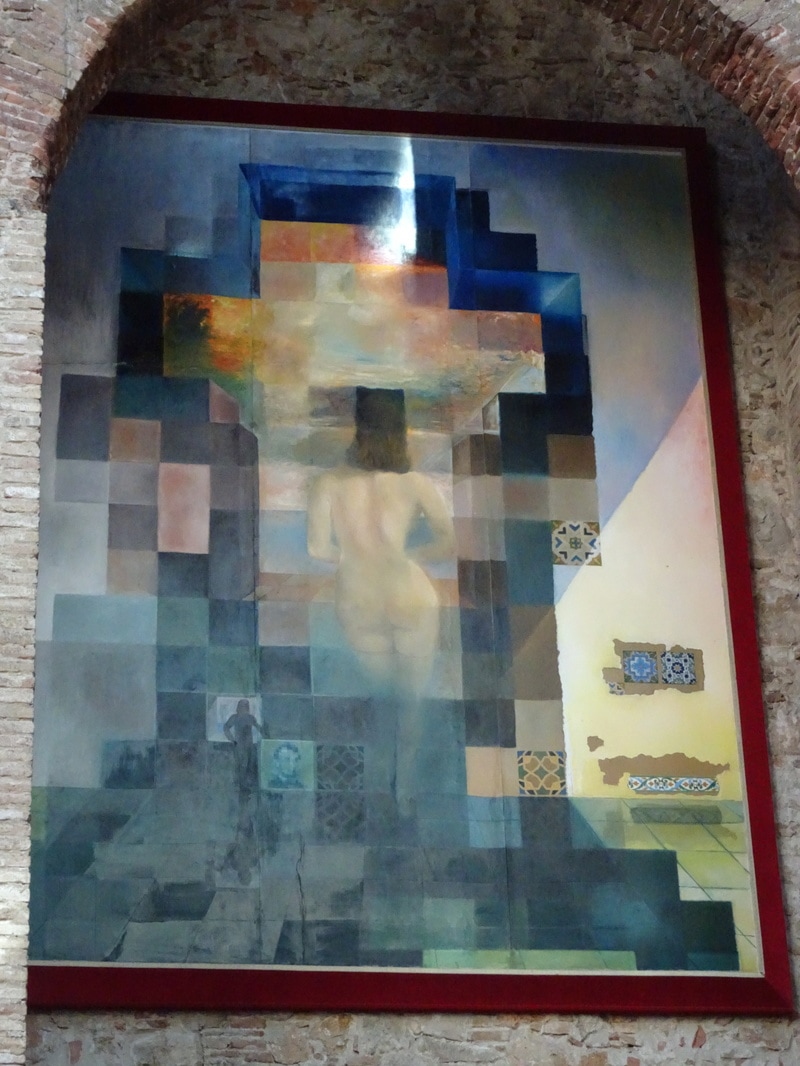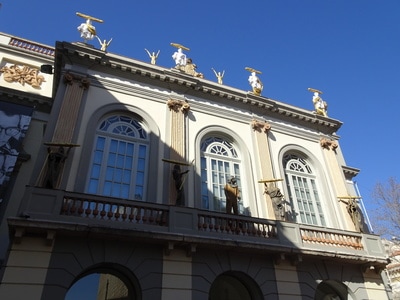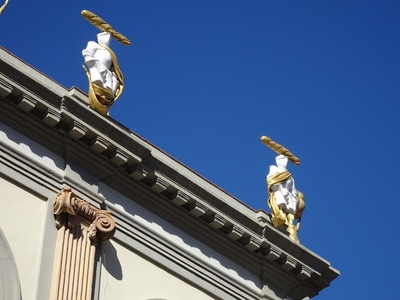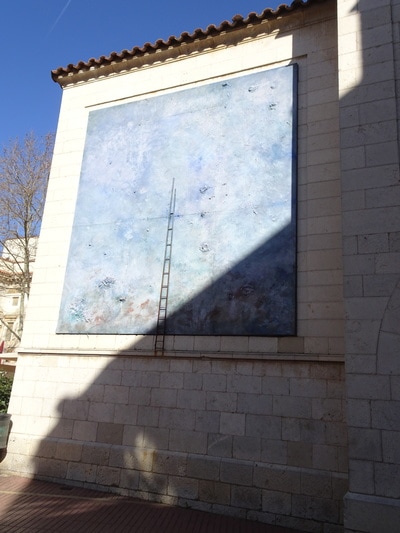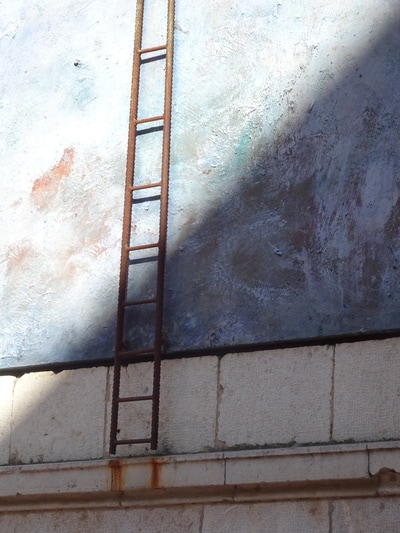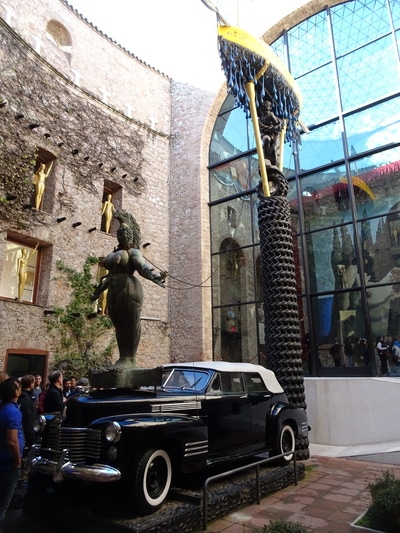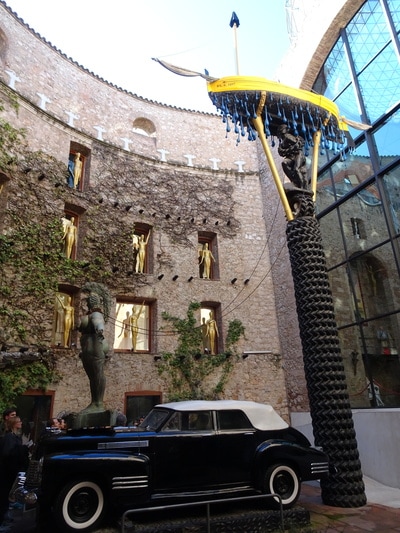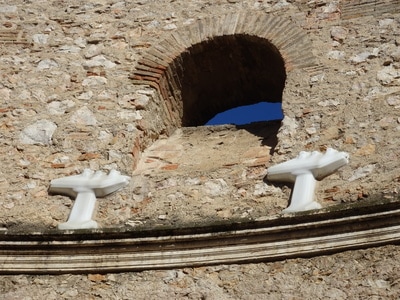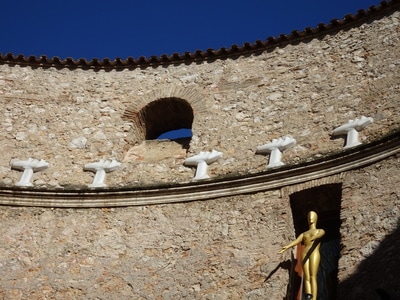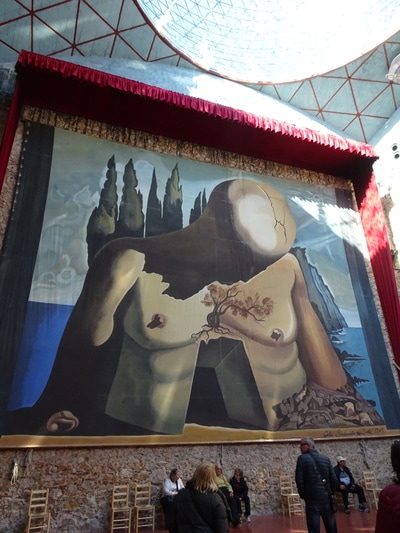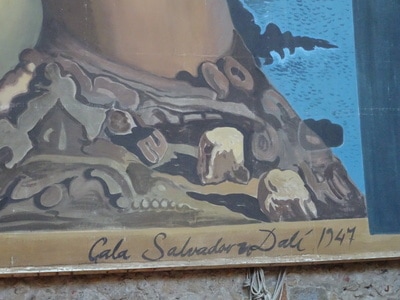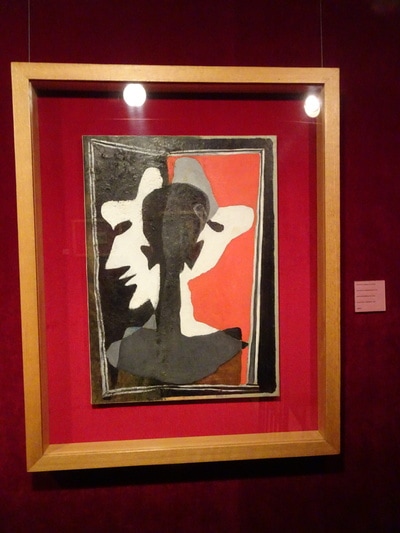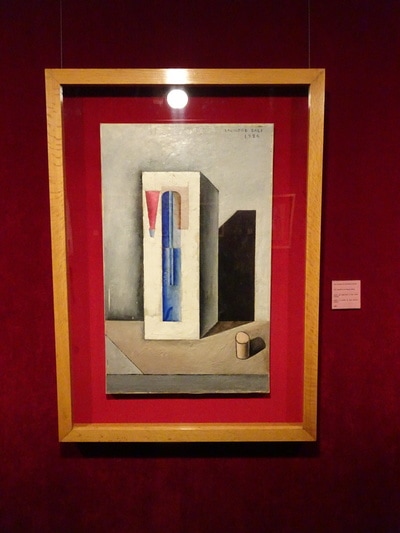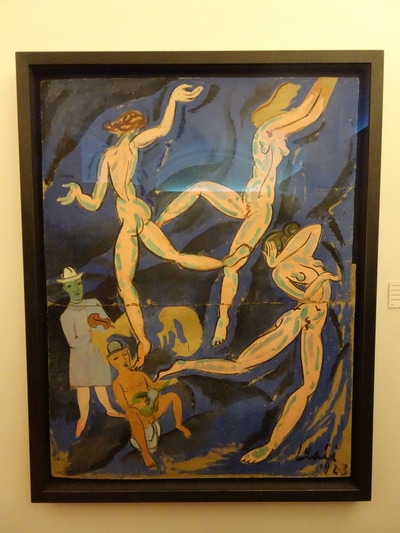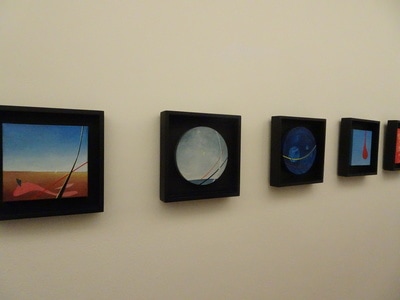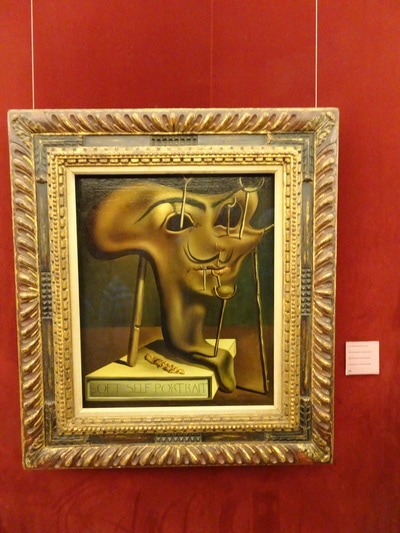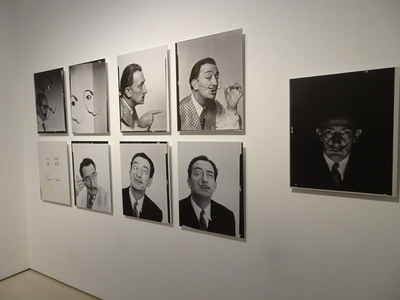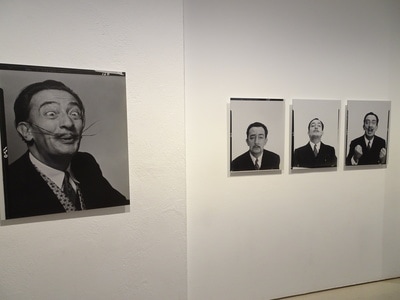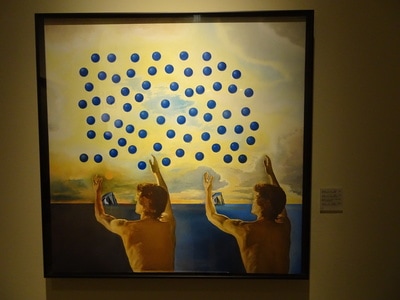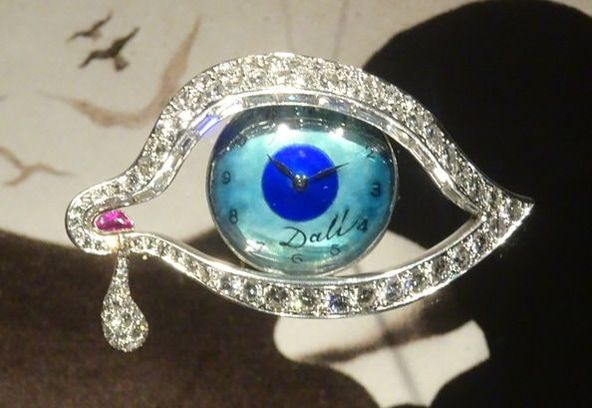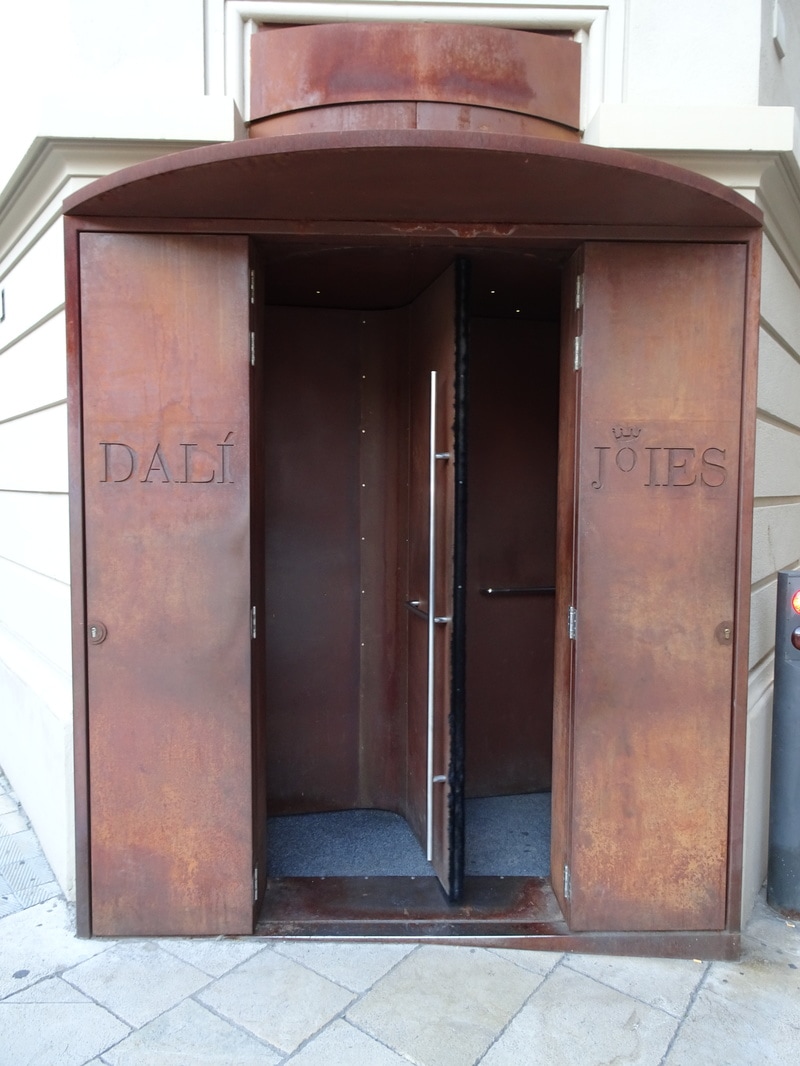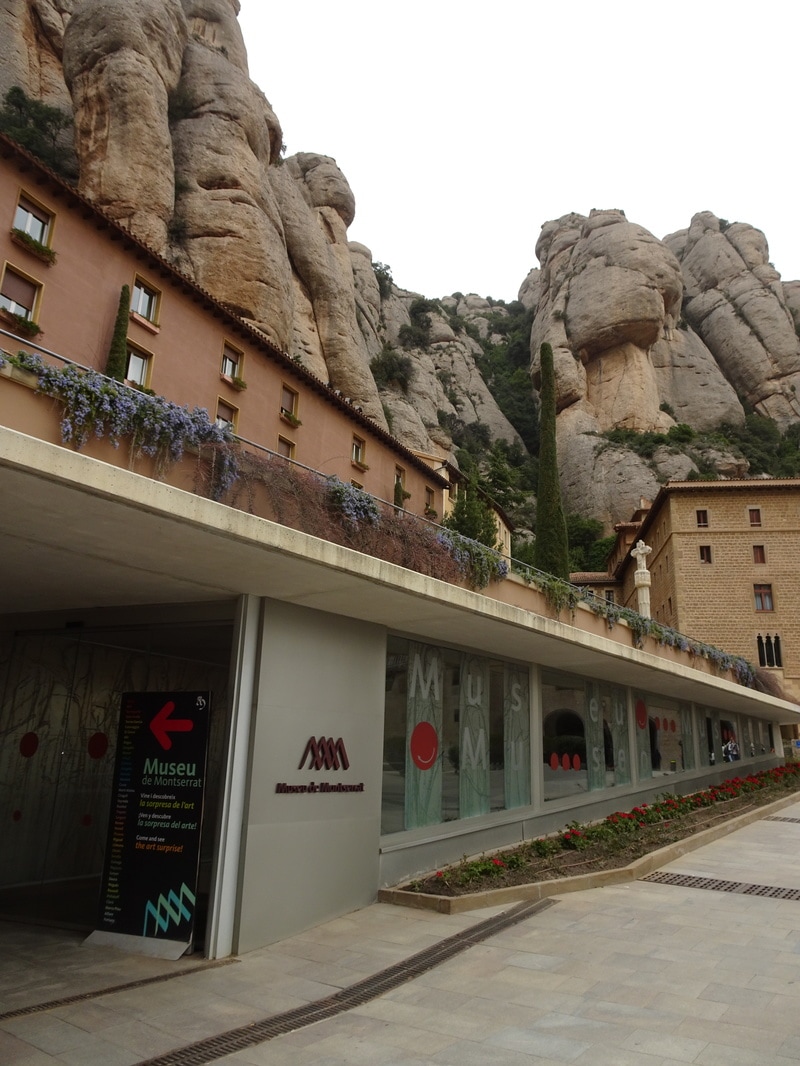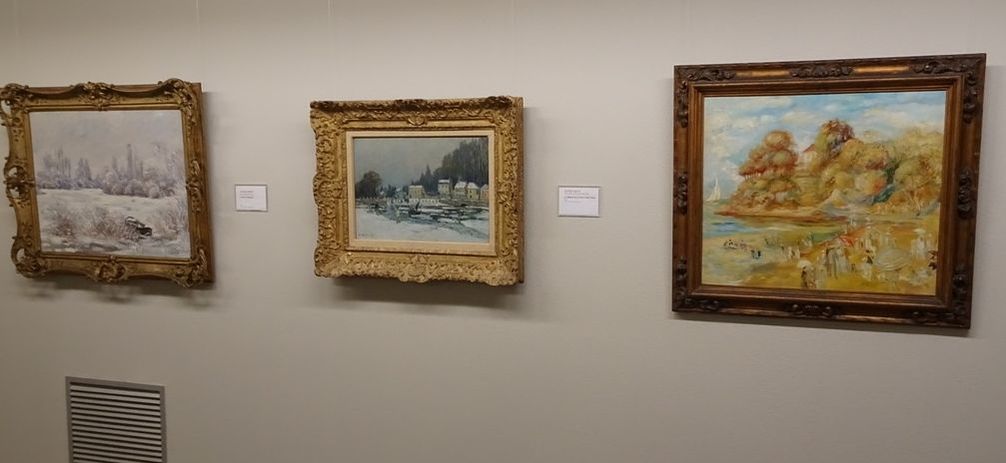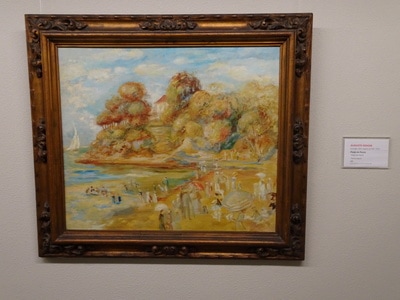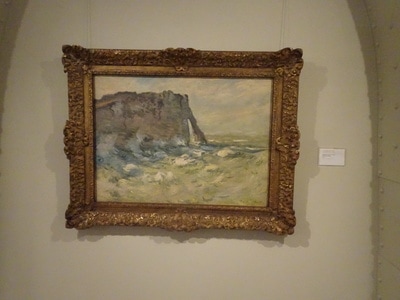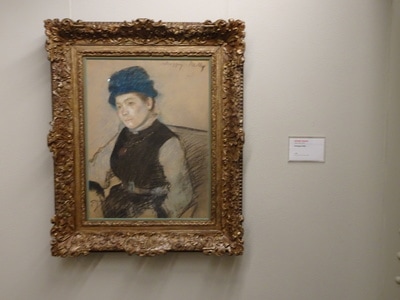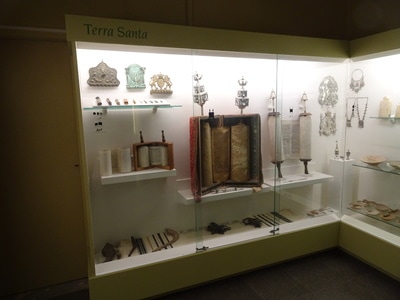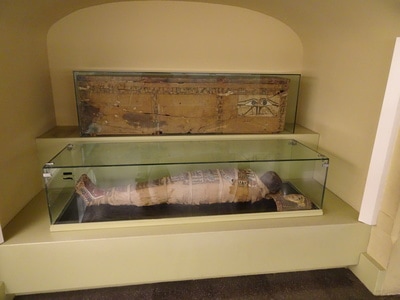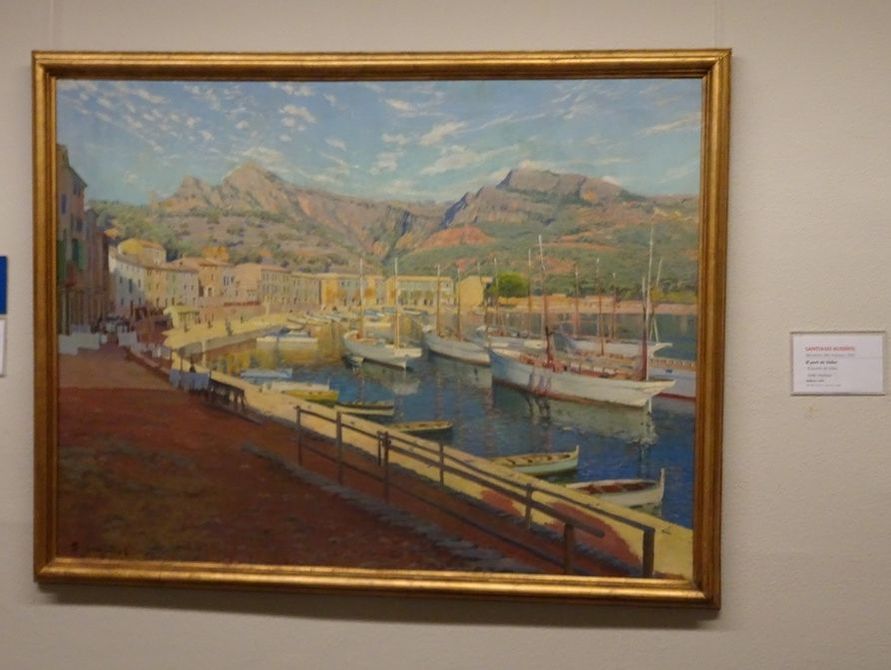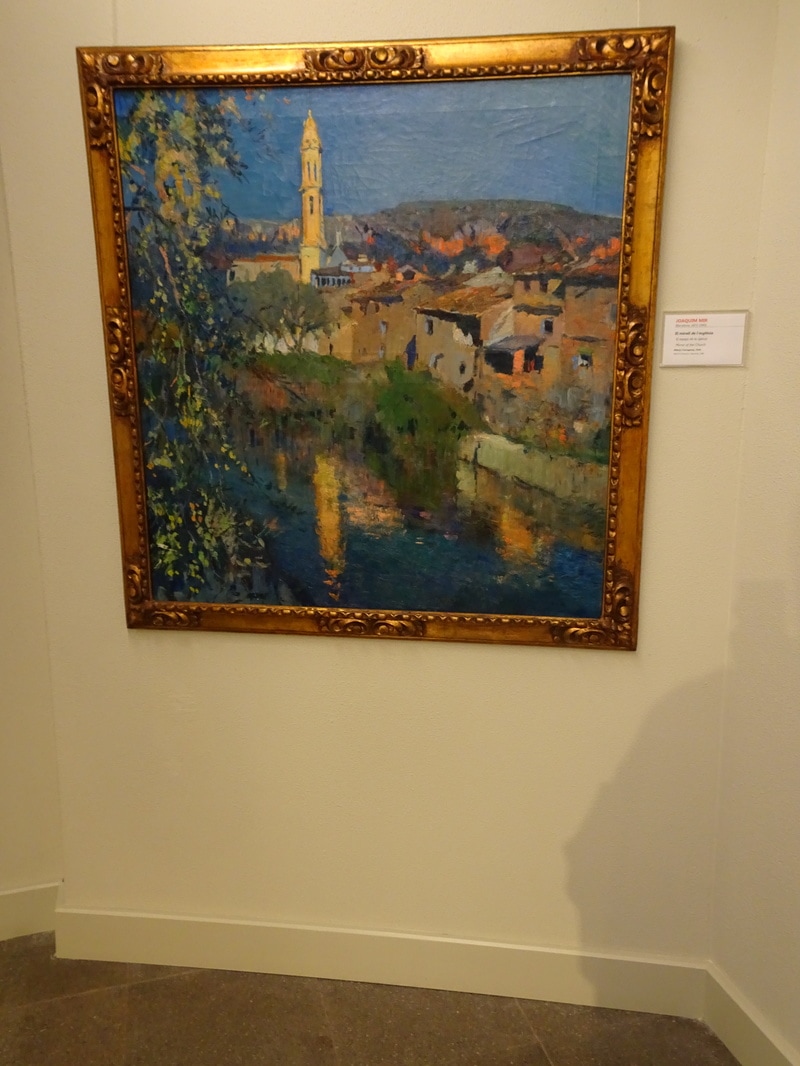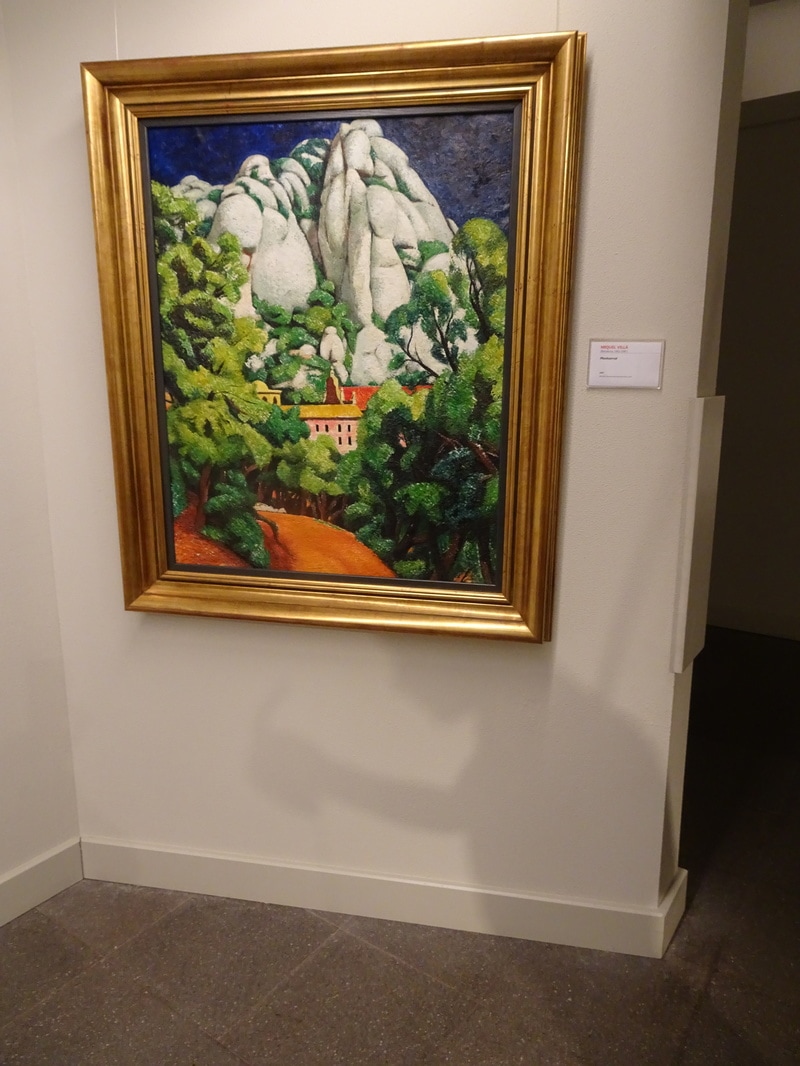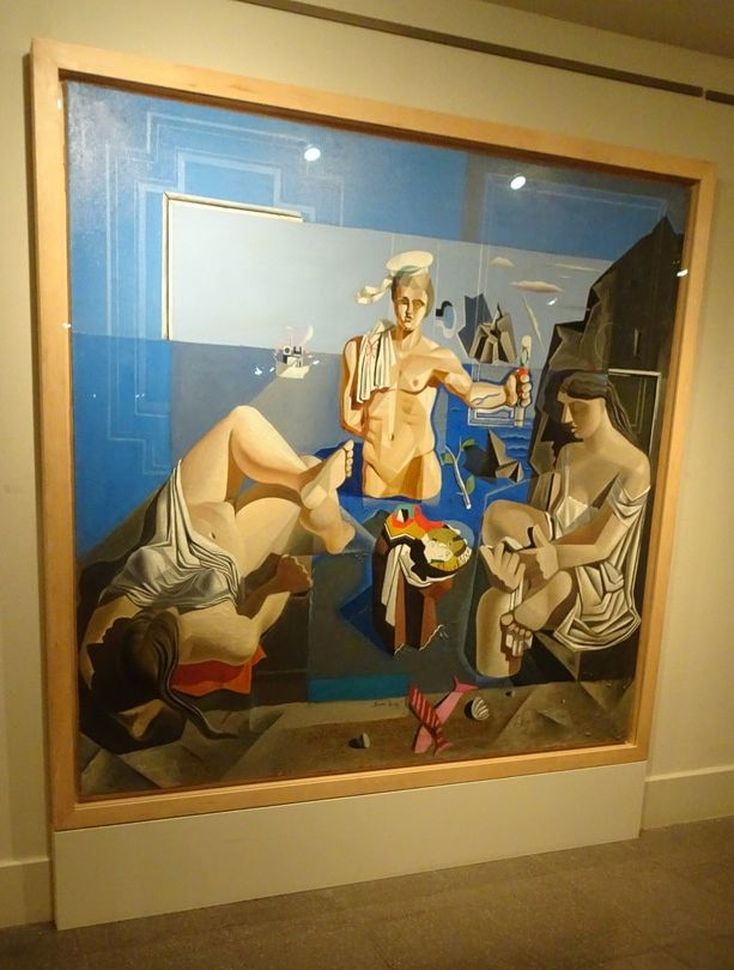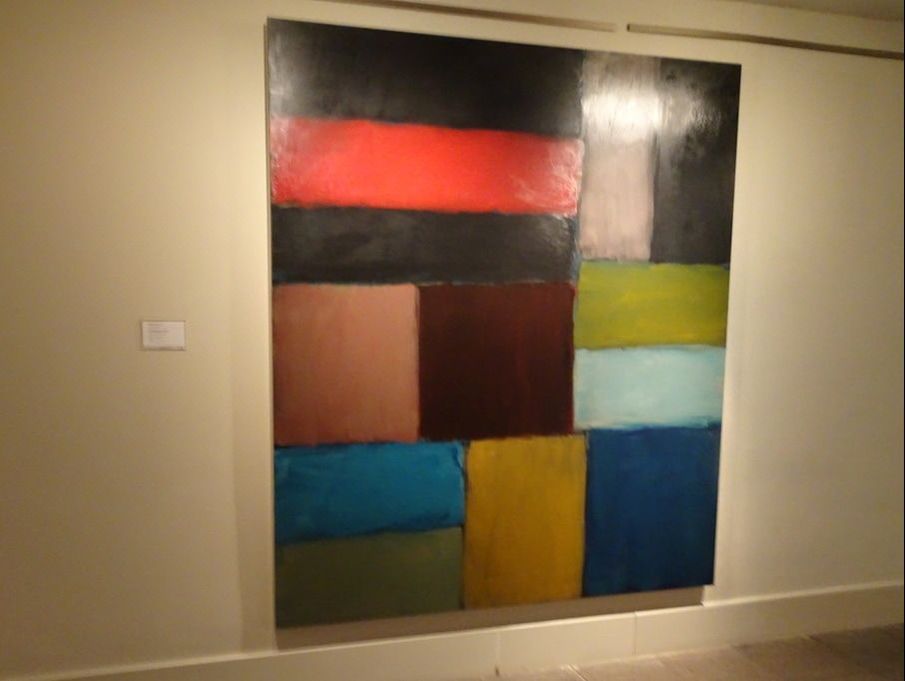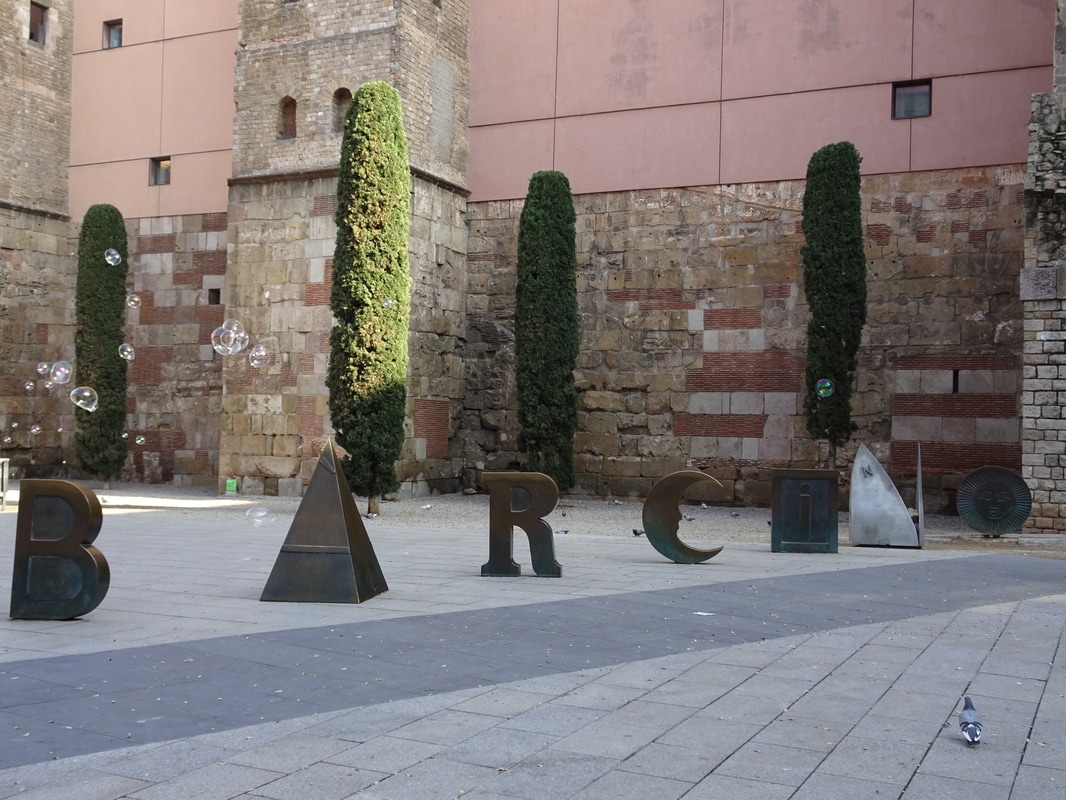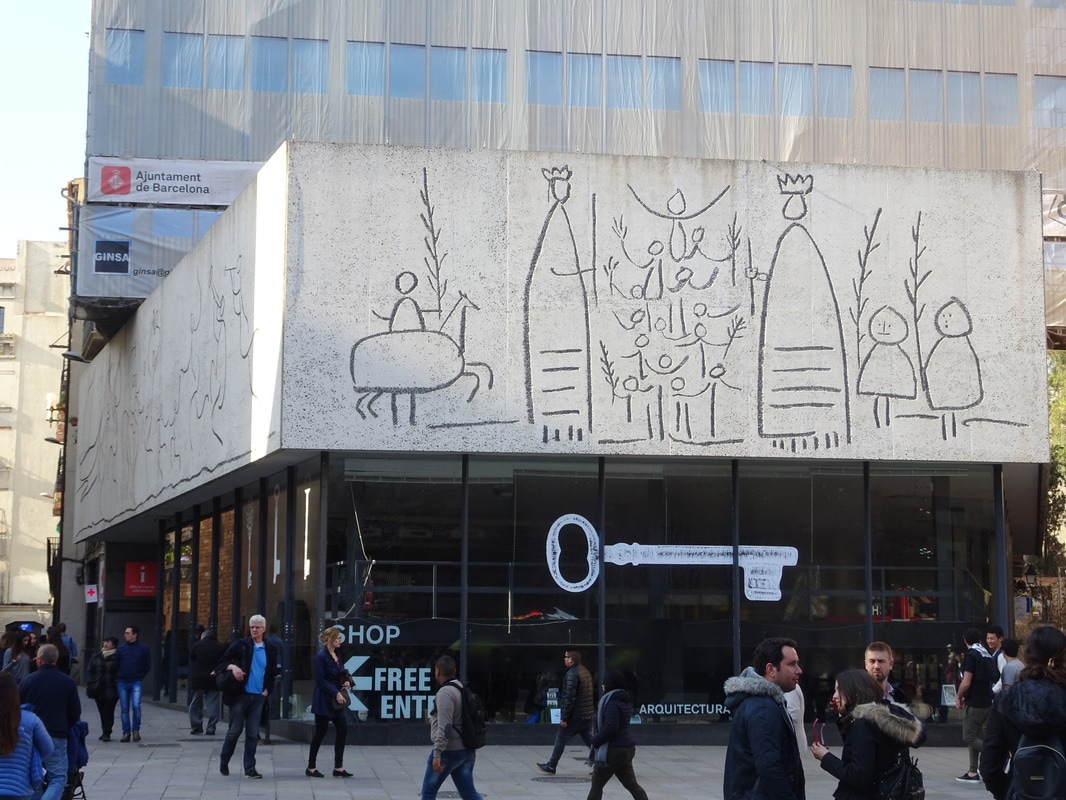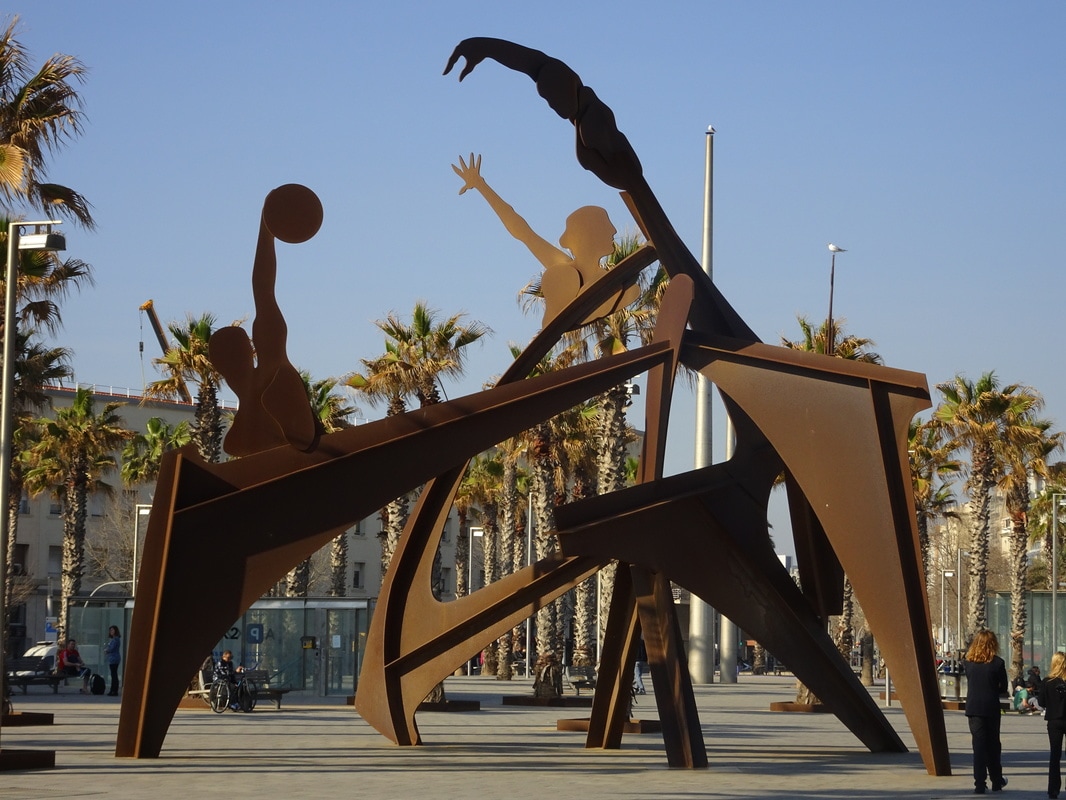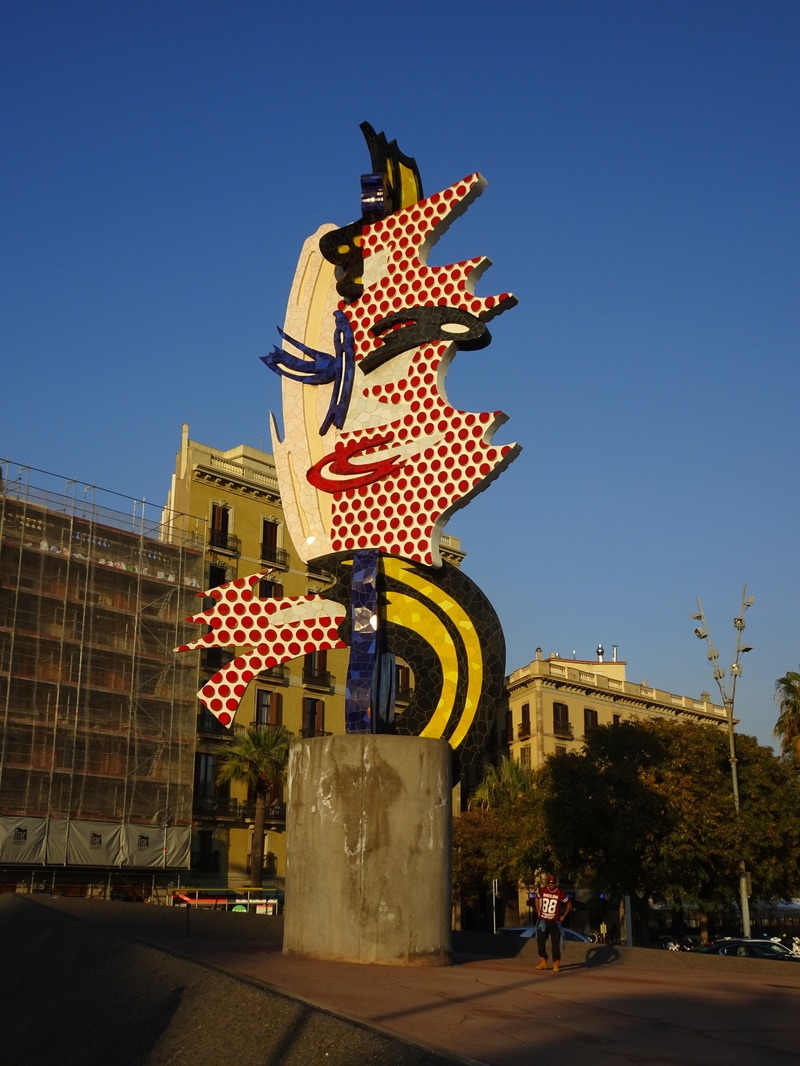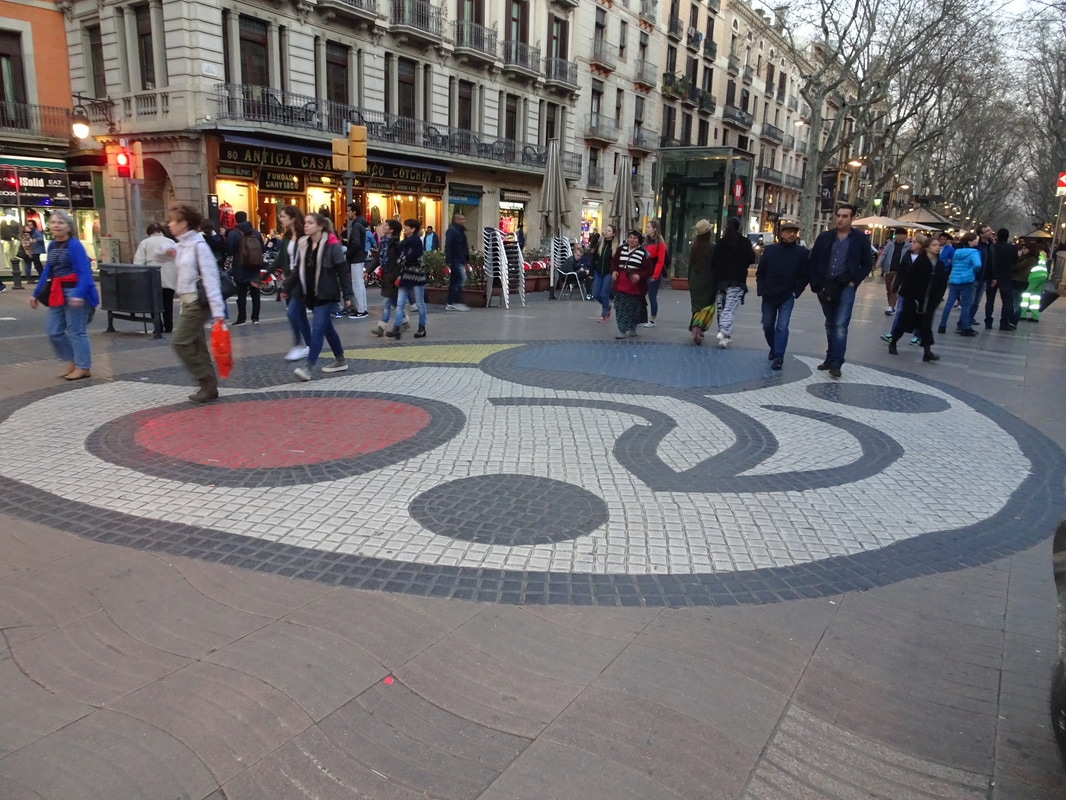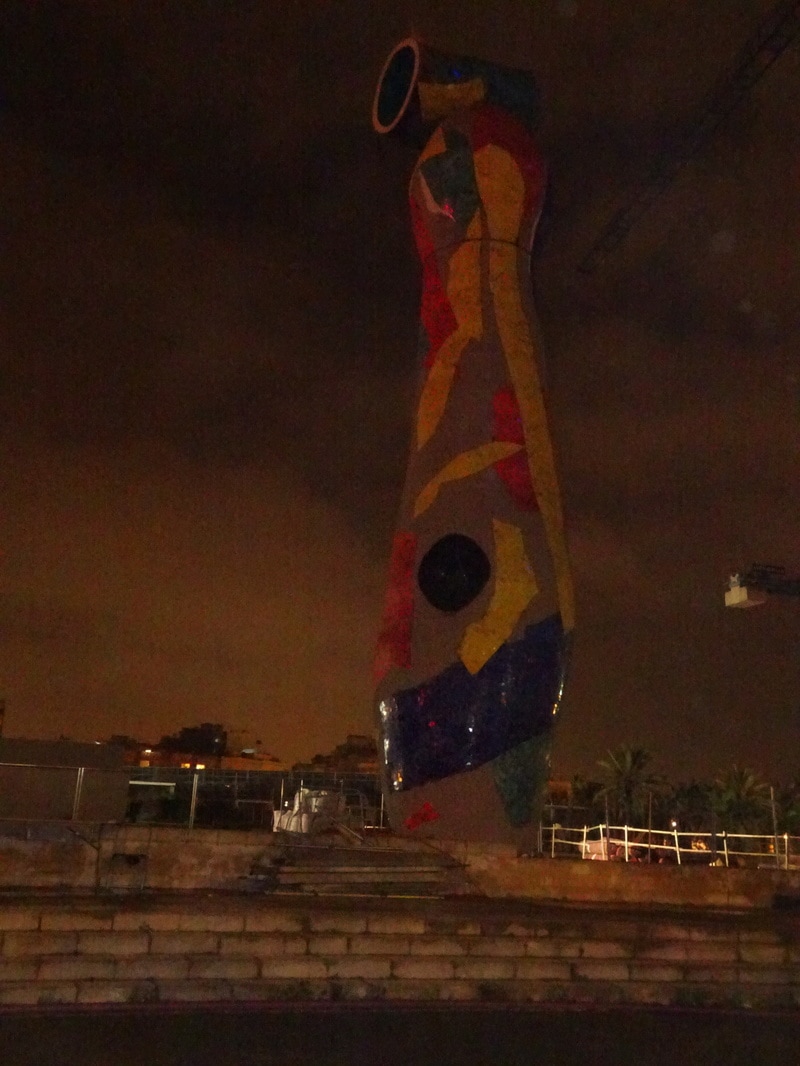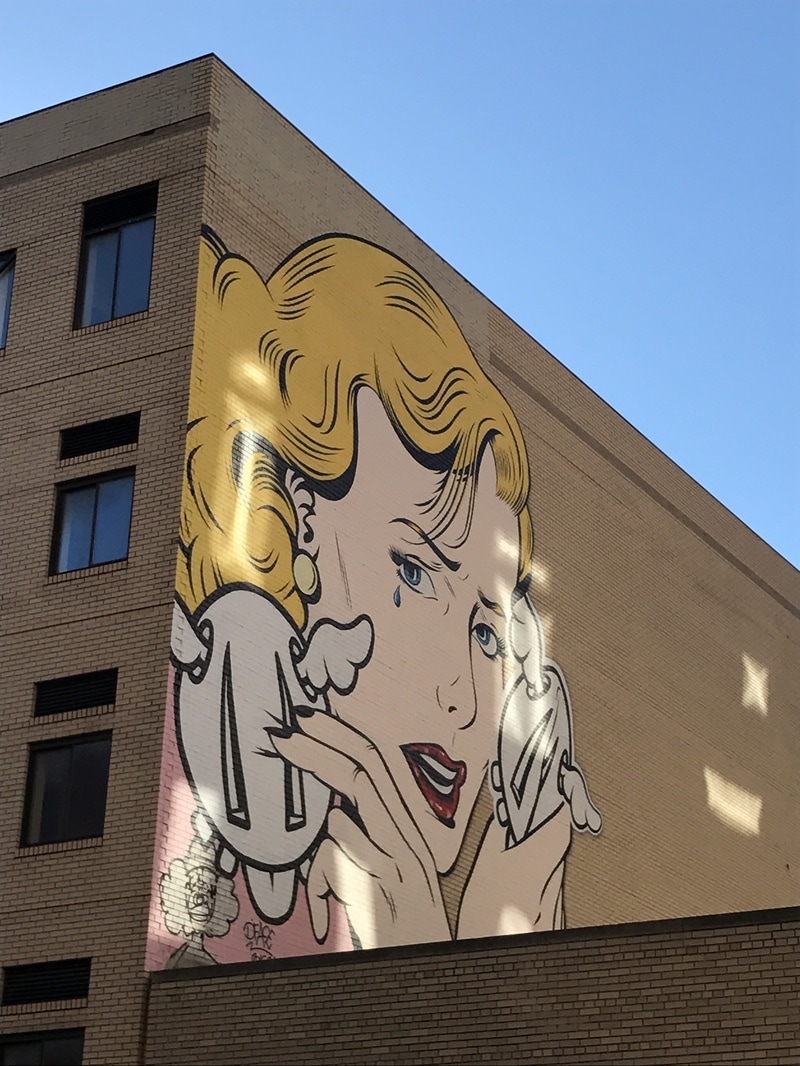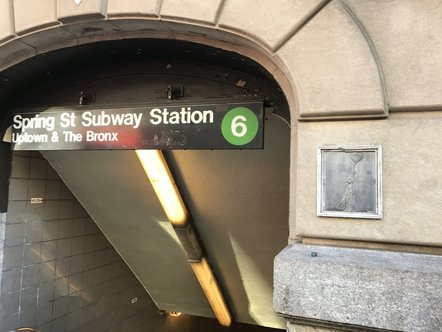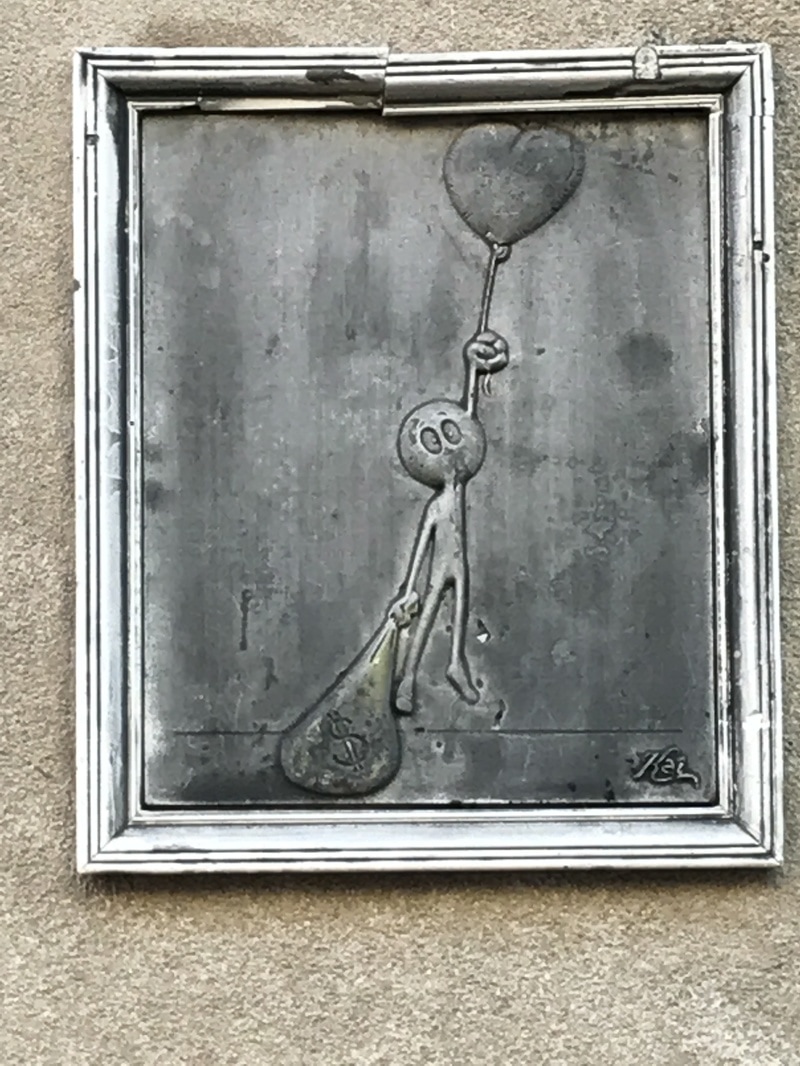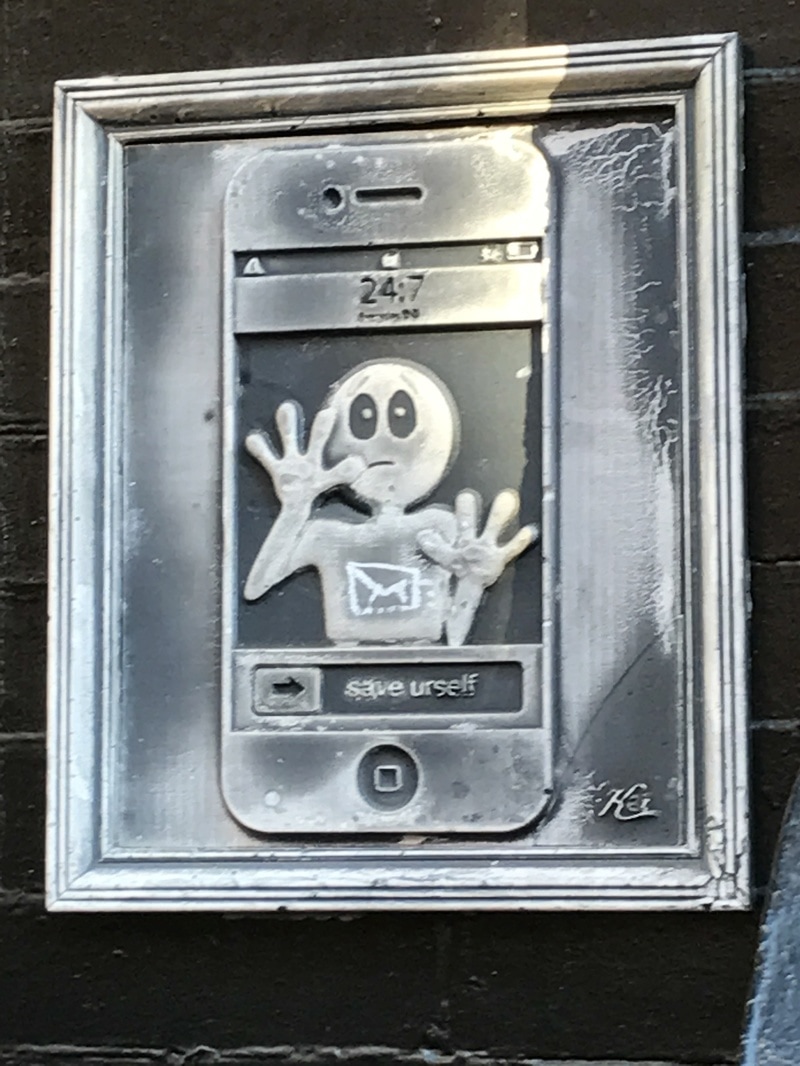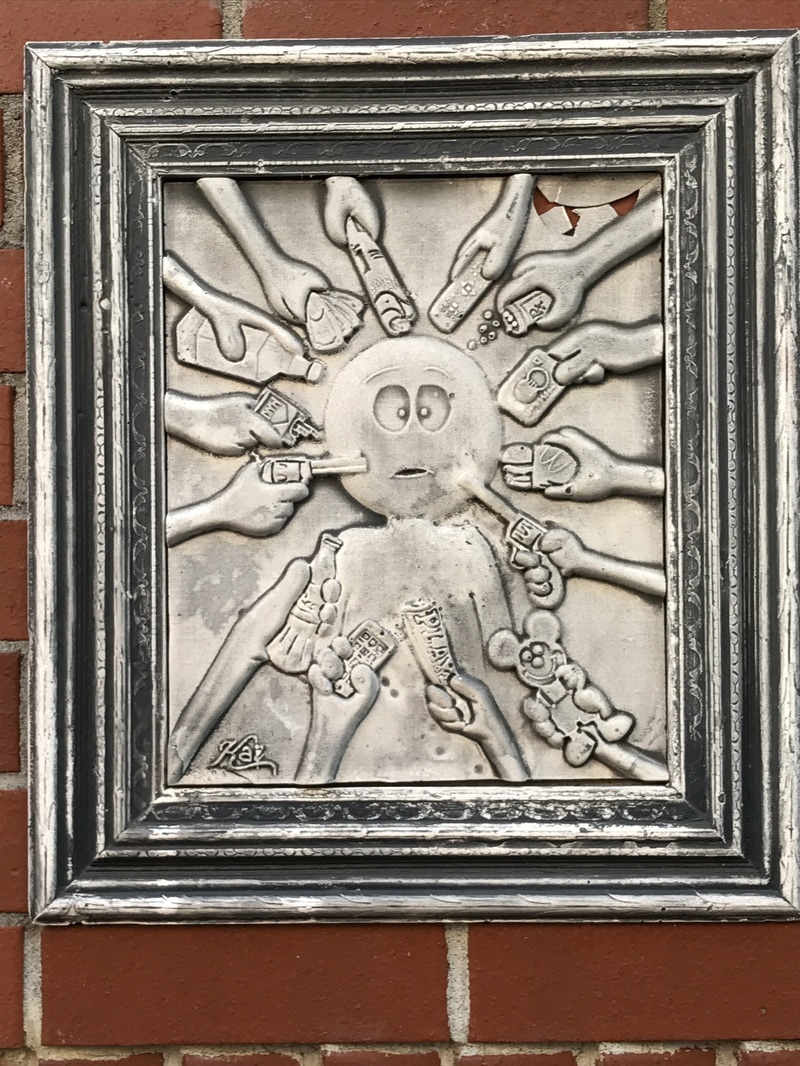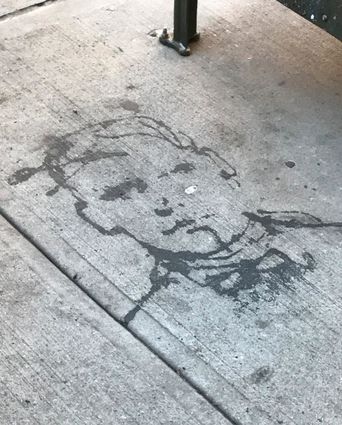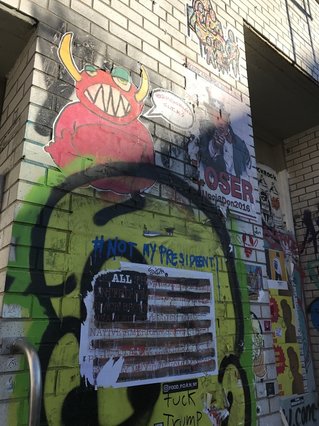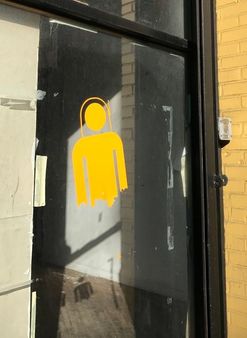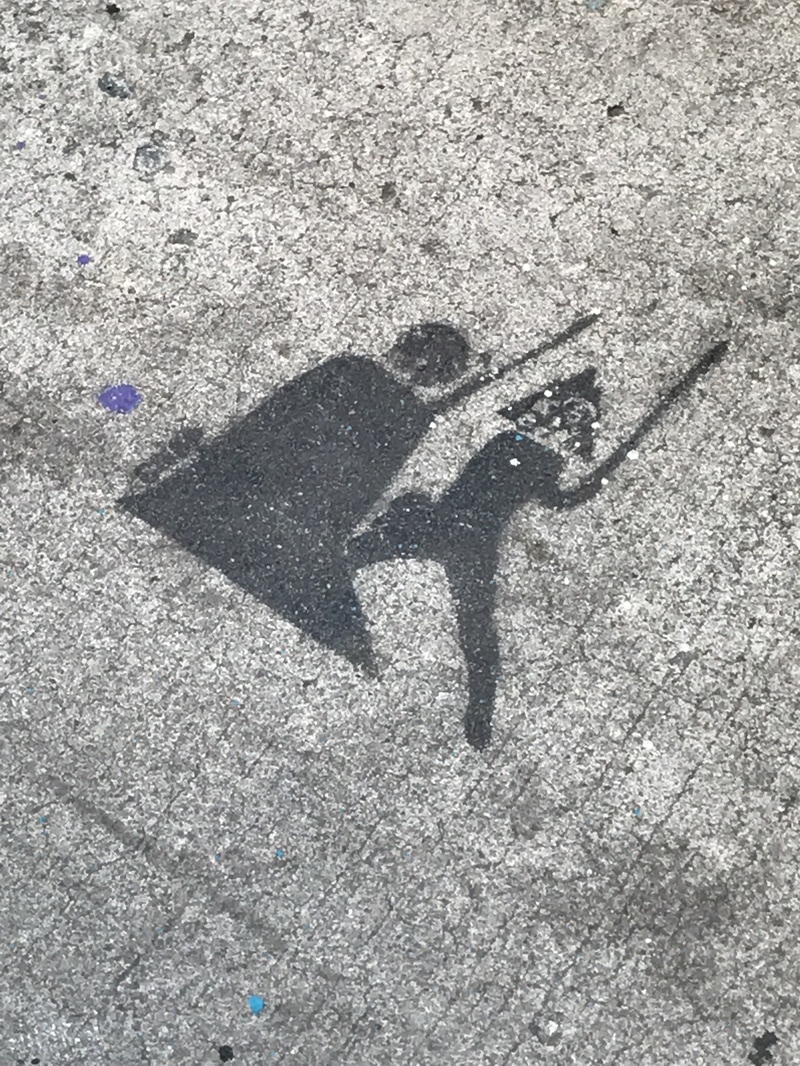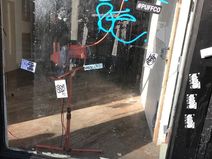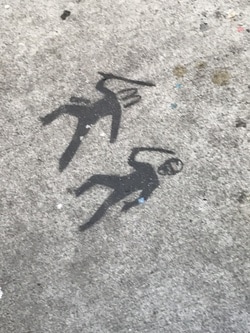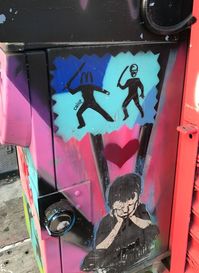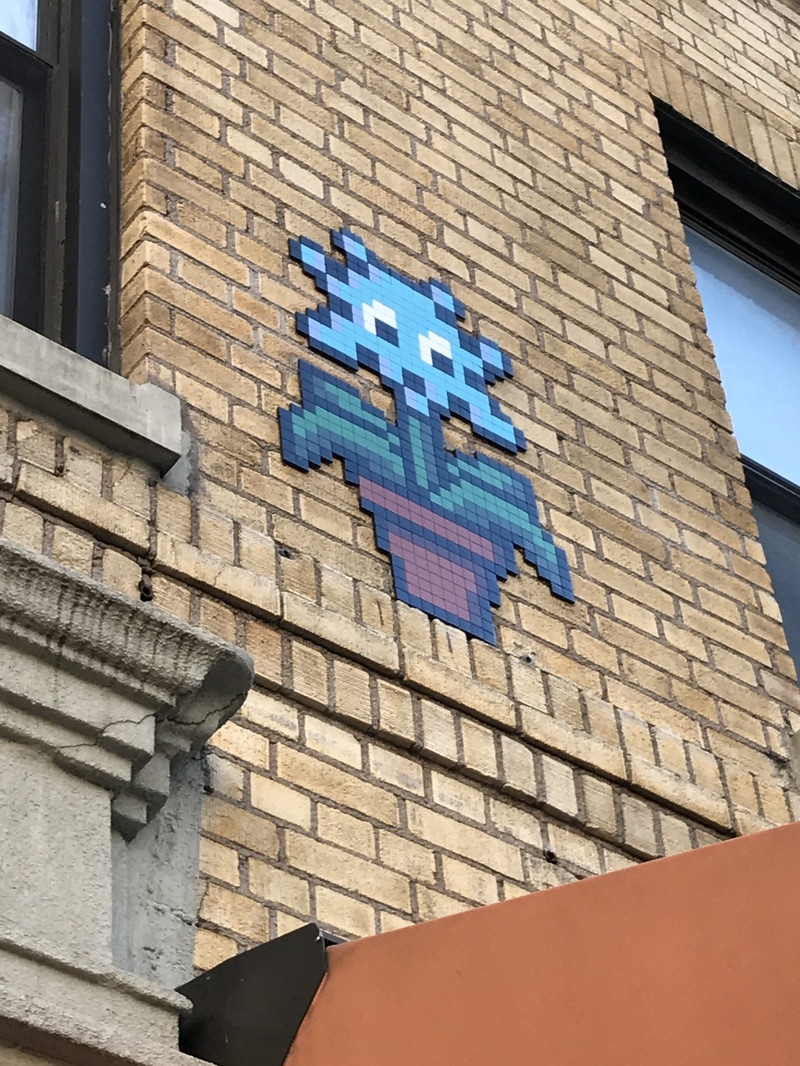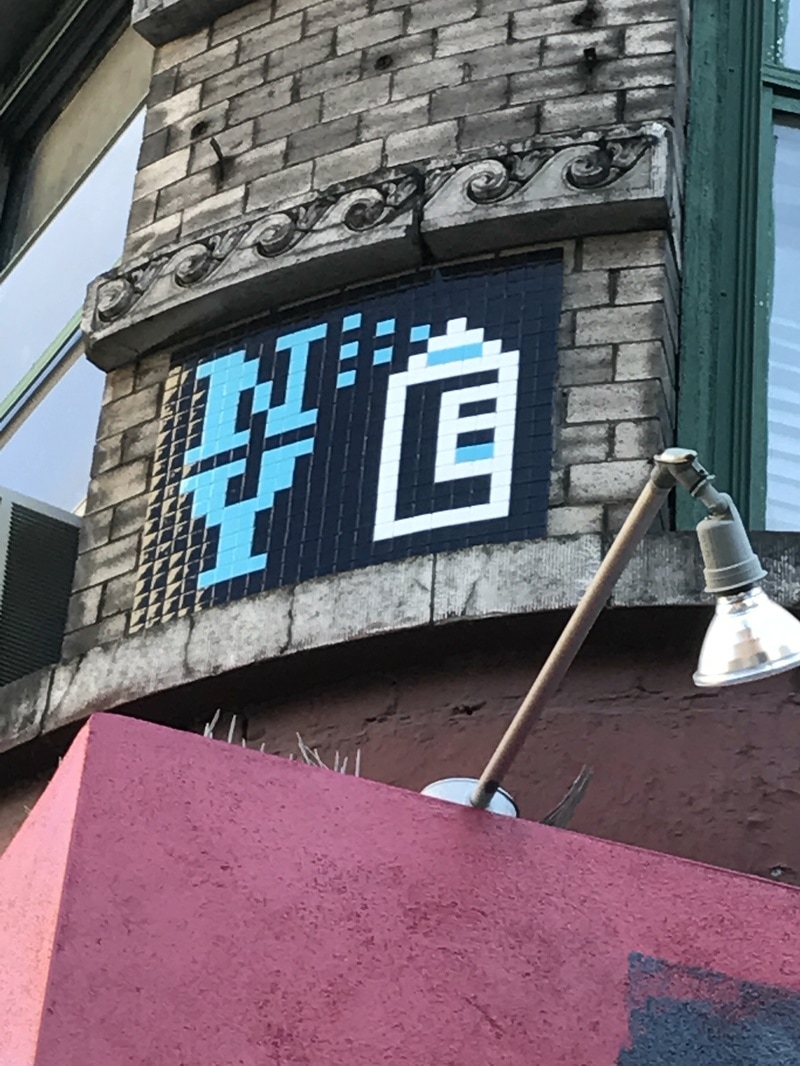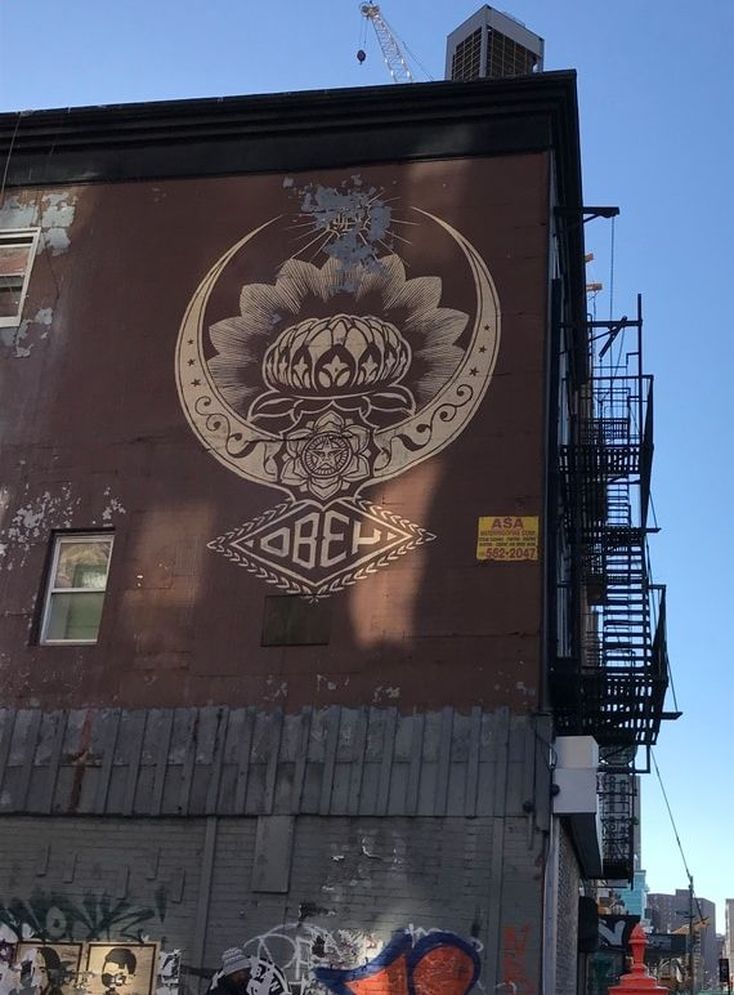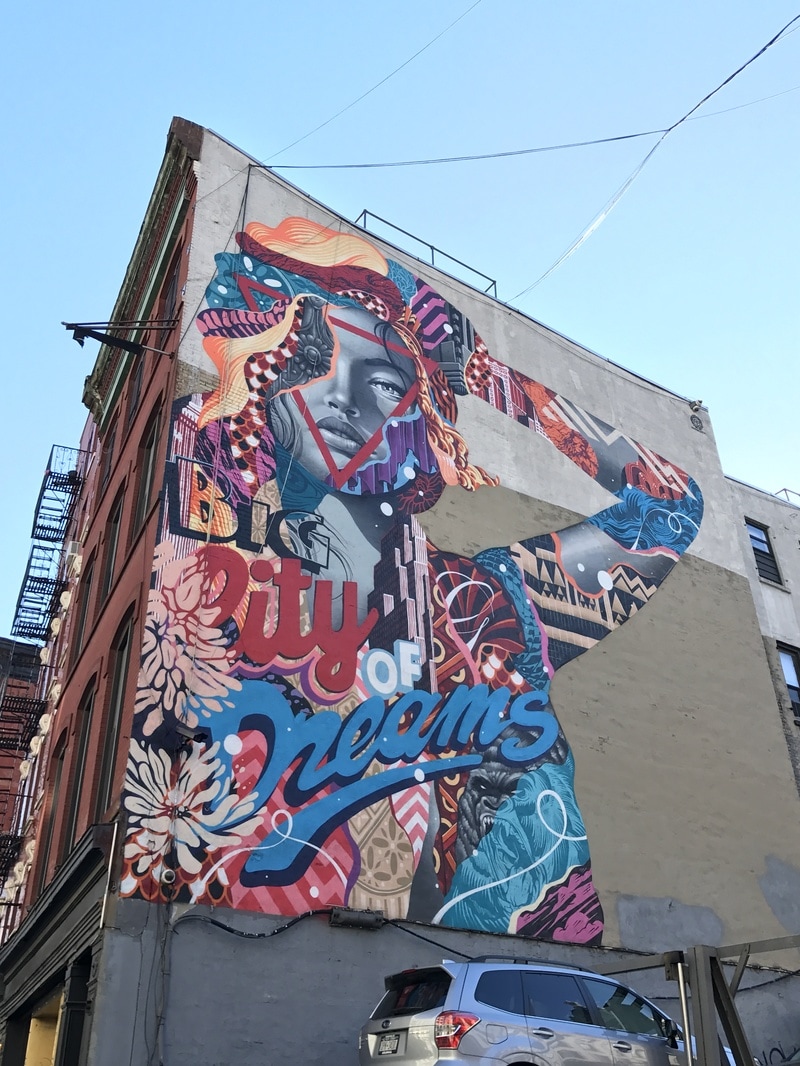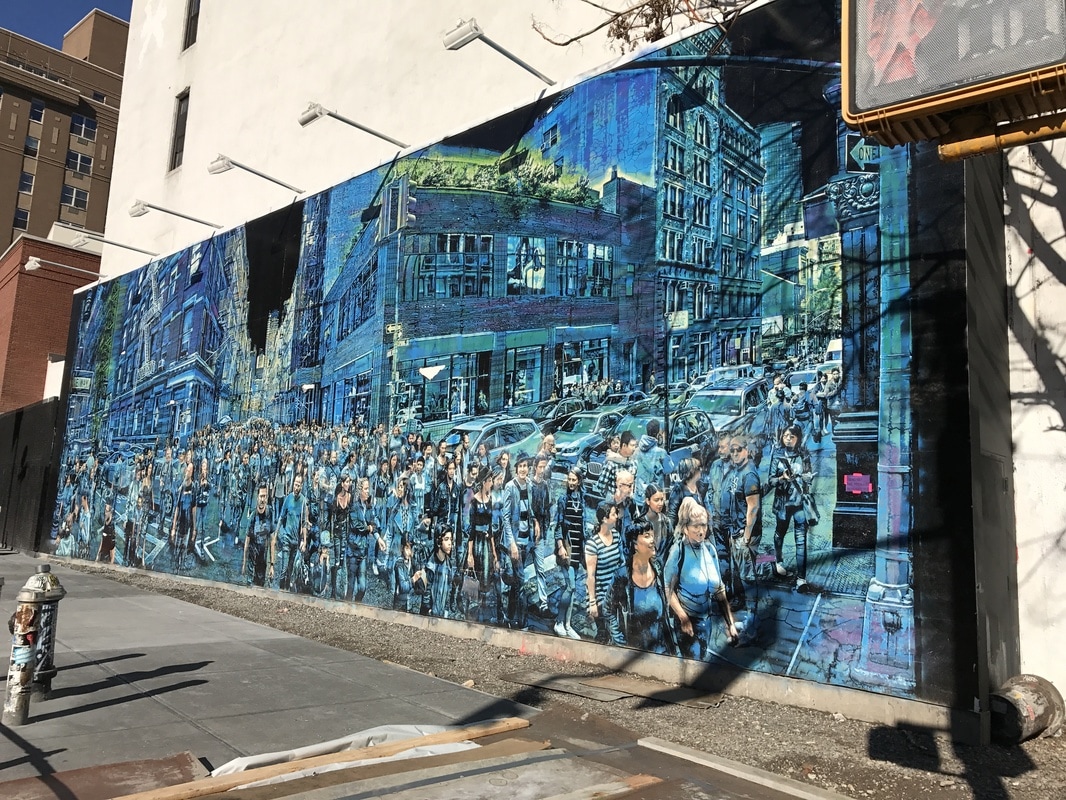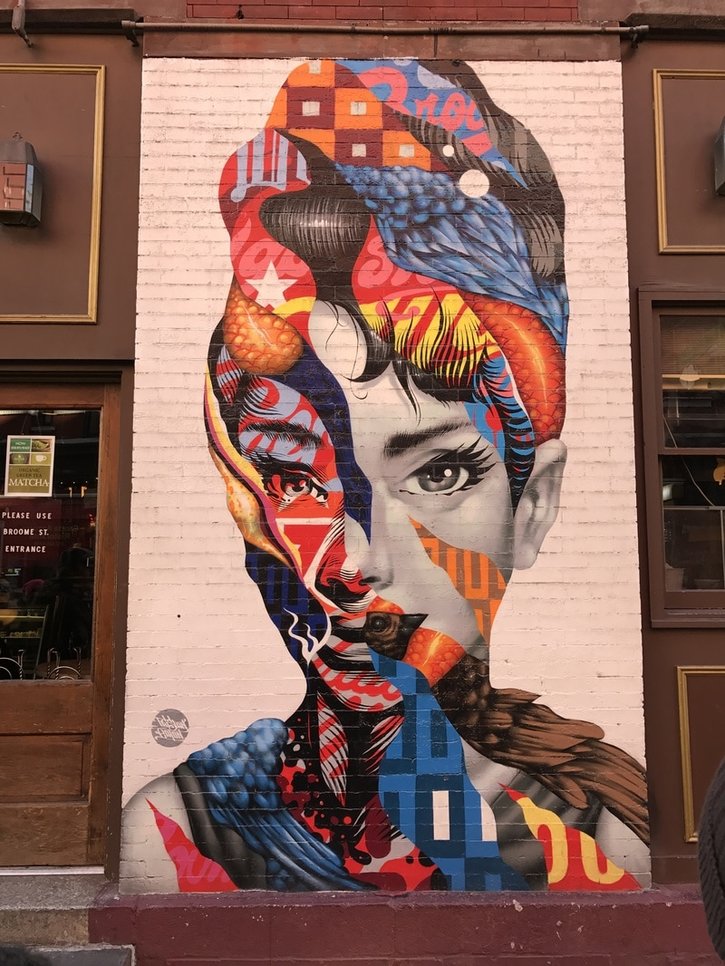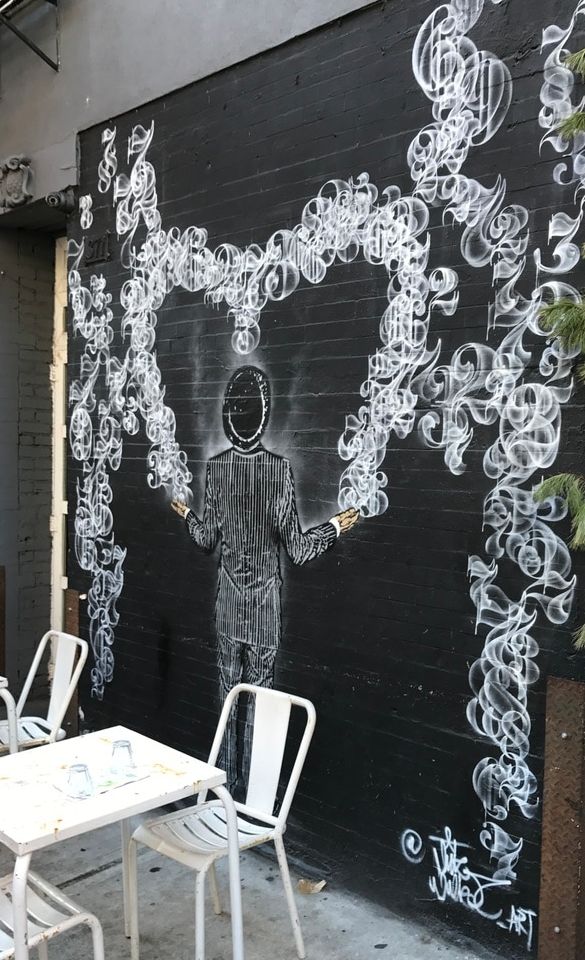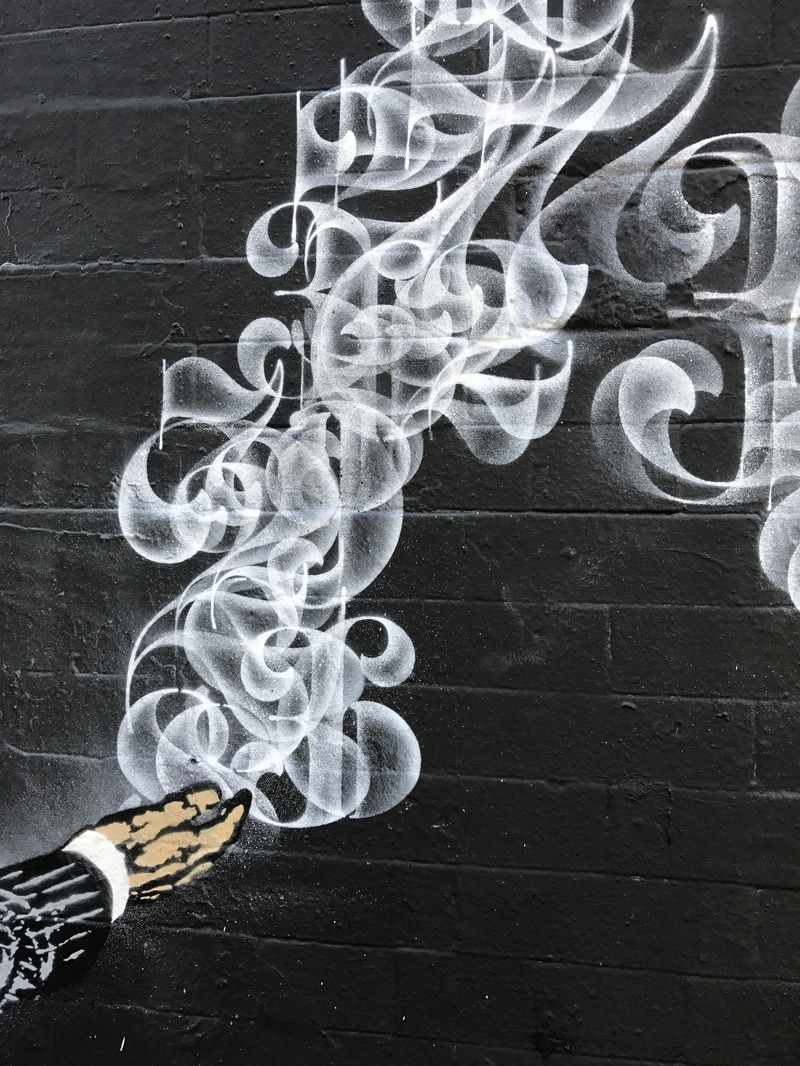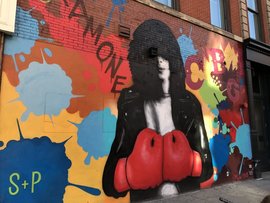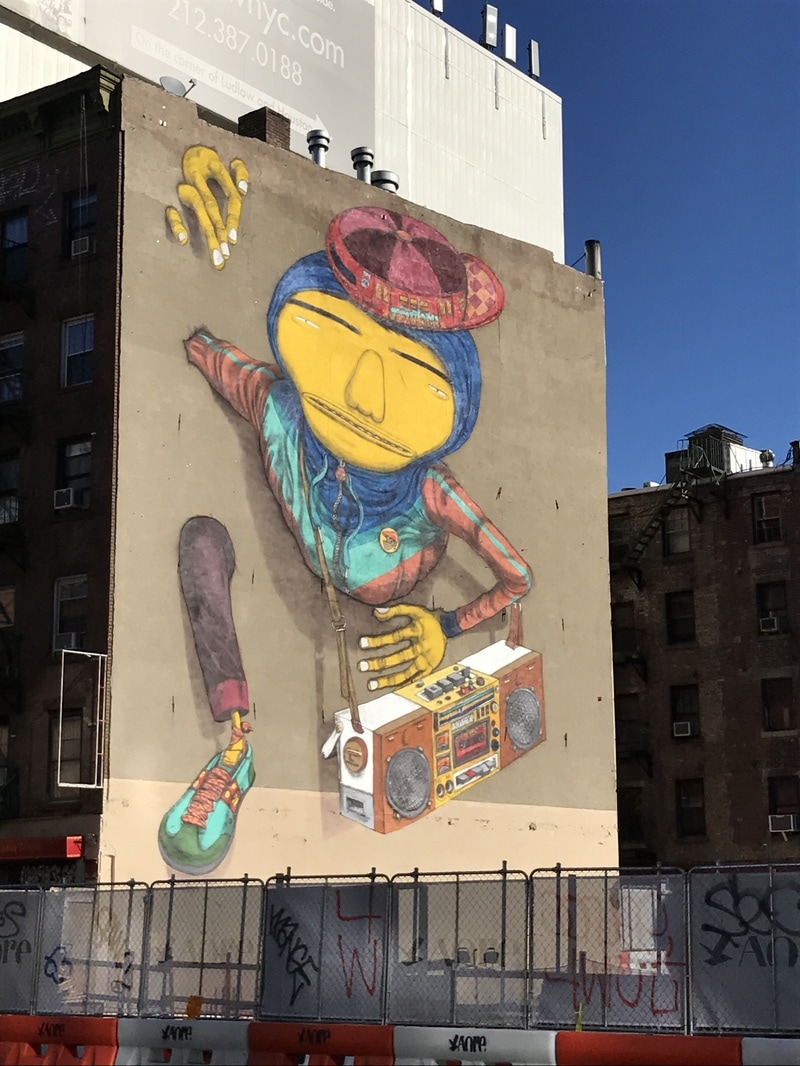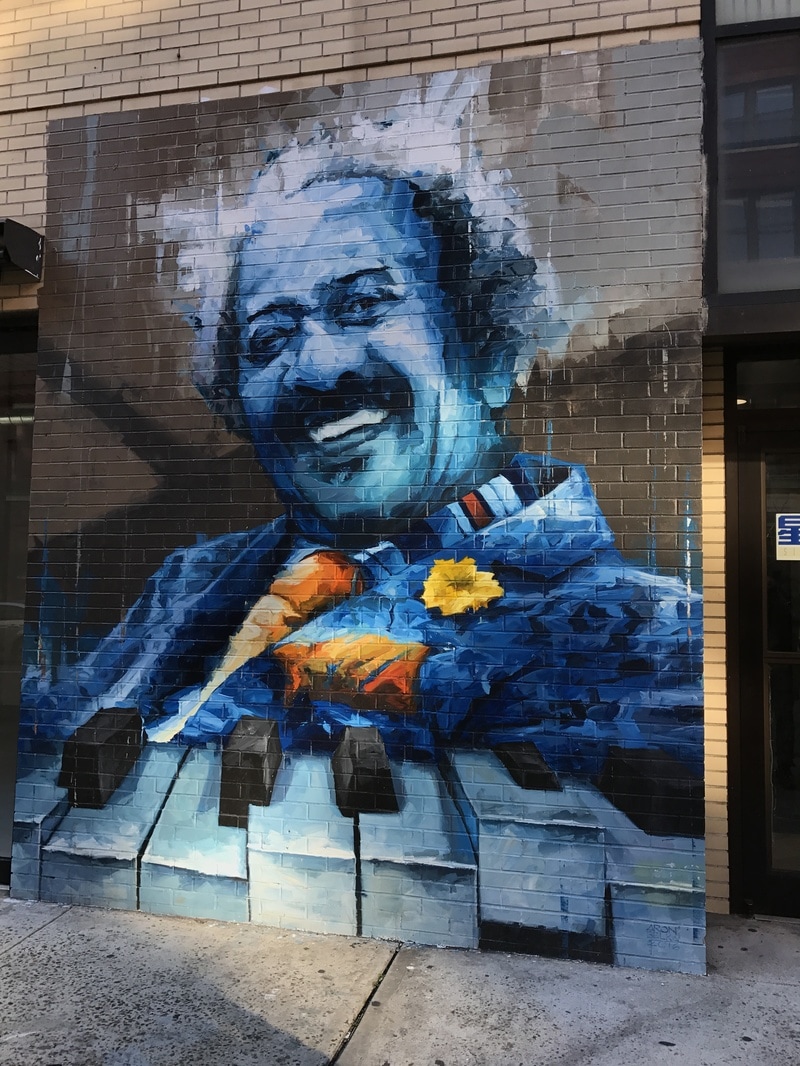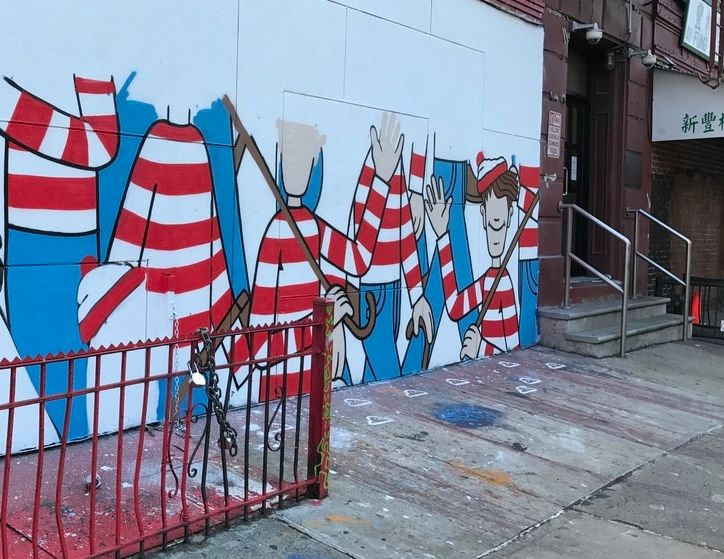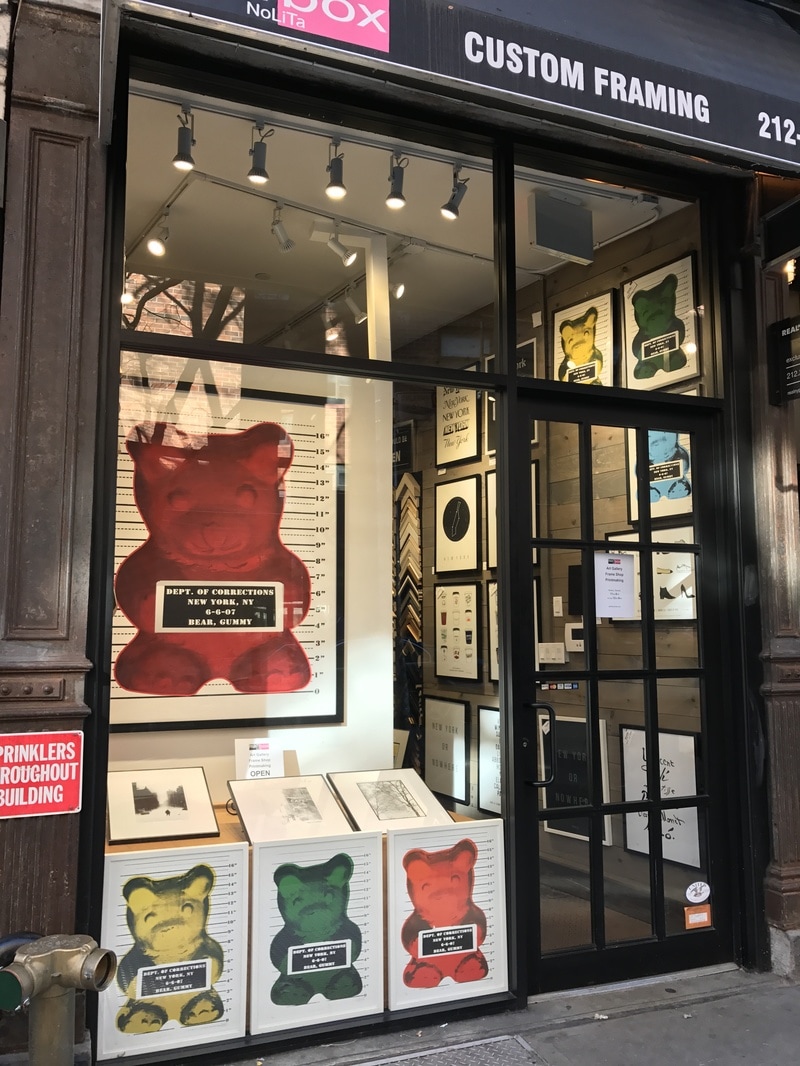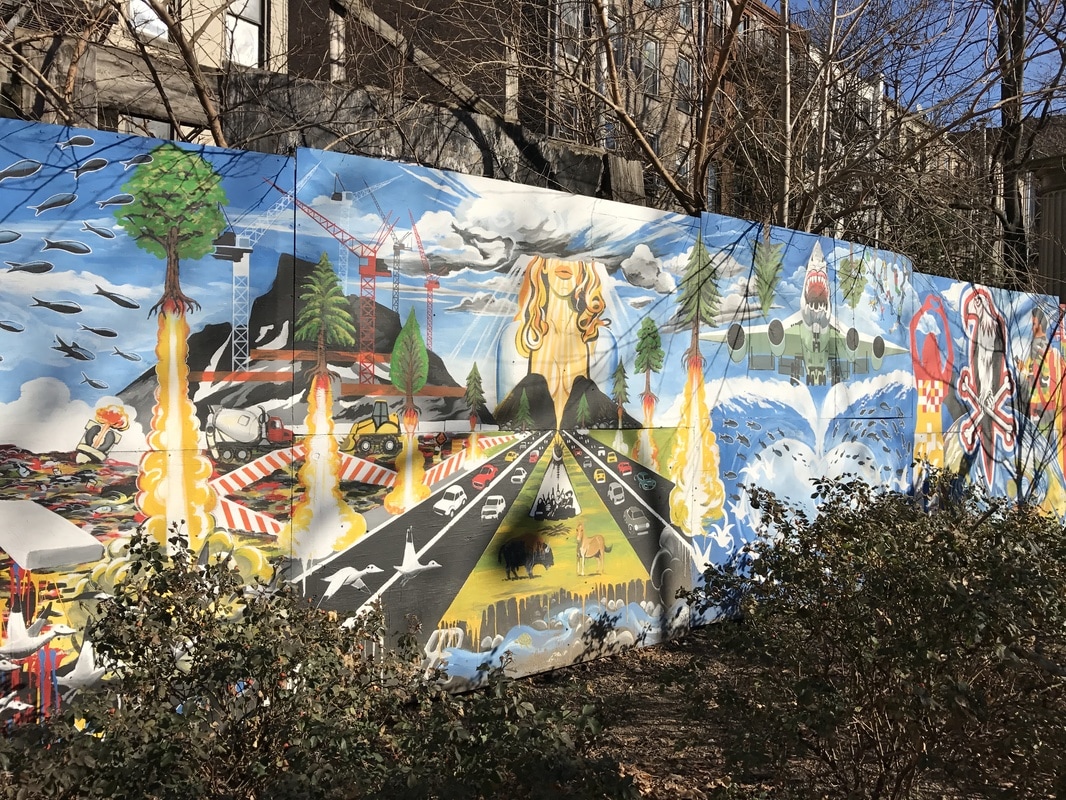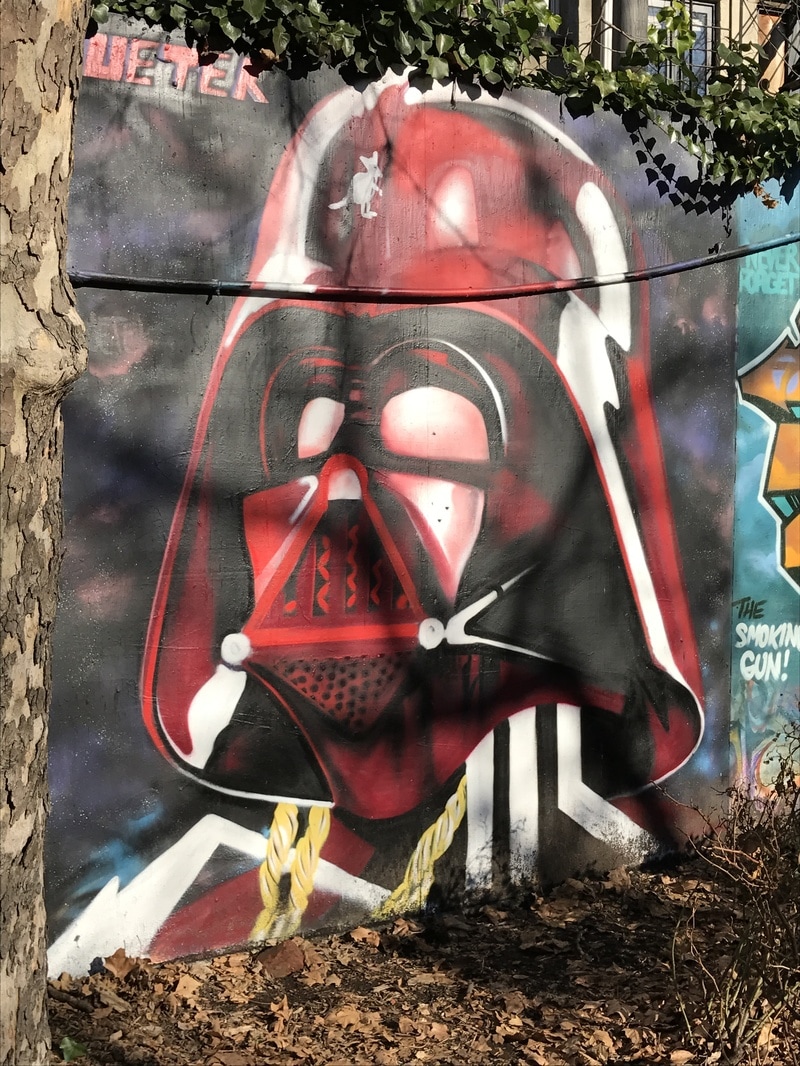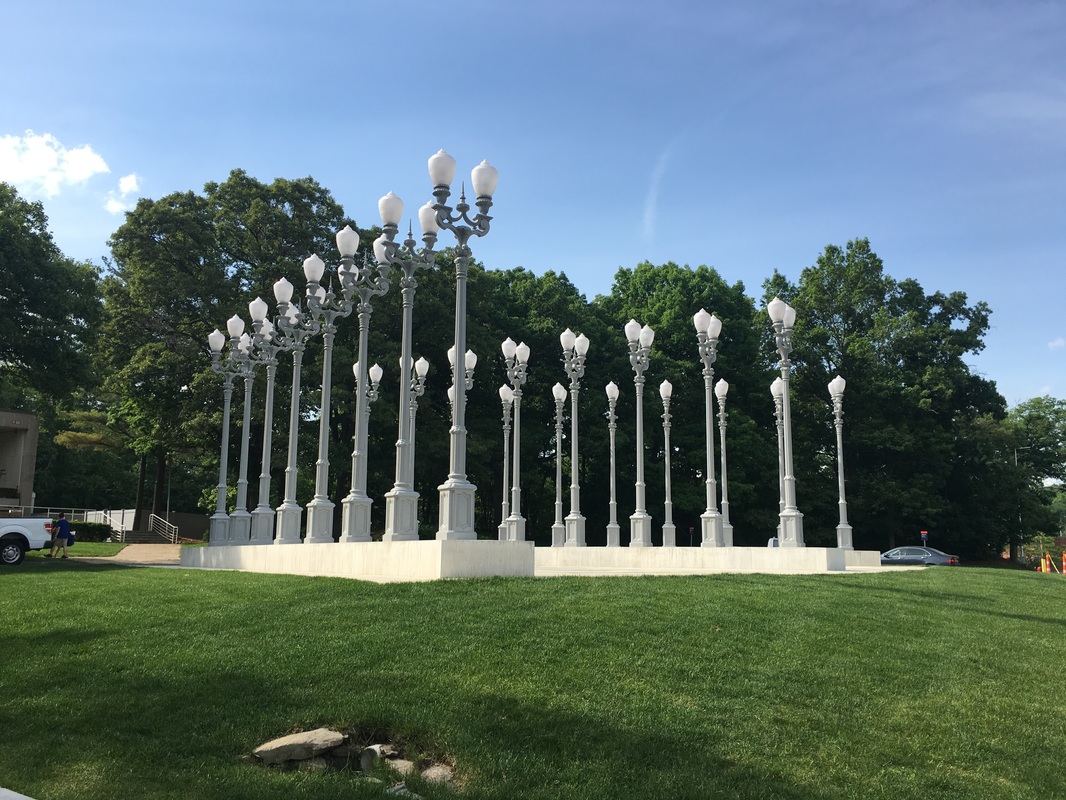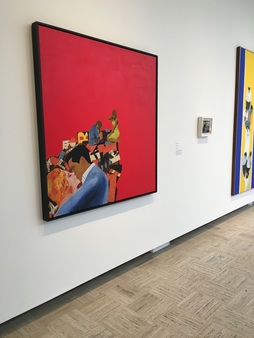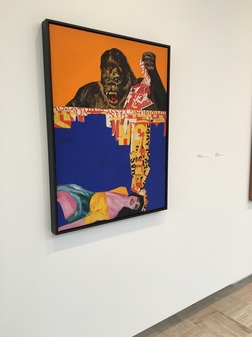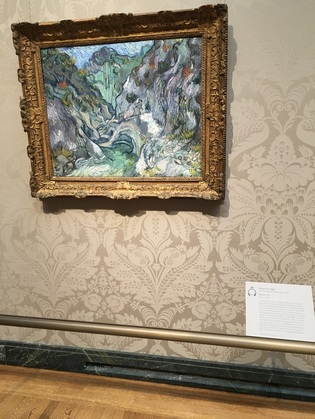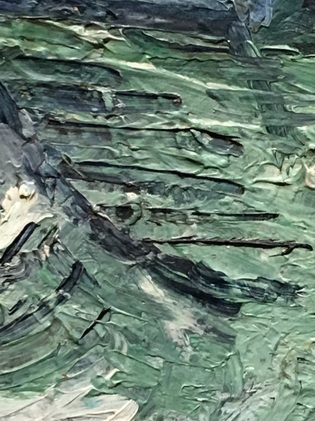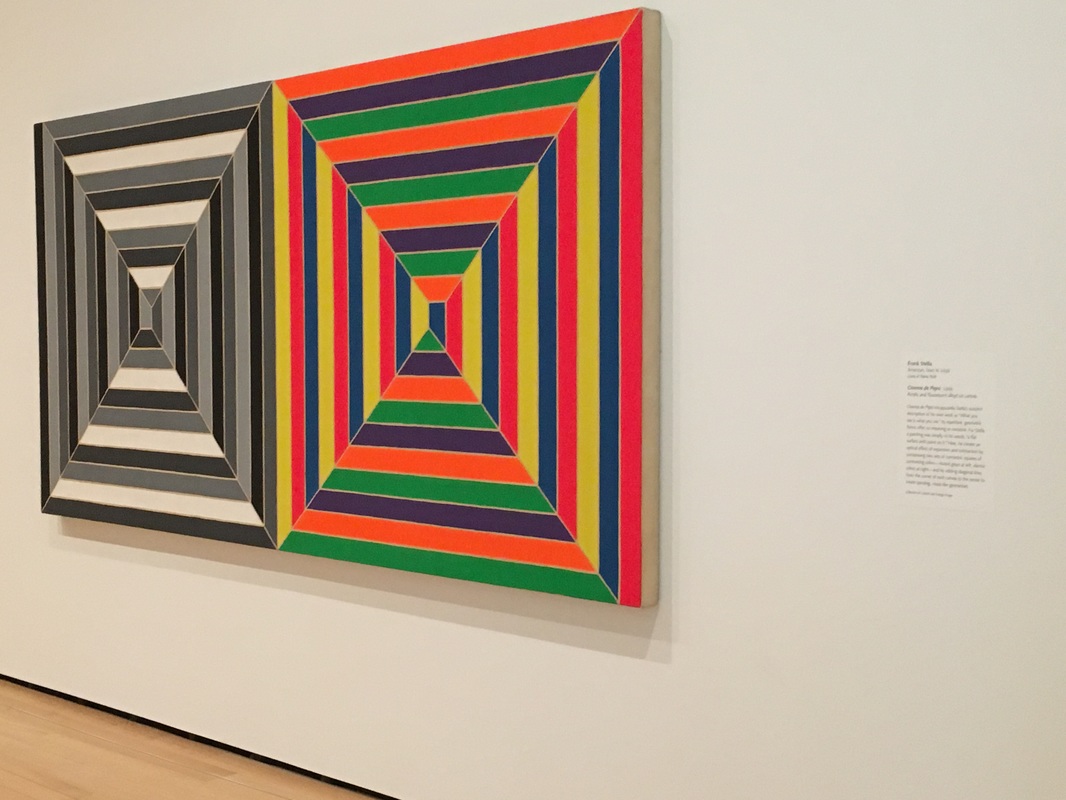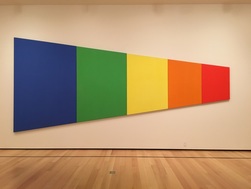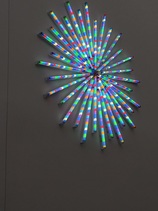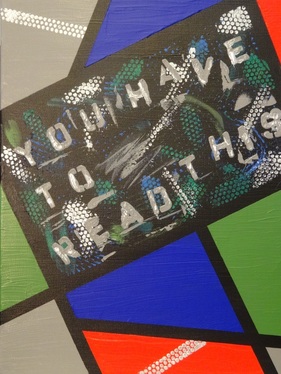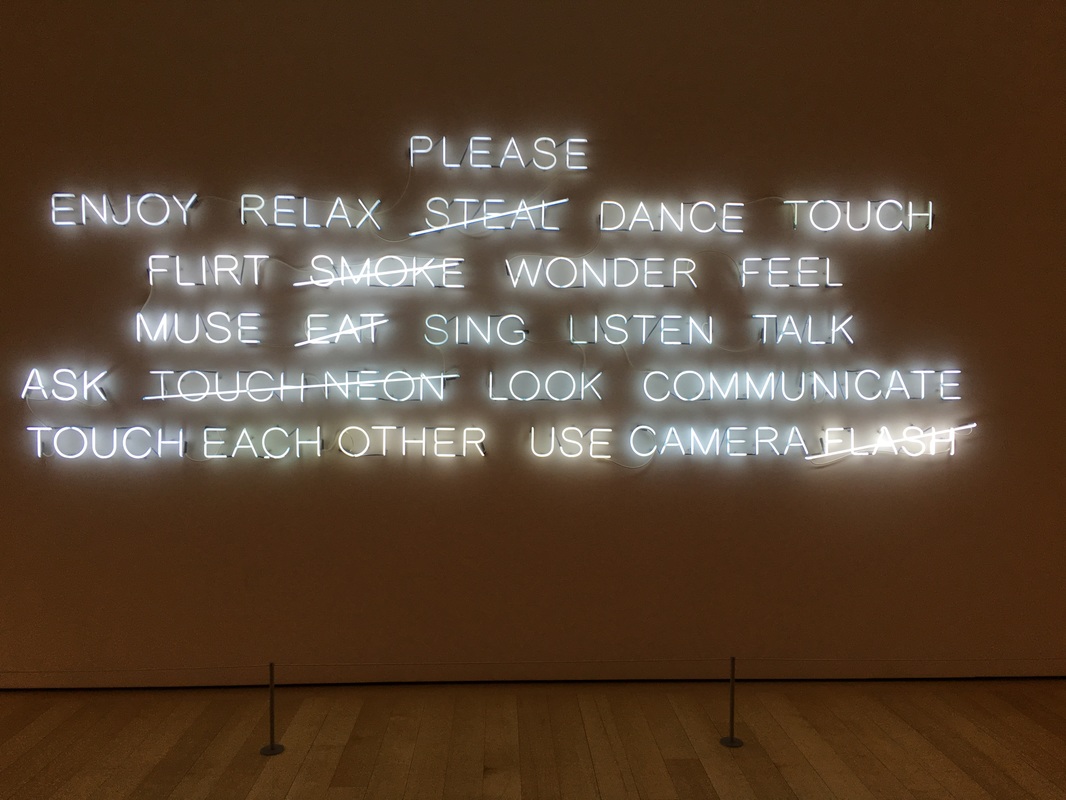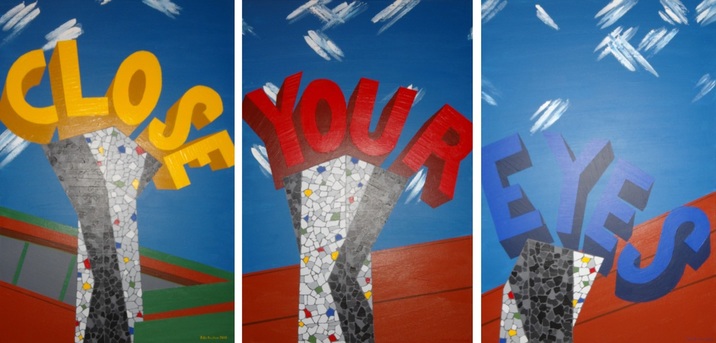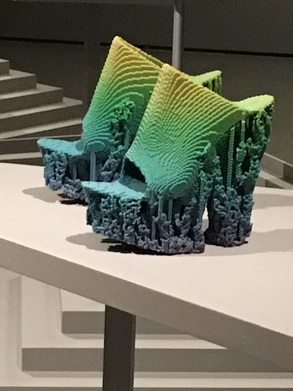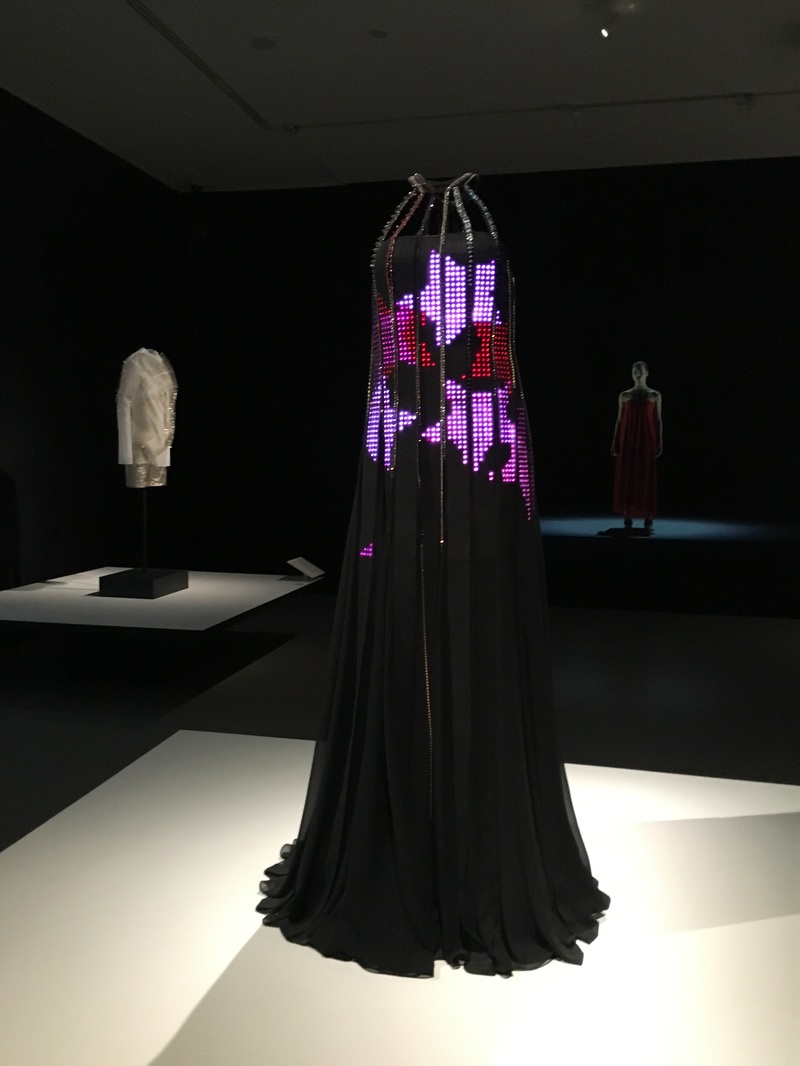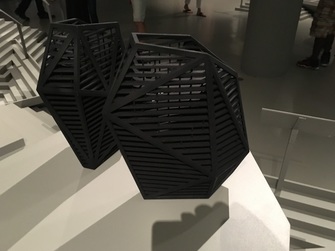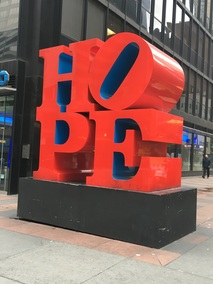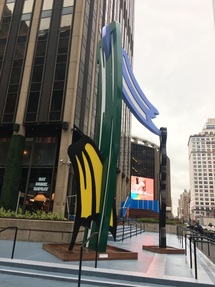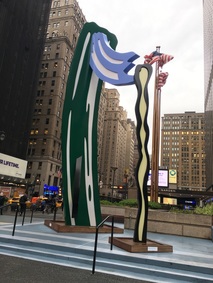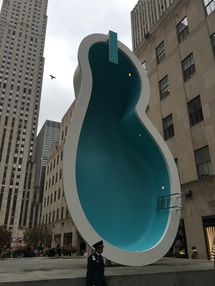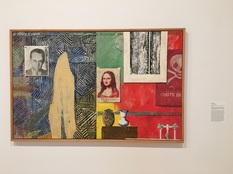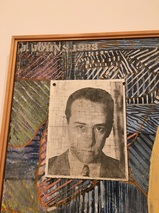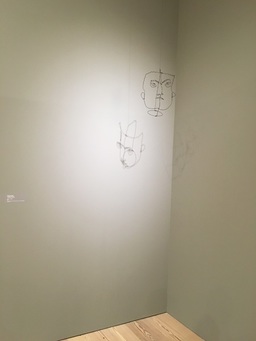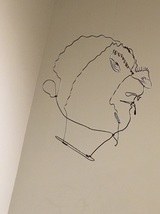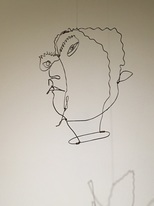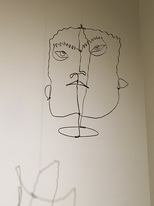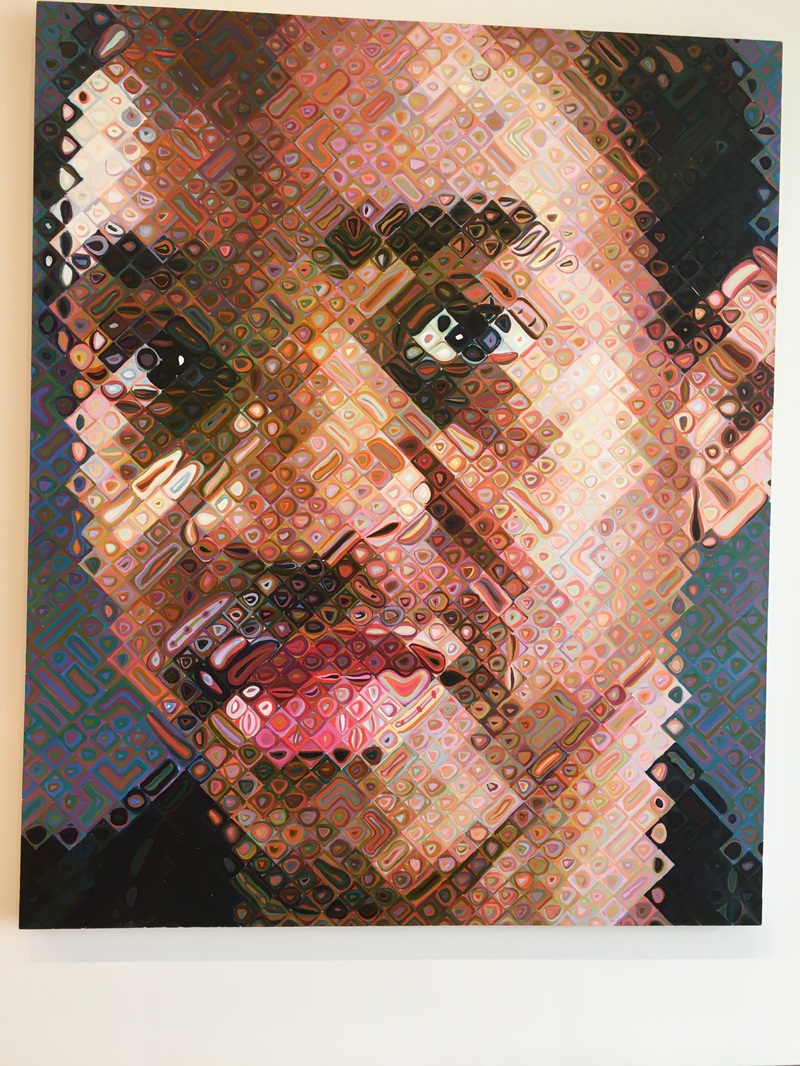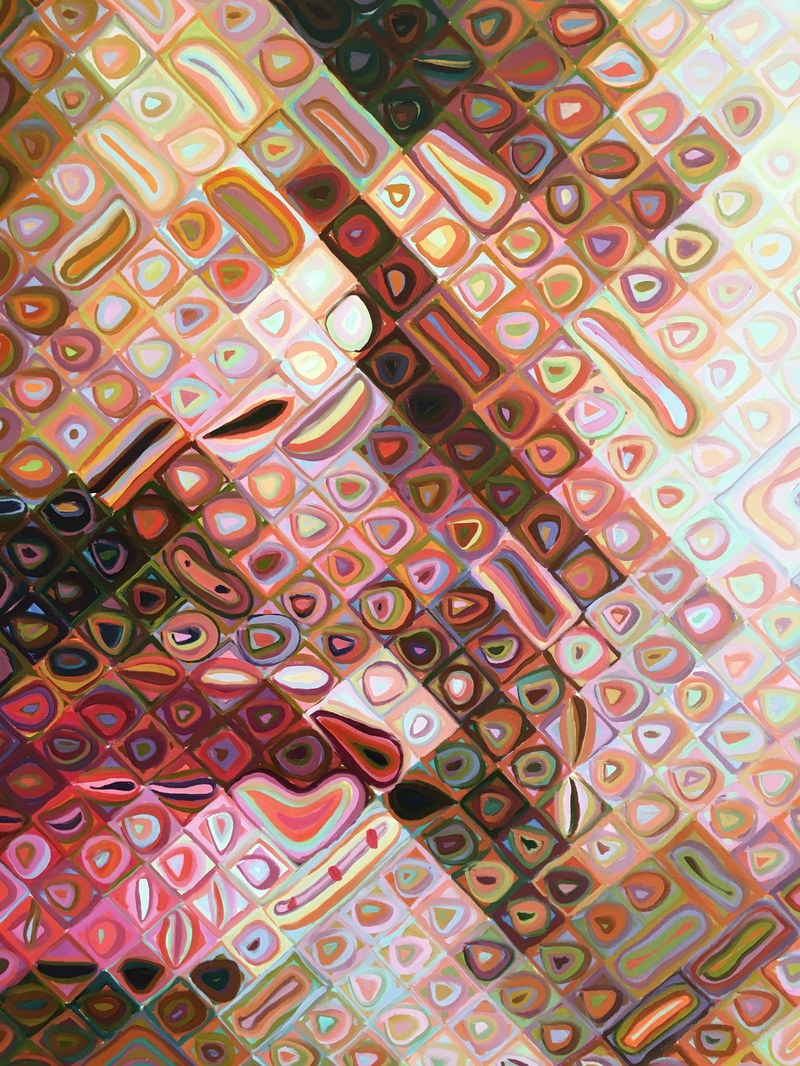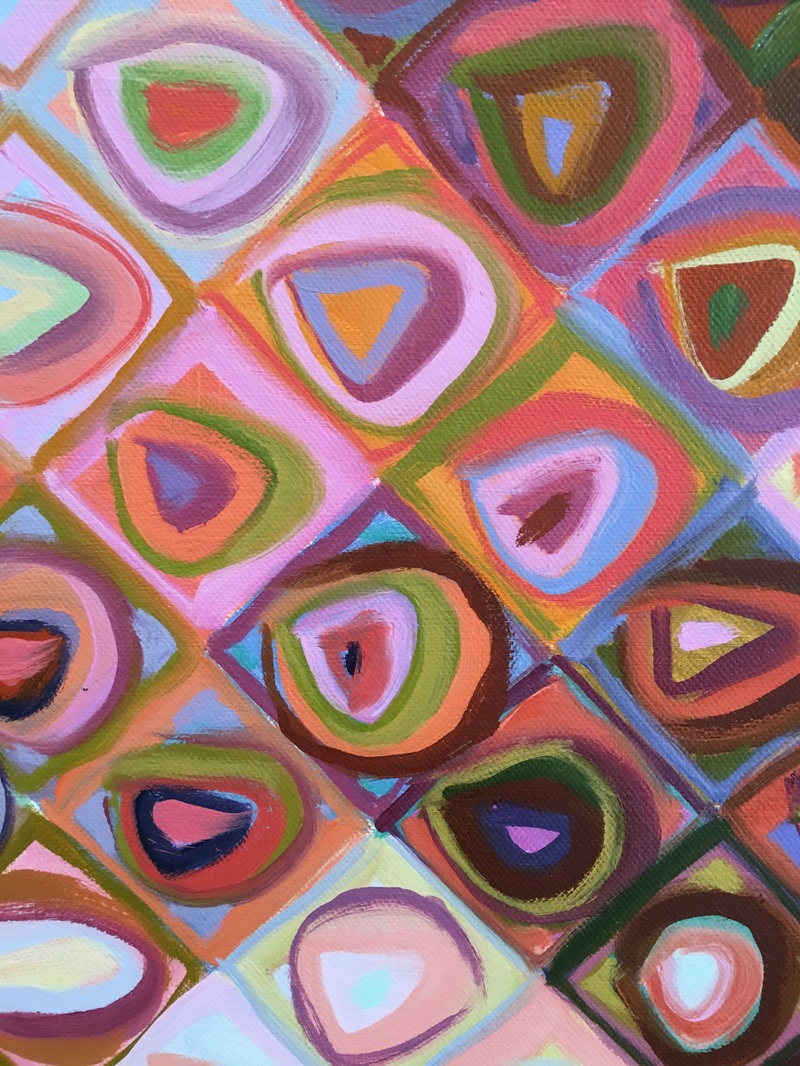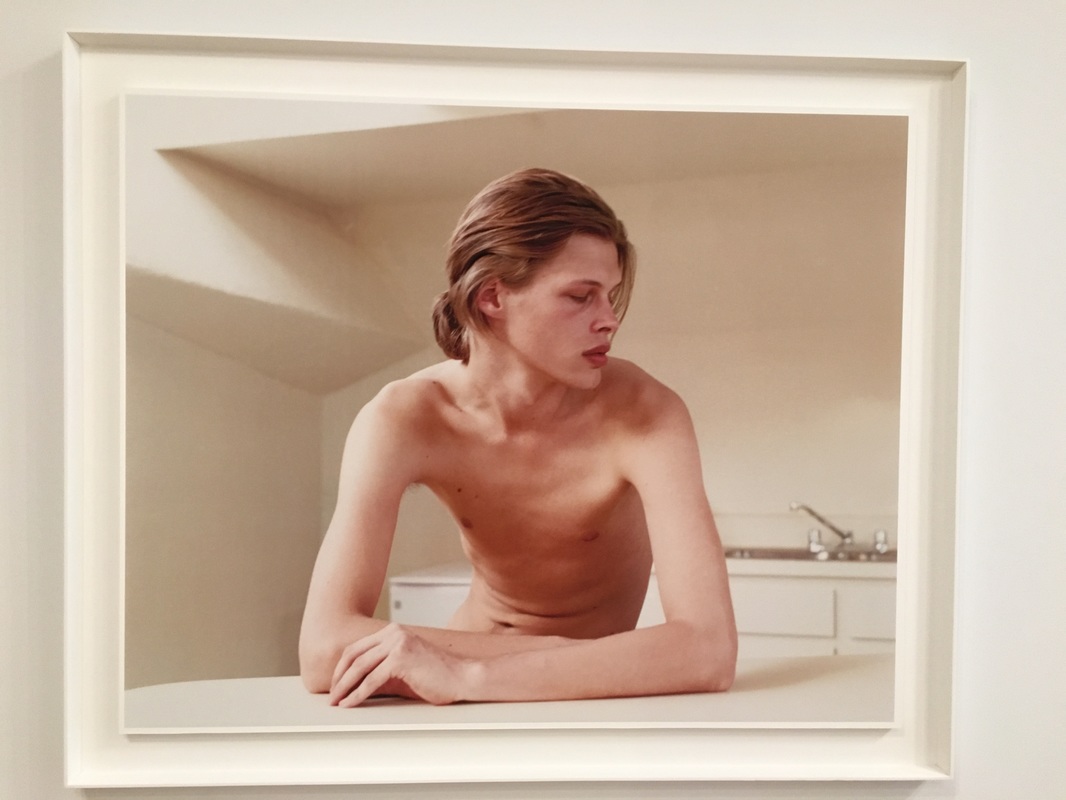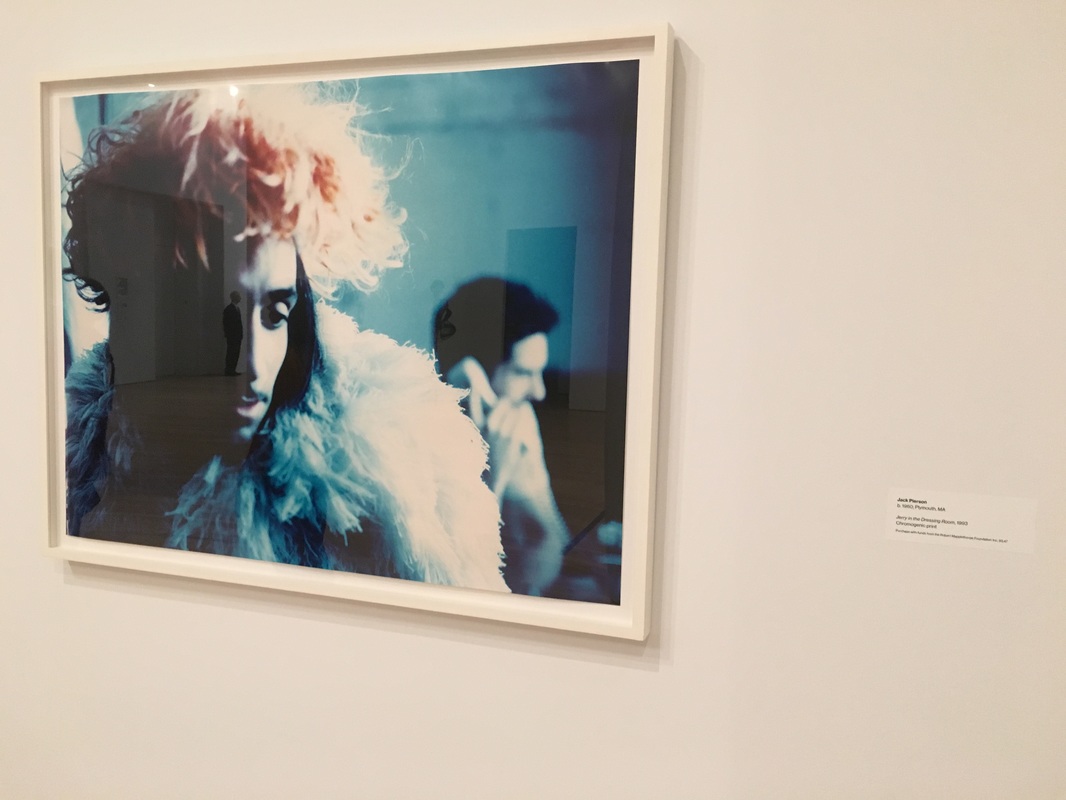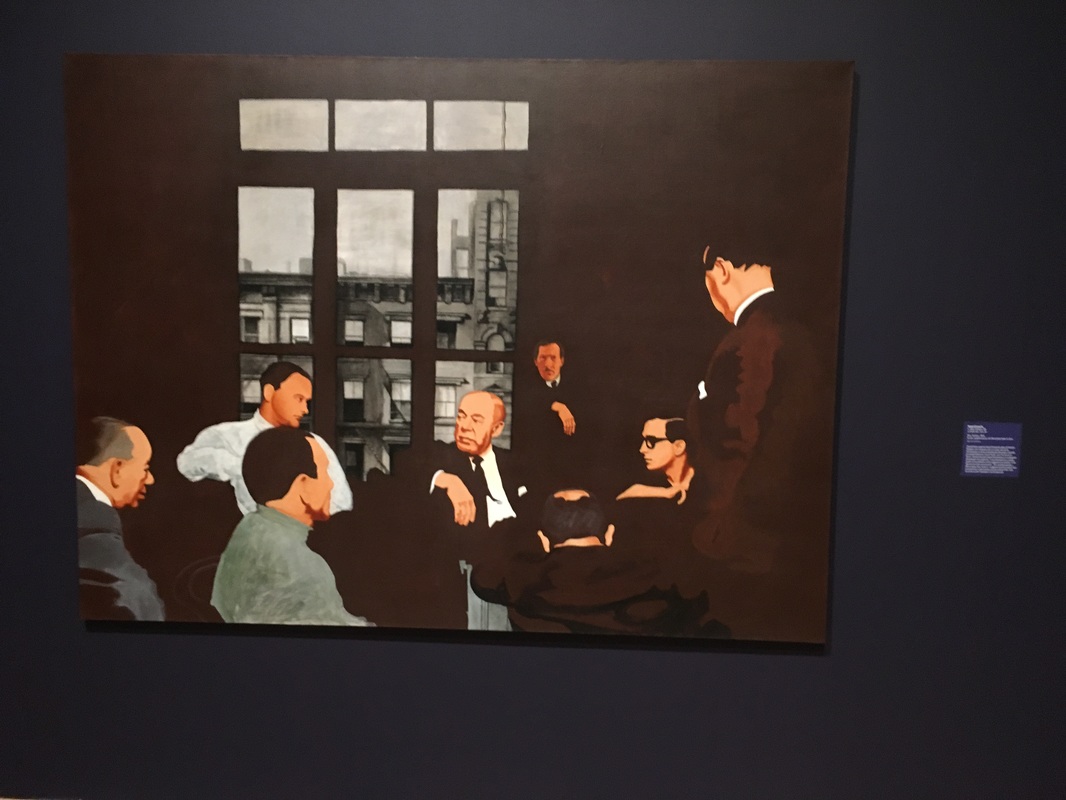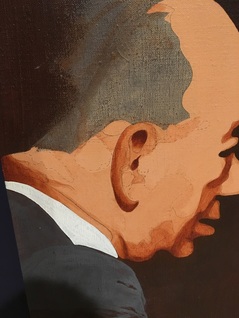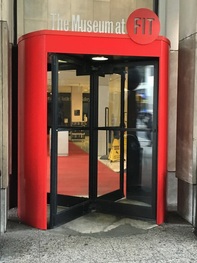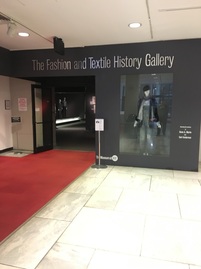|
"Eddie Bruckner's Series Of Pop-Art Paintings" Exhibition was at The Attleboro Arts Museum in April 2022. It featured 6 of Eddie Bruckner's original pop-art paintings, including 2 never before seen paintings, selected by the museum for a solo exhibition in April 2022. An Opening Reception was held on April 9th at the Museum and some photos from the reception are included below. Eddie Bruckner was also interviewed by DoubleACS TV News about his artwork and his exhibition at the Museum. Below is the interview: Eddie Bruckner's Limited Edition Prints and Greeting Cards were sold at the Museum's Gift Shop. The exhibit closes on April 30, 2022.
Photos from the Exhibition and Opening Reception, April 9, 2022.
0 Comments
Here is Willem de Kooning's 1937-1938 Oil on Masonite painting titled, "Untitled (The Cow Jumps Over The Moon). I learned that de Kooning was trained as a commercial artist and his artistic styles move back and forth between abstract and figurative methods. This painting below is one of his earlier works, which reminds me of Joan Miro's work to some degree. His later artwork, for which he is more well-known, is more gestural and epitomizes the abstract expressionism movement.
I stared at this painting below "Grazing Horses IV (The Red Horses), painted in 1911 by Franz Marc for quite a long time. Not because I love horses, but rather it struck me as fascinating. Franz Marc painted horses a lot, and was known for his preoccupation with animals. I learned that this particular painting was actually his first work of art to enter a museum's collection, the same year it was made. What struck me was his use of unnatural colors in a very natural scene. It's hard to see in the photo, but I was intrigued with the use of bright red in only one or two spots on the horses.
Below is Jasper johns' "The Dutch Wives", encaustic on canvas, created in 1975. If you haven't read my blog article on the Jasper johns retrospective exhibition at The Broad Museum in Los Angeles, you can find it HERE.
Below is a wonderful painting from a German artist that I was unfamiliar with named Corinne Wasmuht. It is titled, "50 U Heinrich-Heine-Str." oil on wood and created in 2009. The painting is a portrayal of Berlin's Heinrich Heine Street subway station and its surrounding neighborhood. It's hard to tell scale from photographs, but this is a huge painting and it's scale immerses the viewer, but the paintings various perspective points and different scales of objects also disorient the viewer. It's really a magnificent painting and I can see why it was gifted to Harvard's Busch-Reisinger Museum. Below are some fascinating samples taken from the Forbes Pigment Collection. Edward Forbes was the director of the Harvard Art Museums from 1909 to 1944. During his tenure, he traveled the world, collecting a large number of pigments for the library. Today, the Pigment Collection contains more than 2,500 samples that are beautifully displayed in cabinets on the 4th floor and are used to this day to help identify pigments used in historical artworks. I came across this wonderful, short video on the Forbes Pigment Collection that was created about 2 years ago. Check it out!
For more information about The Harvard Art Museums, please visit their website: www.harvardartmuseums.org. I definitely recommend visiting the Museum as you're in for a wonderful experience!
The Museum of Contemporary Art is actually comprised of three locations. The first is the MOCA Pacific Design Center in West Hollywood; the second is the MOCA on Grand Avenue; and the newest location is the Geffen Contemporary. There is actually a fourth location in Nevada. Yes! Nevada. The artist, Michael Heizer's artwork titled, "Double Negative" is a work of land art located in the Moapa Valley on Mormon Mesa near Overton, Nevada and was acquired into MOCA's permanent collection in 1985. If the artist's name rings a bell, it's because I recently wrote about his other monumental piece of artwork at the Los Angeles County Museum of Art; CLICK HERE TO READ THE BLOG ARTICLE. I should note that time didn't permit me to visit the Pacific Design Center, or the Geffen Contemporary (or visit Nevada), so this post will only include my visit to the MOCA on Grand Avenue. I also visited the Broad Museum (Read On & See Below.) The Geffen Contemporary is just a 15-20 minute walk from MOCA Grand and admission to one museum grants you admission to the other museum.
The MOCA on Grand Avenue housed an entire gallery room with Mark Rothko paintings. While I can appreciate Rothko's artwork and acknowledge its importance in art history, his paintings are not my favorite. I do love all the colors, and I also love the shapes, however, there is ambiguity, blurring of lines, that doesn't hit me the right way. Rothko wanted viewers to stand close to his paintings to see the vertically stacked bands of color seem to float upon colored grounds.
This large painting on two panels is by the artist, Njideka Akunyili Crosby. It's called "Garden, Thriving" and was completed in 2016. Her artwork was quite fascinating to see in person and I've included a detailed photograph of the two-panel painting. Originally from Nigeria, the artist layers photographic imagery within the chairs' fabric and the plant leaves. The images are pictures of Nigerian pop stars, models, military dictators, celebrities, and the artist's own personal photographs. To create this artwork, she uses acrylic paint, transfers, colored pencils, and collage on paper. There is so much to see in this painting, you could look at it for 10-20 minutes, or longer! I should also mention that the mural that is wrapped around the exterior of the museum is by this same artist!
Three other works by Jackson Pollock from MOCA’s permanent collection, were also on view. These were great examples of the diversity and range of materials Pollock used in his artwork from watercolor to collage. Walt Disney Concert Hall, Los Angeles, California This building is simply spectacular. Frank Ghery is one of my favorite architects and this is a perfect example of why that's the case. (In addition to all the awards he has won for his incredible architectural design). Frank Gehry was asked to devise a new home for the Los Angeles Philharmonic and the Walt Disney Concert Hall opened in 2003. Reflecting Gehry’s longtime passion for sailing, the structure’s exterior features are expanses of stainless steel that hover above Grand Avenue. Frank Gehry has devoted his career to disrupt the very meaning of design within architecture. From the iconic Guggenheim Museum Bilbao to the Fondation Louis Vuitton in Paris, and now the Walt Disney Concert Hall in Los Angeles, Frank Gehry has proven time and again the beautiful magic of his whimsical, cutting-edge design.
The Broad is one of the finest contemporary art museums I have ever visited. Founded by philanthropists Eli and Edythe Broad, the museum houses more than 2,000 works of art and holds one of the most prominent collections of postwar and contemporary art worldwide. The Broad's third floor galleries show a rotating selection of artwork and, best of all, it is free! The first floor galleries are for special exhibitions, like the Jasper Johns exhibit "Something Resembling Truth" that runs through May 13, 2018. So let's talk about the beautifully designed building... It's often called "The Veil and the Vault" because the building has gallery space as well as an extensive storage facility. In contrast with the neighboring Walt Disney Concert Hall, The Broad was designed to be porous and absorptive. There are wonderful olive trees that were planted in the plaza next to the museum. There were a number of artworks by Jeff Koons at The Broad. "Balloon Dog (Blue)" is perhaps one of his series of works that is most famous. The artwork is made of stainless steel and wights 2,000 pounds. It was created as part of his Celebration Series, a group of paintings and sculptures that memorialize rituals, icons, and images related to birthdays, holidays, and other celebratory parties or occasions.
Roy Lichtenstein is one of my all-time favorite pop artists. He was one of the founders of Pop Art in the 1960s and used tiny dots in his artwork, similar to the printing style of comic-books. The dots were placed in such a way to create an image, imitating the way comic-books and newspapers were printed. In addition to borrowing or seeking inspiration from newspaper ads, commercials, and comic books, Roy Lichtenstein also was inspired by some of his favorite artists like Picasso and Mondrian. See the two images below. Here is a sculpture by Roy Lichtenstein, "Goldfish Bowl" created in 1977. It is painted and patinated bronze. On the right is a detailed view, showing that the sculpture is very two-dimensional, despite it looking 3-D. I always love seeing paintings by Chuck Close. Chuck Close is known for his detailed paintings of faces, and later he was known for the deconstruction of that detailed portraiture. He explores portraiture and created this photo-realist painting called "John", painted in 1971-72. I included a detailed shot showing the incredible painting technique. John Baldessari, "Tips for Artists Who Want to Sell" 1966-68, Acrylic on Canvas. John Baldessari never touched this painting, didn't paint it, didn't write the text. Here, it's the role of the artist as the facilitator of the artwork; creating the concept. The humor is that the view is shown the paintings message, but the message is text taken from an art magazine with tips on what art should be. Another one of my all-time favorite artists is Andy Warhol. A short time after Marilyn Monroe died in 1962, Andy Warhol started to create silkscreen images of Marilyn. I learned that Warhol had recently just learned how to silkscreen, so this was a somewhat new process for him! In the painting above, titled, "Two Marilyns" created in 1962, Warhol captures the terrible fact of Marilyn's death, as if he was reporting the news. With silkscreens, the images deteriorate with each printing, which I believe is symbolic of her presence and then her fading into history with her death. It can also be interpreted as the volatility of fame and celebrity. I'm not sure how many versions of "Two Marilyns" were created, but I learned that the one pictured above from The Broad Museum was the 27th version of the silkscreen created. Ellsworth Kelly worked with shapes and solid colors. The painting below, "Green Blue Red" created in 1963, uses colors and shapes to create contrast and bring attention to edges. In the above image on the left, the green rectangle and blue oval are vibrantly displayed against the red background. His composition almost goes against the principal of design of balance. Below, Kelly's oil on canvas painting, "Green Relief with Blue" was completed in 2011. It's actually two conjoined canvases and I've posted the photo of the same painting as seen from different angles. It almost acts like a 2 dimensional painting trying to be a sculpture, with different views from different angles. Jasper Johns: "Something Resembling Truth" A Special Exhibition at The Broad (Through May 13, 2018) While The Broad Museum's main collection has free admission, this special exhibition required a special ticket with a timed entry. The exhibit was one of the best I've ever seen. The exhibit covered over 6 decades of artistic achievement from this iconic American artist. The comprehensive exhibit features more than 120 extraordinary paintings, drawings, prints, and sculptures, by Jasper Johns and draws upon works from within The Broad's permanent collection as well as from loans from over 50 international public and private sources. The imagery he used in his artwork were common items such as American flags, numbers, letters, targets, and light bulbs. Perhaps Johns’ most famous painting, "Flag (1954–55)" and is a fairly accurate representation of the American flag, in encaustic on collaged paper and fabric.
The American Flad is a geometric composition that has a strong sentimental and patriotic value in society. Jasper Johns' flags ofent trick the eye, or blur the lines between perception, reality, and illusion.
Jasper Johns began to incorporate objects and tools used in his artwork directly into the artwork's creation. Things like paintbrushes, color charts, and rulers. In the painting below, the "R" of "Red" is a neon light and wooden letters protrude outward from the canvas. I highly recommend you to experience the Jasper John Exhibit if you can! Also on the first floor was a very unique art installation by artist, Yayoi Kusama, titled "Infinity Mirrored Room--The Souls of Millions of Light Years Away." It is a mirror-lined room that includes LED lights that reflect endlessly in the mirrored space. It doesn't sound like much, but it is quite amazing to see. You need a separate timed ticket, which is free, and only one person can enter the room at a time for a duration of 45 seconds. As you can see, the Broad Museum is quite an amazing experience. I highly recommend you visit The Broad in Los Angeles and experience the art scene in Downtown LA. For more information about The Broad, please visit their website: www.thebroad.org Check out some of my other posts about Los Angeles!
Here's a photo of me at the Los Angeles County Museum of Art in front of Chris Burden's sculpture, "Urban Light" installed in 2008. Burden restored over 200 cast-iron streetlamps to create this work of art. Burden was fascinated with urban life and how streetlamps are one of the fundamental building blocks of an urban metropolis. I found it interesting that the streetlamps were recently converted to LEDs, reducing the installations's annual energy consumption by 90%. The conversion to LEDs was funded by the Leonardo DiCaprio Foundation this year. Chris Burden was commissioned by Brandeis University's Rose Art Museum to create a similarly themed sculpture. You can see it by CLICKING HERE in an older blog article about the Rose Art Museum. Chis Burden's "Metropolis II" depicts an urban landscape. Burden created "Metropolis I" seven years before "Metropolis II". The earlier work featured eighty Hot Wheels cars zooming around a model city. This work is much larger and includes 1,100 custom designed cars, 18 highways, and a vast array of buildings and structures. The artwork runs on select days and times, so plan ahead! Richard Serra's "Band" is a massive sculpture that fills a huge exhibition hall from top to bottom, from front to back. The sculpture took two and a half years to develop. Made from over 200 tons of steel, it measures 12 feet high and over 70 feet in length. Below are two views of the same sculpture, titled "Phoenix" by Alexander Liberman, created in 1974-75. I love how a different view of this sculpture creates an entirely new image, a new feeling, a new perspective. "Levitated Mass" (Shown below) was conceived by artist, Michael Heizer, in 1969, but only realized in 2012. "Levitated Mass" is a 456-foot-long concrete pathway, over which sits a 340-ton granite boulder. As you walk down the pathway, it descends to fifteen feet in depth, directly underneath the massive boulder before ascending back up. Below are two views of the same Alexander Calder sculpture created in 1964 titled, "Three Quintains (Hello Girls)." It is made from sheet metal and paint with motor. To me, it appeared to be moved by the wind, but apparently it has a motor that moves the mobile sculpture.
Part 1: Barcelona Architecture One cannot talk about Barcelona's architecture without mentioning Antoni Gaudi. Part of the Modernista movement of the late 19th Century, Antoni Gaudi is Barcelona's most famous architect. Almost anywhere you look in Barcelona, Gaudi had some part in its creation, from the houses, apartment buildings, churches, sidewalks, parks, and even the city benches lining the streets. In Modernism, nature was a huge element present in decorative motifs as well as present in the actual architectural structure of Gaudi's buildings. Below are some of Gaudi's masterpieces, but there are dozens of others throughout Barcelona to visit and experience. Casa Batllo I really enjoyed seeing Casa Batllo, which is situated on a main street in the heart of Barcelona. Mosaic is everywhere. The Chimneys of the building are works of art. The roof is representational of a dragon's back. The exterior facade demonstrates Gaudi's expert use of texture and color. Below are some photos of the exterior of the building as well as the interior. The sidewalk tiles as shown in the photos below line the streets and feature an underwater, marine-life motif. Sagrada Familia Gaudi's Sagrada Familia is innovative and highly symbolic. The architect's objective was to explain the teachings of the Church through sculpture and architecture. Following Gaudi's death, work on the Sagrada Familia continues to be carried out by collaborating architects and artists. The project is expected to be complete by 2026, coinciding with the 100th anniversary of Gaudi's death. The stained glass windows were perhaps one of the most beautiful aspects of the Sagrada Familia. The colors were so vivid and bright. Park Guell Park Guell is another one of Gaudi's masterpieces. It was build between 1900 and 1914. It was opened as a public park where Gaudi let his imagination run wild with his incredible use of mosaics throughout the park. Below are some photos of Park Guell. The mosaic work is unbelievable and reminds me very much of the mosaic illusion that I paint in many of my own paintings. La Pedrera La Pedrera is also known as Casa Mila. It was completed in 1912 as an apartment building. There are curved walls that seemingly defy the laws of gravity. The rooftop is amazing at night and includes all of Gaudi's architectural trademarks. Bricks in the attic create arched ceilings and are uniquely used using the log side of the brick, which also features the brick-maker's fingerprints. There are terrific wrought iron balconies and exquisite ceramic mosaics. I highly recommend visiting La Pedrera by booking a night tour, which includes a full tour of the building and a surreal visual light display on the rooftop under the stars, followed by a champagne toast and cookies! Although my time in Barcelona didn't permit me to visit the Palau Guell, I should mention that it is an excellent example of one of Antonio Gaudi's early architectural masterpieces. It is a UNESCO World Heritage Site, and is a magnificent example of domestic architecture in the context of Art Nouveau and one of the first important commissions Gaudi received at the start of his career. It is located just steps away from La Rambla, not far from La Boqueria. Part 2: Barcelona's Art Museums and Fine Art A Guide to Visiting Barcelona's Museums: If you plan to visit Barcelona, I highly recommend purchasing the Barcelona Museum Pass, also known as an art passport from ArtTicket BCN, which will give you access to six Barcelona museums, including the ability to skip the lines. The Passport give you access to the Picasso Museum (Museu Picasso), the Joan Miro Museum (Fundacio Joan Miro), the National Museum of Art of Catalunya (Museu Nacional d'Art de Catalunya), the Antoni Tapies Museum (Fundacio Antoni Tapies), the CCCB, and the MACBA. I purchased the passport online (for 30 Euros), and simply showed the ticket to the first museum I visited to receive the passport. The passport is stamped upon entry at each museum. To learn more about the ArtTicket BCN, check out their website: http://articketbcn.org/en/barcelona-museum-pass. I should also mention that it is very important to check the hours of each of the museums as they vary significantly. Most museums, with a few exceptions, are closed on Mondays. Also, all city museums are free at last one afternoon per month, so be sure to check the websites in advance for hours and special exhibition dates. If you're interested in contemporary art, check out this website that provides a network devoted to contemporary art in Barcelona: http://www.artbarcelona.es/circuit/en/. Picasso Museum in Barcelona The Museu Picasso of Barcelona is a wonderful center documenting Pablo Picasso's early years of apprenticeship. With over 4,000 works of art in its permanent collection, you'll see why this museum is one of the most popular tourist attractions in Barcelona. The Picasso Museum highlights the artist’s relationship with the city of Barcelona. I learned that Pablo Picasso's father was a teacher at the San Telmo Fine Art and Crafts School. and had an important influence on Picasso's future career as an artist, who demonstrated a strong interest in art from a very young age. There are some drawings and small panels in oil that give an idea of his efforts to give his own creativity free rein and explore new techniques by taking in his immediate environment. In Barcelona, Pablo Picasso continued his art education at the La Llotja Fine Art School. The photos here show his artwork featuring Barceloneta Beach and two ports. After taking these photos, I learned that photos were not allowed, so unfortunately, I do not have photos showing the rest of the museum. This Picasso museum focused on his earlier works, and very few on display were "well-known Picasso masterpieces." The museum highlighted Picasso's creative process of some of his work of his Blue Period. Some of the highlights of the museum included Las Meninas Series. This was a series of paintings based on the Velazquez painting Las Meninas. For more information, please visit www.museupicasso.bcn.cat. Fundacio Joan Miro The Joan Miro Museum (Fundacio Joan Miro) is located in the Montjuic area of Barcelona and houses the work of Joan Miro as well as temporary exhibitions of 20th and 21st Century art. The collection of paintings, sculptures, drawings displayed at the museum is one of the most comprehensive collections representing every stage of Miro's career as an artist. There are paintings related to Surrealism and works based on the Spanish Civil War. Miro's work on large canvases in the late 1970s onward demonstrate his use of large color fields and painting with free gesture. For more information, please visit www.fmirobcn.org.
Museums Further Afield from Barcelona: In the town of Girona, I visited the Museum of Jewish History. The goal of the Museum is to preserve the history of the Jewish communities of Catalunya. Art at this museum included various Jewish ritual objects. Be sure to visit if you are in Girona, which is not far from Figueres, where the Dali Museum is located.
On of my favorite pieces was this one below entitled, "Gala Contemplating the Mediterranean Sea which at a distance of 20 meters is transformed into the portrait of Abraham Lincoln (Homage to Rothko).” Gala was his wife and muse for many years. The exterior of the museum is a work of art as well. Statues with loaves of bread on their heads. Inside the museum in the open air courtyard is a spectacular and wild work of art called, "Rainy Taxi". If you put a Euro in the slot located at the base of the artwork, it will rain inside the taxi, and an umbrella will open up on top of the artwork!
The museum includes paintings by Old Masters with works from the 13th Century to the 18th Century. The largest section of the museum is devoted to works from the 19th and 20th Centuries and includes a wonderful selection of Catalan painting and sculpture of the Modern period. I was very impressed with their collection of paintings by the great masters of French and international impressionism (Degas, Sisley, Monet, Pisarro, Sargent, etc.). Picasso and Dali, avant-garde artists are also well represented! Part 3: Barcelona's Public Art The streets of Barcelona are filled with art by world renowned artists. Below are just a few of these that I came across on my artistic journey.
PS: If you liked this article, you might like these other articles on my artistic travels:
Los Angeles, California New York City New York City Street Art Napa Valley, California Park City, Utah Caribbean Art
For more information about this tour, please visit: http://www.freetoursbyfoot.com/new-york-tours/walking-tours/manhattan-street-art-tour/ The area of SoHo in Lower Manhattan was started as a result of imminent domain. Artists squatted in the old, run-down buildings in SoHo. It was the artists who made SoHo great. After the artists came, DJs arrived, parties took place, and the changing culture in the 1980s and the burgeoning fashion scene helped shape SoHo into what it is today. Graffiti is about messages. A lot of street art I saw used cognitive dissonance to make a statement. Cognitive dissonance is when the artist challenges you to think about something. The artist makes you wonder what their message is all about. The artist, Kai, uses this technique in “Save Urself”. Whereas, on the other end of the spectrum, the art used in advertising and marketing ads, the message needs to be crystal clear. I learned about the term “Artivism,” meaning Art-Activism. Using a social, environmental, or political message in street art. Kai uses Artivism. One of his works is near 52 Spring St. called “Save Urself.” I learned that this is a mold that is made and is just slapped on with adhesive on a brick wall. Check out his website: http://kaiart.com/. Here are some other images of Kai's other artwork that I came across on the tour and later throughout the day! If you look at each piece closely, and give it some thought, you will discover his very clear message about society in general. Some of the art was political in nature, like this one. But there is street art that is done with the building-owner’s permission. Another unique part of street art is the language used. People would describe how their fellow street artist friends create their art fast, incognito, and without being discovered. They’d say “You Bomb it.”, “You'd hit it.”, or “You'd strike it.” A lot of the street art was created somewhere else and then put up in a matter of seconds with adhesive, or wheat paste. Artists would also have “Style Wars”; Who can do this the biggest, the best, etc. Some artists get permission to post their art, while others do not. I learned that the artist who created "Man on Floor" was arrested for creating this. Many artists are looking to have freedom of expression.
Shepard Fairey’s large OBEY mural below. Fairey is also known to have done the famous Obama Hope election poster of President Barack Obama. To learn more about Shepard Fairey, check out his website: https://obeygiant.com/. What’s known as the “Keith Haring Wall”, was later turned into the Houston Bowery Foundation in the 1990s, with developer Tony Goldman involved in developing SoHo. Keith Haring made the wall infamous by painting an original mural as a gift to the community in the late 1970's. With ownership of the wall, the Goldman family felt a sense of responsibility to bring art and beauty to the public on a grand scale. On a rolling basis, the wall continues to feature the work of established and emerging street artists. The mural located in that spot during my visit was from the artist, Logan Hicks. It was a huge mural created using stencils, with 6 layers of cutouts. I learned it took 2 weeks to do the painting onsite with about 600 hours of preparation. Check out his website: http://workhorsevisuals.com/new “Audrey on Mulberry” (Audrew Hepburn) by Tristan Eaton was commissioned by an organization called the LISA Project [see below for more info on the Lisa Project]. Check out Triston Eaton's website: http://tristaneaton.com/ The Vandal was painted by the artist, Nick Walker. http://www.theartofnickwalker.com/ This mural is part of his number series. The British artist, Nick Walker, was one of the first of the British graffiti artists. He’s a stencil artist who uses the free-ness of graffiti coupled with beautiful and intricate stenciling. Here is a photo of the mural as well as a photo showing the detail.
Many artists look to create art at a location what they legally have permission to paint. Little Italy has a nonprofit Street Art Association called The LISA Project. The LISA project is a 501(c)3 non-profit organization that brings together a diverse group of street artists to Little Italy creating Manhattan's first and only mural district. For more information as well as links to many of NYC Street Artists, please visit: http://www.lisaprojectnyc.org/. Centre-fuge transforms construction-sites, transitional spaces, and structures in under-appreciated neighborhoods into outdoor gallery spaces in New York City and also in Miami. First Street Green Art Park: Since 2008, First Street Green has converted a derelict building lot at 33 E. 1st Street in Manhattan into an open art space. To learn more, I highly encourage you to take the Free Manhattan Street Art Walking Tour By Foot. It was a fantastic way to spend 2 hours in New York City. As I walked the streets later that day, at nearly every corner and also in-between, I found new artwork, and began to see more street art of some of my favorite street artists.
As an artist myself, it's fascinating to experience this type of art and understand its context in the New York Art Scene and on the World Art Scene. Many of these artists have made a name for themselves, been invited to participate in Museum shows, secured gallery representation, and/or have become successful in the art world. The Piano I created this past summer gave me a sense of putting art out in the public realm for all to see and experience. Walking through this area reinvigorated me and I hope to find public art projects to be involved with in the future. In addition to the tour, you can learn more about NYC Street Art at the website: Streetsmartguide.org or http://www.3rdculturecreative.com/. The 3rd Culture Creative also has a great list of bios on many of the street artists: http://www.3rdculturecreative.com/art-street-artists-bios.html. This past week I had the pleasure of visiting two of my favorite Art Museums in the Boston area. What I love about art museums is the special combination of new temporary exhibitions and spectacular permanent collections. The Rose Art Museum The first museum I’ll write about is the Rose Art Museum, located in Waltham, Massachusetts. On a personal note, the Rose Art Museum is special to me because it is part of Brandeis University, my alma mater. As part of my art education at Brandeis university, I had the unique opportunity to tour the Rose’s amazing permanent collection—however, not exhibited on the walls of the museum, but rather in the museum’s storage vault. In the mid-1990s, I saw incredible works from the collection from Roy Lichtenstein to Andy Warhol to Willem de Kooning to Jasper Johns. With over 8,000 works of art, mostly from American Artists from the 1960s and 1970s, the Rose Art Museum is one of the leading art museums in the world. Use the following link to see the digital collection: http://rosecollection.brandeis.edu/ This week the Rose Art Museum was exhibiting a temporary retrospective exhibit on the artist Rosalyn Drexler. The exhibit, “Rosalyn Drexler: Who does She Think She Is?” recently closed, but I believe it is traveling to other museums in the coming months.
The Museum of Fine Arts Boston The following day I had the opportunity to visit the Museum of Fine Arts Boston, which houses one of the world’s best and diverse collections of fine art including contemporary art, art of Asia, Oceana, Africa, Europe the Americas, art of the ancient world, and jewelry, musical instruments, prints, drawings, and photographs. Although I didn’t get to see everything in the museum, I was able to see some of my favorite works of art again as well as see some new things and very cool new temporary exhibits. And while I’m more of a contemporary and modern art kind of guy, I was particularly impressed with the story behind a 13-foot-tall statue of a classical sculpture of Juno. The Roman marble lady is the largest Classical sculpture in any museum in the United States. But perhaps even more fascinating was where the statue was found; It was found in the backyard of a Brookline, Massachusetts home (a suburb of Boston). The statue that is dated to about the year 1633 was purchased at the end of the 19th Century in Rome and brought to Brookline, Massachusetts to be placed as part of a formal garden.
The Danish artist, Jeppe Hein’s work entitled “PLEASE…” is a neon light installation from 2008. Hein is fascinated with the relationship between the viewer and his artwork and the art really isn’t complete without the viewer’s participation. I really can relate with Jeppe Hein and his work because some of my artwork also has a similar element to it. My paintings entitled “Close Your Eyes” and “You Have To Read This” come to mind when thinking about Hein’s work. With “Close Your Eyes” I’m trying to convey to viewers a bit of edginess or something to make you think twice about what you are seeing. I really enjoy the irony of creating art that is visual, and then the message of the painting instructs you not to look at it. “Close Your Eyes” was selected in the prestigious Connecticut Academy of Fine Arts Annual Juried Art Exhibit a few years ago. The six works of art are pictured here. http://www.jeppehein.net/ Throughout the museum (and around the Museum and even in Faneuil Hall in Boston) is the Megacities Asia exhibit, which runs until July 17, 2016. Megacities are cities with populations of more than ten million. These megacities are increasing in numbers and changes the lives of so many people. I was really impressed with the works of the artists Ai Weiwei and Choi Jeong Hwa. Choi Jeong Hwa’s “Breathing Flower” located just outside the museum was very moving. http://aiweiwei.com/ http://choijeonghwa.com/
I recently returned from a quick 2-day trip to New York City. The first day was primarily focused on a new movie I am working on (currently looking for investors for the film) called “Dan & Carla.” We had a spectacular table reading of the script with the actors along with a number of friends and interested parties of the film. After the reading, I had the pleasure of meeting and speaking with Jack Pierson, a longtime family friend of the film’s director. Jack Pierson is an incredible artist who works with a variety of different mediums, including sculpture, photography, video, and is best known for his word signage installations. His artwork is in the permanent collections of the Whitney Museum of American Art, the Metropolitan Museum of Art, the Guggenheim Museum, just to name a few. (See below for more about his two incredible pieces that were on view at the Whitney Museum.) Here’s some information about the film for those interested: It is a modern-day romantic comedy about two young NYC lovebirds who try to salvage their troubled relationship: Dan & Carla, two lovers from opposite sides of the subway tracks, are forced to confront the issues of romance, commitment, betrayal and sexual (dis)orientation.” For more information: www.Facebook.com/danandcarlathemovie http://www.imdb.com/title/tt4324704/?ref_=fn_al_tt_1 There is SO MUCH ART in New York City! There were three pieces of public art that I had the pleasure of seeing on this trip. Here is a photo of Robert Indiana’s HOPE Sculpture located on the corner of 7th Avenue and 53rd Street. A couple months ago, I wrote in my blog about Robert Indian’s LOVE Sculpture in Scottsdale, Arizona. This HOPE Sculpture is also only a few short blocks away from the LOVE Sculpture in New York City 55th and Avenue of the Americas/6th Ave. I’ve learned that each year on the artist’s birthday, September 13, Robert Indiana HOPE sculptures will be installed and displayed in locations throughout the world. The HOPE sculptures celebrate the message of hope and fulfill the artist’s vision of a more promising future for us all. Another public sculpture, located just outside of Penn Station and Madison Square Garden (7th Avenue and 33rd St.) is Roy Lichtenstein’s “Brushstroke Group.” And the last public art sculpture that I got to see was Elmgreen & Dragset’s “Van Gogh’s Ear” located in Rockefeller Center. It’s basically a huge swimming pool stood upright. I really liked how misplaced it looked, especially in such a dense area, with a huge amount of foot-traffic, in contrast to a large swimming pool, typically seen in a less congested area. This is a temporary installation, so be sure to see it before June 3rd! I started the second day of my trip at the Whitney Museum of American Art. The new Whitney’s architecture is spectacular inside and out. And the artwork within the walls of the Whitney is very special. On the Sixth and Seventh Floors of the museum, I experienced the exhibit, "Human Interest: Portraits from the Whitney's Collection." It made me rethink my own internal definition of the word "Portrait." The exhibit demonstrated the way portraiture has changed from the early 1900s to present day. When you think about it, the whole concept of portraiture has changed over time. The painting of portraits was once reserved for the elite, and those who could afford such a luxury, yet with the rise of photography, everything has changed. With the iPhone and other smartphones and with the influence of social media, the "selfie" is almost a new form of portraiture. Whatever the form, portraits get to the very essence of who we are as people and our place in the world.
Chuck Close, is very well known for his huge, floor to ceiling, portraits best viewed first from afar, and then up close (excuse the pun). This is his work titled "Lyle" and I've included a few views for you to see the genius behind his artwork. And Jack Pierson, who I had the pleasure of meeting the night before, had two of his many works that are part of the Whitney's permanent collection, on display. One a self-portrait, "Self Portrait #4", 2003, and the other called, "Jerry in the Dressing Room", 1993. I also saw some impressive works of art from some artists that I haven't been exposed to before. The painting shown here is one from the artist, Howard Kanovitz, called "New Yorkers 1". It's a very large painting and I found it to be very striking. I especially liked seeing the use of pencil within the painting as shown in this close-up photo. There is a beautiful outdoor space with stairs leading to other levels and views of the surrounding cityscape and the new, NYC treasure, the High Line. If you plan to visit the Whitney Museum, you could also walk on the High Line either before or after what is sure to be an incredible art experience at the Whitney! After the Whitney, I visited the Chelsea Market where I stumbled across a wonderful ID Pop Shop that featured apparel, accessories, Jewelry, and art. www.Idpopshop.com I then proceeded on my quest to visit some of the Chelsea galleries that feature modern and contemporary art. Some galleries were focused on established artists and artists who are well-known to the general populace and others showcased emerging artists. I walked my feet off and ended up visiting about two dozen difference art galleries in Chelsea. I'll share some of my favorites here: One of the galleries that I really enjoyed visiting in Chelsea was Jim Kempner Fine Art. http://jimkempnerfineart.com/ It was at this gallery that I was introduced to an artist named Greg Parker. His artwork features a unique process that results in an unbelievably cool work of art. He starts with a wood panel that is covered with up to 20 layers of polished gesso, thin layers of powdered pigment and graphite that is applied in progressive steps within mathematical systems. Kind of looks like metal or wood but the end result is a subdued reflective surface that is solid at nature. At the Bryce Wolkowitz gallery, http://brycewolkowitz.com located at 505 W. 24th St., I saw a truly unique exhibit of multimedia sculptures and video installations from the artist, Yorgo Alexopoulos, I have learned that he films the 4K video, makes use of a translucent LCD video screens, robots, 3-D printers, motorized dollies, and multiple cameras simultaneously shooting time lapse photography. The piece that I found most compelling was one titled "First Time On The Moon,” which is comprised of the digital animation on a high definition translucent LCD display, aluminum and patina steel, glass, and custom electronics. The subject matter is the moon with the earth hovering in the distance in space. The Berry Campbell Gallery www.berrycampbell.com presented the work of the artist Stanley Boxer, a Massachusetts born artist known for his thickly painted abstract works of art. I visited the new Lisson Gallery at 504 W. 24th St. lissongallery.com It was a brand-new exhibit that opened just this past week, featuring the artwork of Carmen Herrera. I learned that she has been painting for almost 80 years in her Manhattan studio. She's perhaps the oldest living artist I've seen on my venture; she will celebrate her 101st birthday later this month and will be honored with a survey exhibition at the Whitney Museum of American Art in September 2016. The exhibit at the Lisson Gallery represents a new body of work produced in the last two years. The paintings exhibited were primarily acrylic on large-scale canvases. They almost had an Ellsworth Kelly kind of feel to them, in terms of the colors used in a very minimalist way. At 138 10th Ave., I visited Lori Bookstein Fine Art. www.loribooksteinfineart.com There were a few artists represented in this gallery exhibit, but one stuck out to me, an artist named Diana Horowitz. The exhibition featured a series of small paintings depicting the landscape of and around Lake Como, Italy. She painted on en plain air and each of the small 5" x 7" or smaller canvases had subdued tones and colors capturing the light across the landscapes. One of the most unusual, yet fascinating exhibits that I saw was at the Lions Wier Gallery at 542 W. 24th St. www.lyonswiergallery.com The gallery featured the pop artist, Jae Yong Kim in the exhibit titled "Pop Goes The Donut". The walls of the gallery were lined with ceramic, glazed donuts, many featuring Swarovski crystals, gold, and other mixed media. At the Cheim & Read Gallery, a brand new exhibit features the work of Spanish artist, Juan Uslé. Jack Pierson has shown his work at this gallery in the past. Many of the works were in excess of 9 feet in height. I learned that the short, broad brushstrokes comprising the bands in his paintings are based on the artist's pulse, similar to a cardiogram. www.cheimread.com The Agora Gallery at 530 W. 25th St. focuses on emerging artists, and I recommend checking this gallery out for emerging talent! www.Agora-Gallery.com The Rush Arts Gallery (Rush Philanthropic Foundation www.rushphilanthropic.org) at 520 W. 26th St. featured an exhibit called “Medium: Black.” The Rush Philanthropic Foundation is a non-profit founded in 1995 by media mogul Russell Simmons and his brothers and is committed to bettering the lives of under-served city youth through exposure to the arts and to provide professional support for emerging artists and curators. The group show featured artists that all use the color black. One of the pieces of artwork that I found most fascinating in this gallery was the work of Charlotte Becket who used a motor within the artwork, giving the artwork almost an organic or living feeling to it. The Tagliatella Galleries featured some originals and prints from some of the more well-known contemporary artists like Alex Katz, Andy Warhol, Roy Lichtenstein, Mr. Brainwash, Bansky, Kaws, Damian Hirst, Keith Haring, Jeff Koons, etc. http://www.taglialatellagalleries.com/ Another well-known and established gallery, The Pace Gallery, featured David Hockney prints entitled, “The Yosemite Suite”. http://www.pacegallery.com/ The Robert Miller Gallery on 26th St featured the work of Lee Krasner. http://www.robertmillergallery.com/ And the Mitchell-Innes and Nash Gallery featured the incredible work of Tom Wesselmann. http://www.miandn.com/ Before heading back to Boston, my final stop was the Fashion Institute of Technology where I was able to see a wonderful exhibit on the history of denim. When you think about fashion, denim is one of the many materials out there that really stands out and has lasted for hundreds of years. Denim may even be the most popular fabric in the world today. The exhibit entitled: “Denim: Fashion’s Frontier” showed the evolution of denim. The exhibit takes you from the very earliest use of denim all the way to present day, highlighting the milestones denim has had impacting the fashion world. In its last days, this exhibit will be followed by an exhibit on May 20th, entitled “Uniformity,” which will explore the history behind a variety of uniforms (military, work, school, and sports), considering both their social role and their influence on high fashion. The Museum at FIT is located at 7th Avenue at 27th St. http://www.fitnyc.edu/museum/ I hope you enjoyed reading this blog and my reflections on the art I've seen. Please check out the websites of these galleries for more information and for current exhibition dates! PS: If you liked this article, you might like these other articles on my artistic travels:
Kennebunkport, Maine Los Angeles, California New York City New York City Street Art Napa Valley, California Park City, Utah Barcelona, Spain Caribbean Art |
The Art ConnectionWelcome to Eddie Bruckner's Art Blog! Archives
April 2022
Categories
All
|
